Zeus
Pet of the Month - September 2025
From Spicy to Sweet – Zeus’ Puppy Socialization Class Story
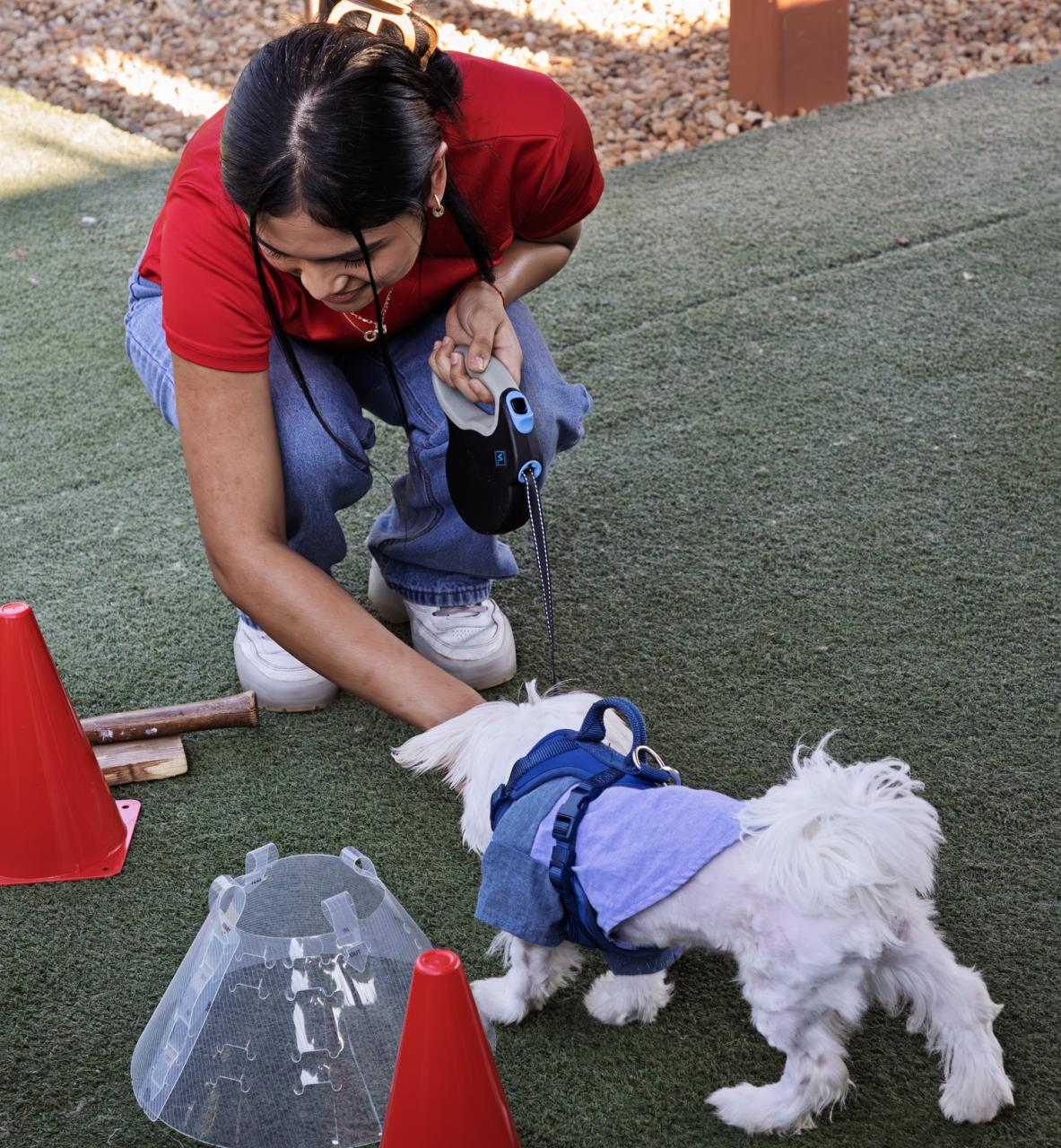 Meet Zeus – an 18-week-old Maltese with a big personality in a very small package. When he first joined puppy class, Zeus was overwhelmed. He came in scared, anxious, and unsure of the world around him. His fear showed up in the form of snapping, biting, and growling – not just at other puppies, but even toward his family and class instructors, Traci and Cynthia. His owners were understandably concerned about why he was already so fearful at such a young age.
Meet Zeus – an 18-week-old Maltese with a big personality in a very small package. When he first joined puppy class, Zeus was overwhelmed. He came in scared, anxious, and unsure of the world around him. His fear showed up in the form of snapping, biting, and growling – not just at other puppies, but even toward his family and class instructors, Traci and Cynthia. His owners were understandably concerned about why he was already so fearful at such a young age.
However, instead of giving up, his family leaned in. they invested in his future, showing up each week with patience and commitment. They also worked with him outside of class, taking him new places, introducing him to different sights, sounds and people. They asked thoughtful questions, stayed consistent and gave him the support he needed. Without their dedication, Zeus wouldn’t be where he is today. By his second class, we saw small glimmers of progress, but still very nervous, guarded, growling and curling his lip when other puppies came too close. Meanwhile, all the other pups just wanted to be his friend. But Zeus wasn’t ready to swap phone numbers just yet! Then came class three, and the breakthrough! During playtime, Zeus cautiously approached Traci, hopped up on her leg, and asked to be picked up. When she bent down, he flopped onto his back and offered her his belly. That was the moment we finally saw the real puppy inside. Not fearful - but playful, happy and trusting!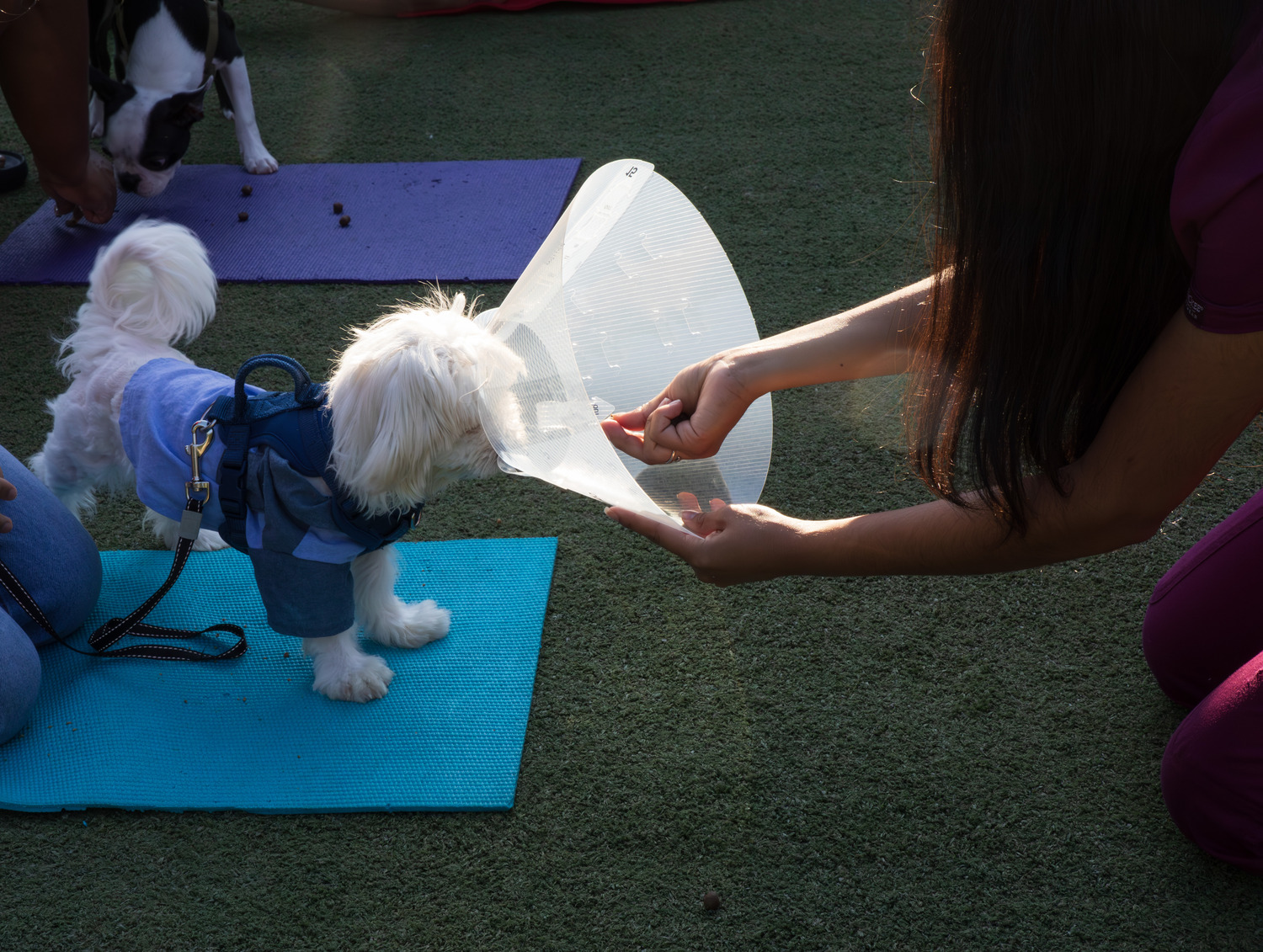
Fast forward to August 18th, Zeus’ final class. The puppy who showed up that day was nearly unrecognizable from the anxious little fluff we first met. He trotted through the tunnel with confidence, sailed through the obstacles, and even put his head into the e-collar without so much as a grumble. That alone is a big win!
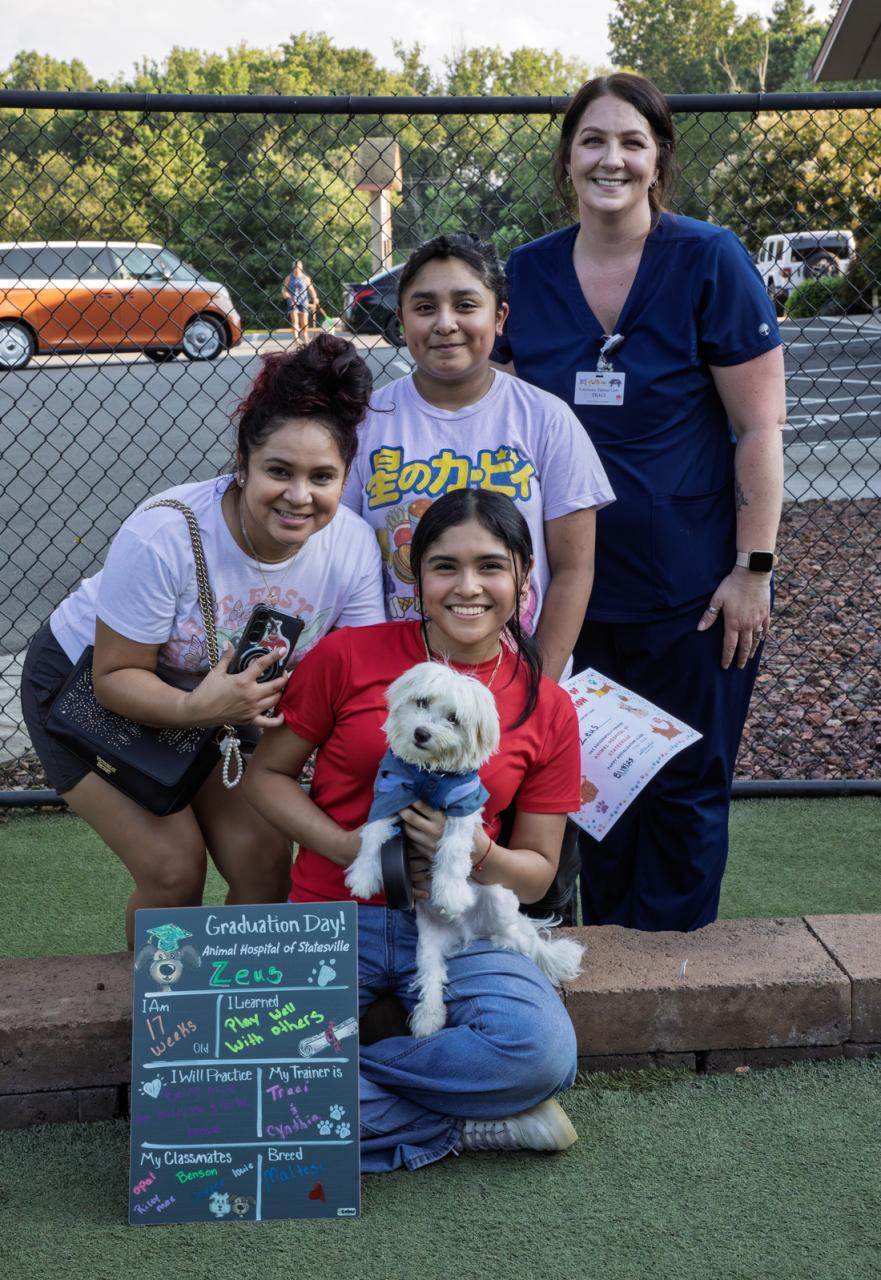 And then came playtime! Zeus zoomed around with the other puppies, tail wagging, chasing and playing. He bounced up on Traci’s leg to be picked up and even gave her kisses! To see the once fearful puppy transformed into a confident, affectionate puppy was truly heartwarming! Now, to be honest, no puppy is perfect. Zeus DID show a little resource guarding at the water bowl, growling and trying to nip when another puppy came in for a drink. Here’s the good news: that was his only spicy moment all class! Compared to where he started, that’s HUGE progress! Zeus’ journey is a reminder that socialization is a process. It takes patience, consistency and teamwork. Thanks to his dedicated family and a safe space to grow, Zeus transformed from a fearful little fluff into a confident, playful and affectionate puppy. And if you ask Traci and Cynthia, THAT’S worth CELEBRATING!
And then came playtime! Zeus zoomed around with the other puppies, tail wagging, chasing and playing. He bounced up on Traci’s leg to be picked up and even gave her kisses! To see the once fearful puppy transformed into a confident, affectionate puppy was truly heartwarming! Now, to be honest, no puppy is perfect. Zeus DID show a little resource guarding at the water bowl, growling and trying to nip when another puppy came in for a drink. Here’s the good news: that was his only spicy moment all class! Compared to where he started, that’s HUGE progress! Zeus’ journey is a reminder that socialization is a process. It takes patience, consistency and teamwork. Thanks to his dedicated family and a safe space to grow, Zeus transformed from a fearful little fluff into a confident, playful and affectionate puppy. And if you ask Traci and Cynthia, THAT’S worth CELEBRATING!
Maya
Pet of the Month - July 2025
 Maya is such a sweet, cute, 8 year old mix breed dog that is no stranger to ear infections. She has a long history of allergies (that includes ear and skin infections) and has been treated for numerous infections and managed for her allergic disease in between.
Maya is such a sweet, cute, 8 year old mix breed dog that is no stranger to ear infections. She has a long history of allergies (that includes ear and skin infections) and has been treated for numerous infections and managed for her allergic disease in between.
Because she has such an extensive history of infections, we are using her for the Pet of the Month to show the significance of diagnostics and rechecks in treating infections. Since she has been coming to us, she has had 16 ear swab cytology tests performed. These tests help us to determine what type of ear infection is present to help us determine what treatment we need to consider. It is not the same as a culture, but we can use the swabs to look under the microscope and based on the shape of the bacteria (rod vs cocci) or the presence of yeast or white blood cells can tell us a lot about what kind of infection she has! Some dogs tend to have one type of infection over and over, but any dog can have different organisms with different infections, so it is very important to do the swabs to determine the proper treatment to use with each infection. It is also necessary to help determine if the infection is improved during a follow-up visit.
 There are different medication choices for rod vs. cocci bacteria vs. heavy yeast or whether there is the presence of heavy debris in the ears or not. It is very important to do that initial exam to try to assess the health and stability of the eardrum before choosing medications. The initial exam and cytology is a key component to get us in the right direction, but the follow-up exam is also extremely important and often gets pushed to the side by many people when they see that their dog (or cat) looks and feels better with treatment. Many people assume the infection is cleared and cancel their follow-up exam, but this could be a big mistake!
There are different medication choices for rod vs. cocci bacteria vs. heavy yeast or whether there is the presence of heavy debris in the ears or not. It is very important to do that initial exam to try to assess the health and stability of the eardrum before choosing medications. The initial exam and cytology is a key component to get us in the right direction, but the follow-up exam is also extremely important and often gets pushed to the side by many people when they see that their dog (or cat) looks and feels better with treatment. Many people assume the infection is cleared and cancel their follow-up exam, but this could be a big mistake!
 The majority of the medications we use to treat ear infections have a steroid in the medication so it makes the dog (or cat!) feel much better before the infection is cleared. Also, a dog’s ear canal is much longer than you realize so even if the ear looks clean and nice on the outside, it may not be fully cleared up deeper down in the canal. Many types of “mixed” ear infections can have yeast and bacteria and while one medication may clear up one aspect very well, the other part of the infection may need a different medication to fully clear up the infection. If a pet still has infection deeper in the canal, they may seem better for a while, but then the infection will get worse again and the symptoms will return much more quickly. This can make someone feel like their pet constantly has infections that don’t go away, but we may not have had enough treatment adjustments to get the best outcome.
The majority of the medications we use to treat ear infections have a steroid in the medication so it makes the dog (or cat!) feel much better before the infection is cleared. Also, a dog’s ear canal is much longer than you realize so even if the ear looks clean and nice on the outside, it may not be fully cleared up deeper down in the canal. Many types of “mixed” ear infections can have yeast and bacteria and while one medication may clear up one aspect very well, the other part of the infection may need a different medication to fully clear up the infection. If a pet still has infection deeper in the canal, they may seem better for a while, but then the infection will get worse again and the symptoms will return much more quickly. This can make someone feel like their pet constantly has infections that don’t go away, but we may not have had enough treatment adjustments to get the best outcome.
 Many allergy dogs will have recurrent ear infections, so even if you do the proper treatment and follow-ups, eventually they will have an infection again. The follow-up visits help make sure each infection is fully cleared to hopefully lengthen the time in between infections as much as possible. But also as important is the education we can provide at those follow-up visits when we are helping determine what type of home care would be the best plan to keep those infections from coming back so frequently. When the infection is finally cleared, we can show owners how to properly clean and instruct how often to clean for their pet’s situation. Allergy dogs like Mya can take all the help they can get to give them the best comfort and quality of life in between flare-ups!
Many allergy dogs will have recurrent ear infections, so even if you do the proper treatment and follow-ups, eventually they will have an infection again. The follow-up visits help make sure each infection is fully cleared to hopefully lengthen the time in between infections as much as possible. But also as important is the education we can provide at those follow-up visits when we are helping determine what type of home care would be the best plan to keep those infections from coming back so frequently. When the infection is finally cleared, we can show owners how to properly clean and instruct how often to clean for their pet’s situation. Allergy dogs like Mya can take all the help they can get to give them the best comfort and quality of life in between flare-ups!
Drago
Pet of the Month - June 2025
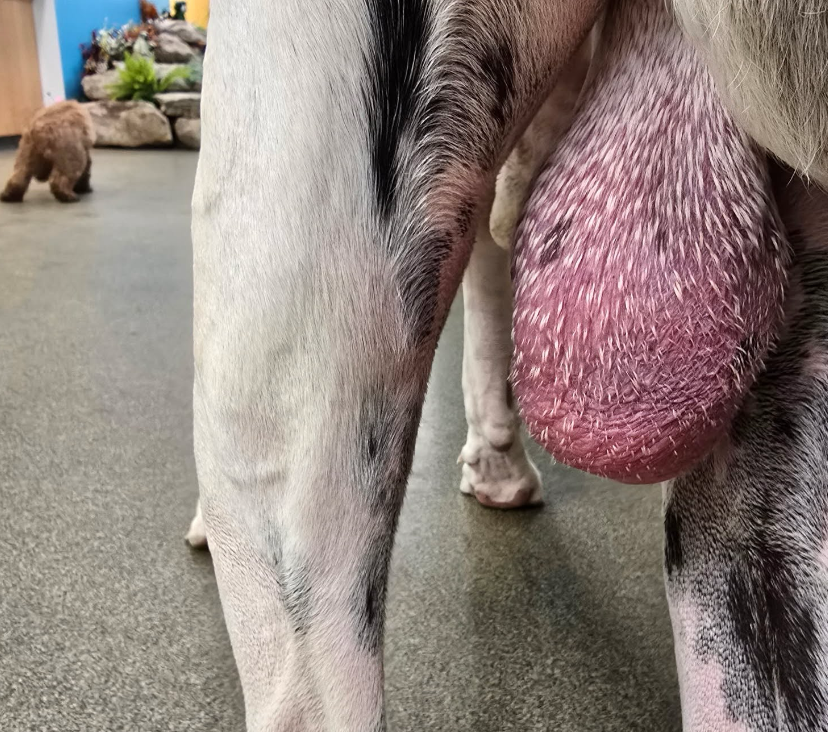 Drago is a 2-year-old 175-pound Great Dane who belongs to a wonderful family of very responsible Great Dane breeders. He came in on a Wednesday afternoon for a swollen, red, inflamed scrotum that had just started that morning. He was eating and drinking and didn’t seem bothered by the swelling, despite the dramatic appearance. When he walked into AHS, his poor scrotum was the size of a grapefruit, swollen and edematous (abnormally swollen with fluid). Both of his testicles palpated, or felt normal, but the scrotal skin was very thickened and inflamed.
Drago is a 2-year-old 175-pound Great Dane who belongs to a wonderful family of very responsible Great Dane breeders. He came in on a Wednesday afternoon for a swollen, red, inflamed scrotum that had just started that morning. He was eating and drinking and didn’t seem bothered by the swelling, despite the dramatic appearance. When he walked into AHS, his poor scrotum was the size of a grapefruit, swollen and edematous (abnormally swollen with fluid). Both of his testicles palpated, or felt normal, but the scrotal skin was very thickened and inflamed.
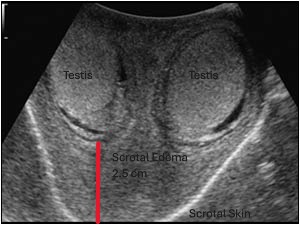 We screened him for Brucellosis, an infectious agent that can cause reproductive issues, infertility, and late-term abortion in dogs. Fortunately, he was negative, since this bacterium can also be spread to people and cause similar signs in humans. A scrotal ultrasound showed normal testicles with very angry scrotal skin and cellulitis (a bacterial skin infection affecting the deeper layers of the skin and underlying tissue, often causing localized redness, swelling warmth and pain). We started treating Drago for cellulitis with anti-inflammatories and antibiotics.
We screened him for Brucellosis, an infectious agent that can cause reproductive issues, infertility, and late-term abortion in dogs. Fortunately, he was negative, since this bacterium can also be spread to people and cause similar signs in humans. A scrotal ultrasound showed normal testicles with very angry scrotal skin and cellulitis (a bacterial skin infection affecting the deeper layers of the skin and underlying tissue, often causing localized redness, swelling warmth and pain). We started treating Drago for cellulitis with anti-inflammatories and antibiotics.
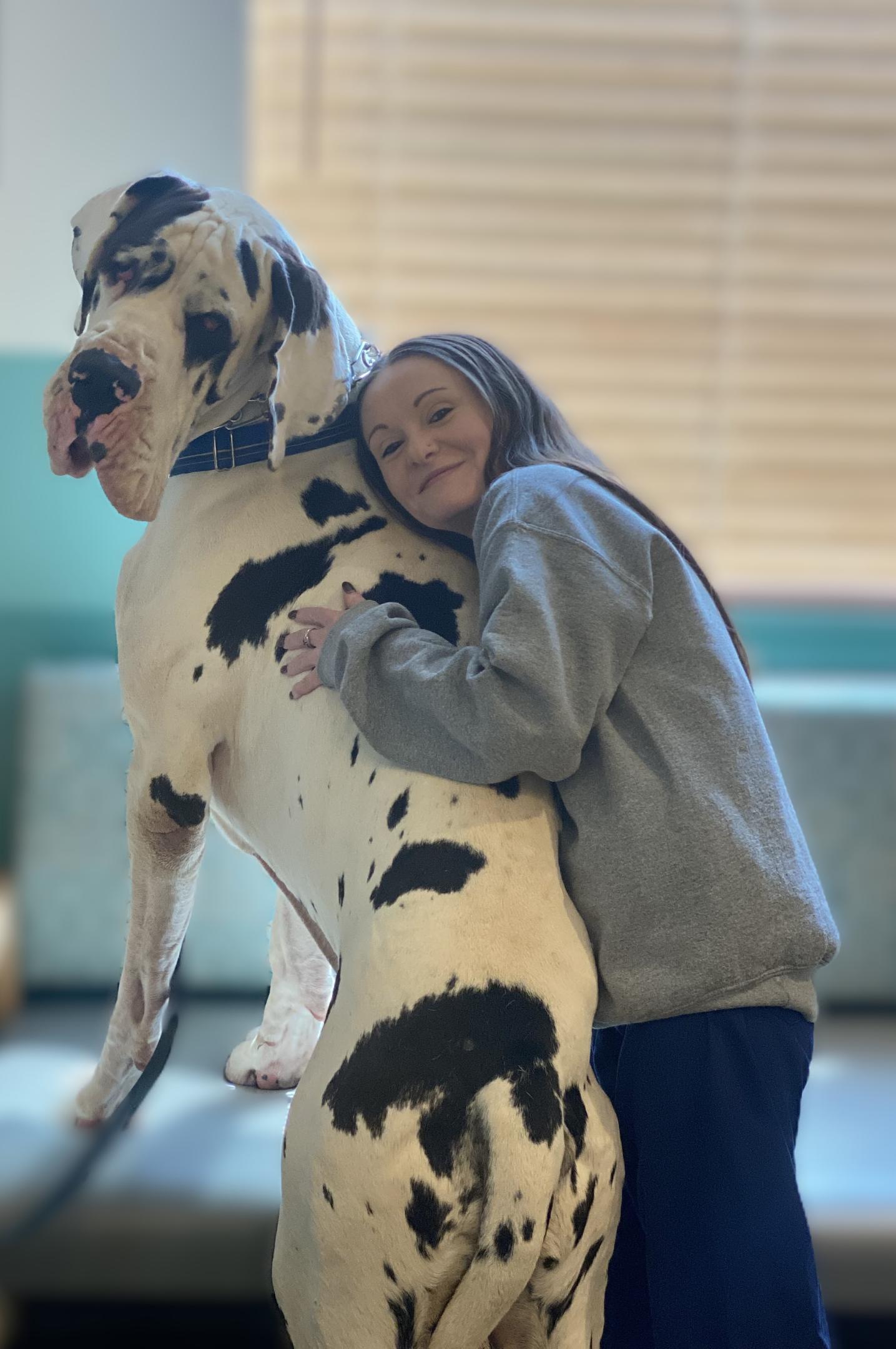 The next day, his mom brought him back for worsening scrotal inflammation. His scrotum was much larger, with pitting edema (swelling where a pit or indentation forms when pressure is applied and then remains for a time after the pressure is released). We repeated the ultrasound and found our answer. Within 2.5 cm of thickened fluid-filled scrotal wall (normal is a few millimeters), we found a scrotal abscess. An abscess is a pocket of bacteria and pus that forms under the skin.
The next day, his mom brought him back for worsening scrotal inflammation. His scrotum was much larger, with pitting edema (swelling where a pit or indentation forms when pressure is applied and then remains for a time after the pressure is released). We repeated the ultrasound and found our answer. Within 2.5 cm of thickened fluid-filled scrotal wall (normal is a few millimeters), we found a scrotal abscess. An abscess is a pocket of bacteria and pus that forms under the skin.
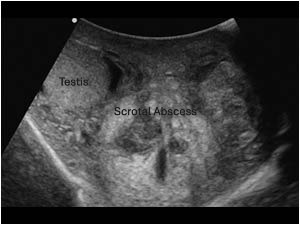 We think this poor guy sat on something (e.g. mulch, blade of grass, etc.) that introduced bacteria into the scrotum that led to the abscess. Ouch! We sampled the abscess material to evaluate under the microscope and to send for culture. We also applied a topical solution to help decrease the edema. Drago needed strict rest and scrotal support for the next 2 weeks. The more inflamed the scrotum became, the more gravity caused stretch and strain on the tissue. His family put him in a surgery suit to provide support as he worked through this issue.
We think this poor guy sat on something (e.g. mulch, blade of grass, etc.) that introduced bacteria into the scrotum that led to the abscess. Ouch! We sampled the abscess material to evaluate under the microscope and to send for culture. We also applied a topical solution to help decrease the edema. Drago needed strict rest and scrotal support for the next 2 weeks. The more inflamed the scrotum became, the more gravity caused stretch and strain on the tissue. His family put him in a surgery suit to provide support as he worked through this issue.
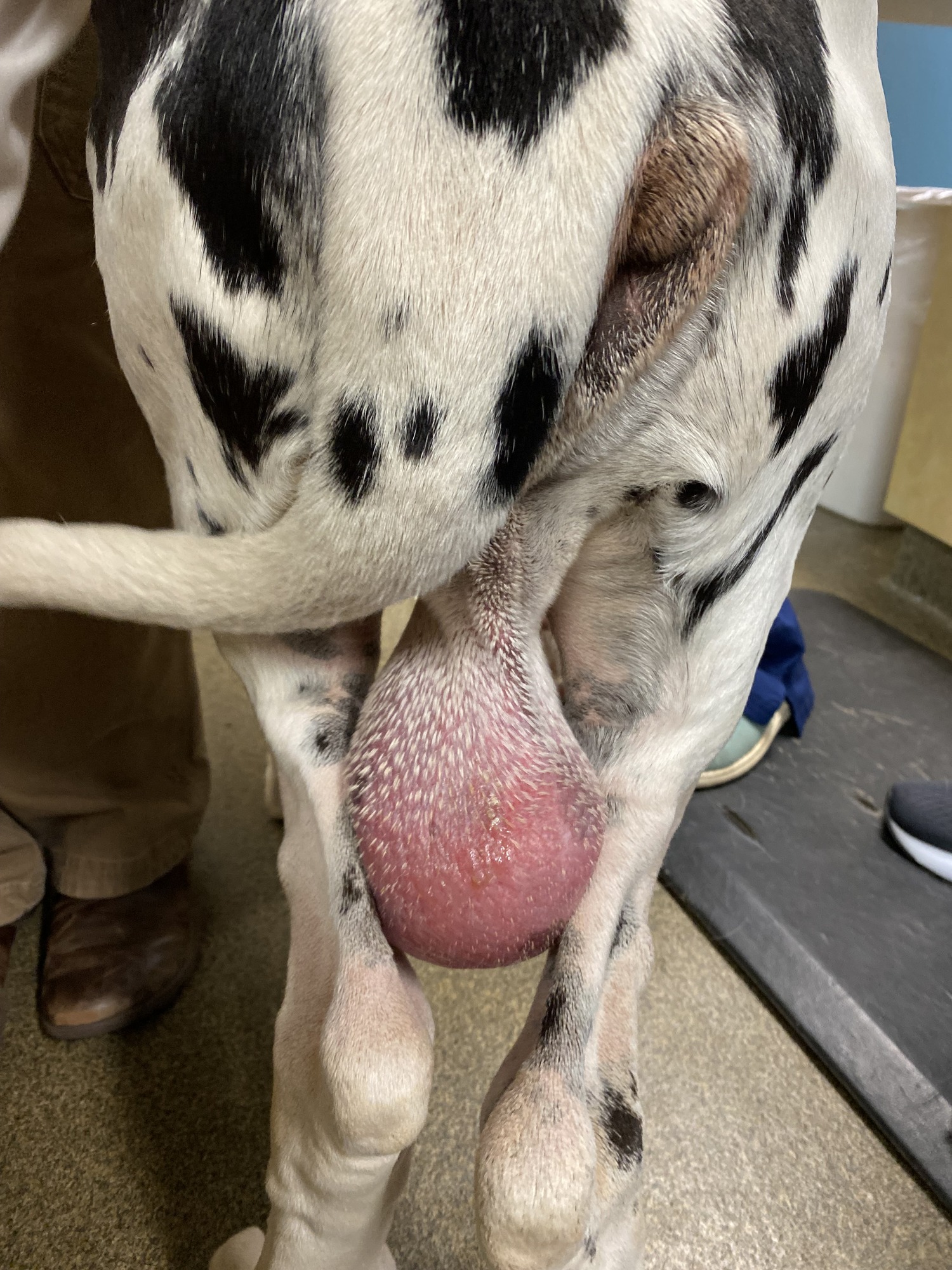 Two weeks later, Drago came back for a recheck. His exam and ultrasound were back to normal, and his abscess had resolved without the need for more aggressive surgical procedures. We expect him to have a full return to function. Because the spermatic life cycle is approximately 60 days, we expect a temporary dip in sperm quality two months from the time of diagnosis with a return to baseline 2-3 months after that.
Two weeks later, Drago came back for a recheck. His exam and ultrasound were back to normal, and his abscess had resolved without the need for more aggressive surgical procedures. We expect him to have a full return to function. Because the spermatic life cycle is approximately 60 days, we expect a temporary dip in sperm quality two months from the time of diagnosis with a return to baseline 2-3 months after that.
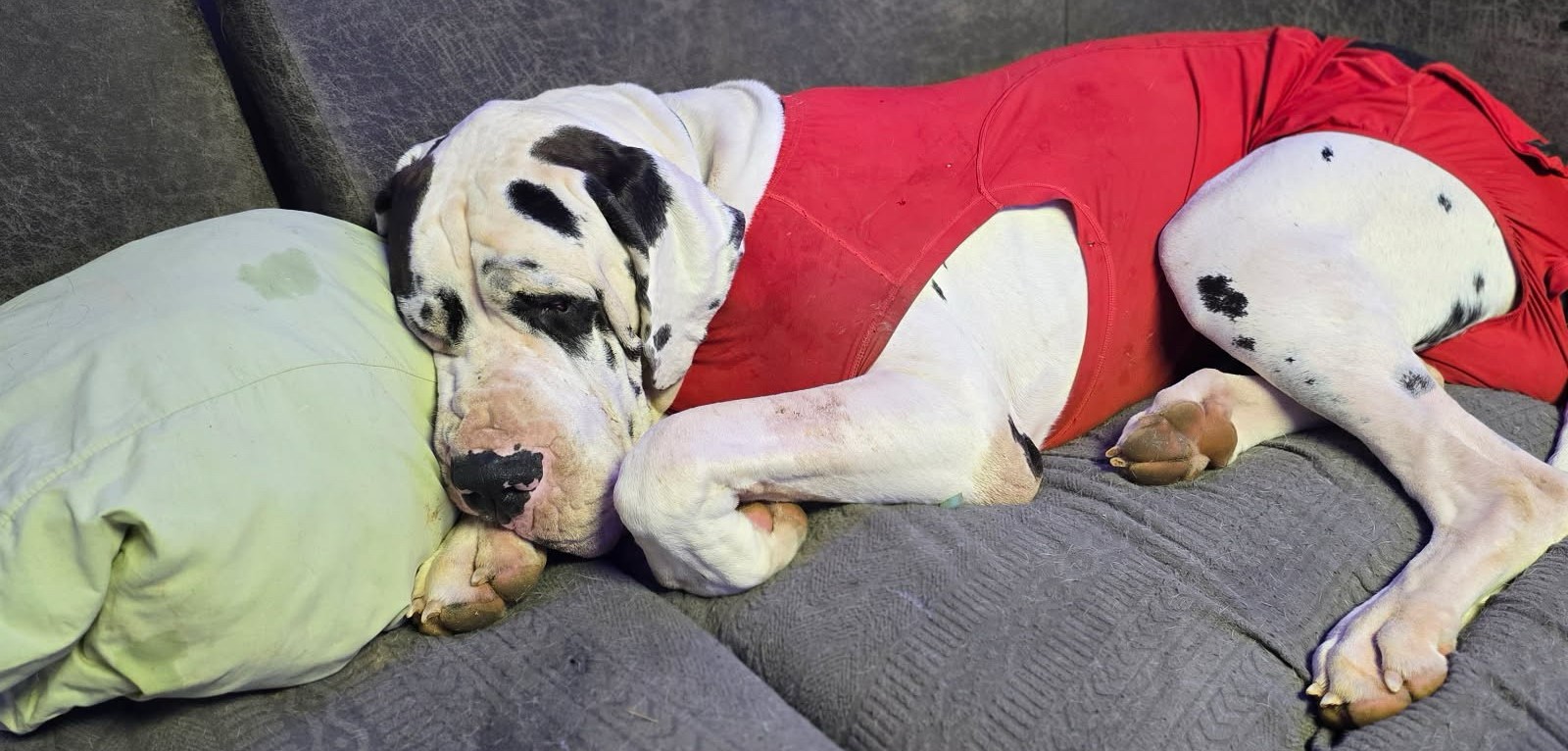 Drago is an absolute sweetheart, and we are happy we could find answers and treat appropriately for his comfort, health and genetic preservation.
Drago is an absolute sweetheart, and we are happy we could find answers and treat appropriately for his comfort, health and genetic preservation.
Maultsby
Pet of the Month - May 2025
 Maultsby is a 3-year-old Pembrook Welsh Corgi who has visited AHS since puppyhood. Maultsby enrolled in our Puppy Preventative Health Care Plan and went through the full puppy vaccination series. She had her normal preanesthetic blood screen and routine spay operation at one year of age. She started on the adult wellness program and appeared to be the picture of health. At her semi-annual wellness exam and blood screen she was noted to have minor elevation of two liver enzymes. They were mild and it was determined that we would recheck them in a month. At the one-month recheck both values had risen slightly. A liver function test called bile acids was prescribed which showed minor, but not severe, liver dysfunction. An ultrasound exam of the liver was normal. She was started on a liver supplement and the values rechecked a month later. At this visit both enzymes had again risen.
Maultsby is a 3-year-old Pembrook Welsh Corgi who has visited AHS since puppyhood. Maultsby enrolled in our Puppy Preventative Health Care Plan and went through the full puppy vaccination series. She had her normal preanesthetic blood screen and routine spay operation at one year of age. She started on the adult wellness program and appeared to be the picture of health. At her semi-annual wellness exam and blood screen she was noted to have minor elevation of two liver enzymes. They were mild and it was determined that we would recheck them in a month. At the one-month recheck both values had risen slightly. A liver function test called bile acids was prescribed which showed minor, but not severe, liver dysfunction. An ultrasound exam of the liver was normal. She was started on a liver supplement and the values rechecked a month later. At this visit both enzymes had again risen.
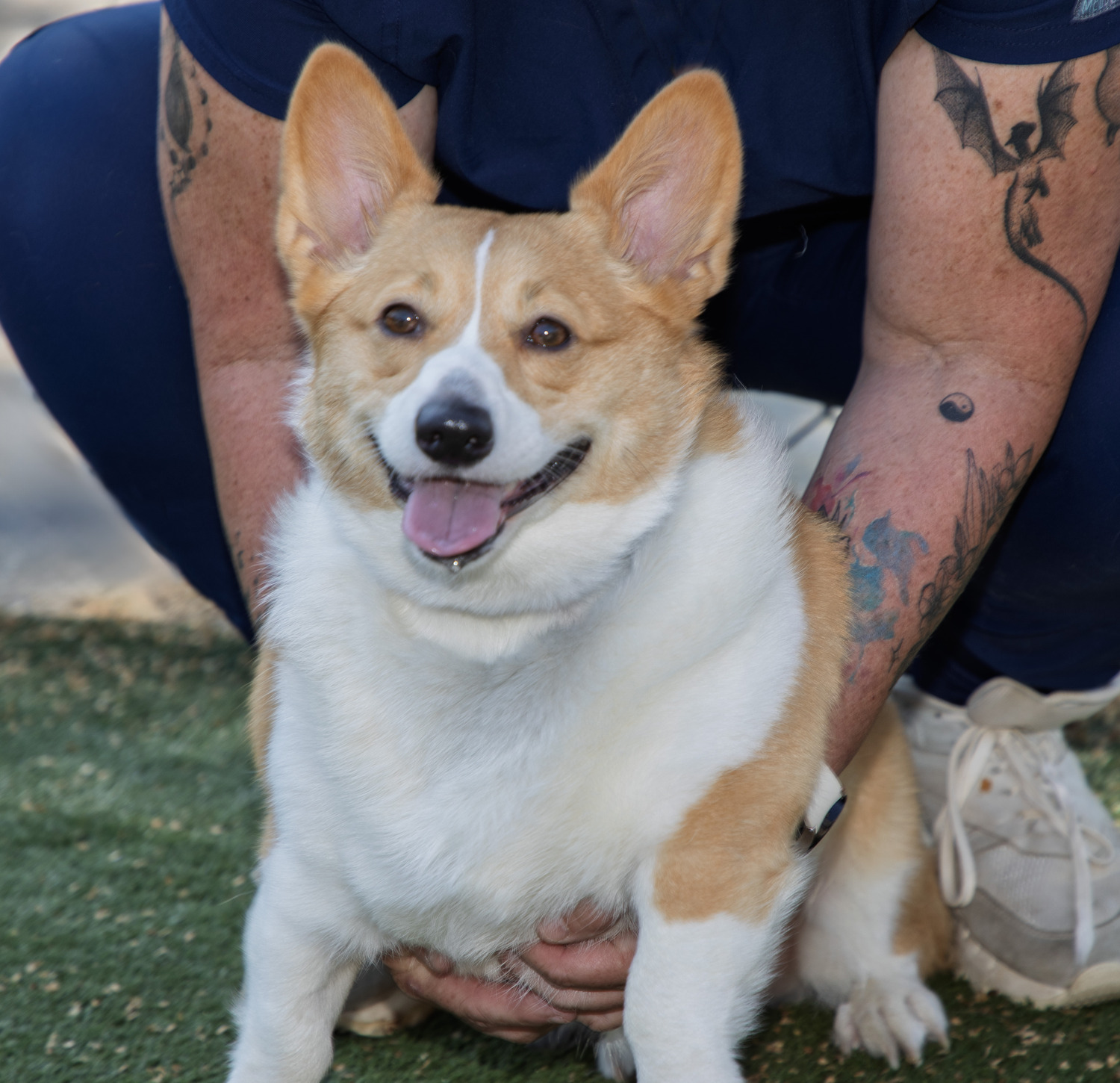 The only way to determine exactly what was going on with Maultsby’s liver was to biopsy. This requires anesthesia and surgical removal of pieces of the liver to have examined by a pathologist. Due to the invasiveness of this procedure, it was determined that we would put her on a specific diet that is easy on the liver. After two months, the values had improved significantly but had not normalized. At this point, it was determined a liver biopsy was in order.
The only way to determine exactly what was going on with Maultsby’s liver was to biopsy. This requires anesthesia and surgical removal of pieces of the liver to have examined by a pathologist. Due to the invasiveness of this procedure, it was determined that we would put her on a specific diet that is easy on the liver. After two months, the values had improved significantly but had not normalized. At this point, it was determined a liver biopsy was in order.
 Our laparoscope made this procedure much less invasive for Maultsby requiring only 2 small port holes to obtain the samples. This vastly improved the recovery for Maultsby compared to the traditional open surgical technique and she was back to normal quickly. While we ran multiple tests on the liver samples, Maultsby’s test came back positive for copper storage disease. This is a problem where a pet’s body does not rid itself of copper, which slowly accumulates in the liver, causing severe hepatic disease. This is why the liver values were normal at her spay when she was young. The copper had not accumulated to a level causing harm yet. This is a very frustrating disease to treat and involves putting the pet on a diet with low copper levels (which had already been done) and, in severe cases, which Maultsby has, starting on an agent to chelate the copper in the body which allows her to excrete it. Unfortunately, this is very expensive and the only way to determine the pet’s response to therapy is with additional liver biopsies. Fortunately for Maultsby, she has amazing owners who are committed to her treatment. Maultsby has a long road ahead but with good care we expect her to live a long and healthy life. This is why she is AHS’s Pet of the Month.
Our laparoscope made this procedure much less invasive for Maultsby requiring only 2 small port holes to obtain the samples. This vastly improved the recovery for Maultsby compared to the traditional open surgical technique and she was back to normal quickly. While we ran multiple tests on the liver samples, Maultsby’s test came back positive for copper storage disease. This is a problem where a pet’s body does not rid itself of copper, which slowly accumulates in the liver, causing severe hepatic disease. This is why the liver values were normal at her spay when she was young. The copper had not accumulated to a level causing harm yet. This is a very frustrating disease to treat and involves putting the pet on a diet with low copper levels (which had already been done) and, in severe cases, which Maultsby has, starting on an agent to chelate the copper in the body which allows her to excrete it. Unfortunately, this is very expensive and the only way to determine the pet’s response to therapy is with additional liver biopsies. Fortunately for Maultsby, she has amazing owners who are committed to her treatment. Maultsby has a long road ahead but with good care we expect her to live a long and healthy life. This is why she is AHS’s Pet of the Month.
Lilo
Pet of the Month - April 2025
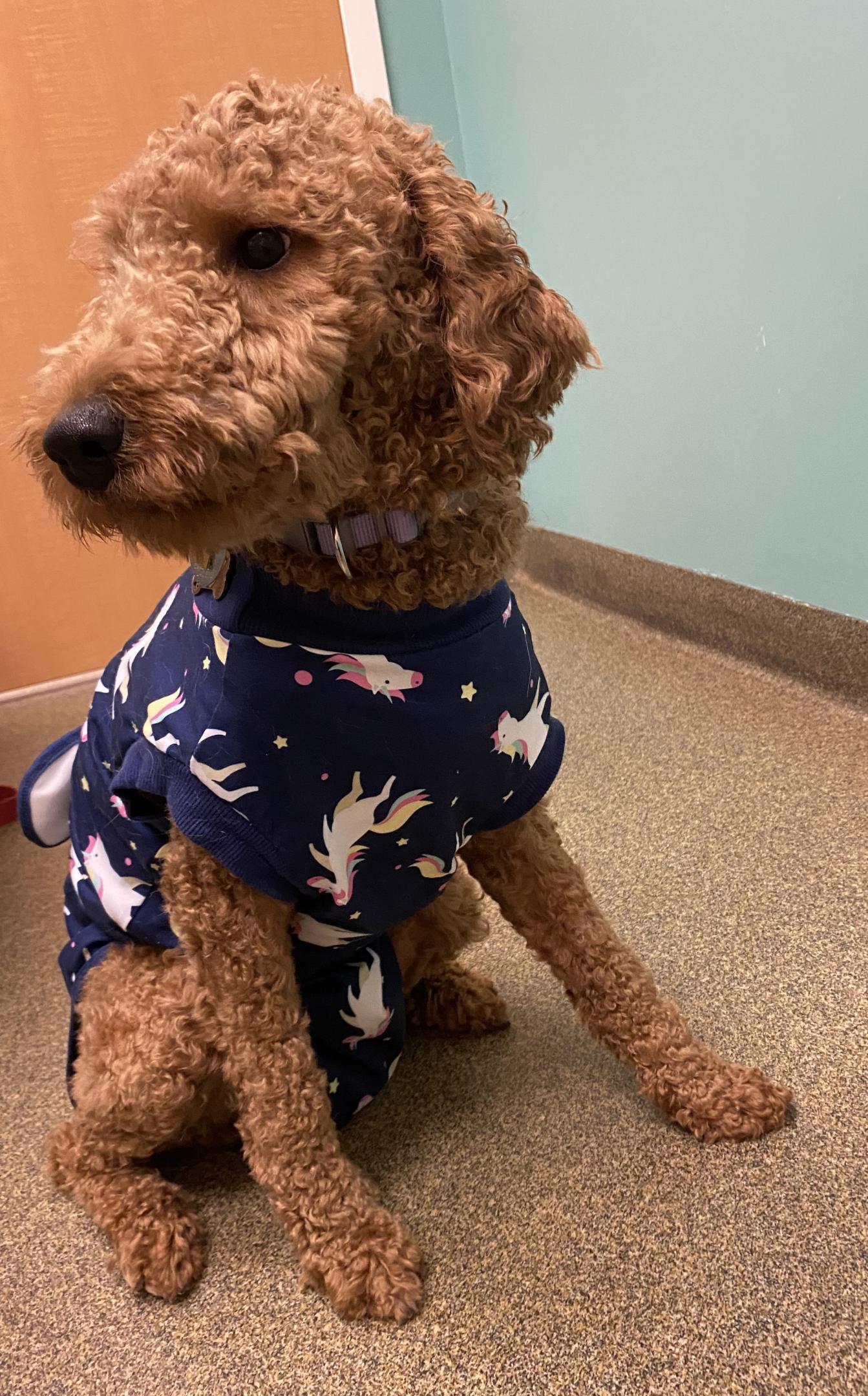 Our Pet of the Month for April is Lilo, a very sweet and loving 10-month-old Goldendoodle. Her family adopted Lilo when she was around 5 months of age and realized quickly that her vision was not great. They brought her to Animal Hospital of Statesville for her first puppy visit, and we confirmed that she was blind. In order for animals (including humans!) to see, everything has to work from the clear corneal surface through the lens to the retina (back of the eye with receptors), which transmit via the optic to the brain to process information. There are a lot of steps on the way! Her eye exam was normal aside from her blindness, which makes genetic or congenital blindness most likely. Regardless, blind dogs like Lilo adjust quickly to their environment and have a fantastic quality of life. Plus, Lilo’s family has gone above and beyond helping her gain confidence despite her impaired vision.
Our Pet of the Month for April is Lilo, a very sweet and loving 10-month-old Goldendoodle. Her family adopted Lilo when she was around 5 months of age and realized quickly that her vision was not great. They brought her to Animal Hospital of Statesville for her first puppy visit, and we confirmed that she was blind. In order for animals (including humans!) to see, everything has to work from the clear corneal surface through the lens to the retina (back of the eye with receptors), which transmit via the optic to the brain to process information. There are a lot of steps on the way! Her eye exam was normal aside from her blindness, which makes genetic or congenital blindness most likely. Regardless, blind dogs like Lilo adjust quickly to their environment and have a fantastic quality of life. Plus, Lilo’s family has gone above and beyond helping her gain confidence despite her impaired vision.
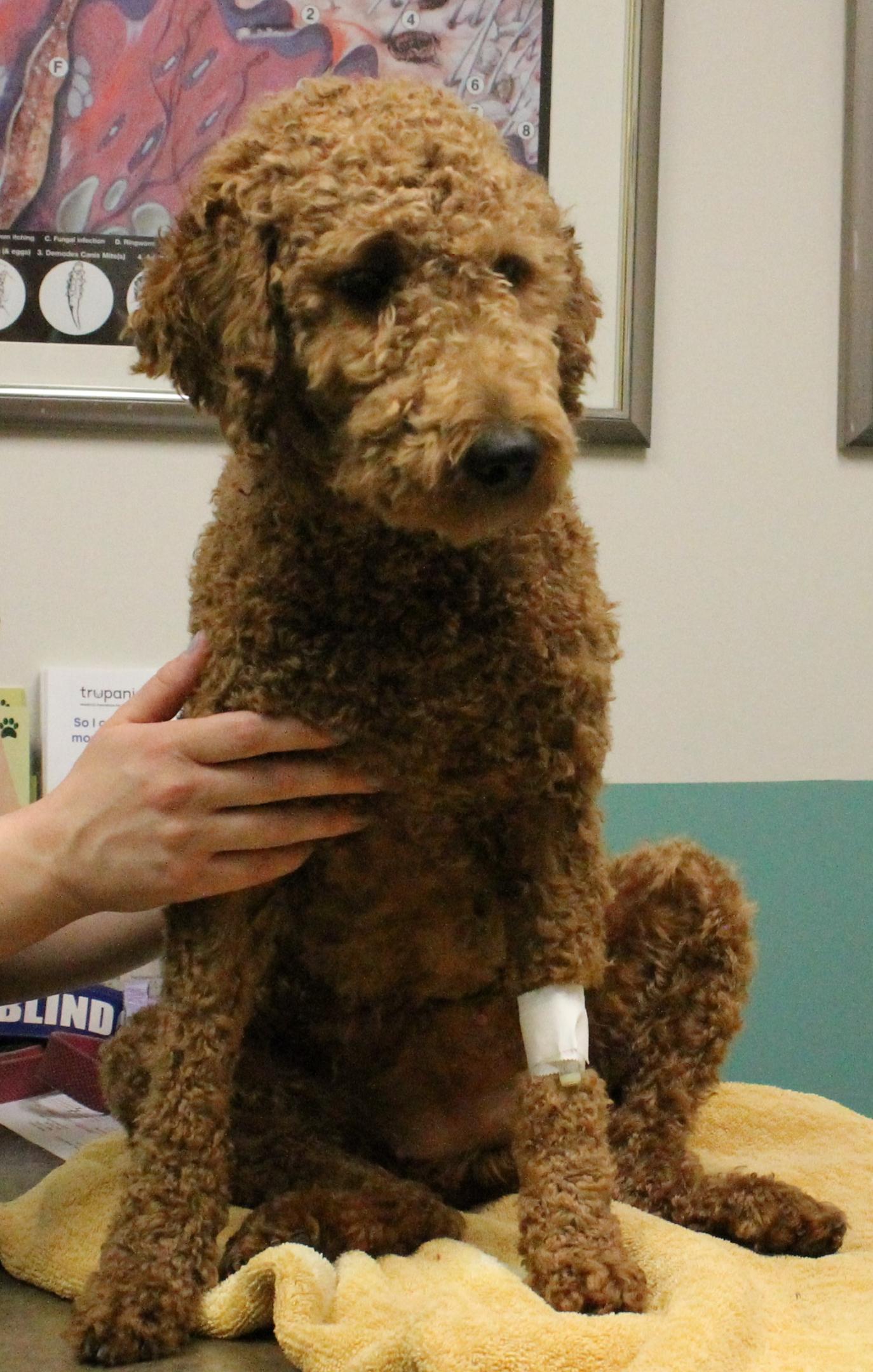 Now that Lilo is older and has been through a heat cycle, we wanted to proceed with a spay. Anesthesia and surgery can be nerve-wracking for clients and pets alike – let alone when you’re blind and in a new environment! Because we always strive to provide the most positive experiences for our pets, we make modifications to our approach based on each particular patient. For Lilo, we wanted her to be with her family for reassurance until the surgery. We did her pre-operative exam and blood screen with Mom and Dad petting on her. After she was cleared for surgery, we gave our typical pre-surgical medications while Mom and Dad held. (The pre-surgical medications contain an anti-anxiety medication and a pain medication to help her relax and control pain before we even start a procedure.) Lastly, the technicians placed Lilo’s IV catheter with Mom and Dad talking to her. Our goal with this approach was to help Lilo feel comfortable at the hospital since she couldn’t see everything that was happening.
Now that Lilo is older and has been through a heat cycle, we wanted to proceed with a spay. Anesthesia and surgery can be nerve-wracking for clients and pets alike – let alone when you’re blind and in a new environment! Because we always strive to provide the most positive experiences for our pets, we make modifications to our approach based on each particular patient. For Lilo, we wanted her to be with her family for reassurance until the surgery. We did her pre-operative exam and blood screen with Mom and Dad petting on her. After she was cleared for surgery, we gave our typical pre-surgical medications while Mom and Dad held. (The pre-surgical medications contain an anti-anxiety medication and a pain medication to help her relax and control pain before we even start a procedure.) Lastly, the technicians placed Lilo’s IV catheter with Mom and Dad talking to her. Our goal with this approach was to help Lilo feel comfortable at the hospital since she couldn’t see everything that was happening.
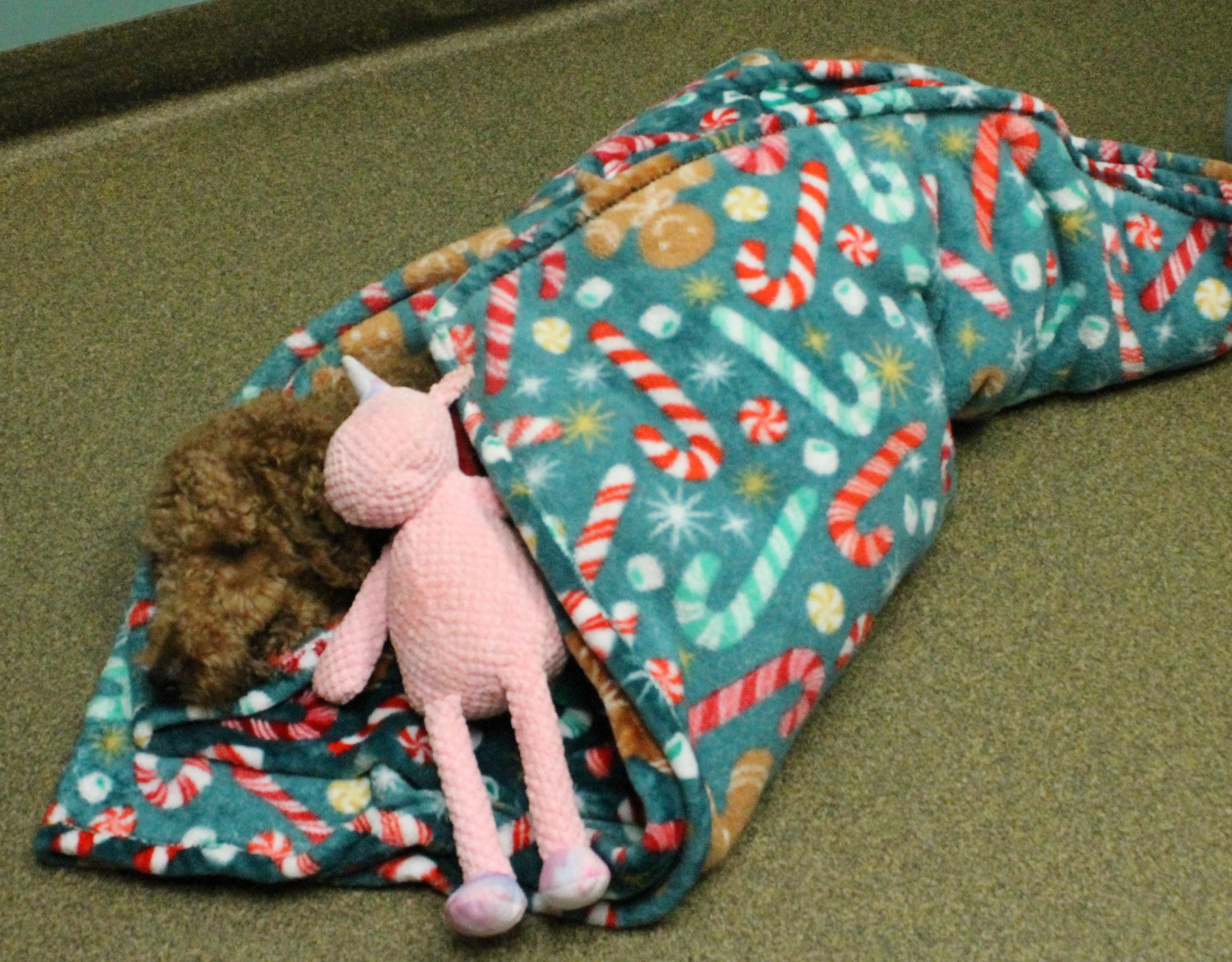 Her family is so thoughtful and loving with Lilo and has been the perfect home for this precious puppy! Lilo’s parents opted to perform a laparoscopic ovariectomy (spay) for a minimally invasive approach and faster recovery time. They even brought a blanket and unicorn toy to keep her company and allow her to have a familiar scent while waking up from surgery. As soon as the procedure was over, Dr. Zuercher called with an update, and her family returned to AHS to be cuddling with her as she recovered from surgery. She did so well, and isn’t she cute in her unicorn surgery suit (an alternative to a “cone” after surgery)? We are so thankful her family was willing to help us do what was best for Lilo, and we look forward to continue working together through her adolescence and adulthood!
Her family is so thoughtful and loving with Lilo and has been the perfect home for this precious puppy! Lilo’s parents opted to perform a laparoscopic ovariectomy (spay) for a minimally invasive approach and faster recovery time. They even brought a blanket and unicorn toy to keep her company and allow her to have a familiar scent while waking up from surgery. As soon as the procedure was over, Dr. Zuercher called with an update, and her family returned to AHS to be cuddling with her as she recovered from surgery. She did so well, and isn’t she cute in her unicorn surgery suit (an alternative to a “cone” after surgery)? We are so thankful her family was willing to help us do what was best for Lilo, and we look forward to continue working together through her adolescence and adulthood!
Julia Zuercher, DVM
Georgie
Pet of the Month - March 2025
 Georgie is a sweet 6-year-old Cavalier King Charles Spaniel. He was in recently for his six-month wellness exam and part of the check-up includes a blood screen. Georgie had been doing well at home and there were no concerns reported. On his routine blood screen, we found Georgie’s platelet number to be very low
and the platelets were large. This can be very concerning because the primary function of platelets is to prevent and stop bleeding. A patient with low platelets may have unexplained bleeding, bruising or petechia. They may also feel bad or be lethargic. However, this was not the case with Georgie.
Georgie is a sweet 6-year-old Cavalier King Charles Spaniel. He was in recently for his six-month wellness exam and part of the check-up includes a blood screen. Georgie had been doing well at home and there were no concerns reported. On his routine blood screen, we found Georgie’s platelet number to be very low
and the platelets were large. This can be very concerning because the primary function of platelets is to prevent and stop bleeding. A patient with low platelets may have unexplained bleeding, bruising or petechia. They may also feel bad or be lethargic. However, this was not the case with Georgie.
Georgie was happy, healthy and no bruising or bleeding was found on his exam. There is an inherited condition that can occur in Cavalier King Charles Spaniels as well as a few other breeds. A mutation of the gene causes lower platelet numbers as well as larger circulating platelets. Pets with this condition do not have a bleeding problem and the low platelet number is considered “normal”. There is a test through Auburn University that can confirm the inherited cause for macrothrombocytopenia. By confirming this with Georgie, we kept him from undergoing unneeded treatment. Georgie can continue to enjoy his walks, snuggle at home with his “mom” and play with his kitty “brother” Coco!
Hank
Canine Pet of the Month - February 2025
Hank is a 9-year-old, Australian Blue Heeler mix, that first came to our hospital in early December for lethargy and peeing blood. When Hank arrived, he appeared to be in very rough shape with pale to white gum color and weakness when attempting to stand and move around. Due to these observations, bloodwork was recommended to further investigate. Hank’s bloodwork revealed that he was anemic (low red blood cells) and had very low platelets (thrombocytopenia). Hank’s white blood cells were also increased, which indicated significant inflammation and/or infection occurring in his body. These changes on bloodwork were very alarming and showed that Hank was indeed very sick.
Anemia and thrombocytopenia can happen for several reasons including infection/tick- borne disease, blood loss, autoimmune disease, cancer, and many others. Determining the cause is very important and is done with the use of further diagnostic tools that your veterinarian may recommend including microscopic evaluation of your pet’s blood, x-rays, ultrasound, tickborne disease testing, etc. Once the cause is identified, the correct medications can be used to help treat your pet and give them the best chance for recovery. Anemia and thrombocytopenia are extremely dangerous and potentially life-threatening conditions if left untreated. Rapid and early recognition is always in your pet’s best interest. Hank was started on high-dose steroids and an antibiotic called doxycycline to help increase his red blood cells and platelet numbers. After almost 2 months of therapy and multiple bloodwork rechecks, Hank’s anemia and thrombocytopenia had resolved, and he was bouncing around the exam room with all the energy in the world. Even though Hank’s possibility of recovery seemed bleak in the beginning, his dedicated owners made sure to give him the best chance to overcome this! We are very happy to call Hank our doggie Pet of the Month!
Birdie
Feline Pet of the Month - February 2025
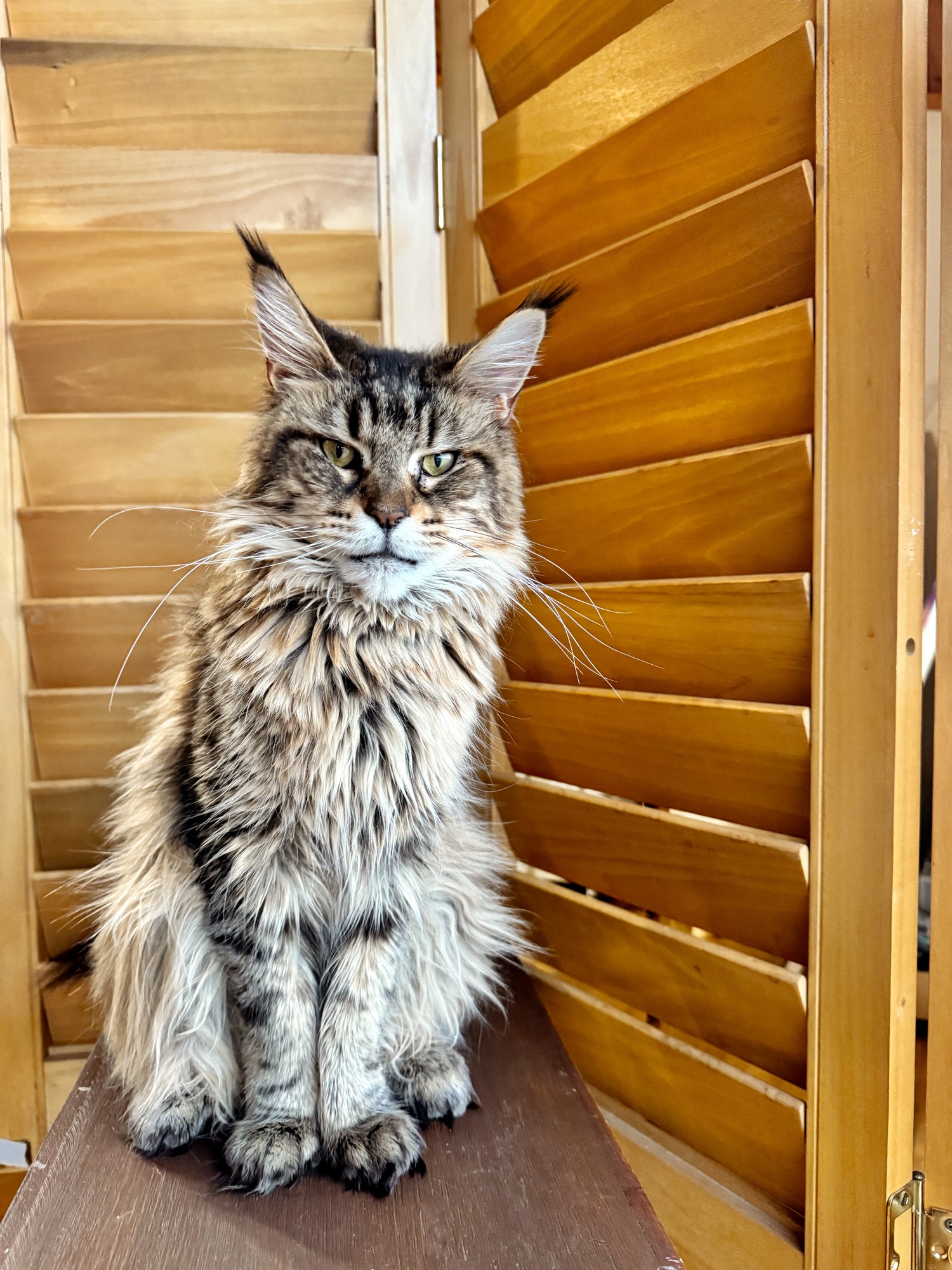 This month, our feline Pet of the Month is Birdie. Birdie is a 22-month-old Maine Coon cat who came to the Animal Hospital of Statesville for issues with eating and not grooming. After examination, Birdie was diagnosed with severe stomatitis. Birdie had severe ulcerative lesions in her mouth, her gums and under her tongue.
This month, our feline Pet of the Month is Birdie. Birdie is a 22-month-old Maine Coon cat who came to the Animal Hospital of Statesville for issues with eating and not grooming. After examination, Birdie was diagnosed with severe stomatitis. Birdie had severe ulcerative lesions in her mouth, her gums and under her tongue.
Birdie’s issues were believed to be the result of an overreaction of her immune system to the bacteria and plaque on her teeth and gums. This is called Stomatitis. Antibiotics and pain medications were tried to help with her stomatitis but were unsuccessful. In severe cases of stomatitis that do not respond to medication, the next step is what is called a full-mouth extraction or the surgical extraction of some or all of her teeth. In Birdie's case, all of her teeth were affected, so all of her teeth were extracted. Although this may sound drastic or extreme, this is commonly the only way to provide relief from the severe mouth pain associated with stomatitis. Cats typically do very well after extractions and go on to live long lives without oral pain. They typically eat and drink normally after their mouth has healed, although sometimes they require softened or moist foods.
After a few weeks post-surgery, Birdie is now feeling much better, is eating better and has started grooming herself again. Stomatitis in cats is a serious condition that requires proper diagnosis and treatment to avoid severe consequences on a cat's health and quality of life.
If you suspect your cat may be suffering from mouth-related issues, please call us at the Animal Hospital of Statesville to schedule an examination. Click HERE to read more about Stomatitis!
Odin
Canine Pet of the Month - January 2025
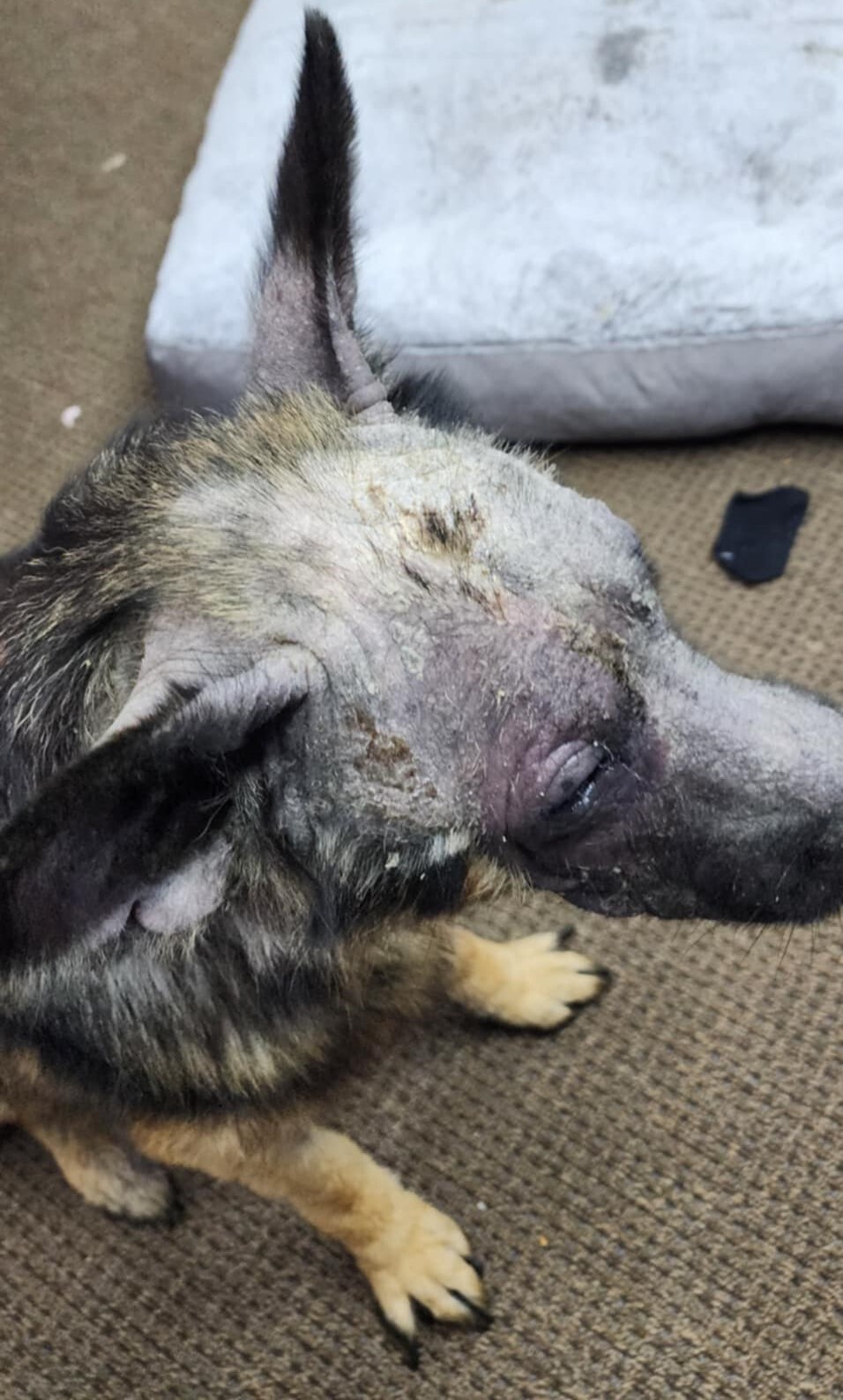 Odin is a sweet, young German Shepherd Dog. Odin presented with very little hair, very itchy, and very crusty and scabby skin. Odin has fought skin infections and allergies for several months with limited control of the skin infections and itch. Poor Odin was quite miserable.
Odin is a sweet, young German Shepherd Dog. Odin presented with very little hair, very itchy, and very crusty and scabby skin. Odin has fought skin infections and allergies for several months with limited control of the skin infections and itch. Poor Odin was quite miserable.
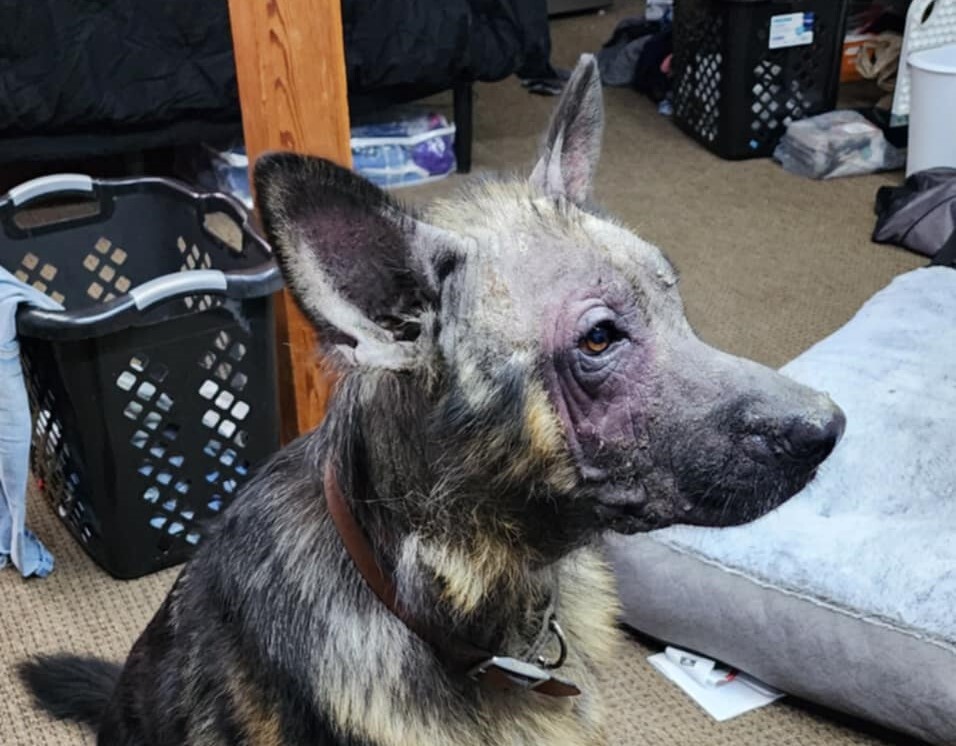 We started Apoquel, an allergy medication, to combat itch and skin inflammation. Skin scrapings and cytology testing were done to see what pathogens may be on or in the skin. Odin had bacteria and Malassezia, or skin yeast, on his skin, which were secondary. Malassezia is very itchy for an animal when it overgrows on the skin. In addition to allergy medication to stop the itch and help Odin be more comfortable, antibiotics and antifungal medications were started.
We started Apoquel, an allergy medication, to combat itch and skin inflammation. Skin scrapings and cytology testing were done to see what pathogens may be on or in the skin. Odin had bacteria and Malassezia, or skin yeast, on his skin, which were secondary. Malassezia is very itchy for an animal when it overgrows on the skin. In addition to allergy medication to stop the itch and help Odin be more comfortable, antibiotics and antifungal medications were started.
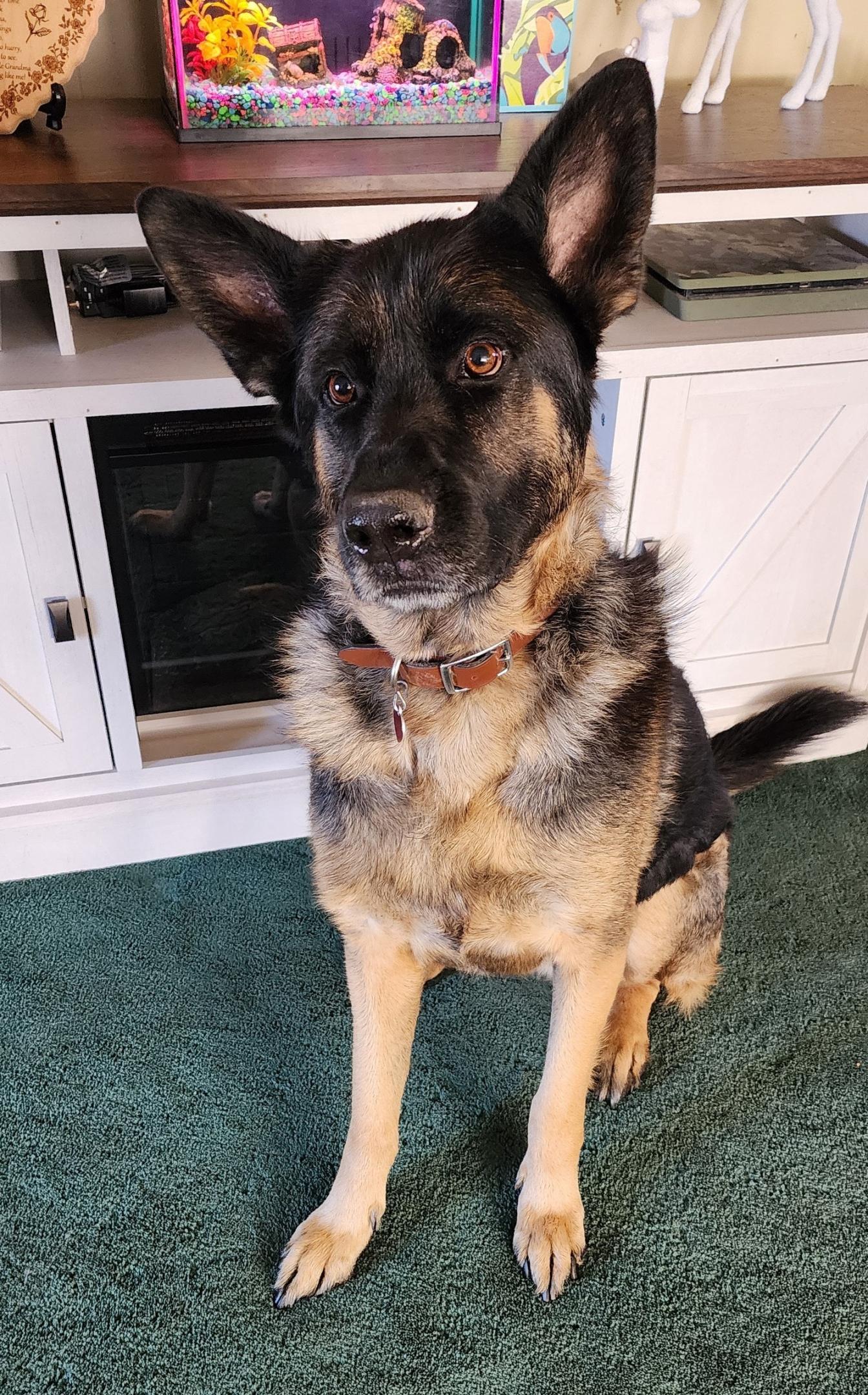 Three weeks later, Odin came in for his reassessment. Odin’s hair had mostly regrown, the scabs were gone, and there was very little itch. Odin looked like a new dog and was so much more comfortable. Odin will be on allergy management for the rest of his life. Skin disease/allergies are typically not curable and have to be managed as there are often genetic components, and removal of allergens is simply not possible with seasonal allergies (Atopy). Allergic skin disease also often needs a lot of follow up as secondary skin infections change and evolve, as with Odin.
Three weeks later, Odin came in for his reassessment. Odin’s hair had mostly regrown, the scabs were gone, and there was very little itch. Odin looked like a new dog and was so much more comfortable. Odin will be on allergy management for the rest of his life. Skin disease/allergies are typically not curable and have to be managed as there are often genetic components, and removal of allergens is simply not possible with seasonal allergies (Atopy). Allergic skin disease also often needs a lot of follow up as secondary skin infections change and evolve, as with Odin.
Odin responded very well to therapy, and we are so glad he is comfortable again! That is why he is our canine Pet of the Month!
Kam
Feline Pet of the Month - January 2025
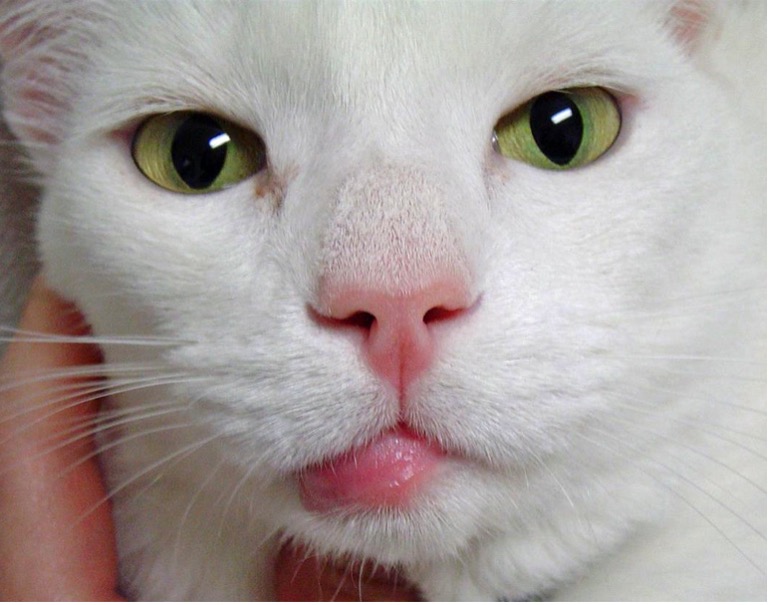 Kam is a 9-year-old domestic shorthair cat that came to our hospital a couple months ago for what appeared to be a raw spot on her belly. Whenever a pet comes in with any kind of skin lesion, the first thing that your vet may recommend is a skin cytology. This is a diagnostic test in which a sample of your pet’s skin is taken and evaluated under the microscope to determine if an infection is present. It is important with skin lesions to determine if, and especially what type of, infection is occurring to best guide treatment. There is a variety of different ways that a skin sample can be obtained. At our hospital, this is usually performed by pressing a piece of tape to the skin, which is a quick and non-invasive method. Kam did very well for her skin sampling and the cytology revealed a lot of bacteria. In these situations, infections are usually secondary, which means that they occur due to another underlying cause. Kam was placed on oral antibiotics and anti-inflammatory medication for 2 weeks. We also discussed with our client the possible underlying causes. The most common primary causes of skin infections in cats are parasites (fleas, mites), stress-induced overgrooming, and hypersensitivity reactions (granulomas).
Kam is a 9-year-old domestic shorthair cat that came to our hospital a couple months ago for what appeared to be a raw spot on her belly. Whenever a pet comes in with any kind of skin lesion, the first thing that your vet may recommend is a skin cytology. This is a diagnostic test in which a sample of your pet’s skin is taken and evaluated under the microscope to determine if an infection is present. It is important with skin lesions to determine if, and especially what type of, infection is occurring to best guide treatment. There is a variety of different ways that a skin sample can be obtained. At our hospital, this is usually performed by pressing a piece of tape to the skin, which is a quick and non-invasive method. Kam did very well for her skin sampling and the cytology revealed a lot of bacteria. In these situations, infections are usually secondary, which means that they occur due to another underlying cause. Kam was placed on oral antibiotics and anti-inflammatory medication for 2 weeks. We also discussed with our client the possible underlying causes. The most common primary causes of skin infections in cats are parasites (fleas, mites), stress-induced overgrooming, and hypersensitivity reactions (granulomas).
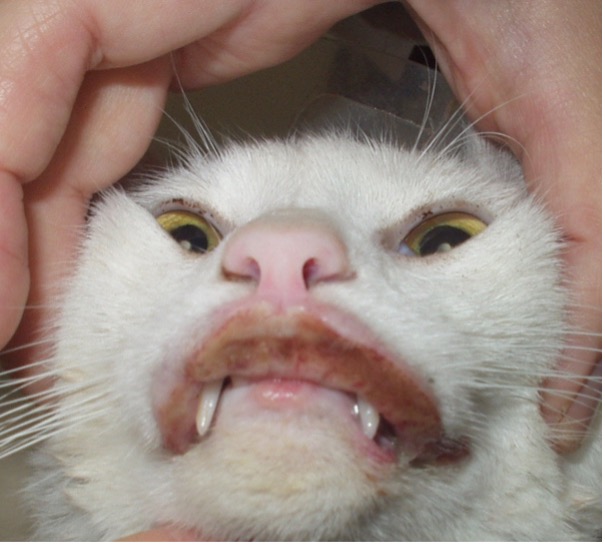 Kam was placed on monthly parasite prevention (Revolution Plus) and stress management with the use of pheromone diffusers (Feliway), gabapentin, and a stress diet (c/d Multicare Stress) was highly recommended.
Kam was placed on monthly parasite prevention (Revolution Plus) and stress management with the use of pheromone diffusers (Feliway), gabapentin, and a stress diet (c/d Multicare Stress) was highly recommended.
When Kam returned for her recheck, the spot appeared to have improved, did not fully resolve. It was recommended to transition to topical antibiotic ointment along with continuing monthly flea prevention and at-home stress management. Despite continued treatment efforts over multiple rechecks, Kam’s spot did not resolve and came back even worse than before. At this time, Kam was reevaluated, and a trial of high-dose steroids was recommended to address a suspected hypersensitivity reaction (granuloma) as the underlying cause.
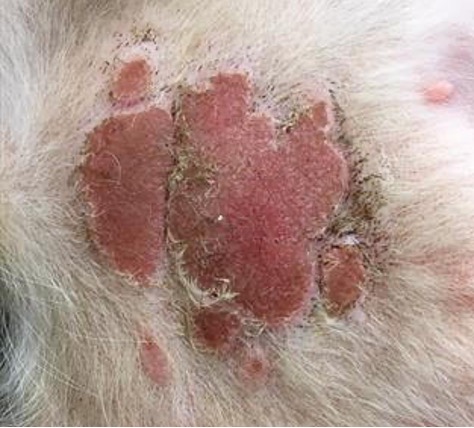 This hypersensitivity reaction is an immune system response more commonly characterized as the feline eosinophilic granuloma complex. This complex is composed of a variety of skin lesions, including plaques, granulomas, and indolent ulcers, which can appear in different locations of the body. Although the exact cause of these lesions is unknown, it is suspected that this condition is partially genetic or inherited. It is very important to address all other potential causes prior to starting high-dose steroid therapy since the treatment aims at suppressing the immune system and does not come without certain risks.
This hypersensitivity reaction is an immune system response more commonly characterized as the feline eosinophilic granuloma complex. This complex is composed of a variety of skin lesions, including plaques, granulomas, and indolent ulcers, which can appear in different locations of the body. Although the exact cause of these lesions is unknown, it is suspected that this condition is partially genetic or inherited. It is very important to address all other potential causes prior to starting high-dose steroid therapy since the treatment aims at suppressing the immune system and does not come without certain risks.
Kam returned for her recheck 2 weeks later and the spot showed significant improvement with even better results compared to previous therapies. Although we suspect that Kam’s condition is consistent with an eosinophilic granuloma due to the positive response to high-dose steroids, a skin biopsy would be needed to confirm this diagnosis, which is not always pursued.
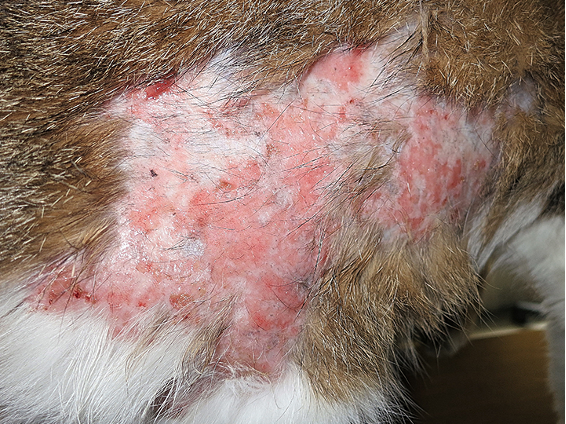 Kam is doing very well and will continue to be closely monitored on long-term steroids, which will be tapered to the lowest and most effective dose to control these lesions. We are happy to call Kam our kitty Pet of the Month!
Kam is doing very well and will continue to be closely monitored on long-term steroids, which will be tapered to the lowest and most effective dose to control these lesions. We are happy to call Kam our kitty Pet of the Month!
**Pictures show variations of skin lesions similar to Kam’s, but we do not have pictures representing Kam’s skin condition.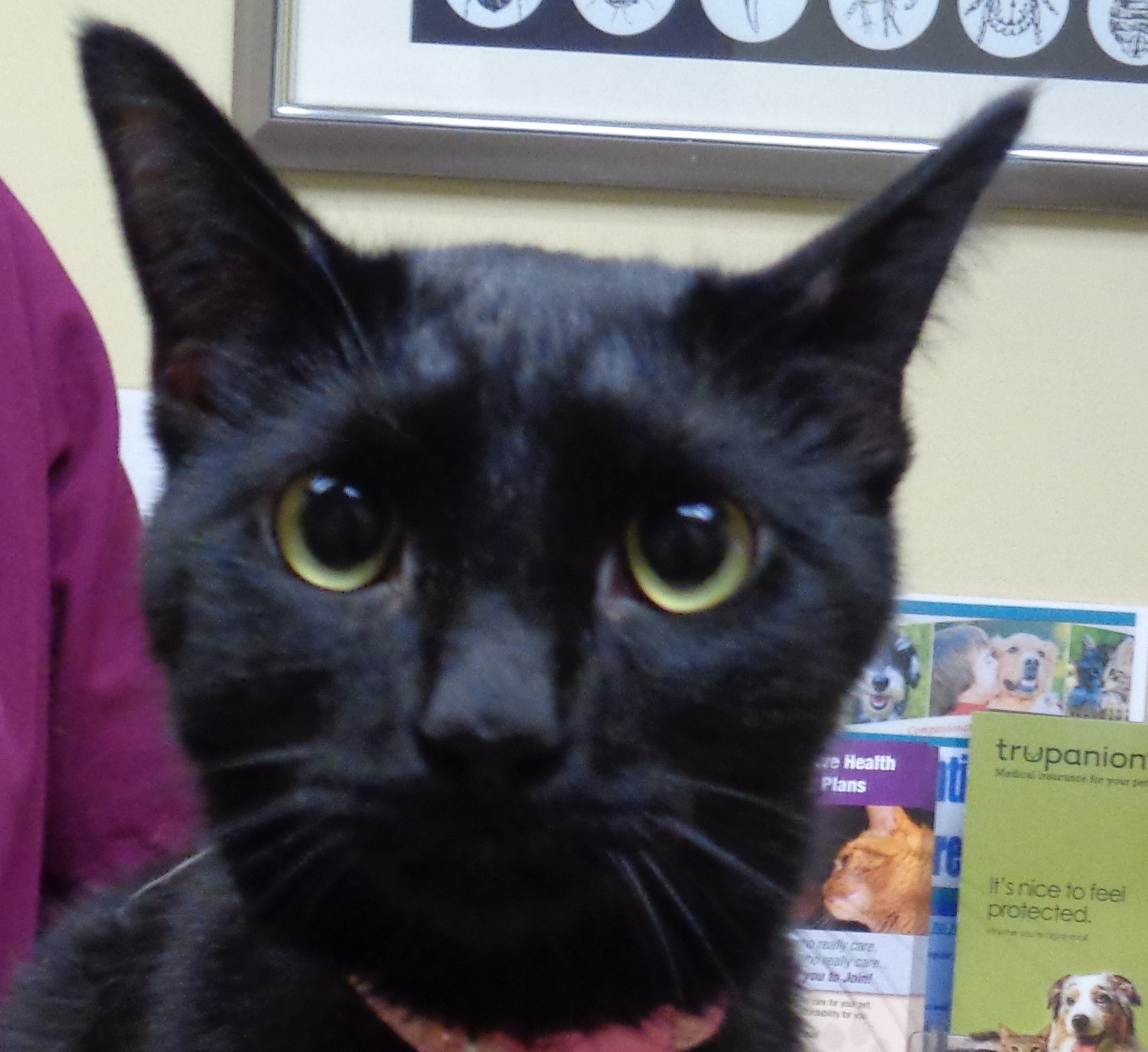
Cali
Canine Pet of the Month - December 2024
 Cali is a sweet, senior Pomeranian. Cali presented a few months ago for sudden onset of severe and excessive sneezing and pawing at the side of the face. The owners had noticed this right after she had been outside in the yard. Her overall physical examination was unremarkable. The suspicion was that Cali may have sniffed up foreign material into her nose with the history and sudden onset. Inflammation, dental disease and cancer had to be ruled out as well. These things can also have sneezing signs. Antibiotics were started and Cali was scheduled for skull radiographs to look for material and tumors in the nasal passage. The radiographs of the nasal passage were unremarkable. Sometimes the underlying cause is not seen on radiographs and rhinoscopy is the next step. Rhinoscopy is a procedure in which a rigid scope with a camera inserted into each nostril to look at the nasal passage. In Cali’s case we saw a large blade of grass folded up in the left nasal passage mid nasal passage. Using a camera-guided grabbing tool in the rhinoscope the grass blade was removed. Cali recovered uneventfully and is doing very well. The sneezing has stopped.
Cali is a sweet, senior Pomeranian. Cali presented a few months ago for sudden onset of severe and excessive sneezing and pawing at the side of the face. The owners had noticed this right after she had been outside in the yard. Her overall physical examination was unremarkable. The suspicion was that Cali may have sniffed up foreign material into her nose with the history and sudden onset. Inflammation, dental disease and cancer had to be ruled out as well. These things can also have sneezing signs. Antibiotics were started and Cali was scheduled for skull radiographs to look for material and tumors in the nasal passage. The radiographs of the nasal passage were unremarkable. Sometimes the underlying cause is not seen on radiographs and rhinoscopy is the next step. Rhinoscopy is a procedure in which a rigid scope with a camera inserted into each nostril to look at the nasal passage. In Cali’s case we saw a large blade of grass folded up in the left nasal passage mid nasal passage. Using a camera-guided grabbing tool in the rhinoscope the grass blade was removed. Cali recovered uneventfully and is doing very well. The sneezing has stopped.
Cali was a very unique case with a great outcome and that is why she is AHS’s canine Pet of the Month!
Daisy
Feline Pet of the Month - December 2024
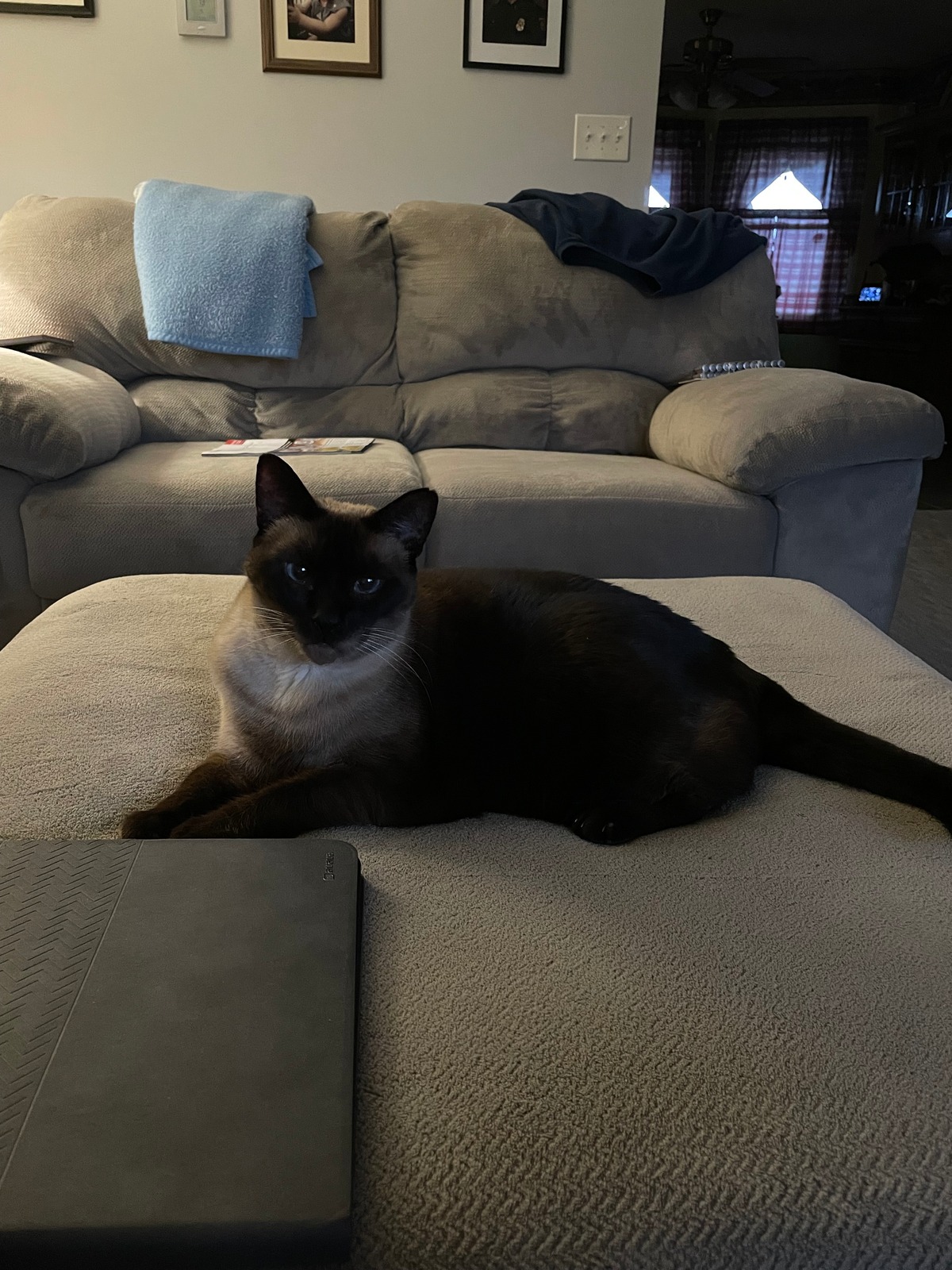 Daisy is a 16-year-old spayed female cat who has been a patient at AHS her whole life. Daisy has always been healthy with her only issues being dental cleanings that occur every two years or so.
Daisy is a 16-year-old spayed female cat who has been a patient at AHS her whole life. Daisy has always been healthy with her only issues being dental cleanings that occur every two years or so.
This summer, Daisy started urinating outside the litter pan. While this is not uncommon in cats, it was out of character for Daisy. Cats frequently will urinate outside the litter pan when suffering from cystitis-a complex and frustrating syndrome that usually is caused by a stress/hormonal issue. This is difficult to diagnose as there is no direct test for it. We start by obtaining a urinalysis to rule out things like urinary tract infection (extremely rare in cats), crystals in the urine (quite concerning in cats) as well as others. Daisy’s urine was excellent with no indication of any issues other than moderate blood in the urine. She was started on medication to help rule out stress as a potential primary cause.
Daisy did well for several months until the problem started back again. Because Daisy had to be sedated for her exams, we chose to start a special diet to help relieve stress as opposed to a continued work up. After 4 weeks there was minimal improvement, so Daisy was sedated for a follow up urinalysis. This again showed blood. Subsequent X-rays showed that Daisy had developed a bladder stone which was not present at her first visit. Frequently, the urinalysis will give indication of a possible stone. Daisy’s urinalysis did not. Daisy was scheduled for surgery and the stone was removed. She was better within a week.
Daisy’s case shows the complexity of cat bladder issues and the frustration as we work though them. Once her stone was removed, Daisy returned to normal. Because of her great recovery she is AHS’s feline Pet of the Month.
Gibson
Canine Pet of the Month - November 2024
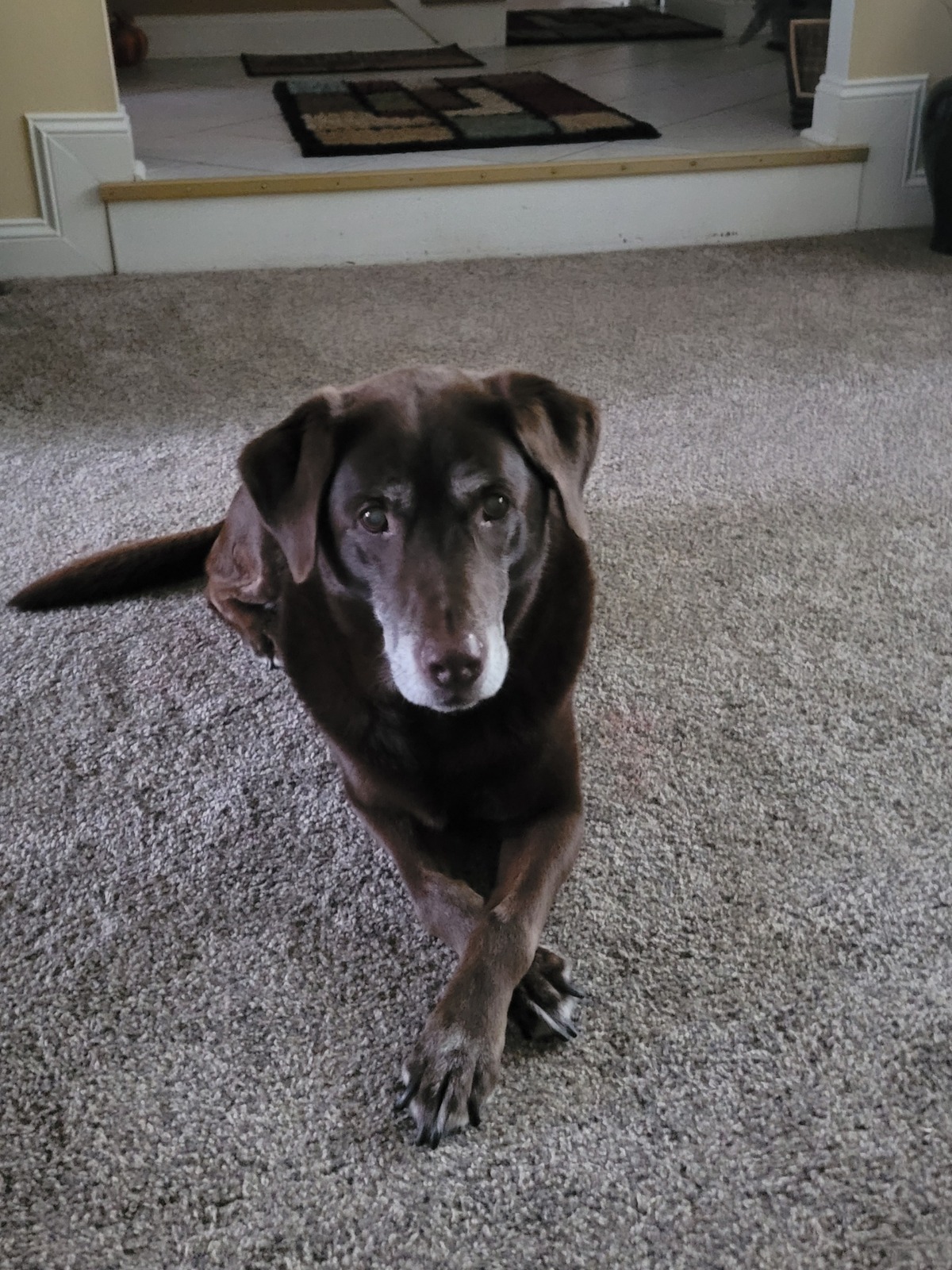 Gibson is a sweet, “senior” Labrador Retriever that has a history of “atopy”. Atopy is an allergic skin
disease which causes itchiness and can lead to secondary infection. When allergens contact the dog’s
skin, the immune system creates an inflammatory response. The pet will scratch or lick and this results
in thickened, red, inflamed skin and can cause hair loss. Yeast and bacteria are then allowed to overgrow
on the skin, causing a secondary infection. At this time, we not only have to treat the itchiness but
also the infection of the skin. Oral medications can help a lot during this time as they allow the whole
body to be treated. Some pets may not tolerate oral medication or the medications can be difficult to give. The skin also responds greatly to topical medication such as medicated baths. During a medicated bath, the antibacterial or antifungal ingredient is allowed to contact the skin for 5 minutes before rinsing. This helps with infection as well as the desire to lick or scratch the skin. Bathing some pets can be labor-intensive for certain clients. Gibson came to our Pet Quarters for his medicated baths. He came twice a week for 3 weeks and his skin improved dramatically. His fur is growing back and he looks healthier than ever! Gibson seemed to enjoy all the extra attention he received on his spa days and this is why we chose him to be our canine Pet of the Month!
Gibson is a sweet, “senior” Labrador Retriever that has a history of “atopy”. Atopy is an allergic skin
disease which causes itchiness and can lead to secondary infection. When allergens contact the dog’s
skin, the immune system creates an inflammatory response. The pet will scratch or lick and this results
in thickened, red, inflamed skin and can cause hair loss. Yeast and bacteria are then allowed to overgrow
on the skin, causing a secondary infection. At this time, we not only have to treat the itchiness but
also the infection of the skin. Oral medications can help a lot during this time as they allow the whole
body to be treated. Some pets may not tolerate oral medication or the medications can be difficult to give. The skin also responds greatly to topical medication such as medicated baths. During a medicated bath, the antibacterial or antifungal ingredient is allowed to contact the skin for 5 minutes before rinsing. This helps with infection as well as the desire to lick or scratch the skin. Bathing some pets can be labor-intensive for certain clients. Gibson came to our Pet Quarters for his medicated baths. He came twice a week for 3 weeks and his skin improved dramatically. His fur is growing back and he looks healthier than ever! Gibson seemed to enjoy all the extra attention he received on his spa days and this is why we chose him to be our canine Pet of the Month!
Celine
Feline Pet of the Month - November 2024
 Celine is a curious, normally indoor only, kitty that sometimes likes to escape out in the fenced yard to explore under the porch area. A day or so before she presented, she had snuck outside. She then started to do a mixture of a sneeze/ cough/almost like a reverse sneeze, especially triggered when eating/drinking. Also she started to do stronger forced swallowing movements.
Celine is a curious, normally indoor only, kitty that sometimes likes to escape out in the fenced yard to explore under the porch area. A day or so before she presented, she had snuck outside. She then started to do a mixture of a sneeze/ cough/almost like a reverse sneeze, especially triggered when eating/drinking. Also she started to do stronger forced swallowing movements.
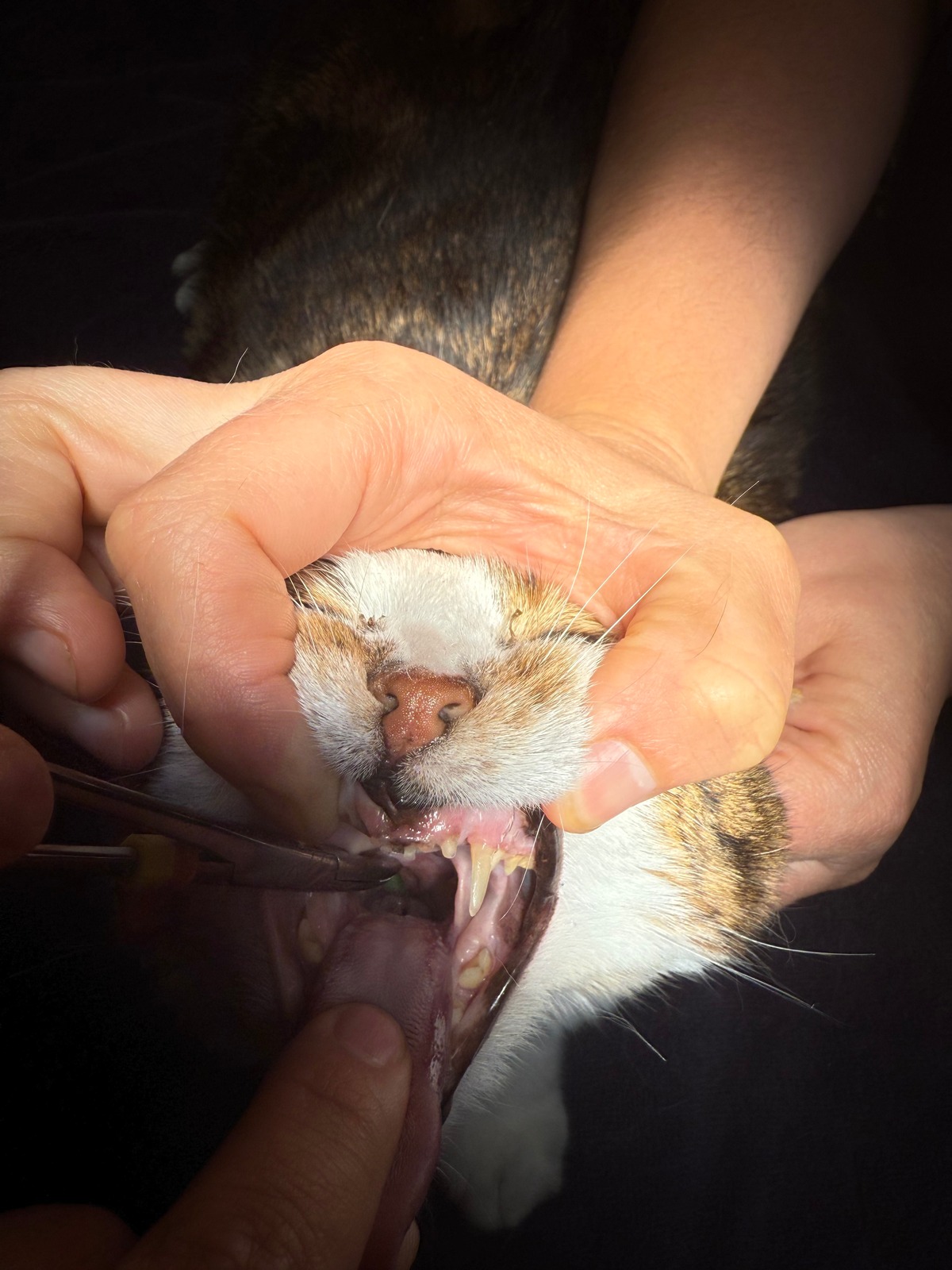 On a routine exam, there was nothing overly significant noted. No nasal discharge. No bleeding. Nothing in the back of her throat, but typical cat fashion, it was near impossible to get a great look at the back of the throat awake. When palpating deep under her chin/neck area, she would do a little harder swallow, but it would not trigger a reverse sneeze.
On a routine exam, there was nothing overly significant noted. No nasal discharge. No bleeding. Nothing in the back of her throat, but typical cat fashion, it was near impossible to get a great look at the back of the throat awake. When palpating deep under her chin/neck area, she would do a little harder swallow, but it would not trigger a reverse sneeze.
After the weekend passed and she was still having some of these same symptoms, Celine presented again for a sedated evaluation. With sedation, we were able to get a much better look at the back of her throat. There was the glimmer of green seen. Classic for a grass blade!! We were able to use hemostats to grab the blade and pull it free. Shockingly enough, the blade kept coming and coming from the back of her throat and up toward the back of her nasal area: a whopping 3 inch blade of grass was removed!
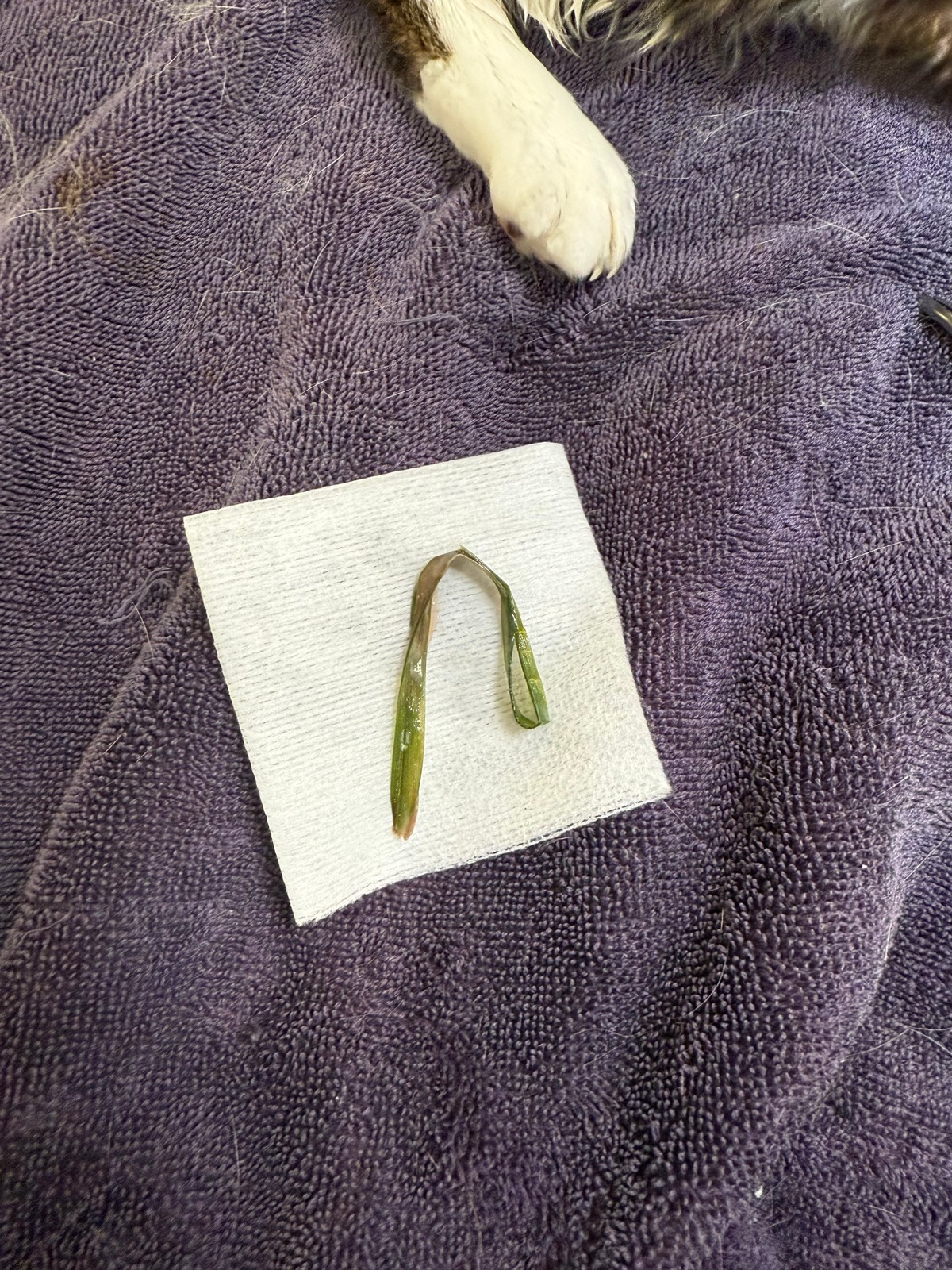 Lucky for Celine, her owner was well aware what her symptoms could mean and suspected she may have done something like that, so her problem was detected early. Many cats chew on grass and get one stuck in the nasopharyngeal area, but an owner may not detect it as a problem for a while. Those cats may start to have symptoms like nasal discharge or bleeding, excessive sneezing, and foul smell from the mouth or nose.
Lucky for Celine, her owner was well aware what her symptoms could mean and suspected she may have done something like that, so her problem was detected early. Many cats chew on grass and get one stuck in the nasopharyngeal area, but an owner may not detect it as a problem for a while. Those cats may start to have symptoms like nasal discharge or bleeding, excessive sneezing, and foul smell from the mouth or nose.
We are just so tickled that it was such an easy fix for this sweet kitty and feel it is a pretty common problem for people to be aware of, that we just had to make Celine the Animal Hospital of Statesville, Cat Pet of the Month!
Patou
Canine Pet of the Month - October 2024
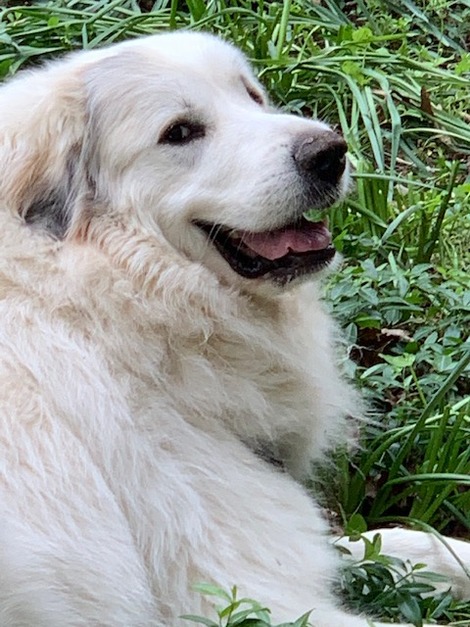 October’s Pet of the Month is Patou. Patou has been a patient of the Animal Hospital of Statesville since she was a puppy and she is now 6 years old. A little over a year ago, Patou began to have urinary issues and developed a urinary tract infection. She came to the Animal Hospital of Statesville and was treated for a urinary tract infection. A few months later the urinary tract infection returned. She was again treated but continued to have urinary issues. As Patou aged, she became overweight and developed redundant skin folds or excessive skin around her vulva. After treating her urinary tract infections multiple times, the decision was made to perform a valvuloplasty to relieve her chronic urinary tract infections. Some dogs develop redundant or excessive skin around their peri vulvar area commonly due to excessive weight or to vulvar conformation.
October’s Pet of the Month is Patou. Patou has been a patient of the Animal Hospital of Statesville since she was a puppy and she is now 6 years old. A little over a year ago, Patou began to have urinary issues and developed a urinary tract infection. She came to the Animal Hospital of Statesville and was treated for a urinary tract infection. A few months later the urinary tract infection returned. She was again treated but continued to have urinary issues. As Patou aged, she became overweight and developed redundant skin folds or excessive skin around her vulva. After treating her urinary tract infections multiple times, the decision was made to perform a valvuloplasty to relieve her chronic urinary tract infections. Some dogs develop redundant or excessive skin around their peri vulvar area commonly due to excessive weight or to vulvar conformation.
Excessive weight causes excessive skin folds to develop, causing resistance to develop in urine flow by partially blocking urination. Conformational issues typically arise when dogs have a small vulva for their body size, leading to urine restriction. These scenarios lead to what is typically referred to as a hooded vulva. Dogs are typically thought to develop ascending urinary tract infections or contamination that comes from outside and travels up the urinary tract. When a dog has a hooded vulva, the extra skin becomes contaminated with bacteria and due to partially blocking urine flow, can lead to excessive contamination of the urinary tract causing chronic urinary tract infections. In certain cases, a vulvoplasty is performed to remove excessive skin and remove blockage of the urinary tract.
A vulvoplasty is a procedure where typically a half-circular section of skin is surgically removed from above the vulva to restore a more natural conformation, allowing unimpeded urine flow. This essentially results in tucking the skin upward to stop restricting urine flow. Typically, once the skin around the vulva is raised and is no longer impeding urine flow, the patient’s urinary issues are relieved. Patou had a vulvoplasty in February 2024 and after healing from surgery is doing well and her chronic urinary tract infections are under control. If you have questions about your dog’s urinary health, please contact us at the Animal Hospital of Statesville to set up a consultation.
Biscuit
Feline Pet of the Month - October 2024
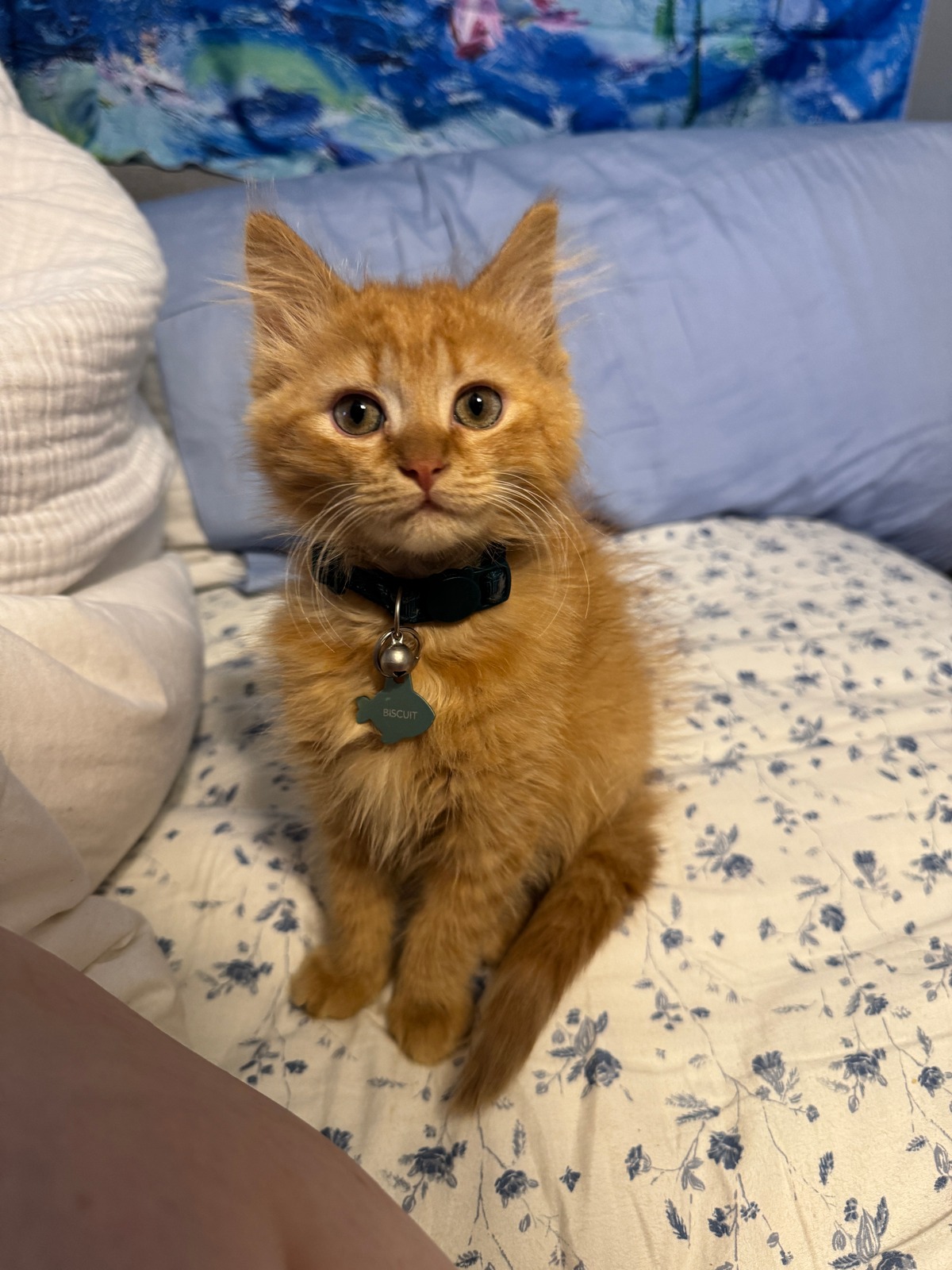 Biscuit is an adorable orange tabby kitten that was found and brought to the Animal Hospital of Statesville for a wellness exam. Originally, Biscuit was thought to be a boy as most orange tabbies are, however, she is all girl! She weighed in at a whopping 1.5lbs on her initial visit. She was truly a ball of orange fluff! Biscuit was examined thoroughly and checked for parasites. Surprisingly she was overall healthy, despite being a stray previously. She was started on the appropriate vaccines and deworming to protect her. Her pet parent also signed her up on our Kitten Preventative Health Care Plan.
Biscuit is an adorable orange tabby kitten that was found and brought to the Animal Hospital of Statesville for a wellness exam. Originally, Biscuit was thought to be a boy as most orange tabbies are, however, she is all girl! She weighed in at a whopping 1.5lbs on her initial visit. She was truly a ball of orange fluff! Biscuit was examined thoroughly and checked for parasites. Surprisingly she was overall healthy, despite being a stray previously. She was started on the appropriate vaccines and deworming to protect her. Her pet parent also signed her up on our Kitten Preventative Health Care Plan.
This wellness plan is a budget-friendly option that we offer our clients to take the best care of their pet. For kittens (and puppies), it includes all of the needed vaccine boosters for the first year. It includes flea/tick/heartworm prevention and surgery for their spay or neuter. It truly is an “all-inclusive” way to take care of your new kitten or puppy. We are proud to call Biscuit our Pet of the Month!
Diesel
Canine Pet of the Month - September 2024
 Diesel is a 15-week-old Pit Bull/American Staffordshire Terrier mix. Diesel started coming to see us to get his puppy examinations and vaccinations. Once he got his second DHPP and Bordetella, he was eligible to come to Puppy Socialization Class. His owner brought him for his first class on August 16. Diesel was terrified and very standoffish to everyone, including the other puppies. He would go up to all the objects like he was supposed to and sniff them. It was when it was time to go out to play off leash that his problem was This is where we, Cynthia and I, as instructors, saw the most fear and anxiety. Diesel immediately got in between his dad’s legs and wanted nothing to do with playing or letting anyone touch him. We could talk to him, and he would growl and didn’t want to be touched by anyone. Another Puppy Class student ran up to him to play and she was not aware that he did not want to play. Diesel jumped on her growling, and tried to bite her. He was letting us know he wanted no part of playing with anyone or anyone touching him. They were immediately separated.
Diesel is a 15-week-old Pit Bull/American Staffordshire Terrier mix. Diesel started coming to see us to get his puppy examinations and vaccinations. Once he got his second DHPP and Bordetella, he was eligible to come to Puppy Socialization Class. His owner brought him for his first class on August 16. Diesel was terrified and very standoffish to everyone, including the other puppies. He would go up to all the objects like he was supposed to and sniff them. It was when it was time to go out to play off leash that his problem was This is where we, Cynthia and I, as instructors, saw the most fear and anxiety. Diesel immediately got in between his dad’s legs and wanted nothing to do with playing or letting anyone touch him. We could talk to him, and he would growl and didn’t want to be touched by anyone. Another Puppy Class student ran up to him to play and she was not aware that he did not want to play. Diesel jumped on her growling, and tried to bite her. He was letting us know he wanted no part of playing with anyone or anyone touching him. They were immediately separated.
The second week Diesel came to Puppy Socialization Class (PSC for short) we made a mat for him off to the side a little so he had space away from everyone. He went to the new objects like he was supposed to. As before, he did well with this part. When it was time to go outside to play off leash, he once again stayed between Jon’s (Diesel’s owner’s) legs. He wanted nothing to do with playing with anyone. I (Traci) tried to pet him, and he gave a growl and tried to bite to let me know he was not interested in being touched. He still growled at other dogs that came up to him, to warn them not to come near. However, he did show a little improvement in his growls; they weren’t as strong as they were during the first class.
Throughout this time, Jon has been involved in his care and training. He was willing to do what was needed to help Diesel. He asked questions about what he could do to help Diesel adjust socially. We let him know if he had any family that had properly vaccinated dogs then maybe Diesel could get together with them to play. Also, taking him around other people to help socialize him may help. Dad was willing to do what was needed to help Diesel become better adjusted. It takes an owner that is willing to go the extra mile sometimes to help their pet not be so scared and nervous. Diesel’s owner took him different places and got Diesel together with family pets. Jon told us that when Diesel is at home and he wants something, he will stomp his foot to let Jon know he wants something. He was already getting dad used to knowing who the boss was.
On Monday, the 26th of August, Diesel came to his third Puppy Socialization Class. I once again made his mat on the outer edge, a few feet from everyone else. He went to the objects like normal. We came around with the objects and he still acted quite standoffish. When we came around with the otoscope, we just let him smell it; we didn’t want to invade his space too much. I could tell, though, that he let us get a little closer this time. We all went to do off-leash play. Diesel, of course, stood with dad, between his legs. But then something great happened! About 2-3 minutes into play, Diesel ran to the other pups and just started playing. He looked and acted like a normal puppy playing and having fun, instead of being full of fear and anxiety. It was so awesome to see! He ran back to dad, then would run and play some more. We watched as he came out of his shell, let his guard down and played with everyone. What an amazing thing to witness! He ran and played and had the best time! He played with everyone and for a few minutes forgot to be so guarded and scared. It was then time to get his cheese Kong and when he finished that Kong, he let me pet him. He just stood there and accepted the love and pets. With Jon’s help and Puppy Socialization Class, together we made a difference in one puppy’s life, and that makes the hard work completely worth it. Diesel is the reason we do Puppy Socialization Class!! His marked improvement earned him AHS’s Pet of the Month honor! Puppy Socialization is VITAL to a pup’s development! Our PSCs are held every Monday night from 6:15 to 6:45. Puppies from 10 to 16 weeks with the required vaccinations are invited to enroll! Ask us about PSC today!
Savannah
Feline Pet of the Month - September
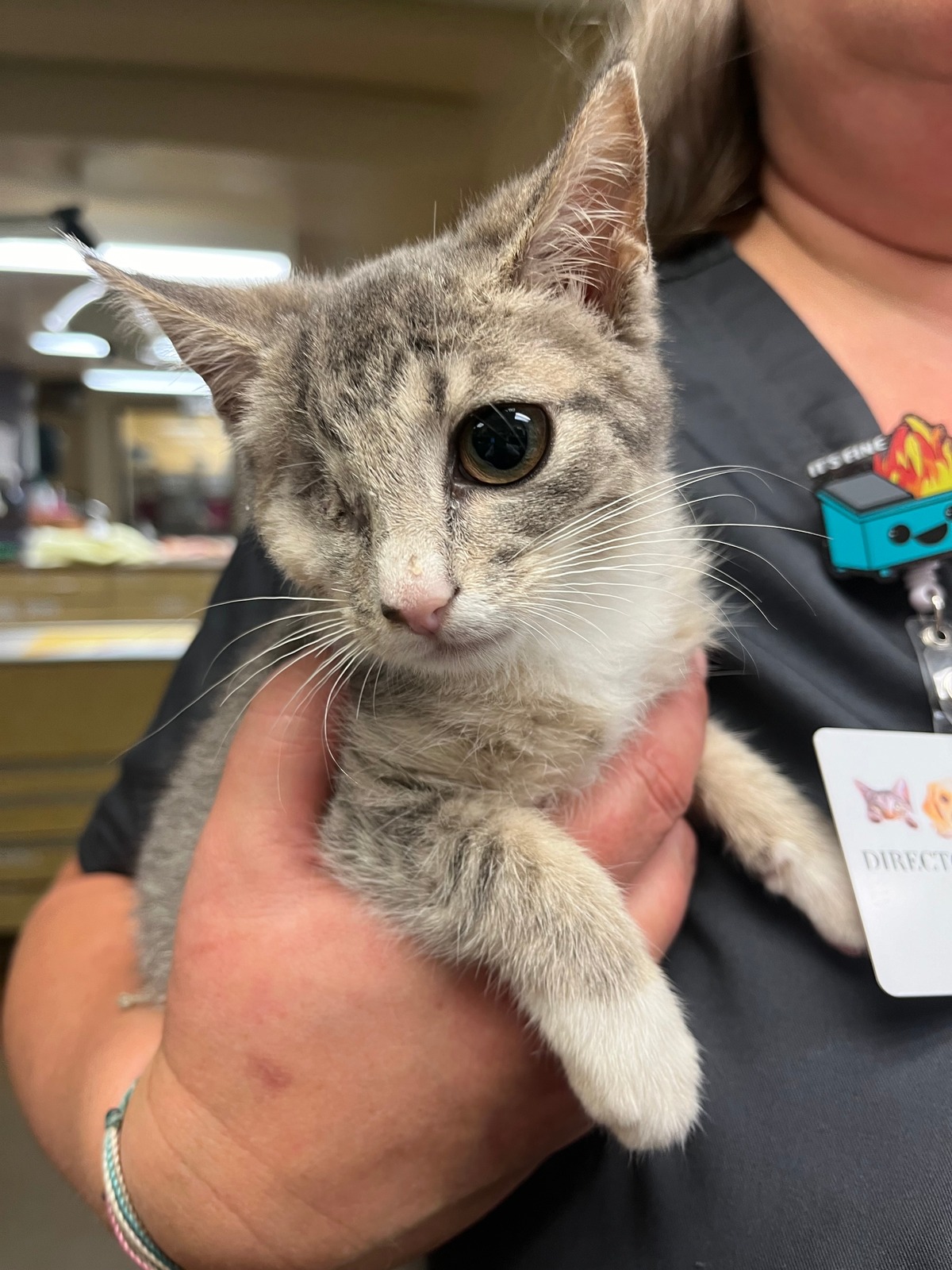 Savannah is an adventurous 10-week-old, domestic shorthair kitten. She first came to our hospital a couple weeks ago as a stray with a very painful and gross looking eye. Although, the exact cause of her bad eye was unknown, this condition can be due to trauma from being scratched by another cat or animal and/or due to a severe, untreated form of an upper respiratory tract infection. However, despite the severity of her condition, Savannah did not let that slow her down one bit! She continued to race around the hospital, play with anything in sight, and give lots of cuddles and love to everyone she met. Despite her playful and loving attitude, her eye was doing her no favors, and therefore we recommended removing it.
Savannah is an adventurous 10-week-old, domestic shorthair kitten. She first came to our hospital a couple weeks ago as a stray with a very painful and gross looking eye. Although, the exact cause of her bad eye was unknown, this condition can be due to trauma from being scratched by another cat or animal and/or due to a severe, untreated form of an upper respiratory tract infection. However, despite the severity of her condition, Savannah did not let that slow her down one bit! She continued to race around the hospital, play with anything in sight, and give lots of cuddles and love to everyone she met. Despite her playful and loving attitude, her eye was doing her no favors, and therefore we recommended removing it.
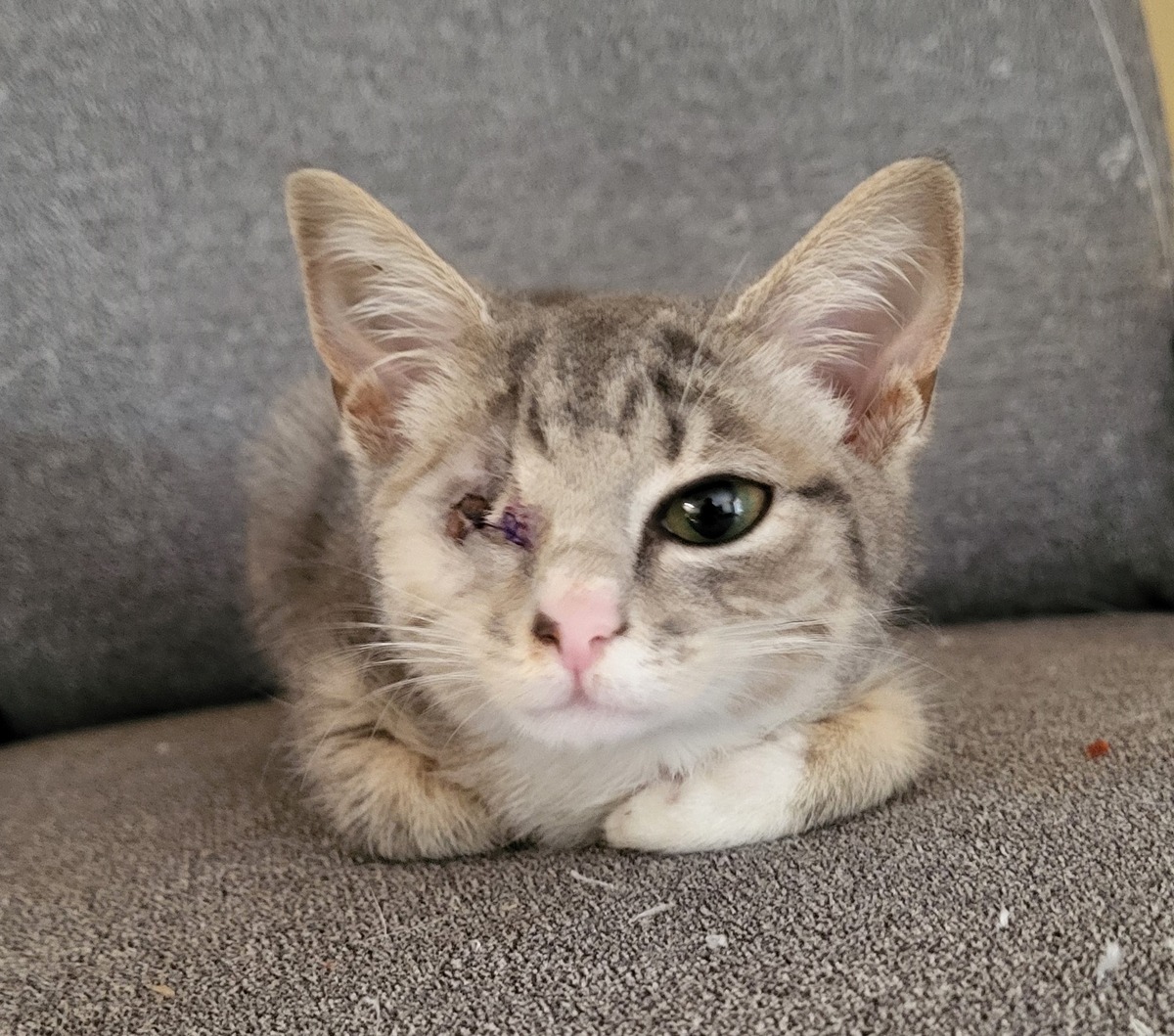 Savannah was cleared for surgery that next day with a perfect bill of health regarding her bloodwork and other testing. Her problem eye was removed successfully, and she recovered from general anesthesia quite well. After surgery, Savannah proved to be even more playful and curious than we first thought, and with her all fixed up, she is now set to focus on finding a place she can call her forever home! We are happy to call Savannah our kitty Pet of the Month!
Savannah was cleared for surgery that next day with a perfect bill of health regarding her bloodwork and other testing. Her problem eye was removed successfully, and she recovered from general anesthesia quite well. After surgery, Savannah proved to be even more playful and curious than we first thought, and with her all fixed up, she is now set to focus on finding a place she can call her forever home! We are happy to call Savannah our kitty Pet of the Month!
Daisy
Canine Pet of the Month - July/August 2024
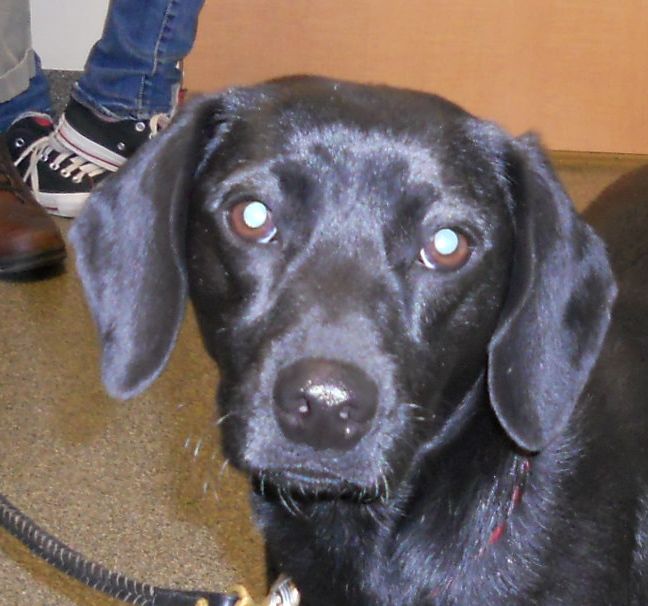 Daisy is a 14-year-old mixed breed dog who has visited AHS regularly since she was adopted by her owner in 2011. She has always been a very sweet girl and her owner has done a good job keeping her updated on all her care including vaccines, heartworm meds and dentistry. She has always been very healthy except for one thing—her weight. Daisy’s owner is an older adult who showed his love for her by feeding her frequently. Whenever he ate, she ate and he was a sucker for her big brown eyes. Because his mobility was limited, Daisy got almost no exercise. This is a bad combination and Daisy slowly went from chunky to overweight to morbidly obese. Her mature adult weight was 32 pounds and she peaked at 52 pounds. She was unable to move around the home very well and she had no interest in stairs or walks. She lived a very sedentary life.
As her owner aged, he required more constant supervision and his daughter took over his and Daisy’s care. She listened intently to our conversation about Daisy’s weight and became very motivated to help her. She began restricting Daisy’s calories and preventing her father from feeding Daisy from the table. She also started a consistent regimen of walking.
Daisy’s excess weight slowly and steadily began to come off and, over the course of two years, she lost 20 pounds-back to her recommended weight. She became much more active and energetic. Her attitude improved and she became much more ambulatory. She is doing better now than she has in the last six years. Because of her weight than and return to a much better quality of life, Daisy is AHS’s canine Pet of the Month!
Daisy is a 14-year-old mixed breed dog who has visited AHS regularly since she was adopted by her owner in 2011. She has always been a very sweet girl and her owner has done a good job keeping her updated on all her care including vaccines, heartworm meds and dentistry. She has always been very healthy except for one thing—her weight. Daisy’s owner is an older adult who showed his love for her by feeding her frequently. Whenever he ate, she ate and he was a sucker for her big brown eyes. Because his mobility was limited, Daisy got almost no exercise. This is a bad combination and Daisy slowly went from chunky to overweight to morbidly obese. Her mature adult weight was 32 pounds and she peaked at 52 pounds. She was unable to move around the home very well and she had no interest in stairs or walks. She lived a very sedentary life.
As her owner aged, he required more constant supervision and his daughter took over his and Daisy’s care. She listened intently to our conversation about Daisy’s weight and became very motivated to help her. She began restricting Daisy’s calories and preventing her father from feeding Daisy from the table. She also started a consistent regimen of walking.
Daisy’s excess weight slowly and steadily began to come off and, over the course of two years, she lost 20 pounds-back to her recommended weight. She became much more active and energetic. Her attitude improved and she became much more ambulatory. She is doing better now than she has in the last six years. Because of her weight than and return to a much better quality of life, Daisy is AHS’s canine Pet of the Month!
Gherkin
Feline Pet of the Month - July/August 2024
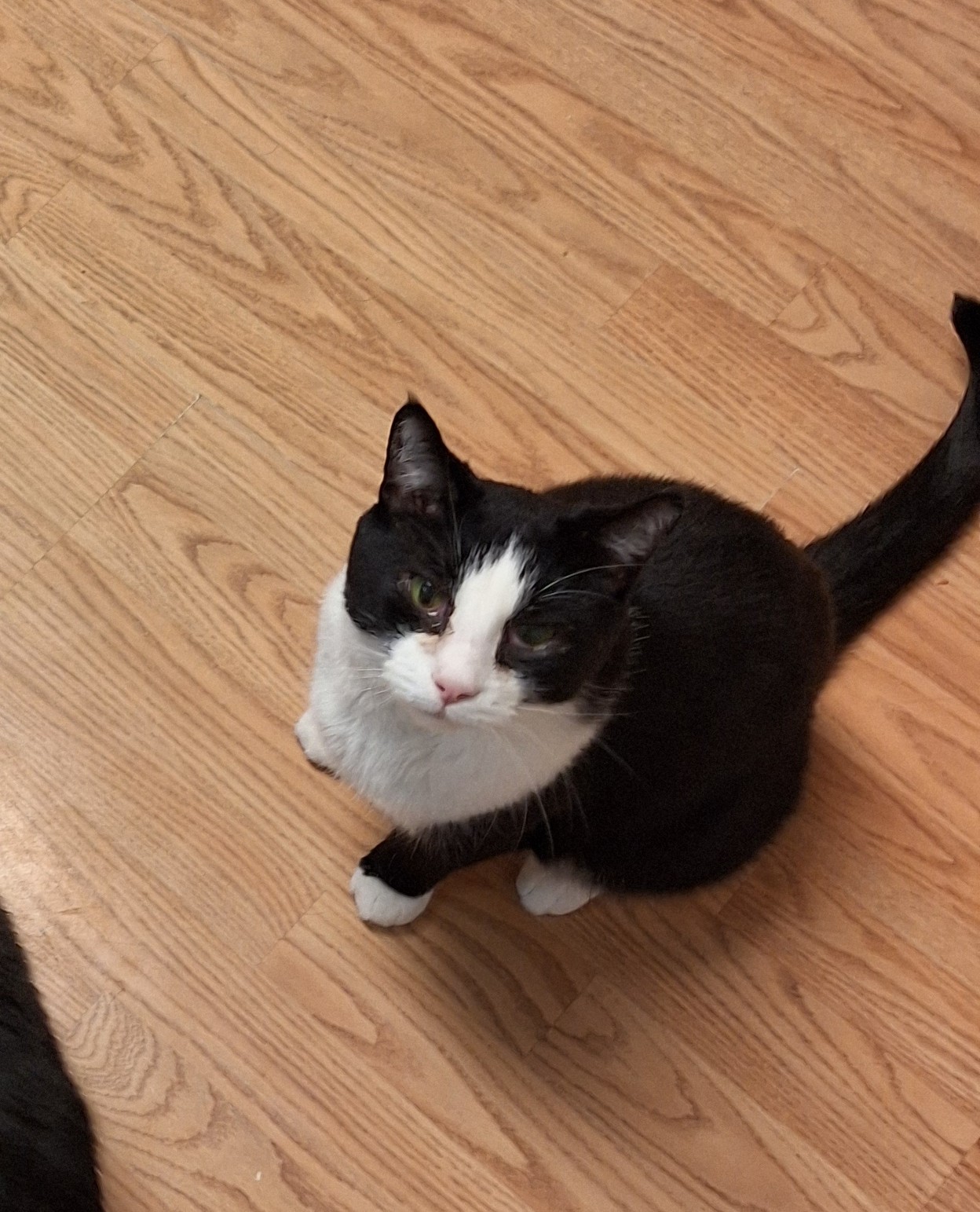 Gherkin is a male middle-aged at that presented with a severe upper respiratory infection. Gherkin has been a healthy kitty up to this point. Antibiotics were started. The respiratory infection worsened, and Gherkin became more lethargic. On a follow up exam, Gherkin’s gingiva were noted to be quite pale. A blood screen revealed severe anemia and dehydration. Gherkin’s bone marrow was trying to regenerate the blood, but was not keeping up. This is typical of immune-mediated (autoimmune) hemolytic anemia. Gherkin was hospitalized and rehydrated, and corticosteroids started. Gherkin started to feel better and resumed eating. His red blood cell count improved. A new broad-spectrum antibiotic was started. Gherkin’s upper respiratory signs resolved, and his anemia has continued to resolve and currently, Gherkin is having his corticosteroid dose gradually reduced. Gherkin is an odd case, and we feel his sever respiratory signs set off his hemolytic anemia. We are so glad Gherkin is back to feeling himself again! His recovery earned him our feline Pet of the Month honor.
Gherkin is a male middle-aged at that presented with a severe upper respiratory infection. Gherkin has been a healthy kitty up to this point. Antibiotics were started. The respiratory infection worsened, and Gherkin became more lethargic. On a follow up exam, Gherkin’s gingiva were noted to be quite pale. A blood screen revealed severe anemia and dehydration. Gherkin’s bone marrow was trying to regenerate the blood, but was not keeping up. This is typical of immune-mediated (autoimmune) hemolytic anemia. Gherkin was hospitalized and rehydrated, and corticosteroids started. Gherkin started to feel better and resumed eating. His red blood cell count improved. A new broad-spectrum antibiotic was started. Gherkin’s upper respiratory signs resolved, and his anemia has continued to resolve and currently, Gherkin is having his corticosteroid dose gradually reduced. Gherkin is an odd case, and we feel his sever respiratory signs set off his hemolytic anemia. We are so glad Gherkin is back to feeling himself again! His recovery earned him our feline Pet of the Month honor.
Heidi
Canine Pet of the Month - May 2024
 This month’s canine Pet of the Month is Heidi. We are excited to announce that she was the first laparoscopic spay and laparoscopic-assisted gastropexy performed here at the Animal Hospital of Statesville! Over the past few months, we have begun to roll out laparoscopic surgery here at the Animal Hospital of Statesville. This is an exciting addition to our state-of-the-art surgical offerings. Laparoscopic surgery is the standard in human medicine and surgery, and we are proud to begin offering it for our patients.
This month’s canine Pet of the Month is Heidi. We are excited to announce that she was the first laparoscopic spay and laparoscopic-assisted gastropexy performed here at the Animal Hospital of Statesville! Over the past few months, we have begun to roll out laparoscopic surgery here at the Animal Hospital of Statesville. This is an exciting addition to our state-of-the-art surgical offerings. Laparoscopic surgery is the standard in human medicine and surgery, and we are proud to begin offering it for our patients.
The main surgeries we will focus on are laparoscopic spay and gastropexy but, there are other advanced options for which laparoscopy is well suited. Laparoscopic surgeries are performed using cannulas or ports for a camera and instruments instead of a large incision in typical open surgeries. Laparoscopy is also well suited for large breed dogs. Using laparoscopic techniques allows for much smaller incisions, less pain and quicker healing times.
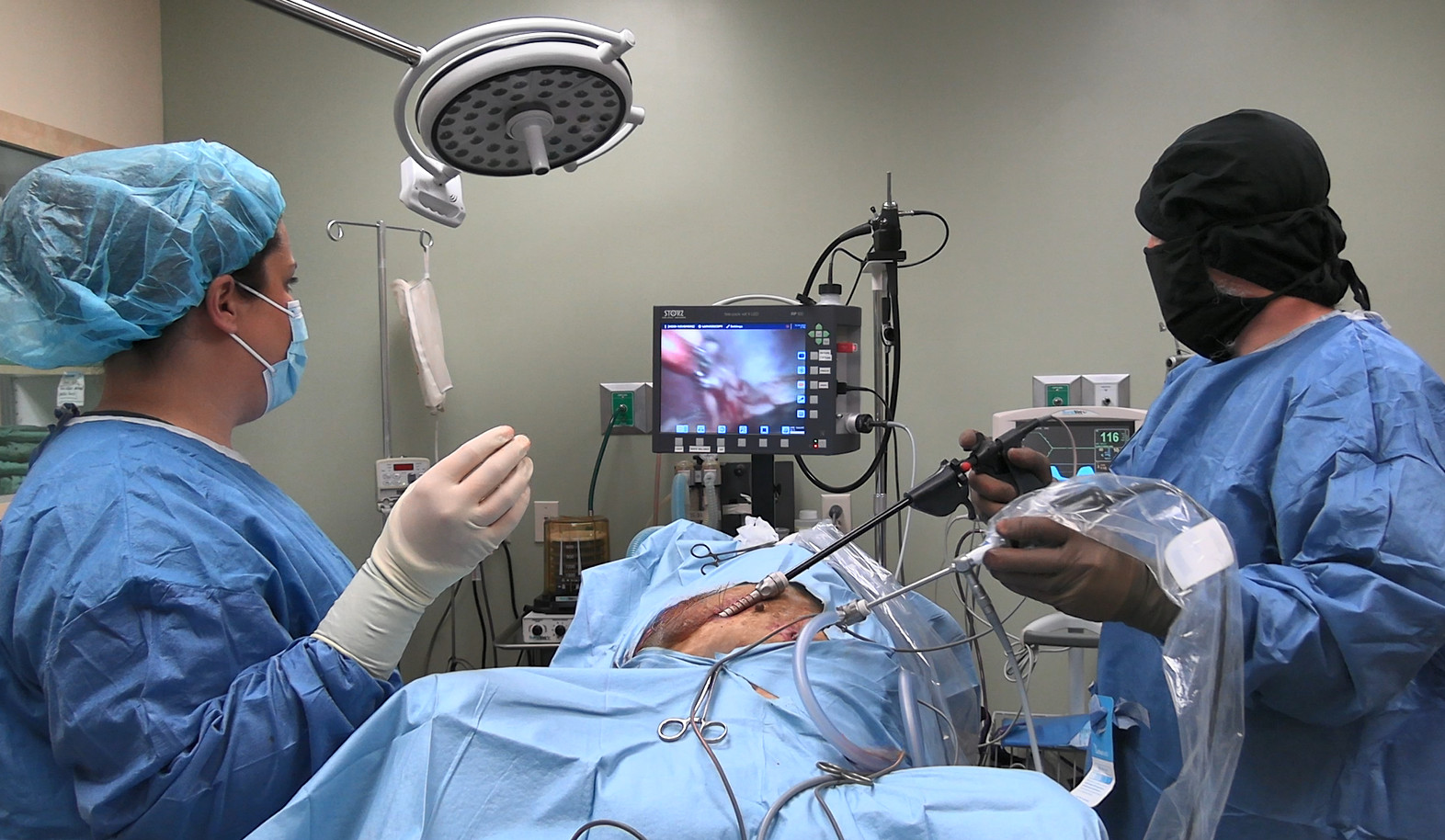
The laparoscopic spay is similar to an open spay but in a laparoscopic spay only an ovariectomy is performed versus an ovariohysterectomy. This affords much less trauma and pain from surgery and a quicker healing time. Many studies have shown an ovariectomy to be a safe alternative to typical ovariohysterectomy.
A gastropexy is a surgery performed to pexy, or attach, a portion of the stomach to the right body wall to prevent gastric dilatation volvulus or GDV. GDV is a risk in deep chested dogs and a gastropexy is commonly performed preemptively to prevent a severe and possibly deadly medical condition. The laparoscopic-assisted gastropexy achieves the same results as an open gastropexy but with a much smaller incision, less trauma and pain and a much faster healing time.
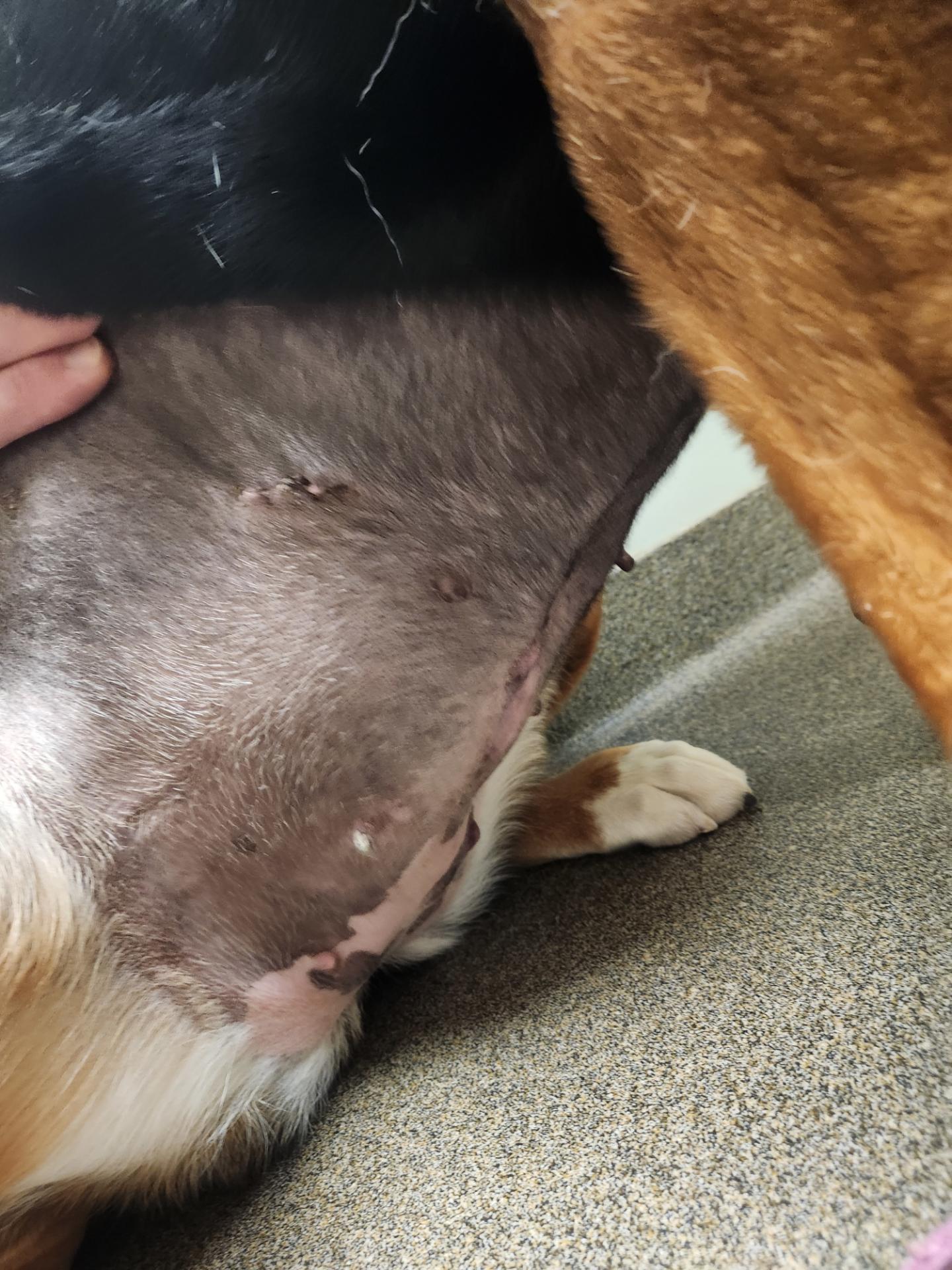 In Heidi’s case, she is a Greater Swiss Mountain dog that weighs almost 150 pounds. Heidi’s spay and
gastropexy were performed through two small incisions instead of the typical large open laparotomy
incision, which allows for much less pain and faster healing time. Typically, the healing time for
laparoscopic procedures is around half that of typical open surgical procedures.
In Heidi’s case, she is a Greater Swiss Mountain dog that weighs almost 150 pounds. Heidi’s spay and
gastropexy were performed through two small incisions instead of the typical large open laparotomy
incision, which allows for much less pain and faster healing time. Typically, the healing time for
laparoscopic procedures is around half that of typical open surgical procedures.
Heidi came in for her two-week follow-up exam and was doing great. Her owner reported she was doing well after only a few days and was back to playing and being a happy girl. Her pioneering spirit and great recovery made her a “shoe-in” for our canine Pet of the Month honor.
If you have and questions or are interested in laparoscopic surgery at the Animal Hospital of Statesville please contact us or bring your pet in for a consultation.
Miss Kitty
Feline Pet of the Month - May 2024
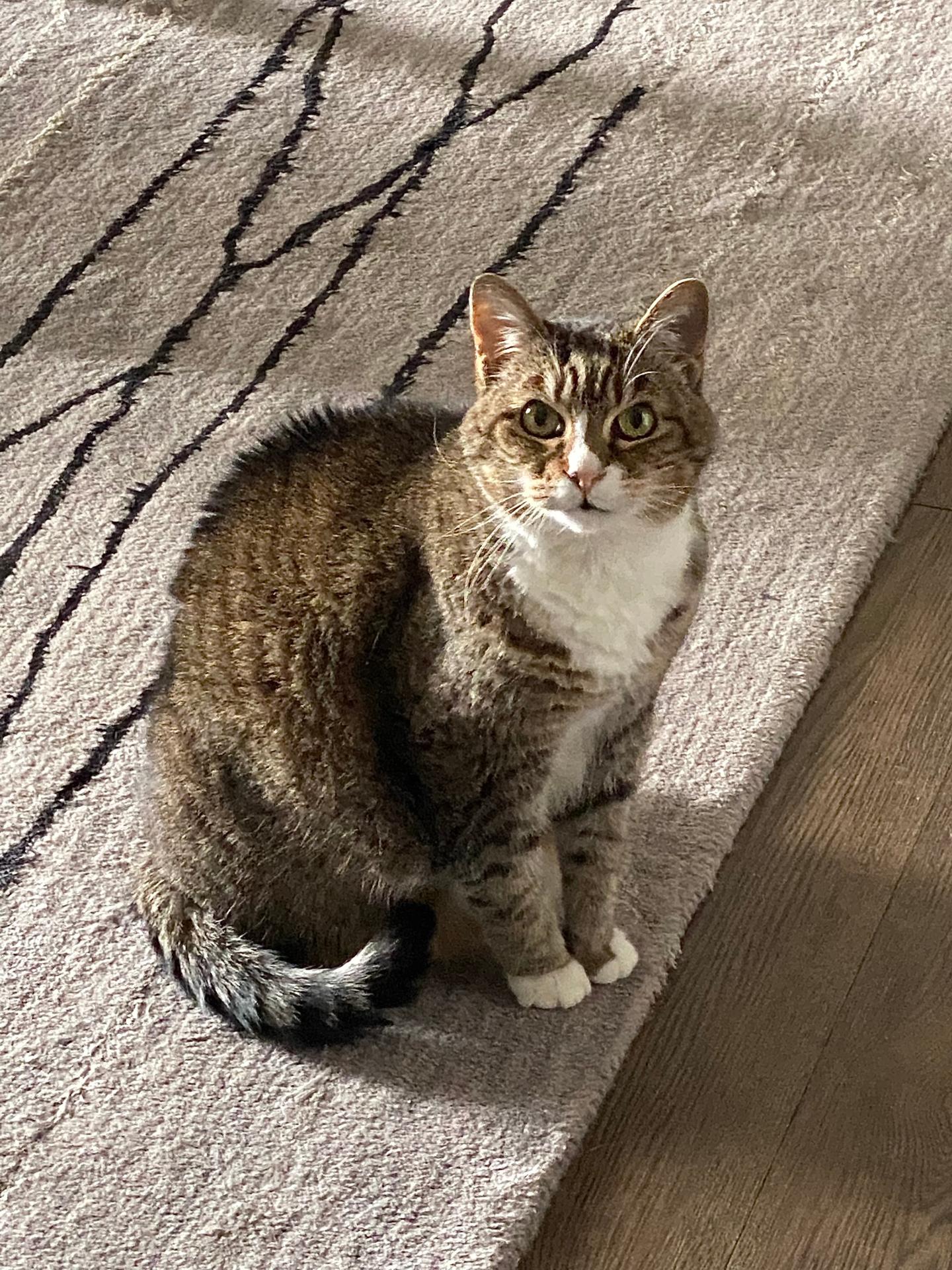 Miss Kitty is an amazing 19-year-old cat! She is a sweet girl that always looks so much younger than her actual years! She was initially diagnosed with signs of deteriorating kidney function several years ago and has handled that pretty well with mild progression over time, but never really “sick” from the kidneys.
Miss Kitty is an amazing 19-year-old cat! She is a sweet girl that always looks so much younger than her actual years! She was initially diagnosed with signs of deteriorating kidney function several years ago and has handled that pretty well with mild progression over time, but never really “sick” from the kidneys.
Over the course of a weekend, she started to act abnormally. She seemed “off” in general and weaker than usual. She wasn’t eating well, not moving around as well, and seemed unable to lift her head upwards like normal.
Miss Kitty came in for an exam and was determined to have neck ventroflexion (where her head and neck drop towards the ground) which can be a common problem in some cats. The most common cause in an older kitty is actually related to the kidney disease and bloodwork confirmed the suspicion. She had a low potassium level.
Low potassium can cause multiple problems, but one visible issue is the inability to lift their head up. Since she wasn’t too sick to need hospitalization, she was started on an oral potassium supplement. Until it was no longer necessary, her owner also made sure she got plenty of food/water via syringe feeding until she seemed stronger and more comfortable, and back to normal.
Thankfully , Miss Kitty responded pretty quickly within the first few days and was back at her normal antics in no time! She now stays on the potassium supplement for long term health, but appears to be tolerating things well and doing wonderfully! For this reason and for her continued graceful aging, Miss Kitty has landed her spot as Animal Hospital of Statesville’s Feline Pet of the Month!
Mina
Canine Pet of the Month - April 2024

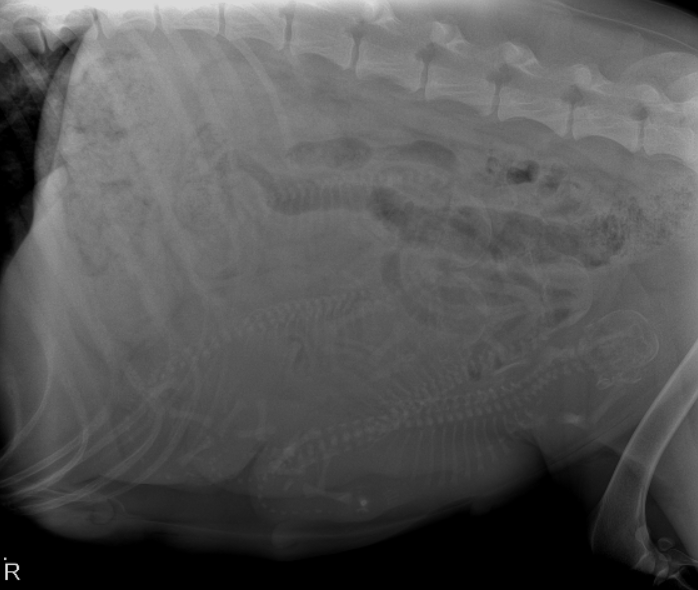 Mina is a 2-year-old Estrela Mountain Dog who came to the Animal Hospital of Statesville for our pre-breeding health screening, and reproductive and neonatal services. Mina is a big deal because this was one of the first gray Estrela Mountain Dog litters in the United States!
Estrela Mountain Dogs are a very rare breed of livestock guardian dogs originating from Portugal and are thought to be the oldest breed from that region. They are also known for their love of children and families. Mina and her brother, Oak, come to their visits complete with business cards, helping to educate about their breed, as well as an Instagram and TikTok (@minaandoaktheemds).
Mina’s family are preservation breeders or breeders who work to prevent a rare breed from extinction. Before breeding Mina, her family came to AHS to complete the recommended health testing for Estrelas, including hip and elbow X-rays. Mina’s PennHIP conformation results came back as one of the best in the breed, which gave her family lots of flexibility in finding a stud to pair with Mina.
Mina was bred via transcervical insemination (TCI). This is a minimally invasive, relatively quick outpatient procedure that does not require sedation. While the girl stands, we pass an endoscope through the vagina to visualize the cervix. Using the camera to guide us, we place a catheter through a small hole in the cervix directly into the uterus. Then, we deposit the semen. This gets the sample closer to the eggs and allows more sperm cells to get where they need to go without having to “swim” as long of a way. With progesterone timing (hormonal blood testing) done at AHS, we were able to pinpoint the best days to breed Mina to ensure the highest chance of getting pregnant. This was especially important since the stud was not local – as you can imagine with a rare breed! The student’s veterinarian collected and shipped a chilled semen sample, which we processed and used for the transcervical insemination the next day.
A month later, we confirmed she was pregnant via an abdominal ultrasound (just like for human mamas!). Throughout her pregnancy and leading up to her due date, we were involved in prenatal care and helping her family learn “what to expect when you’re expecting.” A week before her due date, we took a puppy count X-ray to know how many puppies to expect during whelping (labor). Can you find all four?
Mina was a great mom and had 3 healthy puppies. We enjoyed watching these adorable puppies grow over their first 8 weeks of life and appreciated mom sending photos and TikToks of their shenanigans!
The Animal Hospital of Statesville is proud to support and assist responsible breeders like Mina’s family. We understand the stressors and logistics of navigating preservation breeding and are honored to work together to ensure the health and well-being of mom, dad, and puppies. Plus, we got to snuggle these cute fluff-balls of puppies!
Mina is a 2-year-old Estrela Mountain Dog who came to the Animal Hospital of Statesville for our pre-breeding health screening, and reproductive and neonatal services. Mina is a big deal because this was one of the first gray Estrela Mountain Dog litters in the United States!
Estrela Mountain Dogs are a very rare breed of livestock guardian dogs originating from Portugal and are thought to be the oldest breed from that region. They are also known for their love of children and families. Mina and her brother, Oak, come to their visits complete with business cards, helping to educate about their breed, as well as an Instagram and TikTok (@minaandoaktheemds).
Mina’s family are preservation breeders or breeders who work to prevent a rare breed from extinction. Before breeding Mina, her family came to AHS to complete the recommended health testing for Estrelas, including hip and elbow X-rays. Mina’s PennHIP conformation results came back as one of the best in the breed, which gave her family lots of flexibility in finding a stud to pair with Mina.
Mina was bred via transcervical insemination (TCI). This is a minimally invasive, relatively quick outpatient procedure that does not require sedation. While the girl stands, we pass an endoscope through the vagina to visualize the cervix. Using the camera to guide us, we place a catheter through a small hole in the cervix directly into the uterus. Then, we deposit the semen. This gets the sample closer to the eggs and allows more sperm cells to get where they need to go without having to “swim” as long of a way. With progesterone timing (hormonal blood testing) done at AHS, we were able to pinpoint the best days to breed Mina to ensure the highest chance of getting pregnant. This was especially important since the stud was not local – as you can imagine with a rare breed! The student’s veterinarian collected and shipped a chilled semen sample, which we processed and used for the transcervical insemination the next day.
A month later, we confirmed she was pregnant via an abdominal ultrasound (just like for human mamas!). Throughout her pregnancy and leading up to her due date, we were involved in prenatal care and helping her family learn “what to expect when you’re expecting.” A week before her due date, we took a puppy count X-ray to know how many puppies to expect during whelping (labor). Can you find all four?
Mina was a great mom and had 3 healthy puppies. We enjoyed watching these adorable puppies grow over their first 8 weeks of life and appreciated mom sending photos and TikToks of their shenanigans!
The Animal Hospital of Statesville is proud to support and assist responsible breeders like Mina’s family. We understand the stressors and logistics of navigating preservation breeding and are honored to work together to ensure the health and well-being of mom, dad, and puppies. Plus, we got to snuggle these cute fluff-balls of puppies!
Spazzy
Feline Pet of the Month - April 2024
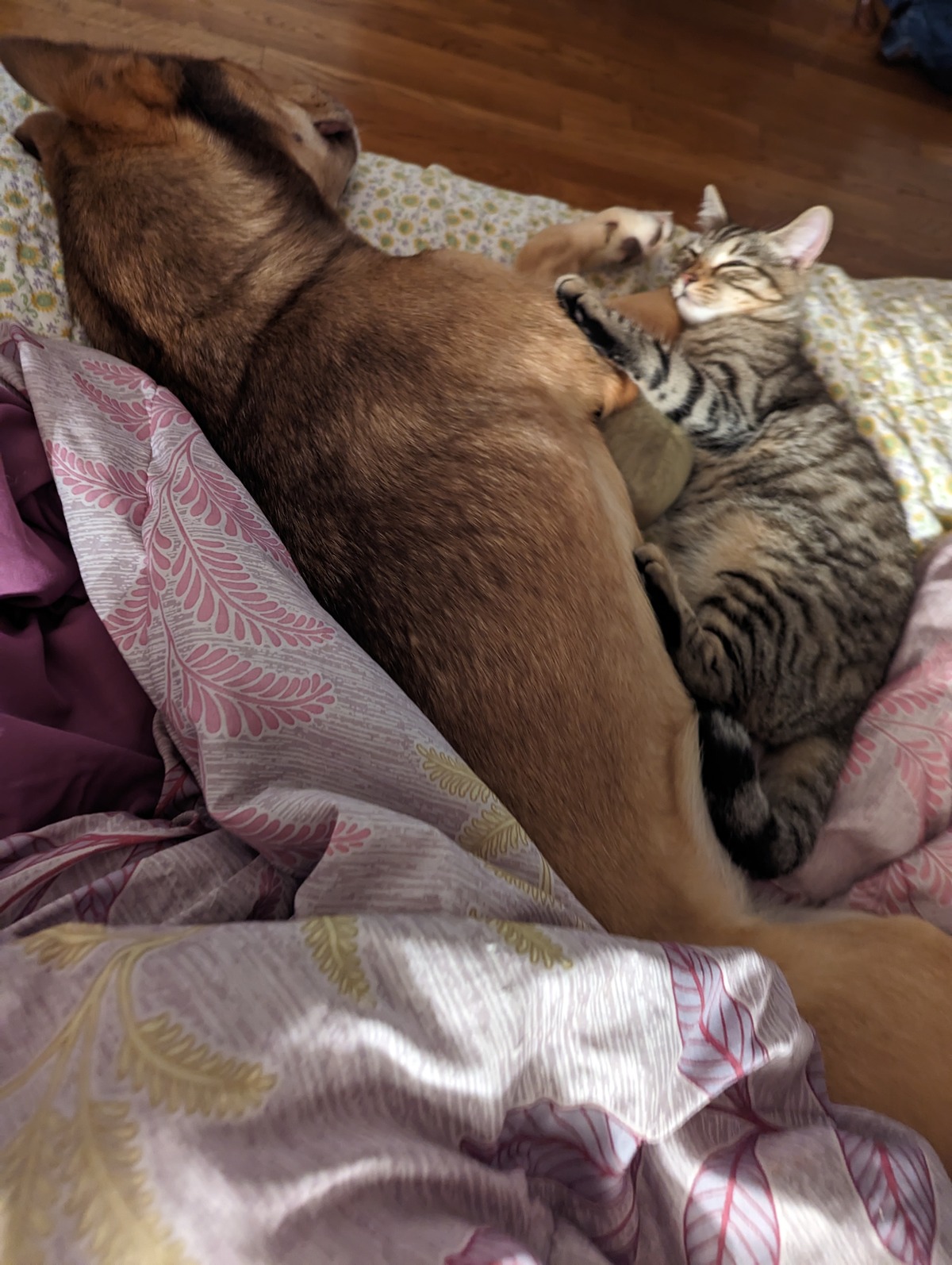 Spazzy is a sweet, 1-year-old kitty. He belongs to one of our veterinary team members. He enjoys living both the indoor and outdoor life as an active kitty! A couple of weeks ago, he did not come home in the evening like usual. His owner was very concerned and continued to search for him. He was found the next day in the neighborhood. He was very lethargic and did not want to eat or drink. Upon exam, we discovered that his kidney values were very elevated, and he was extremely dehydrated. Unfortunately, Spazzy could not tell us what was wrong with him, nor what happened during the time he was missing. We were suspicious he had gotten into something toxic or had possibly had trauma that caused him to be so lethargic. He was hospitalized and given IV fluids and medications to control his nausea. Spazzy responded very well to the treatment and extra TLC he received while here. His kidney values were rechecked in hopes that we would see some improvement. Much to our surprise, his values were completely normal after treatment! Spazzy’s appetite returned, and he is home now and back to being a playful kitty! We were all excited that he has made a full recovery, and named him, AHS’s feline Pet of the Month!
Spazzy is a sweet, 1-year-old kitty. He belongs to one of our veterinary team members. He enjoys living both the indoor and outdoor life as an active kitty! A couple of weeks ago, he did not come home in the evening like usual. His owner was very concerned and continued to search for him. He was found the next day in the neighborhood. He was very lethargic and did not want to eat or drink. Upon exam, we discovered that his kidney values were very elevated, and he was extremely dehydrated. Unfortunately, Spazzy could not tell us what was wrong with him, nor what happened during the time he was missing. We were suspicious he had gotten into something toxic or had possibly had trauma that caused him to be so lethargic. He was hospitalized and given IV fluids and medications to control his nausea. Spazzy responded very well to the treatment and extra TLC he received while here. His kidney values were rechecked in hopes that we would see some improvement. Much to our surprise, his values were completely normal after treatment! Spazzy’s appetite returned, and he is home now and back to being a playful kitty! We were all excited that he has made a full recovery, and named him, AHS’s feline Pet of the Month!
Rocky
Canine Pet of the Month - March 2024
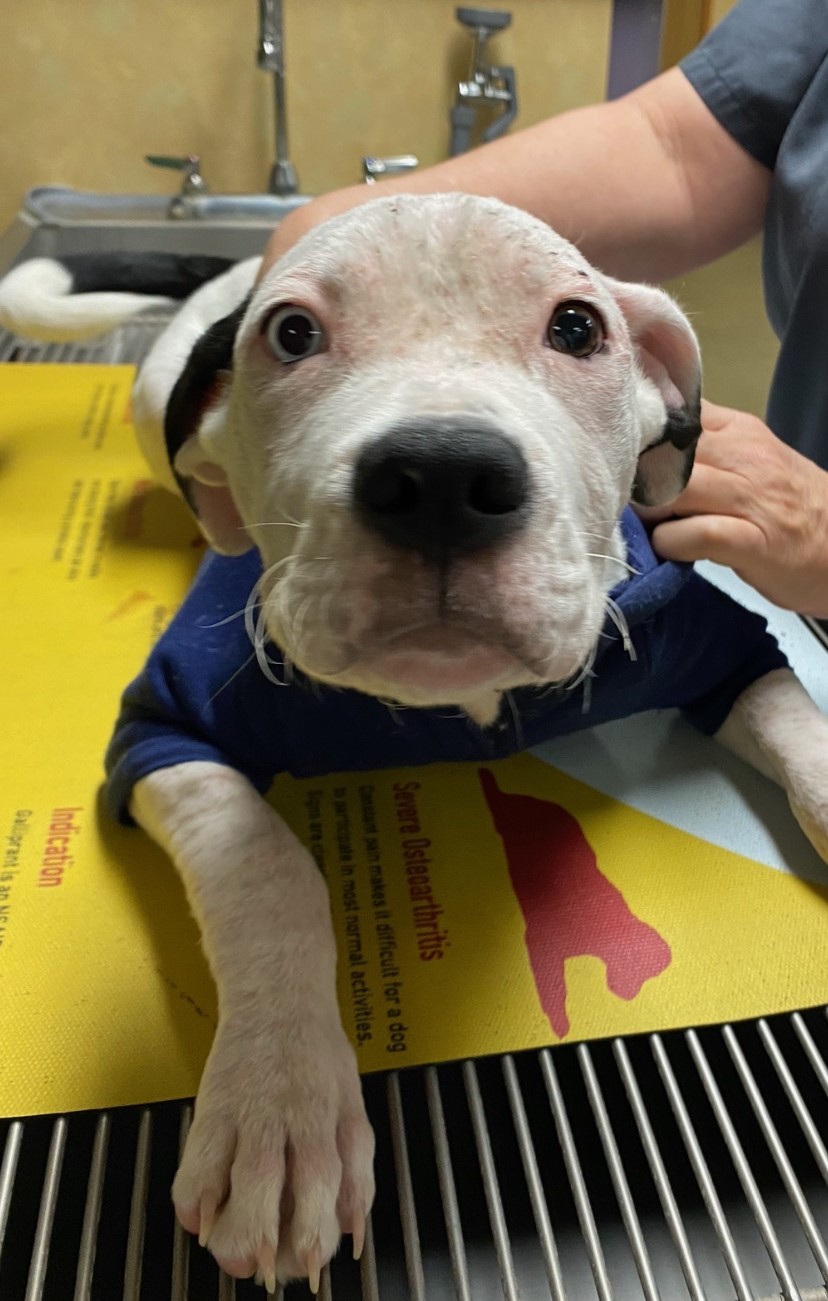
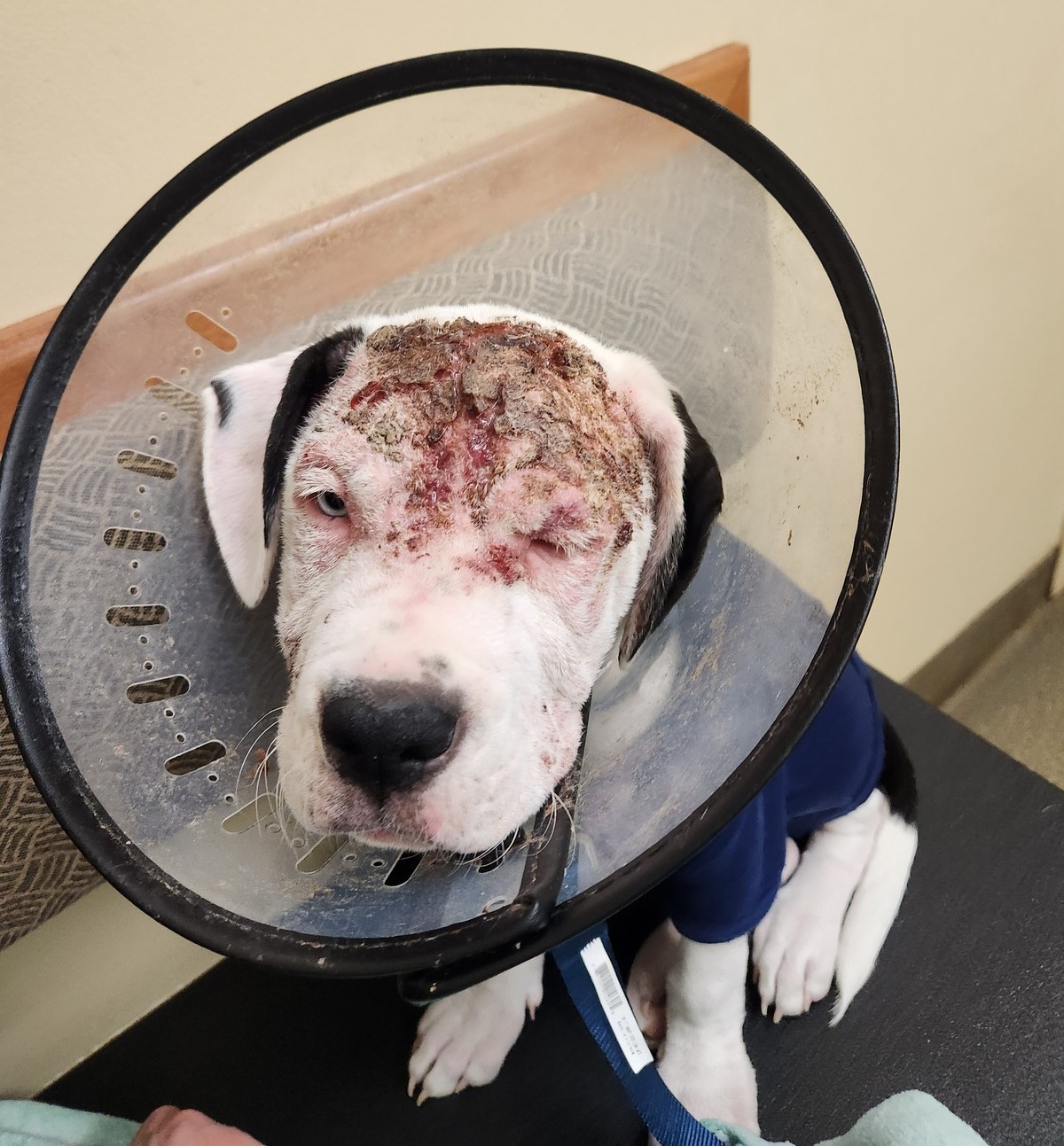
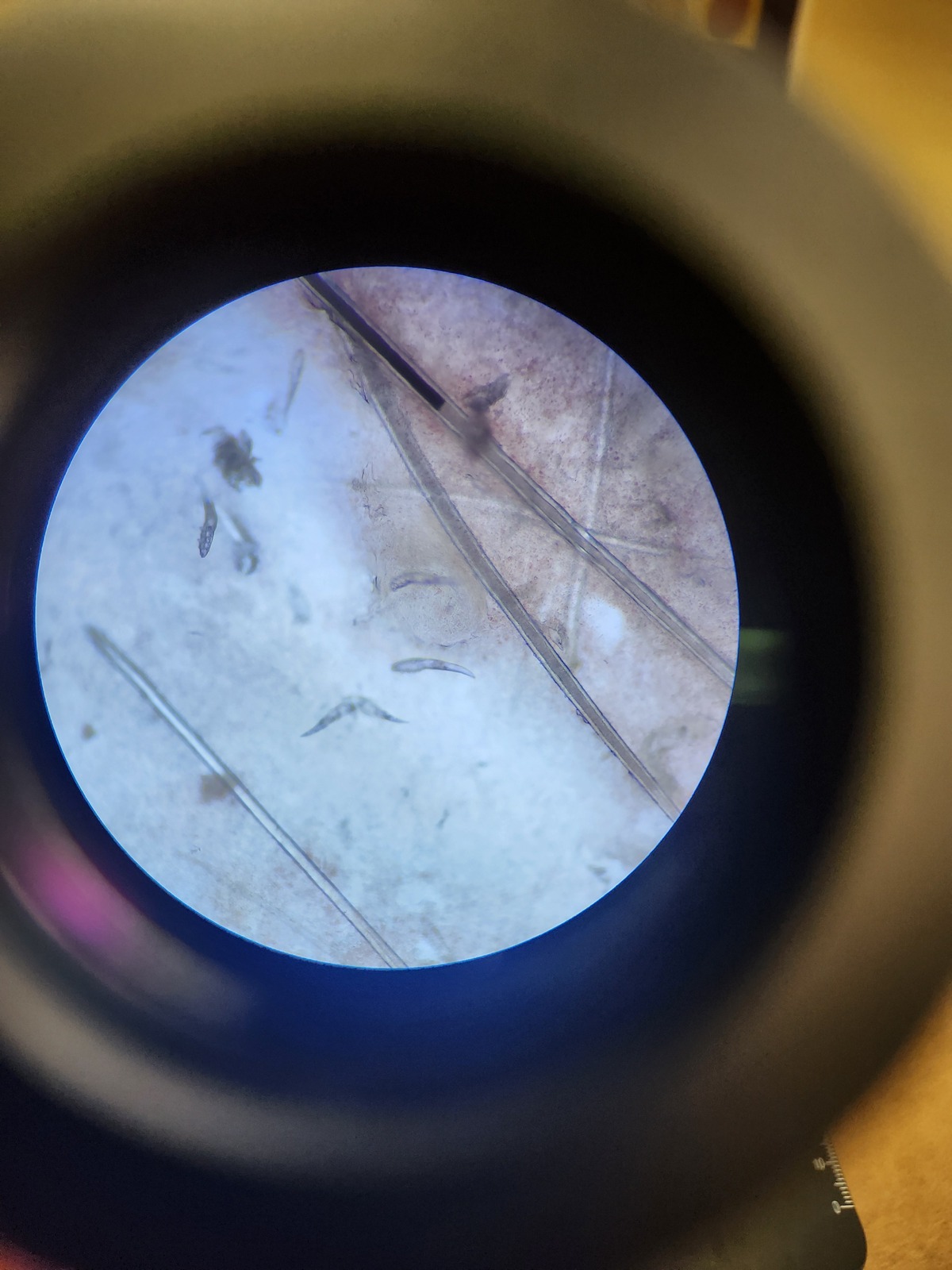 This month's Pet of the Month is Rocky. Rocky is a 15-week-old Pit Bull who came to the Animal Hospital of Statesville for severe itching and head wounds. Rocky's issues started a few days before coming to the Animal Hospital of Statesville and progressively got worse. His skin issues started as a small scratch/scab area on his head/face and quickly progressed, causing vision issues and severe discomfort.
Upon examination of Rocky's skin lesions, some type of parasite was suspected. Typically, skin lesions such as the ones seen on Rocky are caused by what is commonly called mange. At this point, a skin scrape of his lesions was performed, and a diagnosis was quickly identified as demodectic mange. Demodectic mange is caused by a very common organism called demodex. These organisms are a type of mite which is commonly found on the skin but in some cases, especially puppies, these mites can cause severe dermatitis and itching.
Once the cause of Rocky's skin issues was identified he was treated with Simparica, antibiotics and steroids for the severe itching. Simparica is a drug that belongs to a class of drugs called isoxazolines. These drugs were introduced many years ago for ectoparasite prevention in dogs, but it was quickly identified that these drugs are very effective at treating certain skin parasites.
After a few weeks, Rocky came for a follow-up exam and had a few other issues with his skin but was doing much better. About a month after his first visit, Rocky had improved greatly and was feeling much better.
Rocky's case highlights the effectiveness of isoxazoline preventatives in our patients. It is important to start your pet on prevention during their first puppy visits to prevent ectoparasites and other skin issues. This is one great benefit to our Puppy/Kitten Wellness Plans because all prevention is included within the Plan.
If you have any questions about puppy/kitten wellness or our Puppy/Kitten Wellness Plans, please contact the Animal Hospital of Statesville or call to schedule your puppy/kitten for an appointment.
This month's Pet of the Month is Rocky. Rocky is a 15-week-old Pit Bull who came to the Animal Hospital of Statesville for severe itching and head wounds. Rocky's issues started a few days before coming to the Animal Hospital of Statesville and progressively got worse. His skin issues started as a small scratch/scab area on his head/face and quickly progressed, causing vision issues and severe discomfort.
Upon examination of Rocky's skin lesions, some type of parasite was suspected. Typically, skin lesions such as the ones seen on Rocky are caused by what is commonly called mange. At this point, a skin scrape of his lesions was performed, and a diagnosis was quickly identified as demodectic mange. Demodectic mange is caused by a very common organism called demodex. These organisms are a type of mite which is commonly found on the skin but in some cases, especially puppies, these mites can cause severe dermatitis and itching.
Once the cause of Rocky's skin issues was identified he was treated with Simparica, antibiotics and steroids for the severe itching. Simparica is a drug that belongs to a class of drugs called isoxazolines. These drugs were introduced many years ago for ectoparasite prevention in dogs, but it was quickly identified that these drugs are very effective at treating certain skin parasites.
After a few weeks, Rocky came for a follow-up exam and had a few other issues with his skin but was doing much better. About a month after his first visit, Rocky had improved greatly and was feeling much better.
Rocky's case highlights the effectiveness of isoxazoline preventatives in our patients. It is important to start your pet on prevention during their first puppy visits to prevent ectoparasites and other skin issues. This is one great benefit to our Puppy/Kitten Wellness Plans because all prevention is included within the Plan.
If you have any questions about puppy/kitten wellness or our Puppy/Kitten Wellness Plans, please contact the Animal Hospital of Statesville or call to schedule your puppy/kitten for an appointment.
Milo
Feline Pet of the Month - March 2024
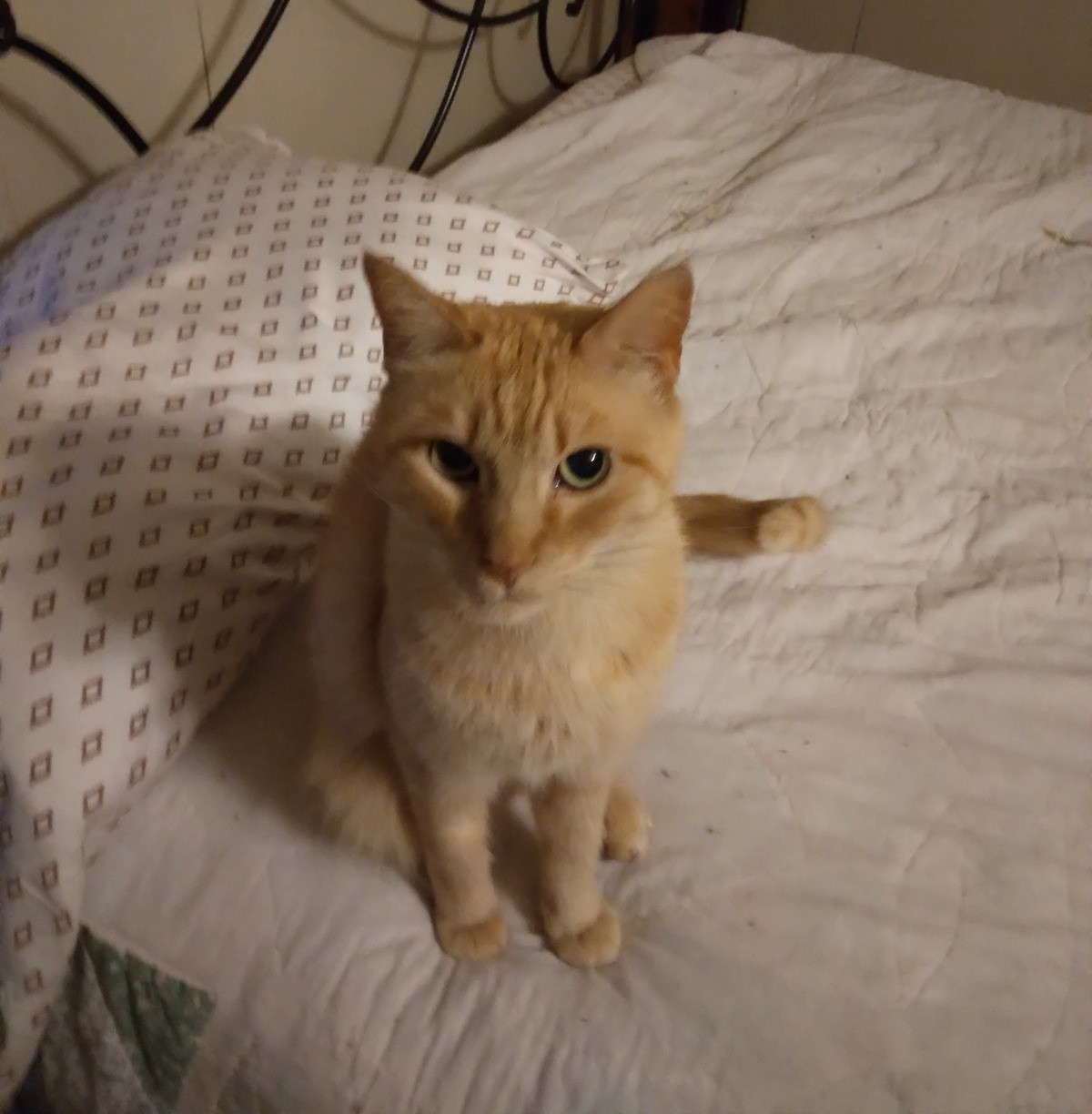 Milo is a handsome senior kitty that came to see us last year for a problem with his foot. There was a wound on his toe on the rear paw. His owners were not sure how he injured it, but it was bleeding and would not heal. Last year he was treated with an antibiotic and an injection for inflammation. He seemed to respond well to the treatment and his toe was almost completely healed on his 2-week follow-up. However, over the past year, the toe started to have problems again. It became raw and would bleed on and off. We saw Milo again this year for the same problem. Due to the chronicity and lack of healing with medication, it was decided that the best way to treat would be to amputate the affected toe and submit a biopsy for histopathology. This would allow us to see the underlying cause. Milo would not wear an e-collar after surgery, so his foot had to be wrapped to keep him from licking his incision. His owners were diligent to limit his activity while his paw healed. The histopathology results indicated the wound was due to a type of cancer called hemangiosarcoma. We were able to remove the cancer with surgery. He has thrived since the surgery and no longer needs to have his foot wrapped. Milo was a trooper through all his visits and usually seemed happy to see us!
Milo is a handsome senior kitty that came to see us last year for a problem with his foot. There was a wound on his toe on the rear paw. His owners were not sure how he injured it, but it was bleeding and would not heal. Last year he was treated with an antibiotic and an injection for inflammation. He seemed to respond well to the treatment and his toe was almost completely healed on his 2-week follow-up. However, over the past year, the toe started to have problems again. It became raw and would bleed on and off. We saw Milo again this year for the same problem. Due to the chronicity and lack of healing with medication, it was decided that the best way to treat would be to amputate the affected toe and submit a biopsy for histopathology. This would allow us to see the underlying cause. Milo would not wear an e-collar after surgery, so his foot had to be wrapped to keep him from licking his incision. His owners were diligent to limit his activity while his paw healed. The histopathology results indicated the wound was due to a type of cancer called hemangiosarcoma. We were able to remove the cancer with surgery. He has thrived since the surgery and no longer needs to have his foot wrapped. Milo was a trooper through all his visits and usually seemed happy to see us!
Rudy
Canine Pet of the Month - February 2024
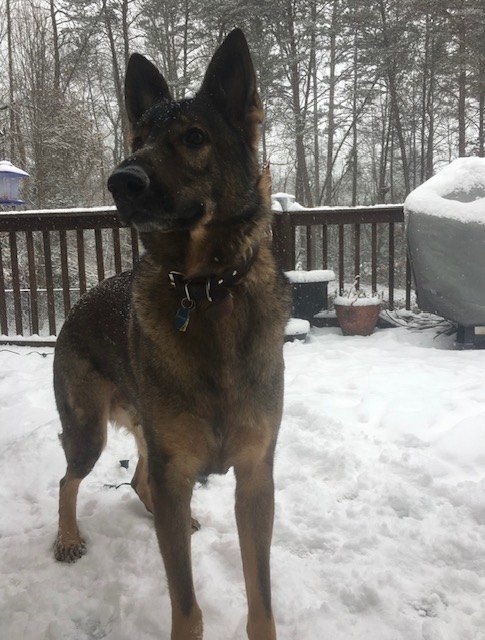 Although puppies and kittens may be adorable, we love our senior pets at the Animal Hospital of Statesville and find it so rewarding to help them and their families. Our Canine Pet of the Month is Rudy, the sweetest 10-year-old German Shepherd you’ll meet. Weighing in at just about 100 lbs, he almost looks like a bear. Like many of our grey muzzled big dogs, mobility has been our biggest conversation as Rudy has gotten older.
When he was younger, Rudy was diagnosed with hip dysplasia, a malformation of the hip joints that ranges in severity. He had been on anti-inflammatory medications for several years since this condition increases the risk of hip arthritis with time. In January 2021, Rudy came for his semi-annual wellness visit and his mom mentioned he’d been growling and snapping at nothing at home and seemed to be turning into a “grouchy old man” at times. Just like with older people, chronic pain, such as arthritis, can make you grumpy. We had a conversation about possible reasons for the behavior change and chose a pain medication trial to rule out pain as a possible cause. Sure enough, adjusting his pain medications fixed the problem! Rudy seemed much more comfortable and like his old self again.
Over the next two years, Rudy maintained his mobility on three daily pain medications and regular joint supplements. But by January 2023, Rudy’s mobility was worsening, and all the pain medication options were at their max doses. We discussed alternative therapies, like Adequan, therapeutic laser, physical rehabilitation, etc. With radiographs (x-rays), we confirmed Rudy to have arthritis in his lumbar spine and hips. We suspect Rudy was also developing a progressive neurologic disease common in older German Shepherds called Degenerative Myelopathy, which causes loss of function and ability to walk with his hind end with time. Between his neurologic deficits and worsening hips, Rudy’s mobility was declining to the point of needing a wheelchair.
In fall of 2023, Zoetis released an FDA-approved product called Librela to help control pain associated with osteoarthritis (arthritis). Librela is a once-monthly injectable antibody therapy (given like a vaccine) that binds the protein leading to worsening joint pain in dogs. By binding this protein, Librela effectively “blocks” the pain a pet feels from arthritis. Librela will not reverse arthritis, but it will control pain for a month until the next dose is due. Best of all, because Librela is an antibody therapy, it does not rely on the kidney or liver for metabolism and does not have any short- or long-term effects on the body. Since many of our other pharmaceutical options can stress the liver and kidneys, Librela is unique in that it is safer than many of our other arthritis pain management options and opens the door for better pain control in pets with liver and kidney concerns.
At Rudy’s annual exam in October, we discussed his mobility. Although quality of life was still reasonable at this point, likely we’d be having a conversation before too long since he was struggling. We decided to start Rudy on a trial of Librela. Within a week, Rudy’s mom witnessed him RUNNING in the backyard!! Talk about a full 180!
Rudy has gotten around much better since starting the Librela. He is heading towards his 5th injection and continuing to do well. Because Rudy is a big boy with mobility concerns, he stays in the car while a technician goes to him for his monthly Librela injections. We have loved seeing the comfort Rudy has gotten from Librela and his improved quality of life – plus these quick monthly visits give us extra chances to spoil him! Rudy is so fortunate to have such a devoted and attentive mom as he navigates his senior years!
We love being a part of you and your pet’s journey from puppy to adulthood to senior and are always available to discuss your concerns as your pet ages.
Although puppies and kittens may be adorable, we love our senior pets at the Animal Hospital of Statesville and find it so rewarding to help them and their families. Our Canine Pet of the Month is Rudy, the sweetest 10-year-old German Shepherd you’ll meet. Weighing in at just about 100 lbs, he almost looks like a bear. Like many of our grey muzzled big dogs, mobility has been our biggest conversation as Rudy has gotten older.
When he was younger, Rudy was diagnosed with hip dysplasia, a malformation of the hip joints that ranges in severity. He had been on anti-inflammatory medications for several years since this condition increases the risk of hip arthritis with time. In January 2021, Rudy came for his semi-annual wellness visit and his mom mentioned he’d been growling and snapping at nothing at home and seemed to be turning into a “grouchy old man” at times. Just like with older people, chronic pain, such as arthritis, can make you grumpy. We had a conversation about possible reasons for the behavior change and chose a pain medication trial to rule out pain as a possible cause. Sure enough, adjusting his pain medications fixed the problem! Rudy seemed much more comfortable and like his old self again.
Over the next two years, Rudy maintained his mobility on three daily pain medications and regular joint supplements. But by January 2023, Rudy’s mobility was worsening, and all the pain medication options were at their max doses. We discussed alternative therapies, like Adequan, therapeutic laser, physical rehabilitation, etc. With radiographs (x-rays), we confirmed Rudy to have arthritis in his lumbar spine and hips. We suspect Rudy was also developing a progressive neurologic disease common in older German Shepherds called Degenerative Myelopathy, which causes loss of function and ability to walk with his hind end with time. Between his neurologic deficits and worsening hips, Rudy’s mobility was declining to the point of needing a wheelchair.
In fall of 2023, Zoetis released an FDA-approved product called Librela to help control pain associated with osteoarthritis (arthritis). Librela is a once-monthly injectable antibody therapy (given like a vaccine) that binds the protein leading to worsening joint pain in dogs. By binding this protein, Librela effectively “blocks” the pain a pet feels from arthritis. Librela will not reverse arthritis, but it will control pain for a month until the next dose is due. Best of all, because Librela is an antibody therapy, it does not rely on the kidney or liver for metabolism and does not have any short- or long-term effects on the body. Since many of our other pharmaceutical options can stress the liver and kidneys, Librela is unique in that it is safer than many of our other arthritis pain management options and opens the door for better pain control in pets with liver and kidney concerns.
At Rudy’s annual exam in October, we discussed his mobility. Although quality of life was still reasonable at this point, likely we’d be having a conversation before too long since he was struggling. We decided to start Rudy on a trial of Librela. Within a week, Rudy’s mom witnessed him RUNNING in the backyard!! Talk about a full 180!
Rudy has gotten around much better since starting the Librela. He is heading towards his 5th injection and continuing to do well. Because Rudy is a big boy with mobility concerns, he stays in the car while a technician goes to him for his monthly Librela injections. We have loved seeing the comfort Rudy has gotten from Librela and his improved quality of life – plus these quick monthly visits give us extra chances to spoil him! Rudy is so fortunate to have such a devoted and attentive mom as he navigates his senior years!
We love being a part of you and your pet’s journey from puppy to adulthood to senior and are always available to discuss your concerns as your pet ages.
Tiny
Feline Pet of the Month - February 2024
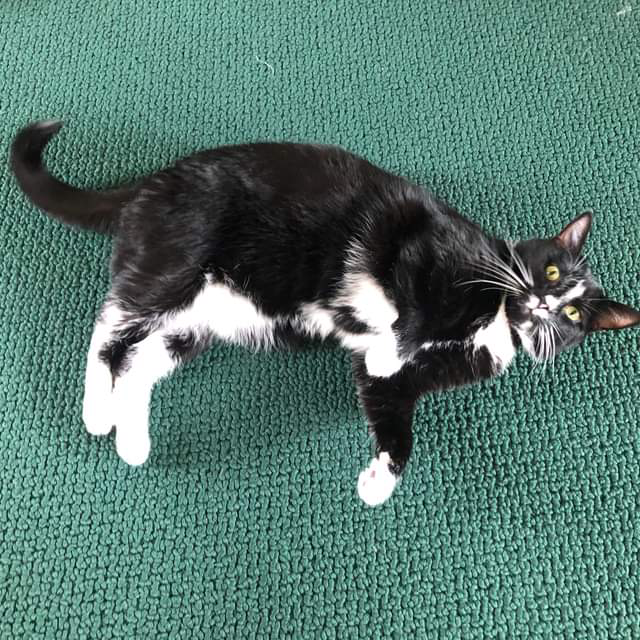 Tiny is a 6-year-old neutered male cat. He was rescued as a kitten from the shelter. Tiny has always been an anxious kitty and started at a young age mutilating his tail. Hyperesthesia syndrome was suspected. This is a poorly- understood condition in cats that often has multiple underlying factors. The
The skin on the back and tail of the affected cat is very sensitive. It is either painful or severely itchy. There can be an anxiety component, a spinal pain component and an allergy component. Tiny’s owners are diligent about keeping him on flea control and he is housed alone as other cats tend to worsen his anxiety. Tiny was started on a combination of anxiety medication, corticosteroids for itch and gabapentin for nerve-related pain and antibiotics as needed. Tiny did not improve much and would mutilate his tail so severely that amputation would have to be considered due to the damage. A new pain injection has come on the market called Solensia. It consists of monoclonal antibodies against nerve growth factor that are injected under the skin for arthritis pain in cats. Nerve growth factor is an important component of arthritis pain, but hyperesthesia pain is unknown. As a last resort, Tiny’s owners were interested in trying it for this issue extra-label, as it is very safe. The injections are monthly. After 2 injections, Tiny’s tail was starting to improve, and Tiny was not chewing it as much. Now the tail is completely healed and Tiny gets a monthly injection to maintain his nerve pain. We were very glad Tiny responded to this novel therapy and his quality of life is much better. That is why he is AHS feline Pet of the Month!
Tiny is a 6-year-old neutered male cat. He was rescued as a kitten from the shelter. Tiny has always been an anxious kitty and started at a young age mutilating his tail. Hyperesthesia syndrome was suspected. This is a poorly- understood condition in cats that often has multiple underlying factors. The
The skin on the back and tail of the affected cat is very sensitive. It is either painful or severely itchy. There can be an anxiety component, a spinal pain component and an allergy component. Tiny’s owners are diligent about keeping him on flea control and he is housed alone as other cats tend to worsen his anxiety. Tiny was started on a combination of anxiety medication, corticosteroids for itch and gabapentin for nerve-related pain and antibiotics as needed. Tiny did not improve much and would mutilate his tail so severely that amputation would have to be considered due to the damage. A new pain injection has come on the market called Solensia. It consists of monoclonal antibodies against nerve growth factor that are injected under the skin for arthritis pain in cats. Nerve growth factor is an important component of arthritis pain, but hyperesthesia pain is unknown. As a last resort, Tiny’s owners were interested in trying it for this issue extra-label, as it is very safe. The injections are monthly. After 2 injections, Tiny’s tail was starting to improve, and Tiny was not chewing it as much. Now the tail is completely healed and Tiny gets a monthly injection to maintain his nerve pain. We were very glad Tiny responded to this novel therapy and his quality of life is much better. That is why he is AHS feline Pet of the Month!
Hermione
Canine Pet of the Month - January 2024
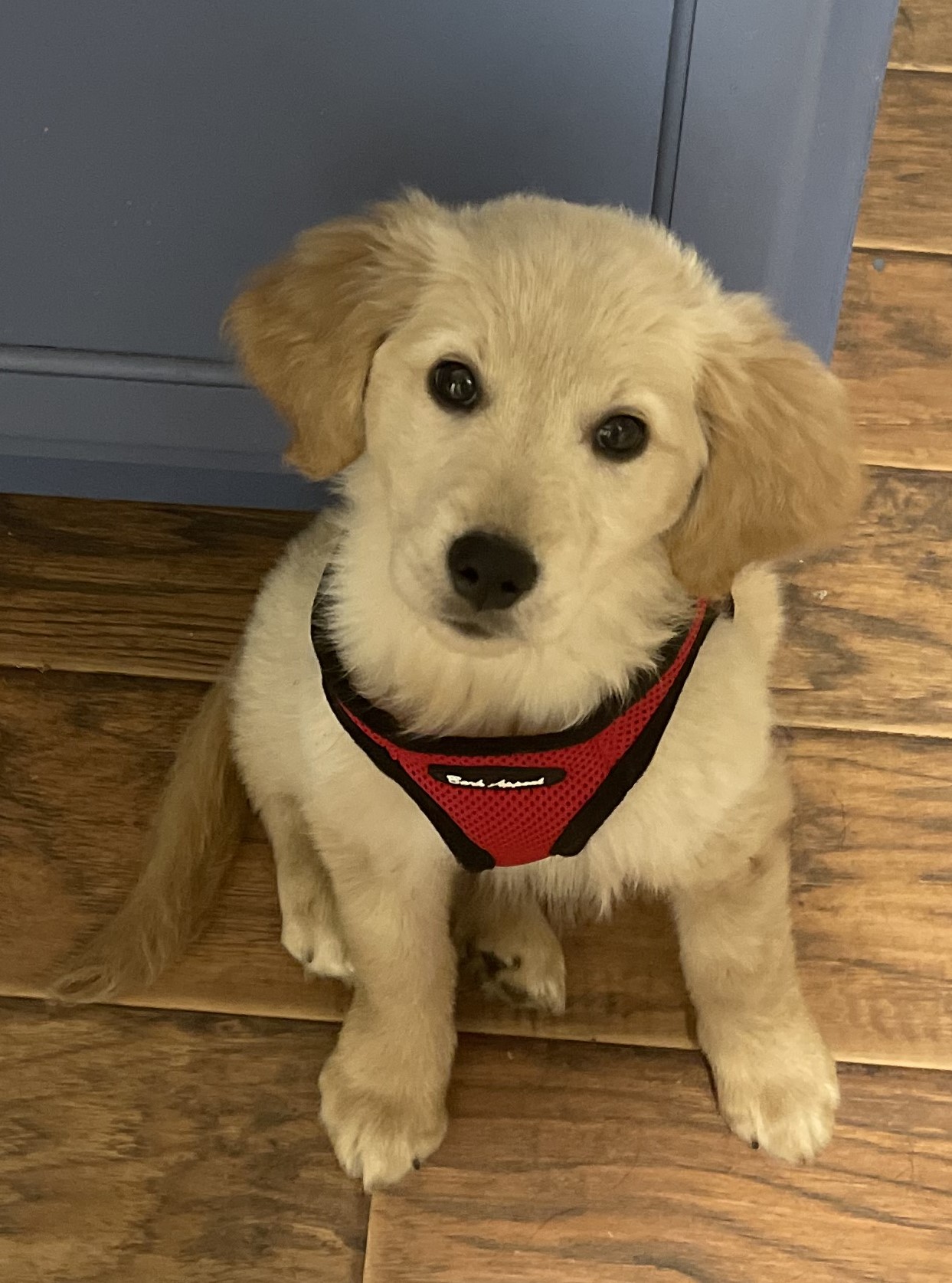 Hermione (named for the Harry Potter series heroine, Hermione Granger) came to us as a very sick 9-week-old puppy. Her family had been seeing roundworms passing the past few days and brought her in because she started having profuse water diarrhea, acting very lethargic and vomiting. A Parvovirus test was positive. Her white cell count was completely depleted, which showed she was losing the battle with this virus and if often an indicator of a poor prognosis.
Her mom elected hospitalization and aggressive care. She wouldn’t have survived otherwise. A game-change in her battle was likely the new Canine Parvovirus Monoclonal Antibody product from Elanco. A single IV injection helps dogs fight this deadly virus. Hermione was the first pup at AHS to receive this new treatment.
Hermione also had a very heavy case of roundworms and was given medication to deworm her. Intestinal parasites make gastrointestinal (GI) issues worse, and such energy from the pet.
Pets with parvo often do not want to eat. A drop in Hermione’s blood sugar caused her to have a small seizure. We needed to add dextrose to her fluid bag to help her manage her blood sugar and fed her a critical care diet for more blood sugar control. She also received 2 injectable antibiotics daily to prevent sepsis.
In short (see detailed report on Hermione’s case on our website) by day 4, she seemed to have a bit more energy and interacted with our staff. On day 6, Hermione ate an entire bowl of food herself! We were all so excited for her and celebrated her progress. After a week of treatment, Hermione was discharged and is now enjoying puppyhood with her new family!
Without the dedication of her new mom, Hermione would not have made it. Her care, compassion and determination gave Hermione a new chance at life! We look forward to watching her grow!
Hermione (named for the Harry Potter series heroine, Hermione Granger) came to us as a very sick 9-week-old puppy. Her family had been seeing roundworms passing the past few days and brought her in because she started having profuse water diarrhea, acting very lethargic and vomiting. A Parvovirus test was positive. Her white cell count was completely depleted, which showed she was losing the battle with this virus and if often an indicator of a poor prognosis.
Her mom elected hospitalization and aggressive care. She wouldn’t have survived otherwise. A game-change in her battle was likely the new Canine Parvovirus Monoclonal Antibody product from Elanco. A single IV injection helps dogs fight this deadly virus. Hermione was the first pup at AHS to receive this new treatment.
Hermione also had a very heavy case of roundworms and was given medication to deworm her. Intestinal parasites make gastrointestinal (GI) issues worse, and such energy from the pet.
Pets with parvo often do not want to eat. A drop in Hermione’s blood sugar caused her to have a small seizure. We needed to add dextrose to her fluid bag to help her manage her blood sugar and fed her a critical care diet for more blood sugar control. She also received 2 injectable antibiotics daily to prevent sepsis.
In short (see detailed report on Hermione’s case on our website) by day 4, she seemed to have a bit more energy and interacted with our staff. On day 6, Hermione ate an entire bowl of food herself! We were all so excited for her and celebrated her progress. After a week of treatment, Hermione was discharged and is now enjoying puppyhood with her new family!
Without the dedication of her new mom, Hermione would not have made it. Her care, compassion and determination gave Hermione a new chance at life! We look forward to watching her grow!
Tinkerbell
Feline Pet of the Month - January 2024
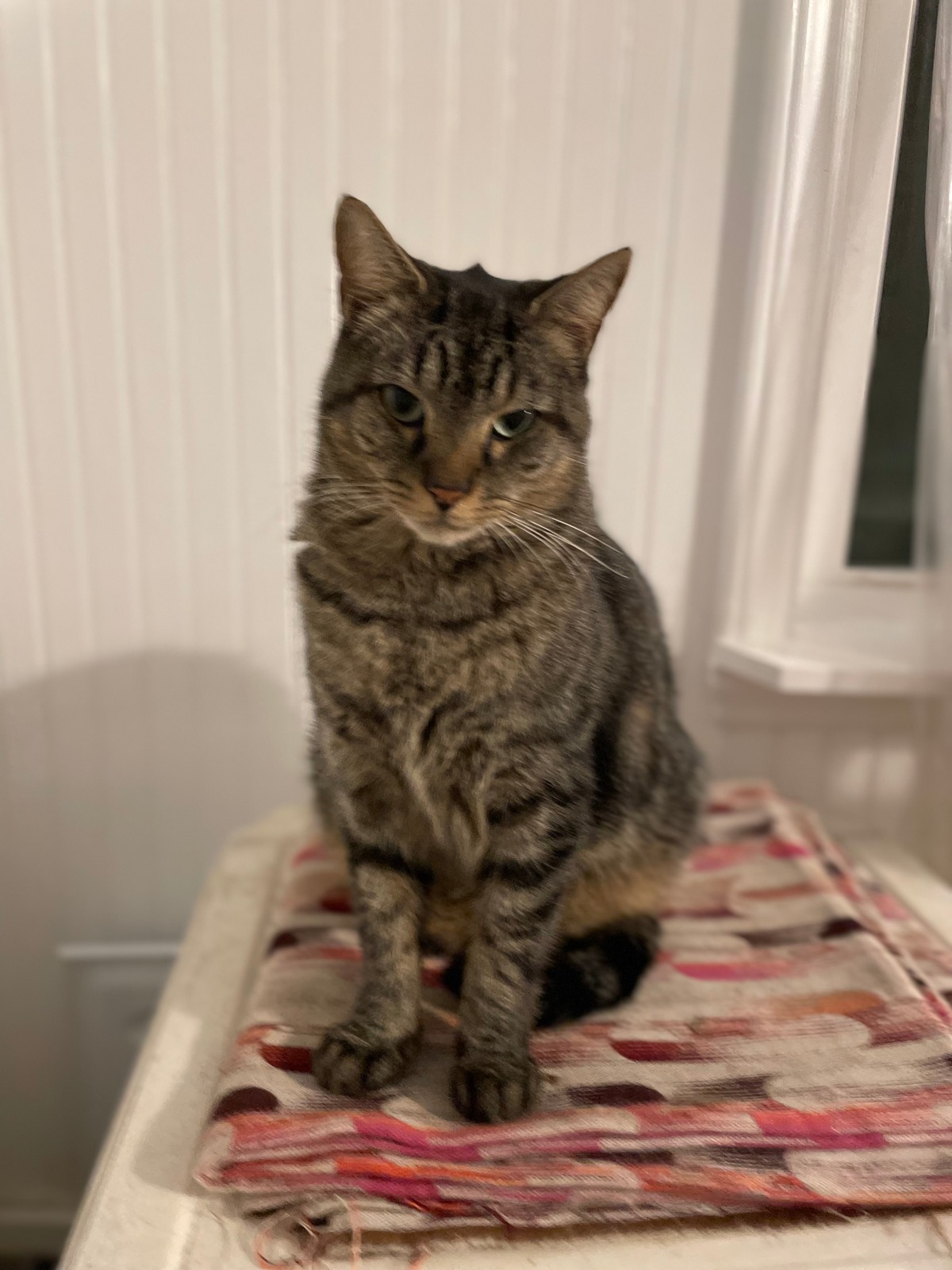 Tinkerbell is a spry, 2-year-old kitty. He had a wound on his neck and between his toes on his right front foot. These wounds were likely caused by a bite from another cat. He was initially treated with an antibiotic and pain/anti-inflammatory medication. The wound on his neck healed but the one on the foot progressed. More antibiotics and stronger pain medications were given. A radiograph was taken to make sure he had not fractured his paw and he had not. It was just a very deep wound that did not want to heal. It was bad enough that we were concerned he may have to have an amputation because he would not use his leg. We started K-laser therapy which consisted of six treatments of a class IV cold laser that promotes healing. The K-laser works by reducing pain and inflammation, and by stimulating blood flow. Between the stronger antibiotic and the K-laser treatments, we started to see positive results. Tinkerbell started to use his leg more and the wound was healing! Tinkerbell is a tough kitty and his owners helped him make a full recovery! This is why we chose Tinkerbell as our January Pet of the Month.
Tinkerbell is a spry, 2-year-old kitty. He had a wound on his neck and between his toes on his right front foot. These wounds were likely caused by a bite from another cat. He was initially treated with an antibiotic and pain/anti-inflammatory medication. The wound on his neck healed but the one on the foot progressed. More antibiotics and stronger pain medications were given. A radiograph was taken to make sure he had not fractured his paw and he had not. It was just a very deep wound that did not want to heal. It was bad enough that we were concerned he may have to have an amputation because he would not use his leg. We started K-laser therapy which consisted of six treatments of a class IV cold laser that promotes healing. The K-laser works by reducing pain and inflammation, and by stimulating blood flow. Between the stronger antibiotic and the K-laser treatments, we started to see positive results. Tinkerbell started to use his leg more and the wound was healing! Tinkerbell is a tough kitty and his owners helped him make a full recovery! This is why we chose Tinkerbell as our January Pet of the Month.
Lexi
Canine Pet of the Month - December 2023
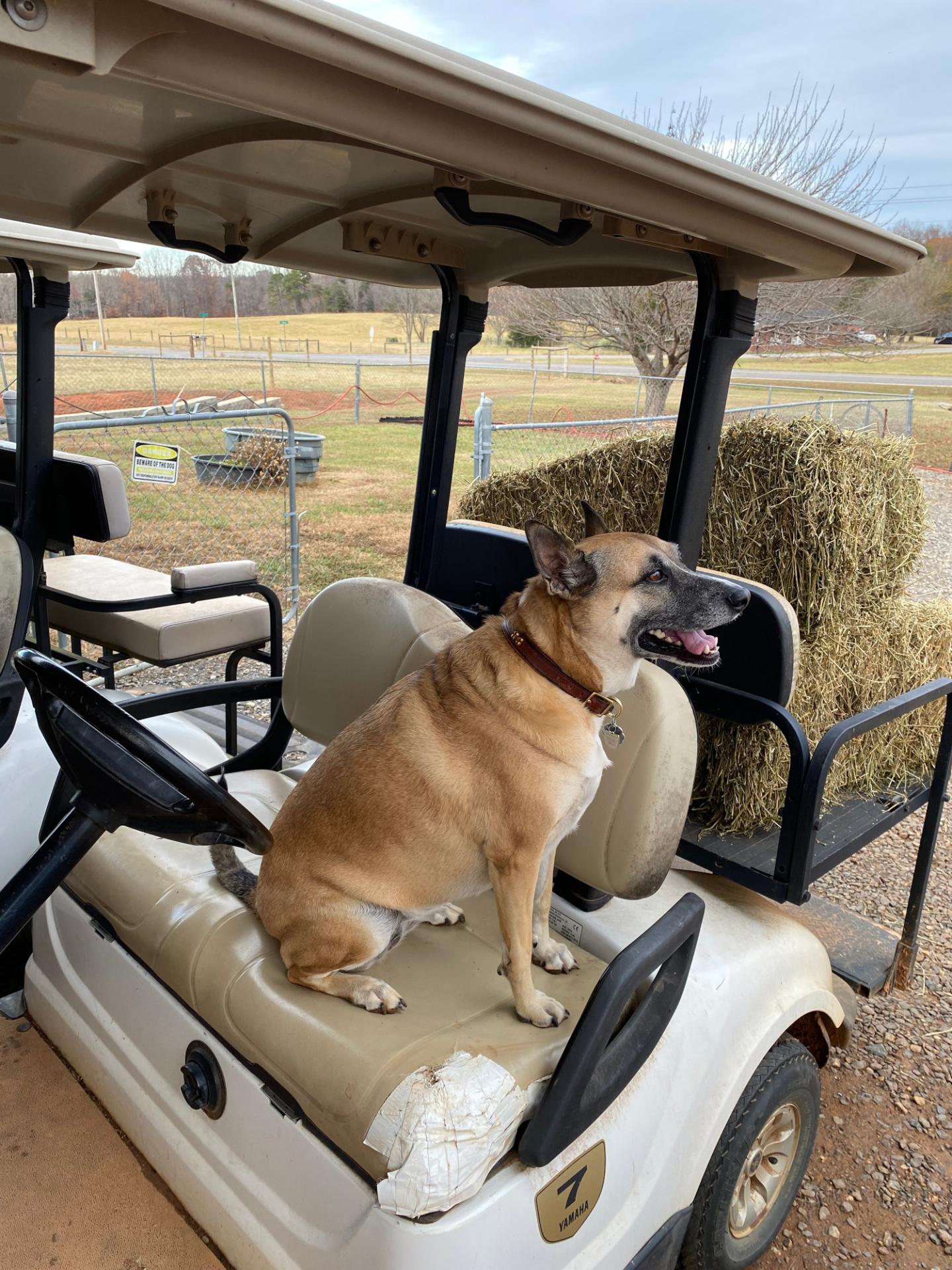 Lexi is a 6-year-old spayed female Shepherd-type mix dog that roams and guards a horse property. When she was two years old her owner noticed a slight reluctance to jump during her agility training. On Lexi’s annual we took hip and stifle (or knee) radiographs (x rays) and noted excellent hip conformation with some subtle osteoarthritis evidence in her knees. This can be related to genetics in addition to stifle conformation of the individual dog. Lexi was started on K-laser or cold laser therapy in addition to Adequan injections. The k-laser is light therapy. When administered to the affected joint the inflammation and pain are reduced. This is best used as a routine maintenance once several treatments have been done. Adequan (glycosaminoglycan) is a component of articular cartilage and preserves
cartilage, reduces inflammation and cartilage degradation, and may play a role in cartilage repair. This is an injection given under the skin usually once to twice monthly after a loading period of treatments.
Lexi is a 6-year-old spayed female Shepherd-type mix dog that roams and guards a horse property. When she was two years old her owner noticed a slight reluctance to jump during her agility training. On Lexi’s annual we took hip and stifle (or knee) radiographs (x rays) and noted excellent hip conformation with some subtle osteoarthritis evidence in her knees. This can be related to genetics in addition to stifle conformation of the individual dog. Lexi was started on K-laser or cold laser therapy in addition to Adequan injections. The k-laser is light therapy. When administered to the affected joint the inflammation and pain are reduced. This is best used as a routine maintenance once several treatments have been done. Adequan (glycosaminoglycan) is a component of articular cartilage and preserves
cartilage, reduces inflammation and cartilage degradation, and may play a role in cartilage repair. This is an injection given under the skin usually once to twice monthly after a loading period of treatments.
After 3 years, Lexi had some X-rays for another issue, but her knees were imaged as well. She had no further osteoarthritis progression years later. Lexi is a great example of how the value of starting osteoarthritis therapy early in the course may result in longer pain-free times in an animal’s life. K-laser and Adequan are safe and may preclude the need, at least for a while, for chronic medications such as non-steroidal anti-inflammatory medications that need monitoring and are metabolized by the liver and kidneys. Osteoarthritis always eventually progresses, but early treatment is very beneficial as well as weight control. Lexi is a great example of this and hopefully she will be romping comfortably around her farm for many years to come.
Milly
Feline Pet of the Month - December 2023
<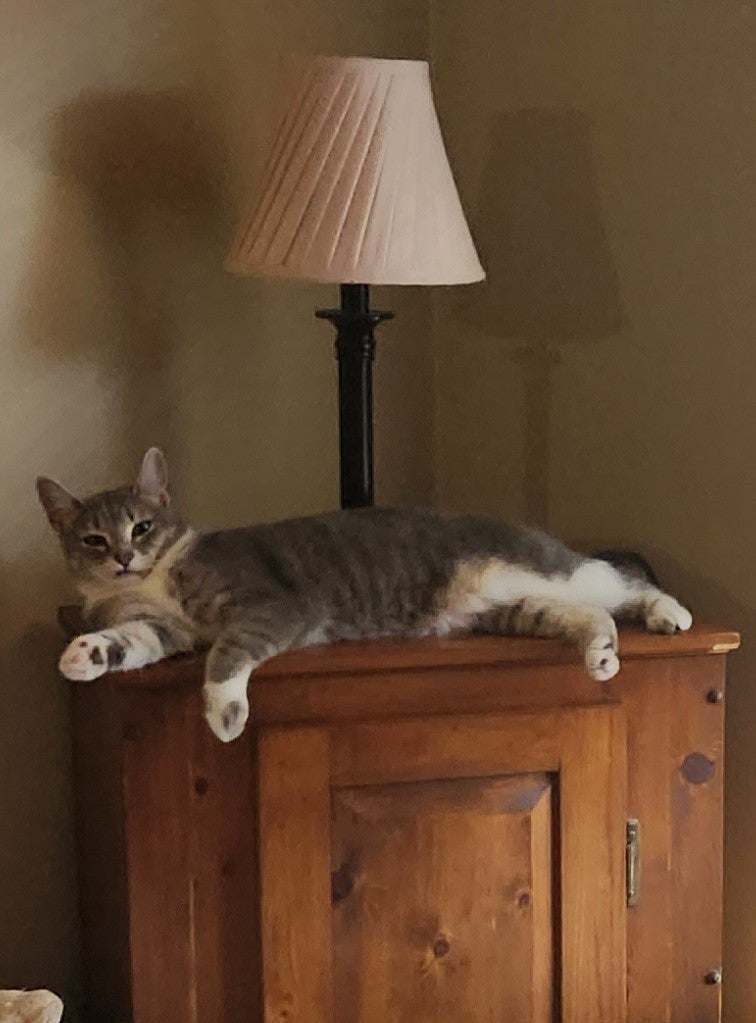 Milly is a cute kitten who just turned a year old. She presented to us last winter after being adopted from a shelter. She had been Leukemia/FIV tested negative, had been spayed and had received her first set of vaccines. Her first physical exam with us was totally normal other than the finding that she did not have any teeth in the area of either upper canine tooth. We suspected that they had just not erupted, but at her booster vaccine visit 4 weeks later, the teeth were still not present. Missing teeth are occasionally noted in dogs. Most of the time they are the upper or lower premolar teeth. Missing canine teeth in a canine are very unusual. Missing canine teeth in a cat are VERY rare. The concern with any missing teeth is that frequently, the teeth are not missing. Rather, the problem is that the teeth are unerupted. Unerupted teeth frequently cause dentigerous cysts to form. These cysts slowly grow and enlarge. As they enlarge, they put pressure on the surrounding jaw bone, causing the bone to die. In severe causes they can cause jaw fracture. The earlier they are identified, the better the outcome. They must be surgically removed, being careful to remove all of the cystic material, or they will recur.
Milly is a cute kitten who just turned a year old. She presented to us last winter after being adopted from a shelter. She had been Leukemia/FIV tested negative, had been spayed and had received her first set of vaccines. Her first physical exam with us was totally normal other than the finding that she did not have any teeth in the area of either upper canine tooth. We suspected that they had just not erupted, but at her booster vaccine visit 4 weeks later, the teeth were still not present. Missing teeth are occasionally noted in dogs. Most of the time they are the upper or lower premolar teeth. Missing canine teeth in a canine are very unusual. Missing canine teeth in a cat are VERY rare. The concern with any missing teeth is that frequently, the teeth are not missing. Rather, the problem is that the teeth are unerupted. Unerupted teeth frequently cause dentigerous cysts to form. These cysts slowly grow and enlarge. As they enlarge, they put pressure on the surrounding jaw bone, causing the bone to die. In severe causes they can cause jaw fracture. The earlier they are identified, the better the outcome. They must be surgically removed, being careful to remove all of the cystic material, or they will recur.
Oral X-rays are required to determine if the teeth are missing or retained. Ideally, if the teeth were missing, this would have been done when Milly was spayed. Since it was not, we sedated Milly and dental X-rays were obtained of the areas where the teeth were missing. Fortunately/unfortunately for Milly, she never developed her adult canine teeth. This meant that the dentigerous cyst was not of concern, but she will never have her adult canine teeth. The good thing is that Milly doesn’t know she’s missing her canine teeth, and we chose not to tell her! Because of her unusual finding, Milly is AHS’s feline Pet of the Month.
Athena
Canine Pet of the Month - November 2023
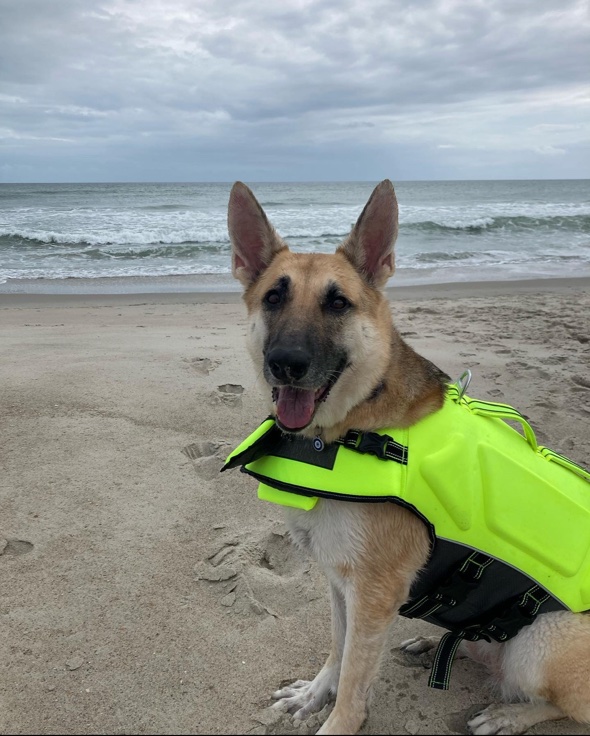 Athena is a sweet, beautiful 7 year old German Shepherd dog. She came in after being seen by a different veterinarian for several broken nails. She was painful in those nails and had to be sedated to have them cut back to the nail bed for comfort. Now more have done the same thing!
Athena is a sweet, beautiful 7 year old German Shepherd dog. She came in after being seen by a different veterinarian for several broken nails. She was painful in those nails and had to be sedated to have them cut back to the nail bed for comfort. Now more have done the same thing!
Looking at Athena's nails, nearly all of them had some form of abnormality. They were irregular and some were hollow. Some were just splitting away from the quick. She currently wasn't licking any of these nails and wasn't limping. She was not resisting examination of the toes.
Given her breed and the look of her nails, a presumptive diagnosis of Lupoid Onychodystrophy (sometimes called Lupoid Onychitis) was made. This is a condition mostly seen in Gordon Setters and German Shepherds, but can be seen in any breed of dog. It is a condition where the nails start growing out abnormally and sometimes they crumble or split away from the quick. It can often be a painful or debilitating disease depending on the severity and the dog.
Since Athena wasn't currently in obvious overt pain, we elected to not sedate and cut the nails all the way to the base, but to start with medication and see if we could keep her comfortable until the medication could start to help. Medication for this disorder is not a cure, but to try to help manage the disease. It can take several months to take effect! Some dogs need a trial of a few different types of medications and combinations to find the best one for the pet. We also try to trim the nails back as far as we can without causing pain. Also, providing additional medications to help with symptoms can include pain medications, anti-inflammatories, and antibiotics. If a nail is broken/separated and very painful, then sedation and cutting the nail back to the nail bed can help alleviate pain.
Athena was started on 2 medications for treatment, a course of antibiotics, and a fatty acid supplement that may help the condition. By the 2 week recheck, she continued to do well, nails were mildly improved (mainly just wanted to be sure they were not worse!). The antibiotic was stopped and the other medications were continued. At the 2 month recheck, she continued to be comfortable and many of her nails improved to a stable form of the disease. We were happy with how quickly she made improvements (as some dogs can take 3-4 months!) and we continued her medications for an additional 2 weeks before stopping to see how she did off medications. Beyond that time, the owner would keep a close eye on the nails, keep them trimmed short, and let us know if anything progressed or became painful. This is a long term disease and some dogs are unable to ever come off medications, but some can just treat during flare-ups.
Since Athena was such a wonderful patient and had a quick positive response to a difficult disease, we elected her for the AHS's canine Pet of the Month!
Sweet Kitty
Feline Pet of the Month - November 2023
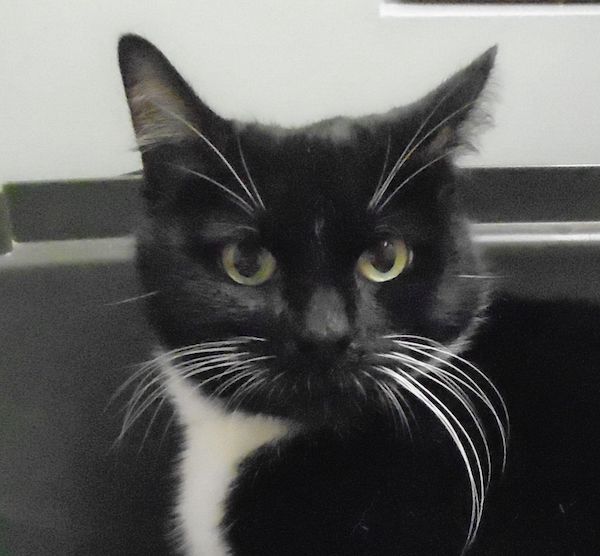 Sweet Kitty is a beautiful, 2-year-old, tuxedo colored female. She came to the Animal Hospital of Statesville on emergency after being attacked by the neighbor's dog. Her owner witnessed the altercation and was able to distract the dog so that Sweet Kitty could escape. She was able to get away based on adrenaline but later was unable to bear weight on her rear legs. She had multiple bite wounds, causing soft tissue trauma as well as a fractured fibula (the smaller of the 2 bones in the lower portion of the hind limb) and a dislocated hip. We were able to replace her luxated hip and start her on prompt wound treatment with antibiotics and pain management. Our class IV k-laser treatment also helped promote faster wound healing. The laser is an infrared laser light that promotes healing by increasing circulation, decreasing swelling, reducing pain and accelerating tissue healing and repair. Sweet Kitty is a "tough" kitty and with her owner's help, she made a full recovery! This is why we chose Sweet Kitty to be our November's feline Pet of the Month!
Sweet Kitty is a beautiful, 2-year-old, tuxedo colored female. She came to the Animal Hospital of Statesville on emergency after being attacked by the neighbor's dog. Her owner witnessed the altercation and was able to distract the dog so that Sweet Kitty could escape. She was able to get away based on adrenaline but later was unable to bear weight on her rear legs. She had multiple bite wounds, causing soft tissue trauma as well as a fractured fibula (the smaller of the 2 bones in the lower portion of the hind limb) and a dislocated hip. We were able to replace her luxated hip and start her on prompt wound treatment with antibiotics and pain management. Our class IV k-laser treatment also helped promote faster wound healing. The laser is an infrared laser light that promotes healing by increasing circulation, decreasing swelling, reducing pain and accelerating tissue healing and repair. Sweet Kitty is a "tough" kitty and with her owner's help, she made a full recovery! This is why we chose Sweet Kitty to be our November's feline Pet of the Month!
Gracie
Canine Pet of the Month - October 2023
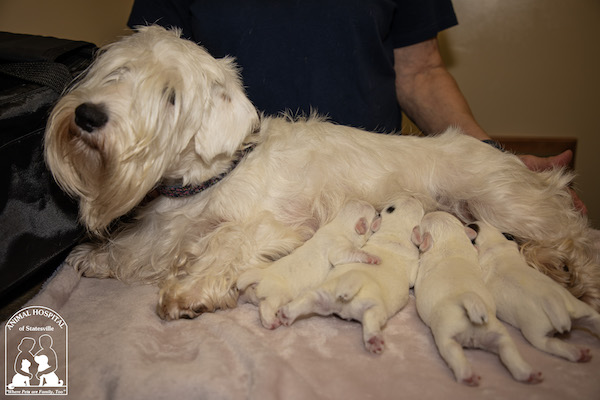 Gracie is a 2-year-old Sealyham Terrier, who came to the Animal Hospital of Statesville for our reproductive and neonatal services. Peak fertility in the dog is between 2 and 5 years of age, so this was the prime window to start discussing reproductive goals.
Gracie is a 2-year-old Sealyham Terrier, who came to the Animal Hospital of Statesville for our reproductive and neonatal services. Peak fertility in the dog is between 2 and 5 years of age, so this was the prime window to start discussing reproductive goals.
Sealyham Terriers are a Welsh breed originally bred to control pests on the farm (e.g. rodents) and to hunt badgers, otters, and other small mammals. They have a very sweet disposition and are considered the “couch potatoes” of the terrier world. Many famous actors of the black-and-white film era had Sealyhams, including Elizabeth Taylor, Bette Davis, Humphrey Bogard, Cary Grant, and Alfred Hitchcock. Now, Sealyham Terriers are considered a rare breed, which means they have a small population and are potentially at risk of extinction unless intentional action is taken to preserve the breed.
This is where we, at AHS, pick up with Gracie and her family. Gracie’s family are preservation breeders, or breeders who work to prevent a rare breed from extinction. Additionally, preservation breeders seek to improve the breed with each successive generation. With progesterone timing (hormonal blood testing) done at AHS, we were able to pinpoint the best days to breed Gracie to ensure the highest chance of getting pregnant and having a large litter, as well as determine an accurate due date within 24 hours. Gracie was bred via artificial insemination, and our timing was spot on! We confirmed she was pregnant on week four of her nine-week pregnancy via abdominal ultrasound. Not only did she get pregnant, she had 8 puppies - a large litter for a 25 pound mama! Take a look at the puppy count x-ray performed one week prior to her due date to know how many puppies to anticipate during her whelping period (labor). She sure is pregnant!
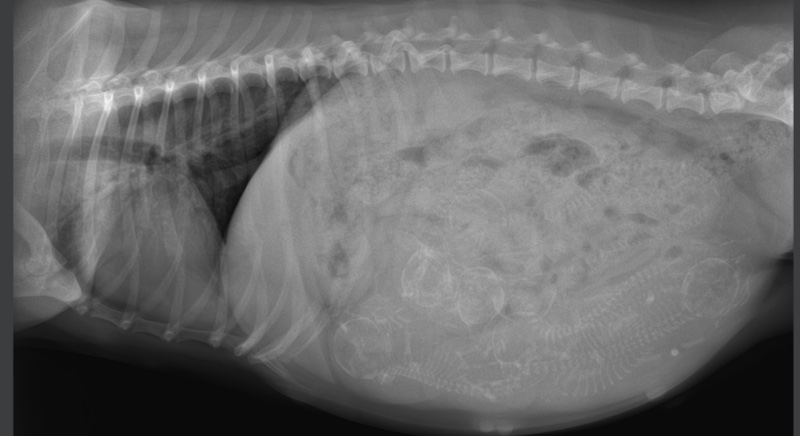
Throughout her pregnancy and leading up to her due date, we were involved in prenatal care and helping her family learn “what to expect when you’re expecting.” Although surprises can always arise, we were fortunate to have a strong foundation heading into her due date. Because of the progesterone timing performed on the front end of her heat cycle, we knew when Gracie was going to start delivering puppies and were as prepared as we could be. The first 48 hours after delivery were a little rocky, and several of the puppies unfortunately did not survive. Neonatal puppies are very delicate, and their health can take a turn incredibly quickly. Gracie’s family jumped into action and brought the crew to AHS. Here, we were able to teach them how to tube feed, what to watch for with critical puppies, how to troubleshoot many of the common neonatal issues, and how to help Gracie through the anxiety as a new mom. Gracie has been a fantastic mama, and the remaining four puppies are growing like weeds!
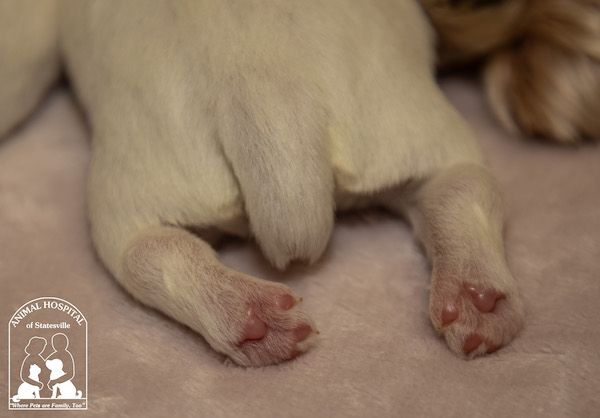
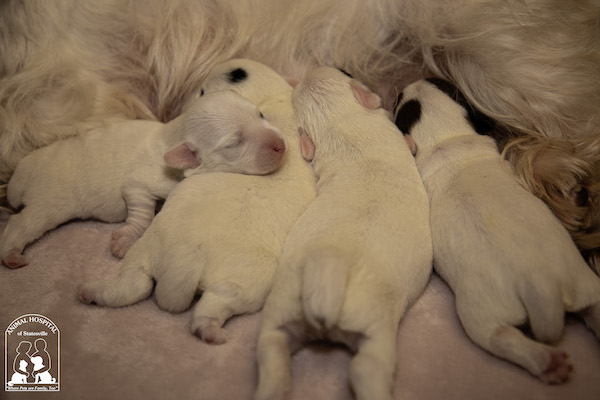
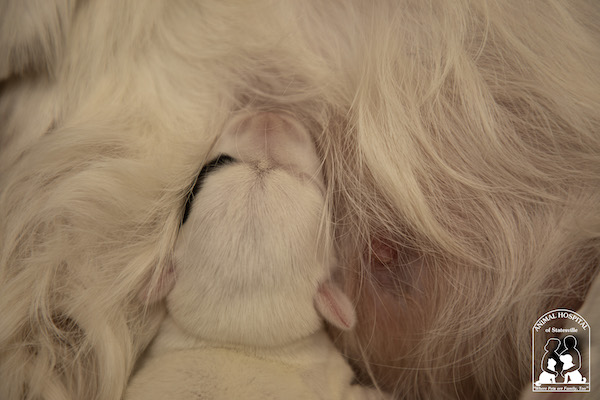
The Animal Hospital of Statesville is proud to support and assist responsible breeders like Gracie’s family. We understand the stressors and logistics of navigating preservation breeding and are honored to work together to ensure the health and well-being of mom, dad, and puppies. Plus, puppies are a pretty cute perk of the job!
Jake
Feline Pet of the Month - October 2023
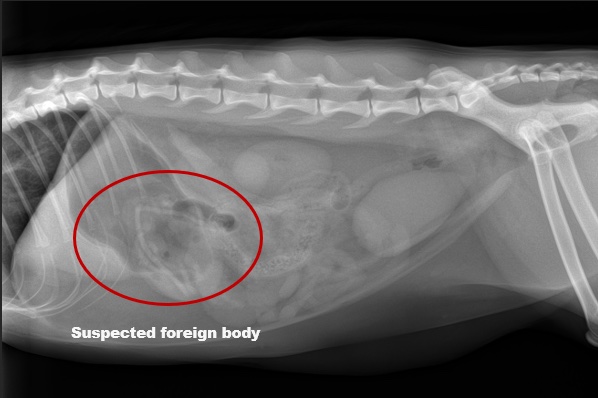 Our feline pet of the month for October is Jake. He is a 2-year-old domestic short-hair male cat. Jake presented to the Animal Hospital of Statesville with gastrointestinal upset, vomiting, diarrhea and lethargy. Upon speaking with Jake’s owner, Jake had recently been playing with hair ties. With that information, we suspected Jake had ingested hair ties, creating an intestinal foreign body and causing his gastrointestinal symptoms.
Our feline pet of the month for October is Jake. He is a 2-year-old domestic short-hair male cat. Jake presented to the Animal Hospital of Statesville with gastrointestinal upset, vomiting, diarrhea and lethargy. Upon speaking with Jake’s owner, Jake had recently been playing with hair ties. With that information, we suspected Jake had ingested hair ties, creating an intestinal foreign body and causing his gastrointestinal symptoms.
Radiographs were performed and were suggestive of a linear foreign body or a string/fabric-type foreign body.
The decision was then made to take Jake to surgery to remove the foreign body. A gastrotomy, or stomach incision, and an enterotomy – a small intestinal incision – was performed, and the foreign body was removed. Jake recovered well from surgery and although he had some incisional complications, he went on to make a full recovery and is doing well.
Linear or string-type foreign bodies are common in cats. Cats commonly like to play with string-type toys. Cats, unfortunately, can ingest these objects and they can go on to cause gastrointestinal foreign bodies. It is especially important to keep hair ties and sewing/knitting equipment away from cats. Any toys with strings should only be used while being supervised.
Charlie
Canine Pet of the Month - September 2023
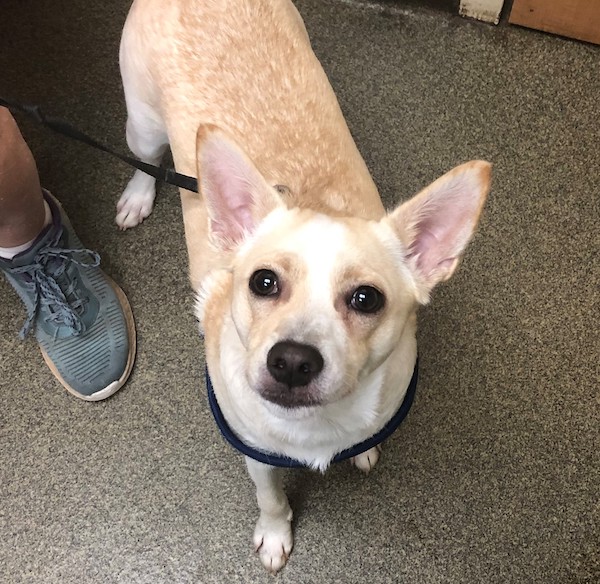 Charlie had a common eye problem that often develops in puppies. Many times it is called "Cherry Eye" and is a prolapse of the tear duct in the third eyelid of dogs or cats. Typically the puppy looks normal when young, but as it gets older, this can suddenly appear as it did for Charlie at about 5 months old. It was not painful or bothersome to Charlie, but some owners can become very panicked to see the red bulge from the edge of the eye.
Charlie had a common eye problem that often develops in puppies. Many times it is called "Cherry Eye" and is a prolapse of the tear duct in the third eyelid of dogs or cats. Typically the puppy looks normal when young, but as it gets older, this can suddenly appear as it did for Charlie at about 5 months old. It was not painful or bothersome to Charlie, but some owners can become very panicked to see the red bulge from the edge of the eye.
A cherry eye can happen in one or both eyes. Untreated, some puppies may get inflammation and eye discharge. In chronic cases, it can dry out more, have continued inflammation, and may be related to development of dry eye. Many dogs can have a cherry eye without incident for years, but surgery may not always be a viable option if it is allowed to stay for years. Surgical correction is the preferred method of treatment where you open up a "pocket", replace the gland inside and suture it closed. For many young puppies with smaller/typical cherry eyes, this is a successful procedure. However, there is always the chance of failure or a pup can have other issues that can complicate the repair. When a dog is an adult and certainly when they are a mature or older adult, the surgery becomes less and less successful with the typical repair. If repair is unsuccessful or has some complicating factors, it is not uncommon to seek the treatment and surgery from a specialist Ophthalmologist.
In the past, the common method of treatment was to just cut the gland out. When doing this procedure, it was not initially known how detrimental this can be and is now not the recommended method of treatment. That gland is responsible for over 30 percent of the tear production to the eye, so cutting it out often left those dogs with a bad case of dry eye not responsive to regular medications for dry eye.
Charlie had a successful surgical repair of his cherry eye and his recheck looked great the following month. So far he has had no recurrence or an issue with the opposite eye. He is still a happy and comfortable boy!! For this reason and his common puppy malady, he has won the spotlight for AHS's Canine Pet of the Month!
Rusty
Feline Pet of the Month - September 2023
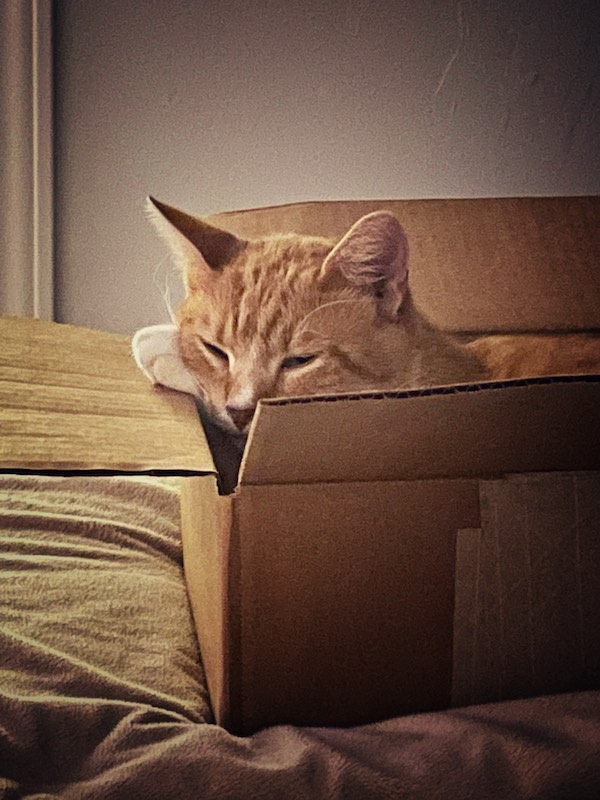 Rusty is a two-year old cat we saw for his annual exam this summer. Rusty was new to the area but appeared very healthy overall until we checked his teeth. He had significant inflammation of the gums around several of his teeth. This is unusual in a cat this age and was definitely of concern. We spoke about dental disease in cats and acknowledged that to determine what was causing the issue, we needed dental x-rays of the mouth. Unfortunately, cats don't say "Ahh" and therefore, require sedation for the procedure. The owner agreed, and a dental exam with x-rays was scheduled for Rusty.
Rusty is a two-year old cat we saw for his annual exam this summer. Rusty was new to the area but appeared very healthy overall until we checked his teeth. He had significant inflammation of the gums around several of his teeth. This is unusual in a cat this age and was definitely of concern. We spoke about dental disease in cats and acknowledged that to determine what was causing the issue, we needed dental x-rays of the mouth. Unfortunately, cats don't say "Ahh" and therefore, require sedation for the procedure. The owner agreed, and a dental exam with x-rays was scheduled for Rusty.
Rusty presented early in the morning, and we were able to get the procedure underway quickly. Once he had his IV catheter and fluids started, he was anesthetized, and dental X-rays were performed. Unfortunately, we identified several teeth with cervical (neck) lesions which are cavities in the sides of the teeth below the gumline. We know that these teeth are beyond repair, are painful and must be extracted. Surgical extraction went well, and the gingiva closed nicely with the sutures. Rusty was placed on pain management and soft food while his mouth healed.
We saw Rusty for his two week recheck and he was doing great. His mouth had healed beautifully. He was eating hard food and the owner noted that he was more playful and energetic. We often see this after extractions and it is very gratifying, but it is also a good example of how pets hide their pain. Once the cause is eliminated, we can see their true personality shining through. Because Rusty did so well with his procedure he is AHS's feline Pet of the Month.
Maverick
Canine Pet of the Month - August 2023
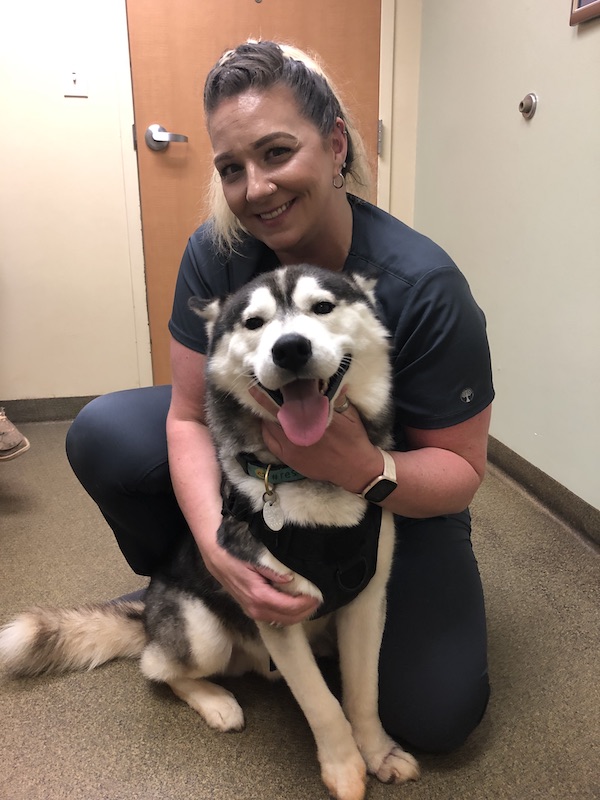 Maverick, a very sweet 2-year-old Husky, came in for a wound on his paw. His family adopted him one week prior but had a family emergency shortly after and had to have someone watch him while they were away. When they came home, they noticed a wound over the top of the left front paw. He licked it overnight, made it worse, and they came in the next day to get help.
Maverick, a very sweet 2-year-old Husky, came in for a wound on his paw. His family adopted him one week prior but had a family emergency shortly after and had to have someone watch him while they were away. When they came home, they noticed a wound over the top of the left front paw. He licked it overnight, made it worse, and they came in the next day to get help.
Although Maverick was the happiest boy and just wanted to lick your face, it was clear his paw really hurt. He wouldn't put weight on that paw and was very sensitive when the paw was touched. His toes were swollen, and the wound looked deep. Because he was clearly painful, we recommended cleaning the wound and assessing it further under sedation - and it was such a blessing we did! When cleaning and exploring the wound to determine the extent of the injury, we were surprised to find a zip tie clipped around his foot. His toes were swollen because they could not get blood flow due to the zip tie acting like a tourniquet. Had we not sedated and explored the wound, it was very likely his toes would have sloughed off without the blood flow present to keep the tissue alive. We were still concerned about the recovery given the extent of damage but started Maverick on pain medication and antibiotics to support his body as it tried to heal. He was also under strict orders to wear an E-collar (cone) at all times to prevent licking the wound and making it worse.
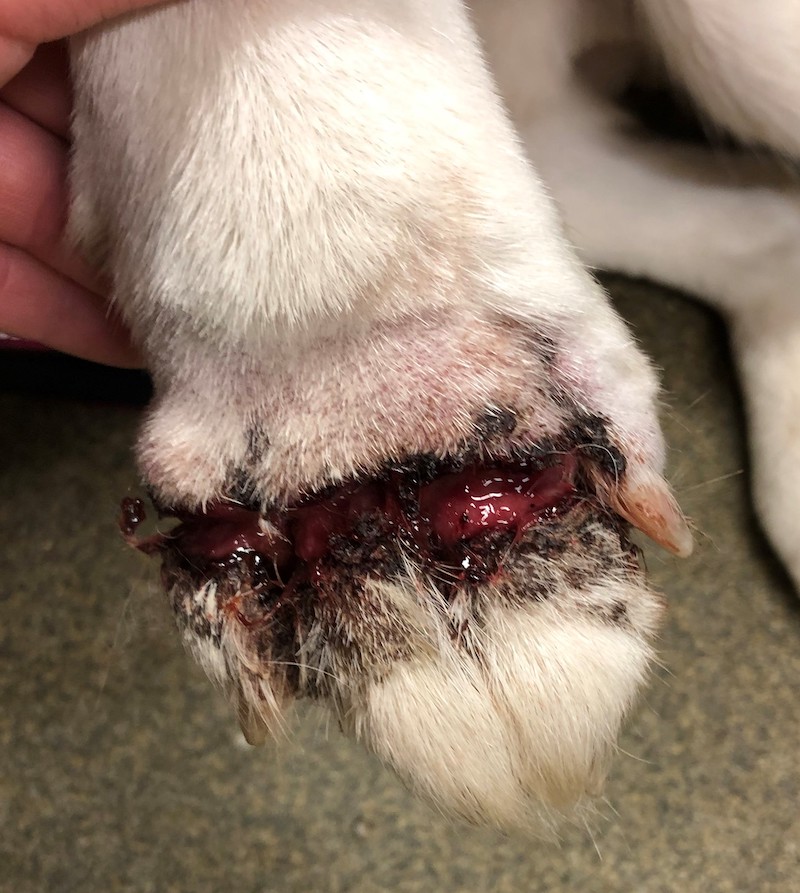
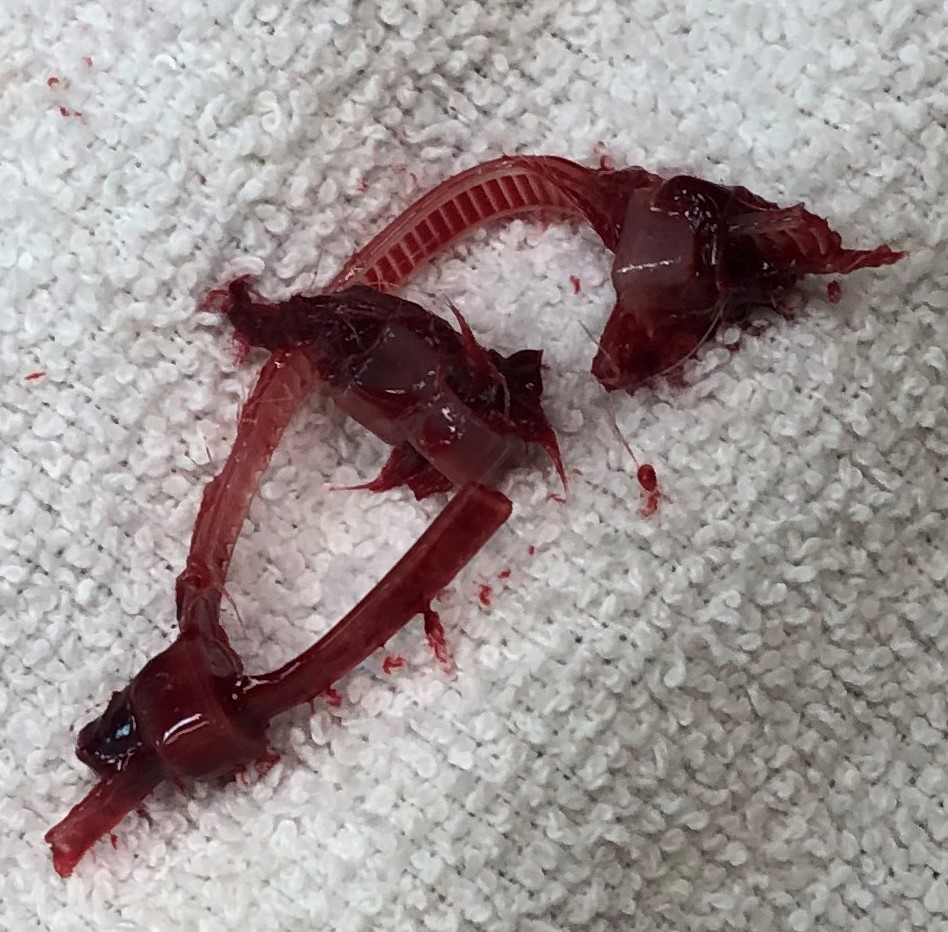
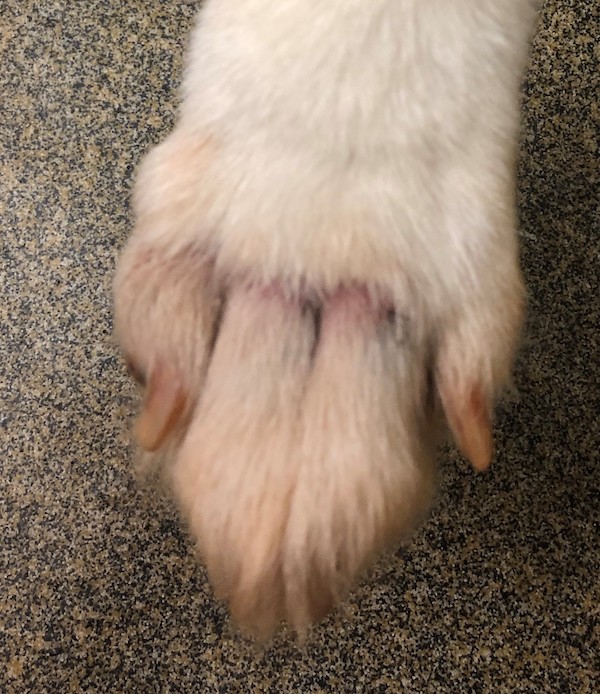
When we rechecked his foot four days later, the swelling was gone and the wound was starting to heal. Maverick was running around using all four feet, and his family felt he was eating much more now that he was comfortable. We rechecked again a week later to ensure the wound was healing well and it was okay to discontinue medications, and it was. We were on the downhill stretch!
A month later, Maverick came in for his final recheck, and his paw healed amazingly! He had full function of all his toes and was acting like nothing had ever happened. Maverick was lucky to have found his forever home and to have had a family so dedicated to his recovery. We are so grateful to have been able to help Maverick and are looking forward to seeing him again in the future!
Harry
Feline Pet of the Month - August 2023
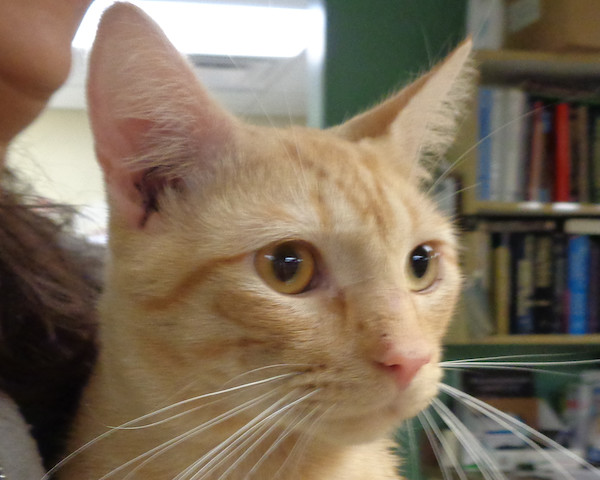 Harry is a handsome 8-year-old orange tabby. He has been a patient here for several years after he was taken in as a stray. He has been a spoiled kitty ever since! He used to get into the occasional altercation with another cat while trying to defend his territory. However, he is very sweet and affectionate otherwise. Harry's "mom" does everything she can to keep him well, despite his mischievous self. Part of keeping him well, consists of regular wellness visits to make sure he is a healthy boy. We recommend twice yearly visits for all pets. These visits include a full physical exam, life-style vaccines, parasite checks and preventative care. Once yearly, a blood screen is performed which checks a pet's organs and screens for problems that may go undetected otherwise. Pet's (especially cats) "hide" their problems or sickness by nature and it can be difficult to tell they are sick or have a concern in the early stages. We know that prevention and early detection of any problem are keys to a successful treatment. Fortunately, Harry's blood screen and parasite checks have been normal and he continues to thrive. We are happy to call Harry our kitty Pet of the Month!
Harry is a handsome 8-year-old orange tabby. He has been a patient here for several years after he was taken in as a stray. He has been a spoiled kitty ever since! He used to get into the occasional altercation with another cat while trying to defend his territory. However, he is very sweet and affectionate otherwise. Harry's "mom" does everything she can to keep him well, despite his mischievous self. Part of keeping him well, consists of regular wellness visits to make sure he is a healthy boy. We recommend twice yearly visits for all pets. These visits include a full physical exam, life-style vaccines, parasite checks and preventative care. Once yearly, a blood screen is performed which checks a pet's organs and screens for problems that may go undetected otherwise. Pet's (especially cats) "hide" their problems or sickness by nature and it can be difficult to tell they are sick or have a concern in the early stages. We know that prevention and early detection of any problem are keys to a successful treatment. Fortunately, Harry's blood screen and parasite checks have been normal and he continues to thrive. We are happy to call Harry our kitty Pet of the Month!
Roxy
Canine Pet of the Month - July 2023
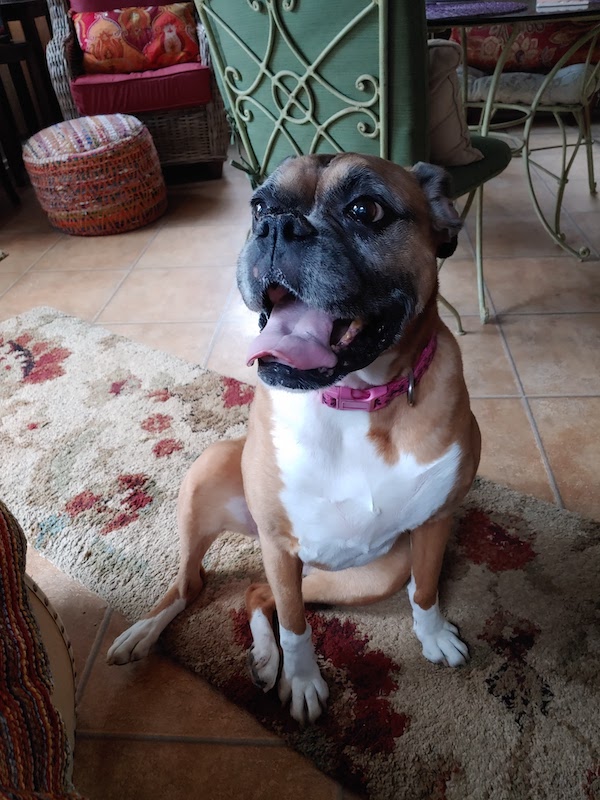 Roxy is a beautiful, 12-year-old, boxer. She has been a patient at the Animal Hospital of Statesville for many years. She recently developed a growth over her hip area. Any lump is a concern of cancer but especially in the Boxer breed. We tested the lump and, in fact, it was cancerous - a soft tissue sarcoma. Soft tissue sarcomas make up 15% of all skin and subcutaneous (under the skin) tumors in dogs. Given the size and location, it was difficult to remove all of it. We were unable to obtain "clean" (or "cancer- free") margins. Therefore, it is possible for this type of mass to return. We elected to use Torigen for Roxy. Torigen is a vaccine for cancer using immunotherapy. The vaccine is made from the pet's own cancer cells and trains the immune system to fight the cancer. It consists of 3 vaccines given once a week for 3 weeks. Roxy did very well with her treatment and so far, there have not been any signs of regrowth of her tumor. We are very excited to be able to offer this treatment here at our hospital without having to go see a specialist. This is why we chose Roxy to be our July canine Pet of the Month!
Roxy is a beautiful, 12-year-old, boxer. She has been a patient at the Animal Hospital of Statesville for many years. She recently developed a growth over her hip area. Any lump is a concern of cancer but especially in the Boxer breed. We tested the lump and, in fact, it was cancerous - a soft tissue sarcoma. Soft tissue sarcomas make up 15% of all skin and subcutaneous (under the skin) tumors in dogs. Given the size and location, it was difficult to remove all of it. We were unable to obtain "clean" (or "cancer- free") margins. Therefore, it is possible for this type of mass to return. We elected to use Torigen for Roxy. Torigen is a vaccine for cancer using immunotherapy. The vaccine is made from the pet's own cancer cells and trains the immune system to fight the cancer. It consists of 3 vaccines given once a week for 3 weeks. Roxy did very well with her treatment and so far, there have not been any signs of regrowth of her tumor. We are very excited to be able to offer this treatment here at our hospital without having to go see a specialist. This is why we chose Roxy to be our July canine Pet of the Month!
Iris
Feline Pet of the Month - July 2023
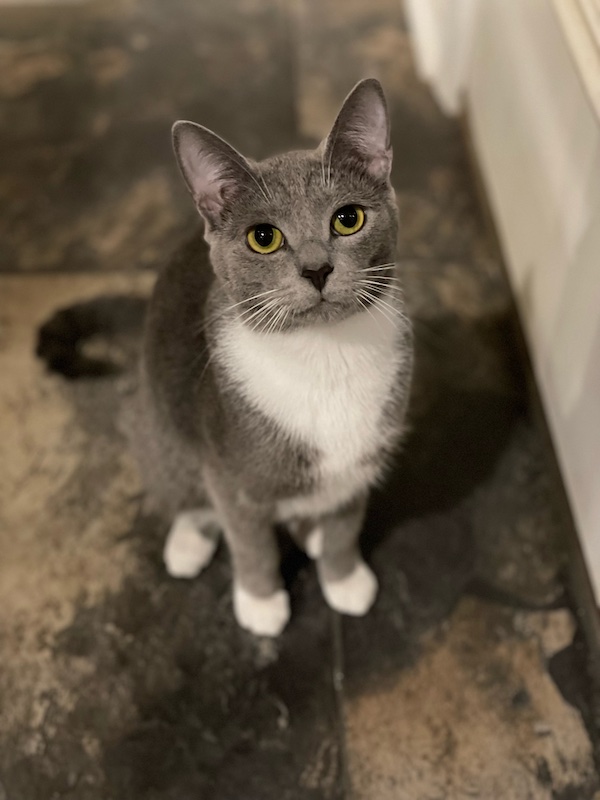 This month's Pet of the Month is Iris, a 10-month-old female kitten. Iris presented to the clinic for not feeling well and vaginal discharge. Iris was treated with antibiotics and scheduled for a spay. During her spay it was discovered that she had a pyometra. This is not a typical finding in such a young animal.
This month's Pet of the Month is Iris, a 10-month-old female kitten. Iris presented to the clinic for not feeling well and vaginal discharge. Iris was treated with antibiotics and scheduled for a spay. During her spay it was discovered that she had a pyometra. This is not a typical finding in such a young animal.
A pyometra is an infected uterus. When a patient develops pyometra it can become a life-threatening situation requiring emergency surgery. Development of pyometra is one of the top reasons we recommend that if your pet is not going to be used for breeding, to spay females before any issues can occur with the uterus. This also helps control the unwanted pet population that continues to plague the US.
Iris is doing great now and is back to normal after surgery. If you have any questions about spaying your pet, please call us at Animal Hospital of Statesville.
Chief
Canine Pet of the Month - June 2023
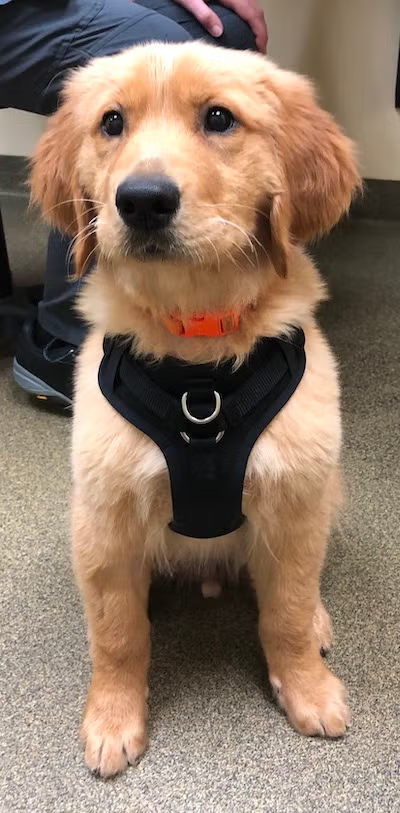 Chief is an adorable puppy that presented shortly after adoption at nine weeks of age. Chief had been fine playing one day, then became very lethargic with a little loose stool. Chief had a fever upon examination and some pustules near his ears. Chief's parvo test was negative (always a disease to rule out with any puppy) and no intestinal parasites were seen. Chief's signs were vague overall. We treated with antibiotics and subcutaneous fluids to see how he responded. Chief's fever worsened over the next few days and he went on to develop enlarged lymph nodes and difficulty walking, likely from muscle inflammation. Juvenile cellulitis, or puppy strangles, was suspected. This is a poorly understood autoimmune condition seen in puppies, but rarely. Golden Retrievers and Dachshunds tend to be the common breeds affected. There is no test available. Chief's presentation was not typical, as usually, initially the face and ears are swollen with lymph node swelling as well. Chief was started on intravenous fluids and hospitalized. Corticosteroids were started, as this is the treatment needed to suppress an overzealous immune system. Chief responded well to therapy over the next few days and began to walk and become stronger. Chief's owners were diligent and committed. Chief was on corticosteroids for many weeks and slowly weaned off of them. Today, he is a fully-vaccinated rambunctious puppy of 5 months. Chief's case was interesting and rewarding for all involved. This is why is AHS's canine Pet of the Month!
Chief is an adorable puppy that presented shortly after adoption at nine weeks of age. Chief had been fine playing one day, then became very lethargic with a little loose stool. Chief had a fever upon examination and some pustules near his ears. Chief's parvo test was negative (always a disease to rule out with any puppy) and no intestinal parasites were seen. Chief's signs were vague overall. We treated with antibiotics and subcutaneous fluids to see how he responded. Chief's fever worsened over the next few days and he went on to develop enlarged lymph nodes and difficulty walking, likely from muscle inflammation. Juvenile cellulitis, or puppy strangles, was suspected. This is a poorly understood autoimmune condition seen in puppies, but rarely. Golden Retrievers and Dachshunds tend to be the common breeds affected. There is no test available. Chief's presentation was not typical, as usually, initially the face and ears are swollen with lymph node swelling as well. Chief was started on intravenous fluids and hospitalized. Corticosteroids were started, as this is the treatment needed to suppress an overzealous immune system. Chief responded well to therapy over the next few days and began to walk and become stronger. Chief's owners were diligent and committed. Chief was on corticosteroids for many weeks and slowly weaned off of them. Today, he is a fully-vaccinated rambunctious puppy of 5 months. Chief's case was interesting and rewarding for all involved. This is why is AHS's canine Pet of the Month!
Baxter
Feline Pet of the Month - June 2023
 Baxter is a handsome, 6-year-old boy. He developed a problem with his right knee joint several years ago. A mineral opacity was found in the joint on radiographs. This could have been a result of an acute injury, or an indication of a degenerative problem with his joint. Either way, it was likely to progress as he aged and could become quite painful for him. He initially responded well to pain management but his leg started to bother him again. There are not many safe options for pain control long-term in cats. Also, cats are well known to hide their pain so sometimes we don't recognize when help is needed.
Baxter is a handsome, 6-year-old boy. He developed a problem with his right knee joint several years ago. A mineral opacity was found in the joint on radiographs. This could have been a result of an acute injury, or an indication of a degenerative problem with his joint. Either way, it was likely to progress as he aged and could become quite painful for him. He initially responded well to pain management but his leg started to bother him again. There are not many safe options for pain control long-term in cats. Also, cats are well known to hide their pain so sometimes we don't recognize when help is needed.
Solensia is a monoclonal antibody that controls pain in cats caused by osteoarthritis (OA). It is the only FDA approved treatment in cats to control pain caused by OA. It works by binding to nerve growth factor and inhibiting its ability to cause pain. It helps mobility and improves their overall quality of life. It is a monthly, subcutaneous injection given by your veterinarian. And best of all, it is safe to use long term in cats! Baxter has improved greatly since starting these injections and is now on his 5th month of treatment. We are happy to report that Baxter is more mobile at home and most importantly, more comfortable day to day! Baxter's dramatic improvement with Solensia has earned him the title of AHS's Feline Pet of the Month!
Stella
Canine Pet of the Month - April 2023
Dr. Brett Pendergrass
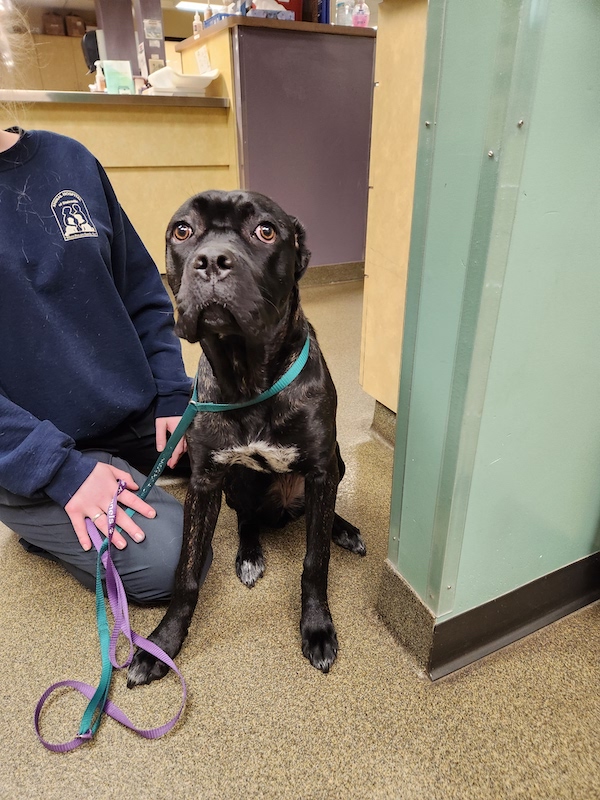 This month's Pet of the Month came to the Animal Hospital of Statesville for an unfortunately common problem seen in dogs and cats. Stella came to the Animal Hospital of Statesville for vomiting and generally feeling poorly. Stella's owner reported she may have ingested a toy, so radiographs were performed, and she HAD swallowed a whole Kong toy! While the radiographs are quite shocking and impressive, it is not an uncommon finding with dogs being able to swallow objects much larger than typical food.
This month's Pet of the Month came to the Animal Hospital of Statesville for an unfortunately common problem seen in dogs and cats. Stella came to the Animal Hospital of Statesville for vomiting and generally feeling poorly. Stella's owner reported she may have ingested a toy, so radiographs were performed, and she HAD swallowed a whole Kong toy! While the radiographs are quite shocking and impressive, it is not an uncommon finding with dogs being able to swallow objects much larger than typical food.
Stella underwent gastric surgery, and the Kong toy was successfully removed, and no other foreign bodies were noted. At her 2-week follow up Stella was doing great and was basically back to normal. Intestinal foreign bodies are common findings in dogs and cats. A foreign body can consist of anything that is not food. It is common to for pets to ingest clothing, trash, bones, and toys. It is important to ensure your pets do not have access to anything they could ingest and cause a foreign body. Also, ensure any toys given to (or within reach of) pets are appropriately sized for the pet so that accidental ingestion does not occur.
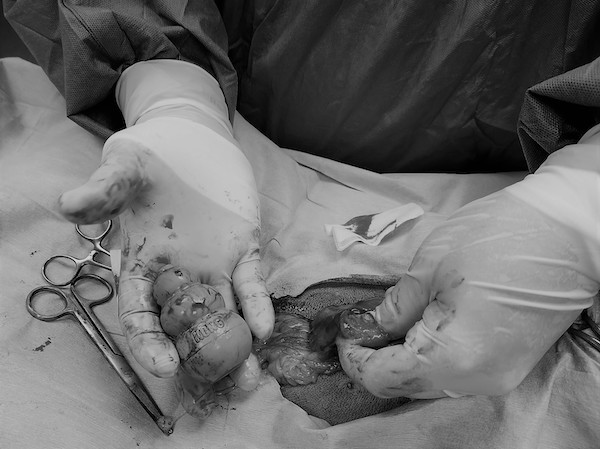 For her stellar recovery, Stella is our Canine Pet of the Month.
For her stellar recovery, Stella is our Canine Pet of the Month.
Oreo
Feline Pet of the Month - April 2023
Oreo is a sweet, but curious, 3-year-old kitty. He is very food motivated and sometimes gets into mischief. He came to our clinic because he was vomiting and not eating (very unusual for him). He was also very lethargic. We did a blood screen and found him to have acute renal failure. This occurs when there has been an insult to the kidneys. The most common reason would be exposure to something toxic or infectious. Treatment was started for nausea, he was placed on IV fluids and an appetite stimulant. After a couple of days in the hospital, Oreo started eating again and had much more energy. He was started on a prescription kidney diet to help him heal.
We followed up with Oreo after discharge from the hospital to see how his kidneys were doing and they were back to normal! We are glad he was able to make a full recovery! This is a great example how some organ values that aren't optimal, can be diagnosed and treated successfully before the pet becomes too ill to recover. For his great recovery, Oreo is our Feline Pet of the Month.
Gibbs
Canine Pet of the Month - February 2023
 Gibbs is a sweet, 2-year-old Goldendoodle. I (Dr. Nichola Gaither) first met Gibbs back in 2020 when he decided to eat the foil top off of a Zaxby's sauce packet. He was only 8 pounds at that time and his family was afraid it may cause an obstruction. We made him vomit and he produced all that he had eaten. We have cared for Gibbs over the past 2 years and have seen him on many happy/well visits. Recently, he got into mischief again, right before Thanksgiving. His family had prepared a nice chocolate cake with icing to bring to a family gathering. The cake was on the kitchen counter and the family was in the other room getting ready. When they came into the kitchen, they knew Gibbs was in trouble. They saw some remnants of the cake around his mouth and then saw the cake, or what was left of it! Gibbs had taken the time to neatly peel back the plastic wrapping over the cake and had helped himself to a large portion of it. Chocolate can be toxic to our pets due to an ingredient called theobromine. Theobromine is similar to caffeine and dogs are not able to metabolize it well like humans can. The darker the chocolate, the more toxicity potential, with baker's chocolate usually being the worst. It can cause mild symptoms such as vomiting, diarrhea, panting, restlessness and an increased heart rate. It can also cause more severe symptoms such as tremors and seizures. Thankfully, we usually only see mild cases. Gibbs was once again made to vomit with an IV injection and he vomited ALL of the chocolate cake he had eaten. It was quite a bit! Have you ever smelled "chocolate vomit"? It smells good and gross all at the same time! We are thankful Gibbs is doing well and continues to keep his family on their toes! For his unintentional canine public service "lesson", Gibbs is AHS's canine Pet of the Month!
Gibbs is a sweet, 2-year-old Goldendoodle. I (Dr. Nichola Gaither) first met Gibbs back in 2020 when he decided to eat the foil top off of a Zaxby's sauce packet. He was only 8 pounds at that time and his family was afraid it may cause an obstruction. We made him vomit and he produced all that he had eaten. We have cared for Gibbs over the past 2 years and have seen him on many happy/well visits. Recently, he got into mischief again, right before Thanksgiving. His family had prepared a nice chocolate cake with icing to bring to a family gathering. The cake was on the kitchen counter and the family was in the other room getting ready. When they came into the kitchen, they knew Gibbs was in trouble. They saw some remnants of the cake around his mouth and then saw the cake, or what was left of it! Gibbs had taken the time to neatly peel back the plastic wrapping over the cake and had helped himself to a large portion of it. Chocolate can be toxic to our pets due to an ingredient called theobromine. Theobromine is similar to caffeine and dogs are not able to metabolize it well like humans can. The darker the chocolate, the more toxicity potential, with baker's chocolate usually being the worst. It can cause mild symptoms such as vomiting, diarrhea, panting, restlessness and an increased heart rate. It can also cause more severe symptoms such as tremors and seizures. Thankfully, we usually only see mild cases. Gibbs was once again made to vomit with an IV injection and he vomited ALL of the chocolate cake he had eaten. It was quite a bit! Have you ever smelled "chocolate vomit"? It smells good and gross all at the same time! We are thankful Gibbs is doing well and continues to keep his family on their toes! For his unintentional canine public service "lesson", Gibbs is AHS's canine Pet of the Month!
Chicken Nugget
Feline Pet of the Month - February 2023
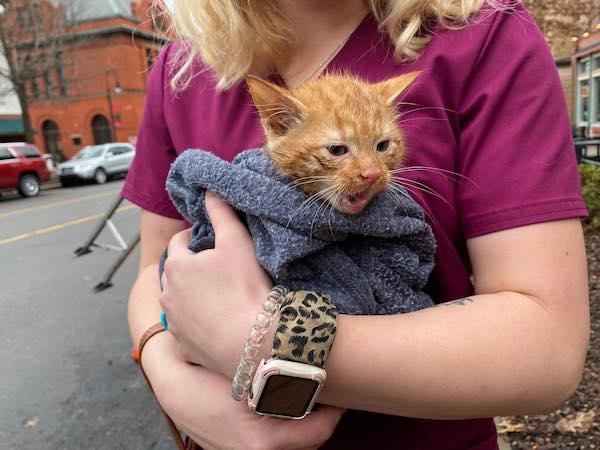 On Wednesday, January 6, Becky, a Veterinary Patient Care team member at Animal Hospital of Statesville, was downtown and heard a cry. She thought it was a bird, but then realized it was a kitten in the nearby storm drain. Becky asked a couple of passerby for help with rescuing the kitten. While they were calling 911, Becky fed the kitten her lunch of Chicken McNuggets from McDonalds through the grate. The 911 dispatcher sent out the Statesville Fire Department. They came with escorts to help close the downtown area while they attempted to flush the kitten out with a hose. The first try was not successful, so Becky asked them to try once more. They had to fill up the truck before trying again. The second time was the charm! It took 1500 gallons of water to get the kitten out. The kitten, dubbed "Chicken Nugget", was brought back to the clinic and was held for observation to make sure he was healthy and happy. That name, Chicken Nugget, was just a few of several possible choices like Drain Bolt, Drain-O and the like. We decided as a hospital that being a clinic cat was not the best place for a kitten like Chicken Nugget to grow up - in a cage, with a busy staff with limited time to pay attention to and love on him. Eventually, Chicken Nugget went to a new family that has 2 dogs. He gets snuggles morning, noon and night. He is now over 12 weeks old and has a loving, wonderful home and a wonderful mama. His mama says "He is very spunky and tells the dogs what can and cannot happen. HE is THE boss of the house!" We still get pictures of him - he's growing so quickly! He's in our hearts and will always be known as our Clinic Rescue Kitty! He's our feline Pet of the Month for persevering through adversity and adjusting so well to his new-found family!
On Wednesday, January 6, Becky, a Veterinary Patient Care team member at Animal Hospital of Statesville, was downtown and heard a cry. She thought it was a bird, but then realized it was a kitten in the nearby storm drain. Becky asked a couple of passerby for help with rescuing the kitten. While they were calling 911, Becky fed the kitten her lunch of Chicken McNuggets from McDonalds through the grate. The 911 dispatcher sent out the Statesville Fire Department. They came with escorts to help close the downtown area while they attempted to flush the kitten out with a hose. The first try was not successful, so Becky asked them to try once more. They had to fill up the truck before trying again. The second time was the charm! It took 1500 gallons of water to get the kitten out. The kitten, dubbed "Chicken Nugget", was brought back to the clinic and was held for observation to make sure he was healthy and happy. That name, Chicken Nugget, was just a few of several possible choices like Drain Bolt, Drain-O and the like. We decided as a hospital that being a clinic cat was not the best place for a kitten like Chicken Nugget to grow up - in a cage, with a busy staff with limited time to pay attention to and love on him. Eventually, Chicken Nugget went to a new family that has 2 dogs. He gets snuggles morning, noon and night. He is now over 12 weeks old and has a loving, wonderful home and a wonderful mama. His mama says "He is very spunky and tells the dogs what can and cannot happen. HE is THE boss of the house!" We still get pictures of him - he's growing so quickly! He's in our hearts and will always be known as our Clinic Rescue Kitty! He's our feline Pet of the Month for persevering through adversity and adjusting so well to his new-found family!
Bandit
Canine Pet of the Month - December 2022
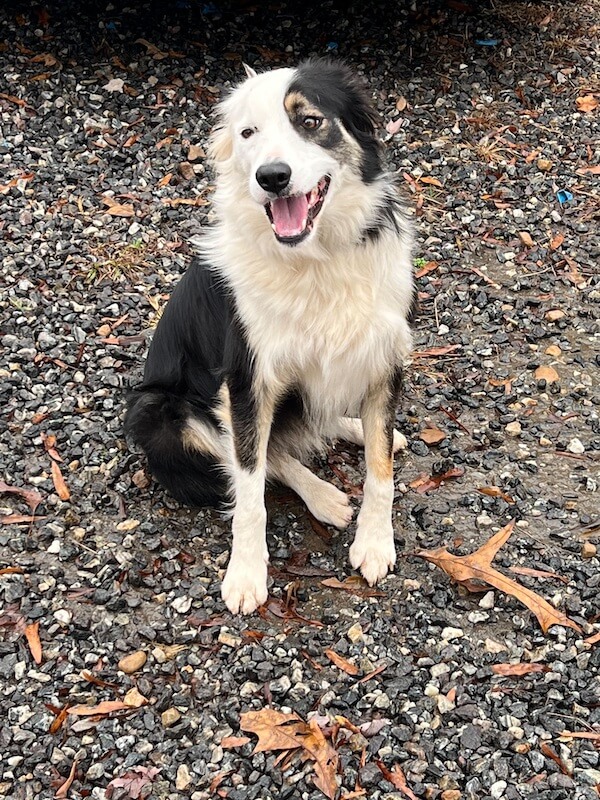 Bandit is an eighteen-month-old Australian Shepherd. He presented to us one evening after having a run in with a UPS driver's vehicle. He had several areas of road rash with some mild blood coming from his mouth. He was very reluctant to allow any manipulation of his mouth and was quite painful.
Bandit is an eighteen-month-old Australian Shepherd. He presented to us one evening after having a run in with a UPS driver's vehicle. He had several areas of road rash with some mild blood coming from his mouth. He was very reluctant to allow any manipulation of his mouth and was quite painful.
We treated him aggressively for pain and gave him some medication to calm his anxiety. Once those had reduced his anxiousness, we sedated Bandit to allow a full inspection of his mouth. After X-rays and manipulation, he proved to have an extremely unstable fracture of his mandibular symphysis - in essence, the area at the front of the chin where the left and right side of the jaw fuse together. The two sides of the jaw were working independently of one another. This type of fracture needs surgical correction.
We had Bandit return the next day for surgical repair that included two wires - one placed in front of the canine teeth and the other well behind the canine teeth. These wires were then tightened to allow for good reduction and stability of the fracture. The wires were left in place for two months. He was released with instructions to keep Bandit confined and feed only softened food. Within a week he was ready to run and play again, making his recovery period a little more difficult than most as we needed to allow for healing. We had to prescribe sedatives to keep Bandit calm.
Bandit was sedated two months later, and the wires were removed. The jaw had healed beautifully with excellent alignment and stability. Bandit was released to start eating hard food again and he is back to herding the cows on his farm. Because of his excellent healing of a severe fracture, Bandit is AHS's canine Pet of the Month.
Bree
Feline Pet of the Month - December 2022
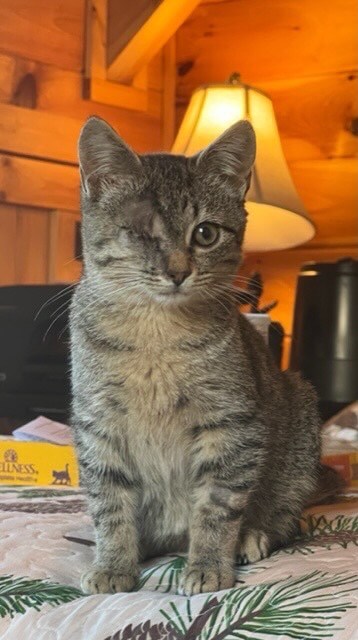 Bree is an adorable kitten. She was found on the side of the road at 8 weeks with an eye injury. The eye was severely damaged and infected and needed removal. Brees's finder elected to commit to her care and add her to the family. Due to Bree's small size and pediatric age she was a high risk for anesthesia but the eye could not be left in place. Bree did super through anesthesia and the eye removal or enucleation was free of complications. Bree is doing super now at 11 weeks and has integrated very well into a multiple cat household. Bree has smitten the humans as well as the other kitties in the household. Her story is very heartwarming and that is why she is AHS's feline Pet of the Month.
Bree is an adorable kitten. She was found on the side of the road at 8 weeks with an eye injury. The eye was severely damaged and infected and needed removal. Brees's finder elected to commit to her care and add her to the family. Due to Bree's small size and pediatric age she was a high risk for anesthesia but the eye could not be left in place. Bree did super through anesthesia and the eye removal or enucleation was free of complications. Bree is doing super now at 11 weeks and has integrated very well into a multiple cat household. Bree has smitten the humans as well as the other kitties in the household. Her story is very heartwarming and that is why she is AHS's feline Pet of the Month.
Odell
Canine Pet of the Month - November 2022
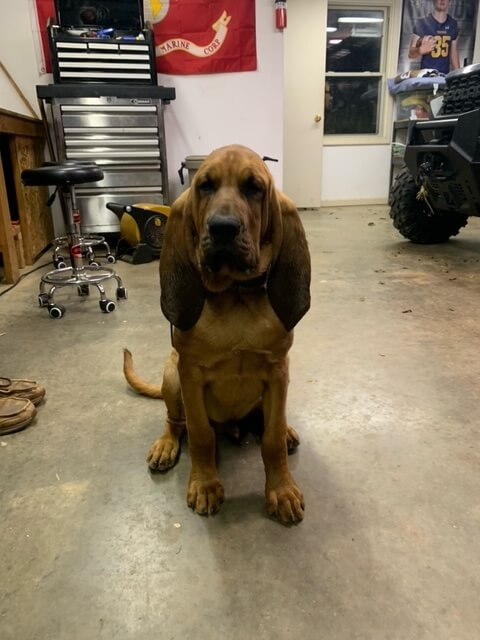 Odell, an adorable Bloodhound puppy, came to us as an emergency work in at 8 weeks old one Friday afternoon. (If you've never seen a Bloodhound puppy, they're the cutest pile of wrinkles.) His family had gotten him from the breeder a few days before, and he'd been having diarrhea since. Up until he came to us, he'd been otherwise acting okay, but his family noticed he was noticeably more lethargic within an hour or two of coming in - the reason they rushed him in!
Odell, an adorable Bloodhound puppy, came to us as an emergency work in at 8 weeks old one Friday afternoon. (If you've never seen a Bloodhound puppy, they're the cutest pile of wrinkles.) His family had gotten him from the breeder a few days before, and he'd been having diarrhea since. Up until he came to us, he'd been otherwise acting okay, but his family noticed he was noticeably more lethargic within an hour or two of coming in - the reason they rushed him in!
We started with a physical exam, and Odell clearly felt crummy. When palpating his belly, there was a painful, thickened portion of small intestine that immediately made us worry. We took radiographs (x-rays), which confirmed a blockage, and performed an abdominal ultrasound, which confirmed an intussusception. An intussusception is a condition where a portion of the intestines telescopes in on itself, which prevents anything from moving through (hence this blockage). This condition is uncomfortable and can be life threatening. Especially with how sick Odell felt, he needed emergency surgery. Because it was late on a Friday afternoon, we referred Odell and his family to the emergency clinic for surgery, where they removed 4 inches of his small intestine due to the extent of damage!
We suspect the diarrhea made the intestines unhealthy enough to allow the intussusception to occur. In addition to surgery, we also had to find the cause of the diarrhea and treat in order to prevent this from happening again in the future. We tested Odell for parvo, a serious and preventable GI virus that causes diarrhea, and checked a stool sample for intestinal parasite eggs - both were negative. An intestinal parasite screen checks for parasite eggs, which means the worms have to be at a point in their cycle that they are reproducing. During surgery, heavy hookworms were seen in the small intestines - they just must not have been shedding eggs. This is why we deworm all young puppies regardless of negative fecal results in case worms are hiding.
Odell is lucky to have landed with a family who went to such lengths to save his life. He is now 5 months old, up to 46 pounds (and growing!), and is a total love bug. We are so grateful to have been able to help Odell get the care he needed and are looking forward to watching him grow up!
Snappy
Feline Pet of the Month - November 2022
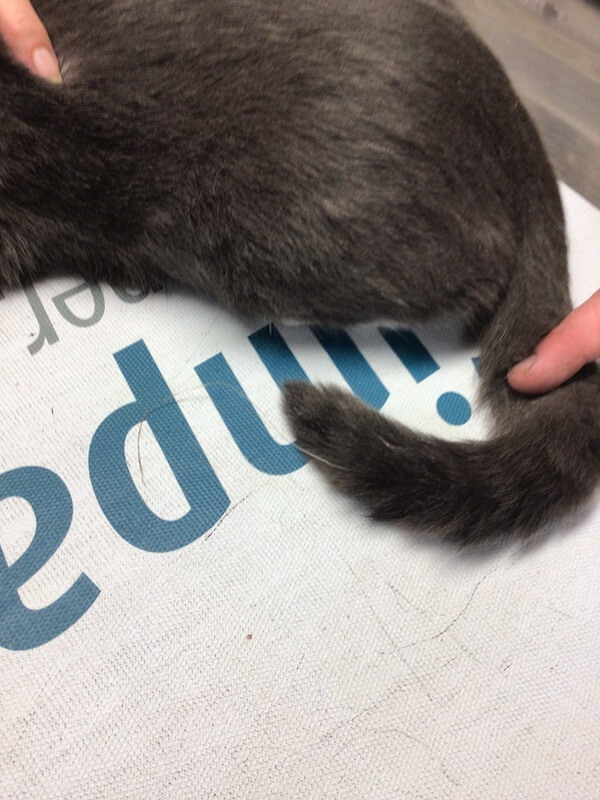 This month's feline Pet of the Month is Snappy. Snappy came to us for an unfortunately common problem seen with cats, string foreign bodies or entanglement.
This month's feline Pet of the Month is Snappy. Snappy came to us for an unfortunately common problem seen with cats, string foreign bodies or entanglement.
Snappy's tail became entangled in fishing line in her garage while playing. After coming to the Animal Hospital of Statesville it was determined that there was no injury, and the line was removed. This was lucky for Snappy but most commonly not the case. Cats commonly get hooked in fishing lures or impaled by sewing equipment while playing with string. Another common presentation is string ingestion which can cause serious and life-threatening GI issues typically requiring surgery.
Again, luckily for Snappy the fishing line was removed without incident and she is currently doing well. This unfortunate incident can be a warning to all cat parents, and why Snappy is our feline Pet of the Month!
Rosie
Canine Pet of the Month - October 2022
This month's pet of the month came to the Animal Hospital of Statesville unfortunately for help with a serious injury. Rosie presented for an injury she received after climbing then falling down a chain link fence. Rosie's snout was caught in the fence and was pushed upward causing severe injury to her gums, mouth, and nasal cavity.
Surgical repair of Rosie’s nose consisted of suturing available gum tissue, reattaching the front of her nose, and cannulating her nasal cavity to ensure it would not close during healing.
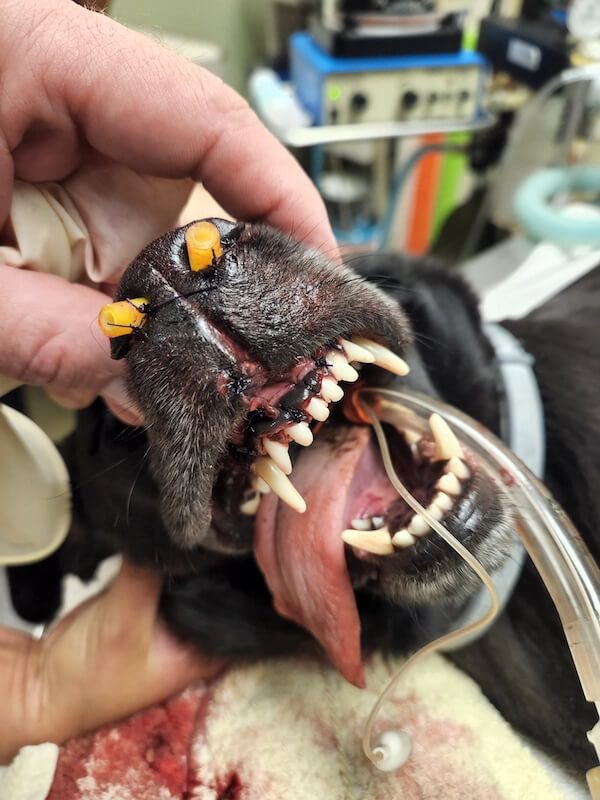
At Rosie's first recheck, she was doing great and healing well. She had removed one nasal stent from sneezing, and we removed the other stent. She was breathing through both nostrils well at this point.
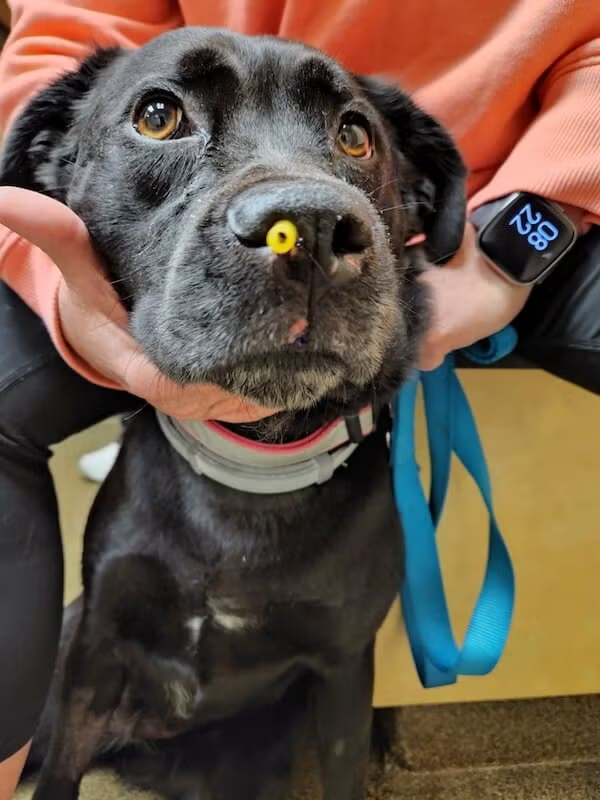 |
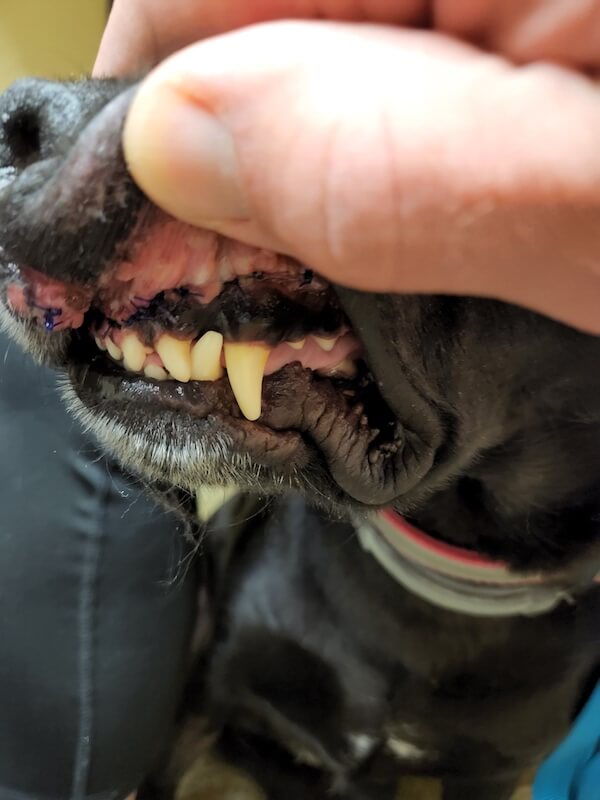 |
And at Rosie's last follow up her gums and nose had healed wonderfully, and she was doing great!
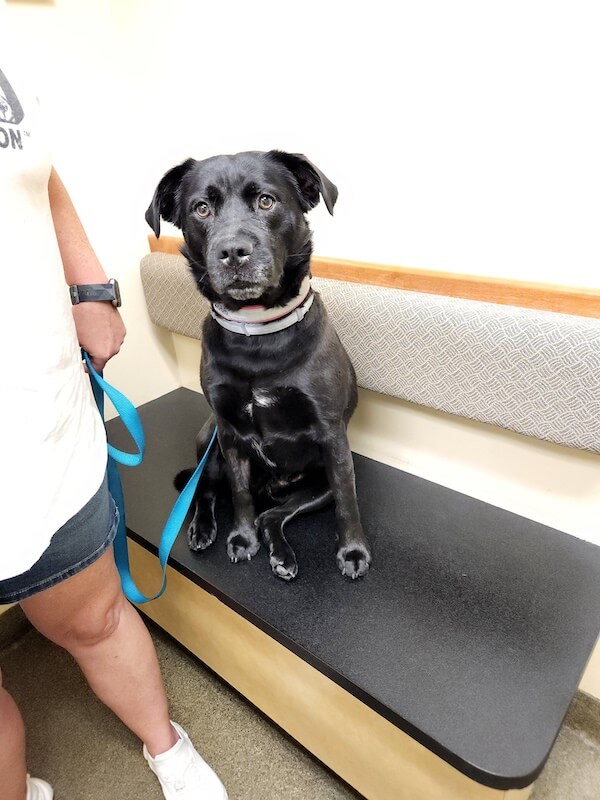 |
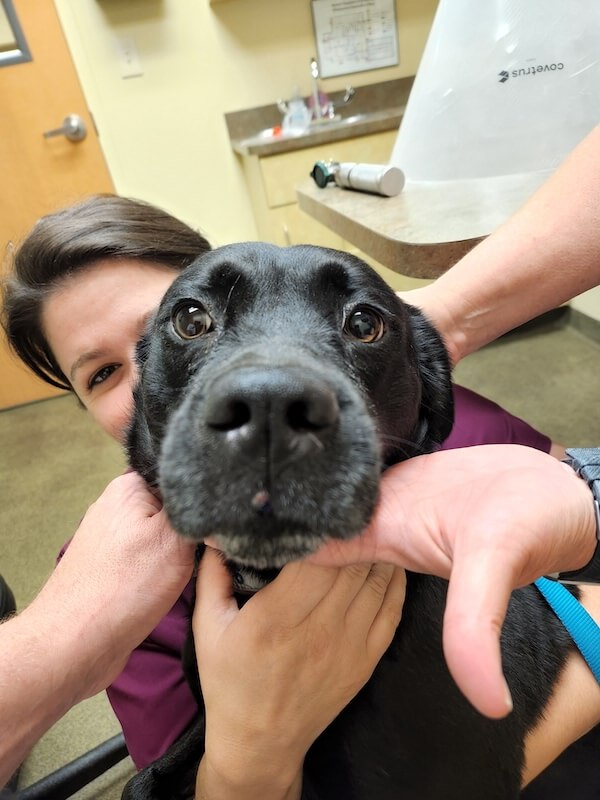 |
To see more images of the full surgery process, Click here. WARNING: GRAPHIC IMAGES. These images are of a surgical procedure and may not be suitable for the faint of heart.
Church
Feline Pet of the Month - October 2022
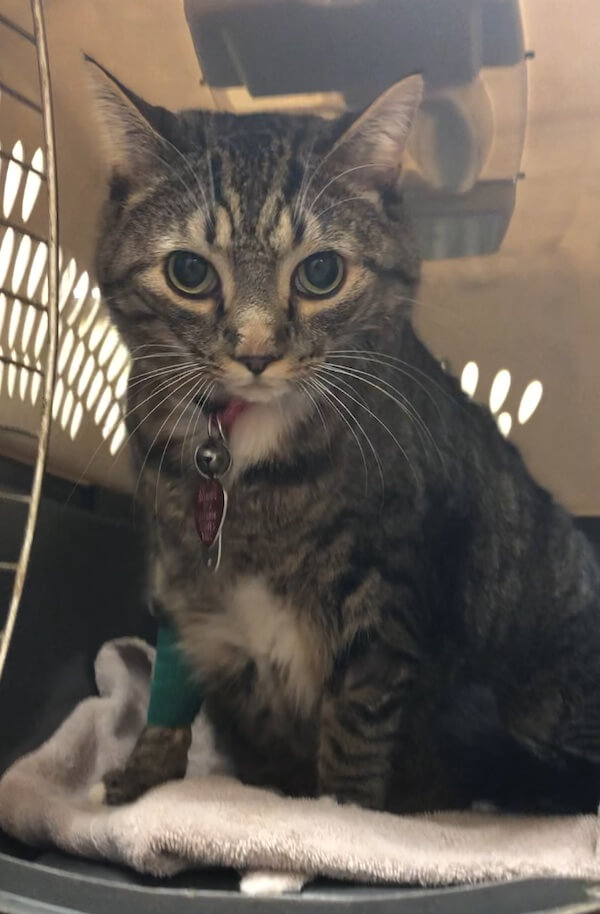 Church is a 3-year-old sweet tabby. He has a history of feline asthma which usually flares up seasonally in the spring and fall. Feline asthma occurs when a stimulus triggers the airway, causing inflammation. Sometimes this causes mild symptoms and other times, severe. Cats will show symptoms of coughing, wheezing and labored breathing. They may also be lethargic or stop eating. Imaging, such as radiographs, are the main way to diagnose. Church had had previous episodes of asthma before coming to us and was able to be treated with a steroid to control the inflammation in his airway. Inhaled steroids are preferred to systemic steroids to treat because they result in fewer side effects, especially since the patients often need long-term therapy. Church was managed on oral steroids that were reduced to the lowest effective dose. He did well for quite a while until his medications were stopped due to unforeseen reasons. He experienced an asthma attack this fall and presented to the hospital with open-mouth gasping, barely able to breathe. He was quickly given an IV injection and placed on oxygen support to help him breathe. Church is such a trooper and a few hours after he presented with a life-threatening condition, he was breathing comfortably and looking to be petted by our staff. He is now back on his regular medication to control his asthma and is happy at home. We are very grateful we were able to help Church and get him back with his family!
Church is a 3-year-old sweet tabby. He has a history of feline asthma which usually flares up seasonally in the spring and fall. Feline asthma occurs when a stimulus triggers the airway, causing inflammation. Sometimes this causes mild symptoms and other times, severe. Cats will show symptoms of coughing, wheezing and labored breathing. They may also be lethargic or stop eating. Imaging, such as radiographs, are the main way to diagnose. Church had had previous episodes of asthma before coming to us and was able to be treated with a steroid to control the inflammation in his airway. Inhaled steroids are preferred to systemic steroids to treat because they result in fewer side effects, especially since the patients often need long-term therapy. Church was managed on oral steroids that were reduced to the lowest effective dose. He did well for quite a while until his medications were stopped due to unforeseen reasons. He experienced an asthma attack this fall and presented to the hospital with open-mouth gasping, barely able to breathe. He was quickly given an IV injection and placed on oxygen support to help him breathe. Church is such a trooper and a few hours after he presented with a life-threatening condition, he was breathing comfortably and looking to be petted by our staff. He is now back on his regular medication to control his asthma and is happy at home. We are very grateful we were able to help Church and get him back with his family!
Piper
Canine Pet of the Month - September 2022
 This month's Pet of the Month is Piper. Piper is a 2-year-old Boston terrier that came to the Animal Hospital of Statesville for a swelling under her chin. The area was aspirated and showed the area was inflamed with an infection, so Piper was treated with pain/anti-inflammatory medications and antibiotics. Around a week later Piper came in for a recheck and the swelling had not improved so the decision was made to surgically explore the swelling. In surgery we were surprised to find the cause of the swelling and infection – A grass awn! Grass awns or foxtail awns are the seeds from naturally occurring grasses readily found in most areas. These seeds when they come in contact with the skin can sometimes embed in the skin and can migrate deeper to cause inflammation and infection. The awns are commonly found around the neck, face, or feet. Typically, these must be surgically removed as in this case, but most go on to a full recovery.
This month's Pet of the Month is Piper. Piper is a 2-year-old Boston terrier that came to the Animal Hospital of Statesville for a swelling under her chin. The area was aspirated and showed the area was inflamed with an infection, so Piper was treated with pain/anti-inflammatory medications and antibiotics. Around a week later Piper came in for a recheck and the swelling had not improved so the decision was made to surgically explore the swelling. In surgery we were surprised to find the cause of the swelling and infection – A grass awn! Grass awns or foxtail awns are the seeds from naturally occurring grasses readily found in most areas. These seeds when they come in contact with the skin can sometimes embed in the skin and can migrate deeper to cause inflammation and infection. The awns are commonly found around the neck, face, or feet. Typically, these must be surgically removed as in this case, but most go on to a full recovery.
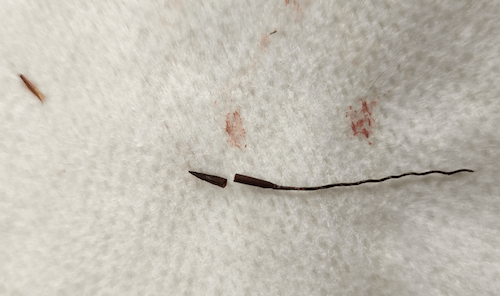 If you suspect your pet has issues with grass awn or have any questions, please call us at the Animal Hospital of Statesville.
If you suspect your pet has issues with grass awn or have any questions, please call us at the Animal Hospital of Statesville.
Goose
Feline Pet of the Month - September 2022
 Goose is such a cute sweet little kitten with a rough start! He was found when he weighed only 2 pounds. A little rough looking, snotty nosed, flea and tick infested little kitten. But his family saw the beauty in him and wanted to make his life better. He started out like a typical upper respiratory herpes viral snotty nosed kitten with squinty crusty eyes. But that is where the similarity stopped. Within a short amount of time, his owners noted something odd. His nose started to swell and the bridge of his nose started to bulge. His respiratory symptoms progressed.
Goose is such a cute sweet little kitten with a rough start! He was found when he weighed only 2 pounds. A little rough looking, snotty nosed, flea and tick infested little kitten. But his family saw the beauty in him and wanted to make his life better. He started out like a typical upper respiratory herpes viral snotty nosed kitten with squinty crusty eyes. But that is where the similarity stopped. Within a short amount of time, his owners noted something odd. His nose started to swell and the bridge of his nose started to bulge. His respiratory symptoms progressed.
When he first presented here, we discussed the concerns with his facial deformity and worried about a type of fungal infection that can cause a facial deformity like this. We were unable to find evidence of the fungal organism on swab slides under the microscope and started to treat him for viral and bacterial infection to see how he would respond.
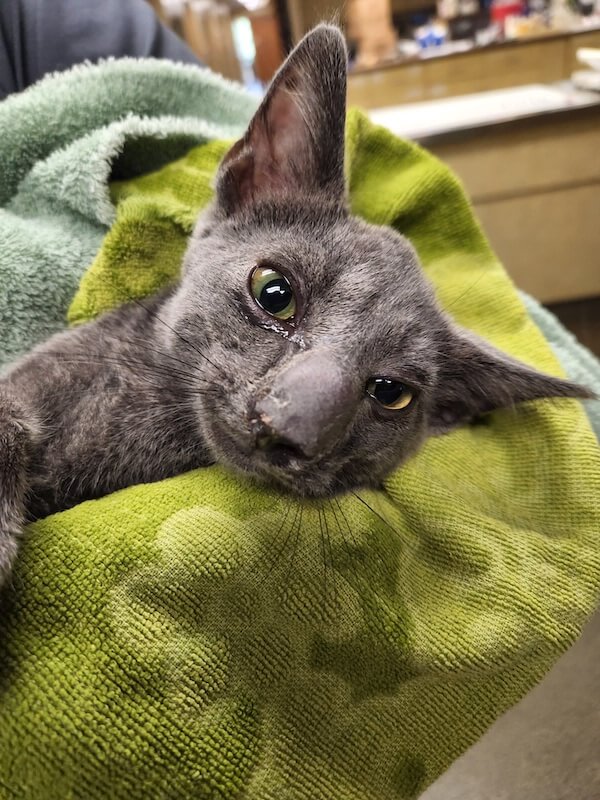 Within a week, he continued to progress. He was worsening and his family worried he was starting to suffer, but they wanted to give a little more time to see if he would respond to medications. By 2 weeks, they feared the worst, were to the point that they couldn’t watch him suffer any longer, and were about to consider humane euthanasia. When he came back to discuss and consider this option, we saw something a little different on that visit! We saw movement at the nostril. We saw what almost looked like an "eyeball" peeking out of that nostril! He had a fly larva growing inside his nostril!
Within a week, he continued to progress. He was worsening and his family worried he was starting to suffer, but they wanted to give a little more time to see if he would respond to medications. By 2 weeks, they feared the worst, were to the point that they couldn’t watch him suffer any longer, and were about to consider humane euthanasia. When he came back to discuss and consider this option, we saw something a little different on that visit! We saw movement at the nostril. We saw what almost looked like an "eyeball" peeking out of that nostril! He had a fly larva growing inside his nostril!
Within the 2 weeks since we first saw him, the larva grew large enough to fill the area of the nostril and was more present and visible at the opening. It was disgusting, but also very interesting to see! And much better news than we thought. We can fix this problem!
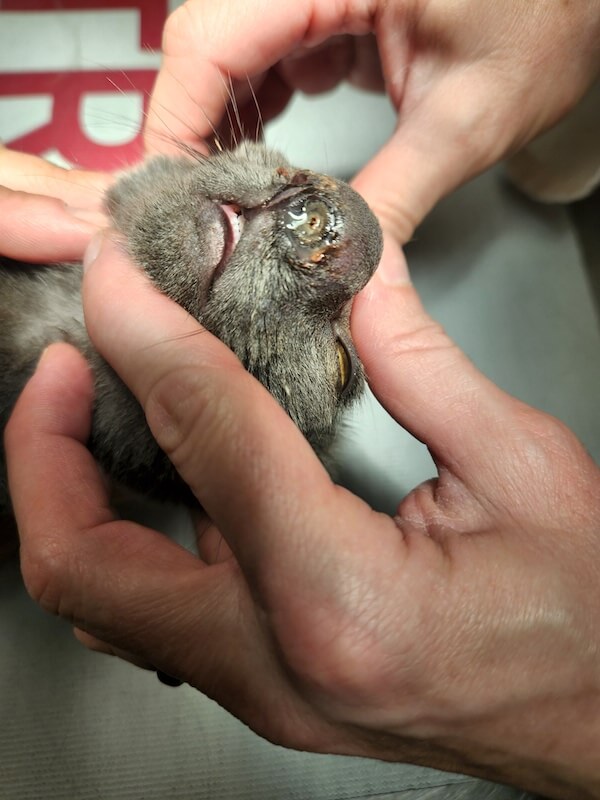 Goose was sedated. We applied some lubrication jelly over that nostril opening to “stress” the larva trying to breathe through the opening and watched as the larvae scooted more and more exposed from the nostril opening. At that time, we were able to grasp the front portion of the larva and pull hard and steady until the 1.5 inch long, 0.5 inch wide cuterebra bot larva was removed from the poor kitten’s less than quarter inch nostril!
Goose was sedated. We applied some lubrication jelly over that nostril opening to “stress” the larva trying to breathe through the opening and watched as the larvae scooted more and more exposed from the nostril opening. At that time, we were able to grasp the front portion of the larva and pull hard and steady until the 1.5 inch long, 0.5 inch wide cuterebra bot larva was removed from the poor kitten’s less than quarter inch nostril!
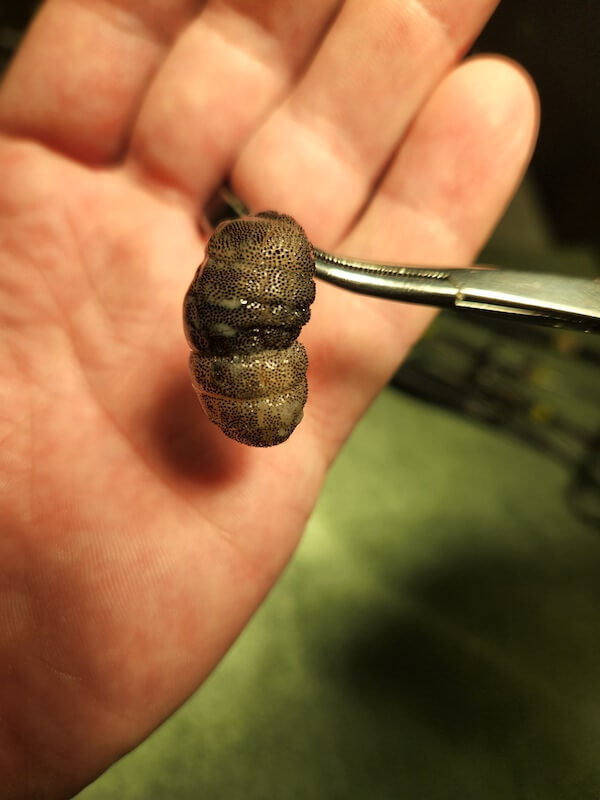 Cuterebra (or Botfly) is a relatively common insect in the area. They normally lay their eggs near rodent burrows and grow their larva stage (the warble) in rodents or rabbits, but sometimes cats are nosing around in rodent burrows and become the accidental host. They usually develop under the skin, but sometimes they can take hold in the nostril tissue like in Goose's case.
Cuterebra (or Botfly) is a relatively common insect in the area. They normally lay their eggs near rodent burrows and grow their larva stage (the warble) in rodents or rabbits, but sometimes cats are nosing around in rodent burrows and become the accidental host. They usually develop under the skin, but sometimes they can take hold in the nostril tissue like in Goose's case.
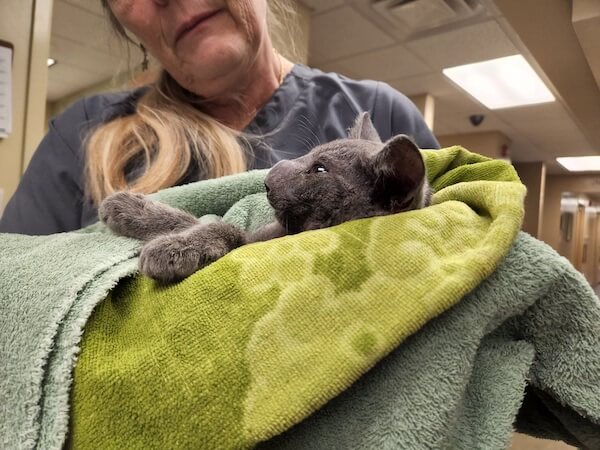 After removal, Goose was given another antibiotic injection and more time and he quickly responded. His facial deformity has improved dramatically and he appears to have minimal obvious residual damage. He is back to being a wild spunky kitten and we look forward to a long happy life with this sweet boy!! With the impressive nature of the presentation of this somewhat common problem, Goose has landed himself in the spotlight for Animal Hospital of Statesville's Cat Pet of the Month!!
After removal, Goose was given another antibiotic injection and more time and he quickly responded. His facial deformity has improved dramatically and he appears to have minimal obvious residual damage. He is back to being a wild spunky kitten and we look forward to a long happy life with this sweet boy!! With the impressive nature of the presentation of this somewhat common problem, Goose has landed himself in the spotlight for Animal Hospital of Statesville's Cat Pet of the Month!!
Phoenix
Canine Pet of the Month - August 2022
Phoenix is a smaller mixed dog that came in from her back yard suddenly unable to walk. On presentation to the Animal Hospital it was noted that Phoenix was paralyzed in her back legs. She was unable to stand or place her feet. She still had deep pain feeling. Phoenix's front legs were not affected. The suspicion was an intervertebral disc rupture. This can happen from a trauma or a hereditary degeneration seen in the discs of some dogs (especially the long backed dogs like dachshunds). An MRI of the spine by a neurologist to see the disc and to rule out other possibilities is necessary. Spinal surgery is typically indicated with sudden paralysis of this degree. Unfortunately, the owners were out-of-state and were unable to refer. The medical management entails corticosteroids and time. Although the corticosteroids do not remove the extruded disc material, it does reduce inflammation. Typically, within 14 days the patient will start to walk, and if this does not happen the paralysis is permanent. Phoenix was hospitalized and started intravenous steroids and sent home on prednisone by mouth. It took Phoenix 14 days of home care by her dedicated owners and she started to walk on her own. This was months ago. She recently had a wellness exam and her gait is now normal. Phoenix is a miraculous dog and that is why she is Animal Hospital of Statesville's canine Pet of the Month!
Kittsie
Feline Pet of the Month - August 2022
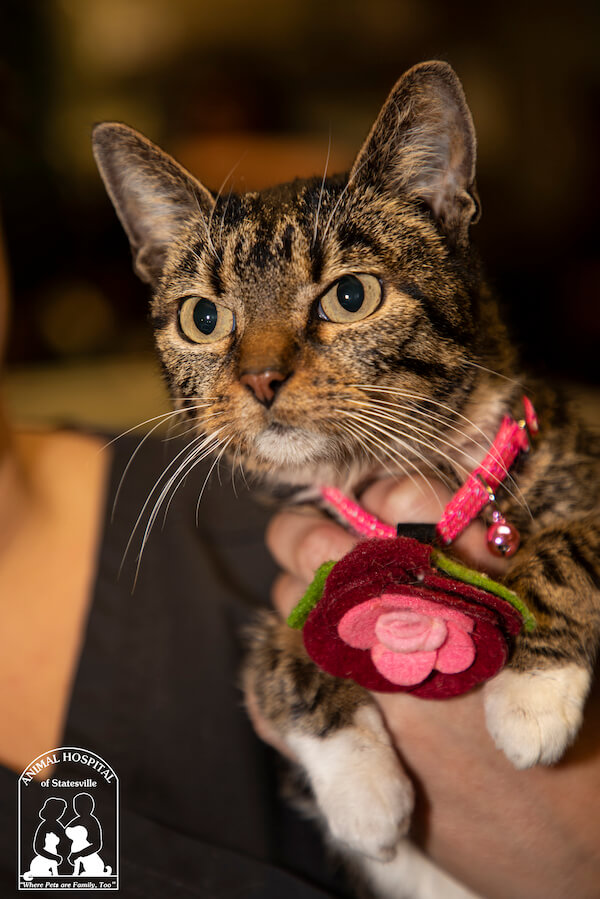 Kittsie is an older kitty who came to us in June. Her owners had just moved down from NY City and wanted a second opinion on Kittsie's issues. She had been diagnosed with nodules on her liver and kidney, was hyperthyroid and had a heart murmur. She was being treated with medications for her thyroid condition and supplements for her liver.
Kittsie is an older kitty who came to us in June. Her owners had just moved down from NY City and wanted a second opinion on Kittsie's issues. She had been diagnosed with nodules on her liver and kidney, was hyperthyroid and had a heart murmur. She was being treated with medications for her thyroid condition and supplements for her liver.
On presentation she was dehydrated and had severe weight loss, weighing only 4.2 pounds. Her blood screen did indicate liver issues and moderate anemia with a HCT of 25(normal 31-46). Most concerningly her kidney values were extremely high. In people we would start dialysis to help our kidneys detoxify the blood. There are very few places that can perform dialysis on a cat and it is extremely expensive. Her owners chose the route of diuresis which is giving the kitty fluids under the skin several times a week and forcing the kidneys to work.
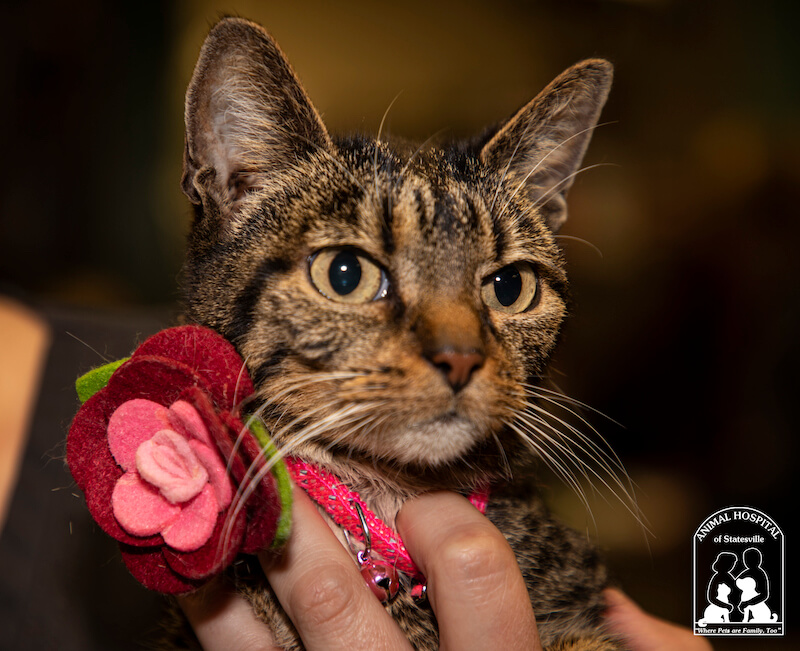 We did this for 2 weeks and Kittsie came back in for a recheck. Her kidney values had dropped significantly, and she felt better but was very weak. Unfortunately, her HCT had dropped to a critical level of 15. This is because the kidneys are also responsible for production of a hormone called erythropoietin. This hormone is responsible for telling the bone marrow that the body needs more red blood cells. As the kidneys fail, this hormone level can drop. The only option was to add the human analog of this hormone called darbepoetin. We were able to work with the local hospital to obtain a vial and began giving weekly injections, along with oral iron supplements. She continued her fluid treatments three times a week.
We did this for 2 weeks and Kittsie came back in for a recheck. Her kidney values had dropped significantly, and she felt better but was very weak. Unfortunately, her HCT had dropped to a critical level of 15. This is because the kidneys are also responsible for production of a hormone called erythropoietin. This hormone is responsible for telling the bone marrow that the body needs more red blood cells. As the kidneys fail, this hormone level can drop. The only option was to add the human analog of this hormone called darbepoetin. We were able to work with the local hospital to obtain a vial and began giving weekly injections, along with oral iron supplements. She continued her fluid treatments three times a week.
On her last recheck Kittsie's kidney values were almost normal and her HCT was up to 30-almost normal. Kittsie was feeling better and eating well. She had gained a whole pound. While we know that Kittsie's disease is a terminal one, she has responded remarkably well and her fighting spirit is an inspiration. For these reasons she is AHS's feline Pet of the Month.
Sam
Canine Pet of the Month - June 2022
Sam is a young Husky that came in on emergency for what his owner thought appeared to be an allergic reaction. He started with some swelling on his body and then showed with swelling on his face. The owner gave him an antihistamine, but it did not help, so they brought him in for an exam. He was still eating and acting otherwise normal.
Upon examination, it became quickly apparent this was no typical allergic reaction. His whole body was puffed up! Everywhere you felt (except his tail) he had a squishy feel where the skin was almost like a pillow, but it felt like you were moving something crinkly under the skin. Even all the way to his ear tips felt the same way!
This feeling is classic for what is called Subcutaneous Emphysema. In other words, it means air trapped under the skin. While we see this quite a bit after dog bites or trauma where the skin gets torn and pulled away from the tissues below, this was an extremely impressive example of this condition and would have been caused by something more than just a simple dog bite.
Upon closer examination under his thick coat, we discovered some healed scabs under his neck and asked the owner about trauma. Indeed, about a week prior, Sam had got into a fight with another dog, but he seemed fine and did not appear to have any significant wounds or issues. Unbeknownst to the owner, something more significant happened under the skin when the other dog bit Sam’s neck. Likely, the bite actually punctured or tore the windpipe under the skin. It was severe enough that he was leaking air out of the hole every time he breathed for more than a week, but not severe enough that he showed any other symptoms! Sam was eating well, breathing fine, running around and acting normal after the incident. Initially the air was difficult to detect early on under the skin because of his thick fluffy Husky coat until it got so bad it was spreading up around his face/head.
A tear in the trachea can happen for many reasons and oftentimes, amazingly enough, it heals on its own. Sometimes this can take several weeks to heal and other times it can involve a specialist emergency visit for surgery. Once the air gets under the skin and the windpipe is sealed/healed over, it can still take a few weeks for the air to reabsorb back into the body and the skin to lay back down against the underlying tissues. We discussed referral and specialized imaging to see if he had a tear that required surgery, but since Sam was doing so well and the owner felt the swelling had stabilized, the owner elected to monitor him a little longer to see if it continued to worsen or if he got better.
Sam continued to thrive and by 2 weeks, all of the air had disappeared and Sam’s owner reported that he was back to normal again. Sam’s case was a very interesting and very impressive case of Subcutaneous Emphysema from a dog bite windpipe injury with a very satisfying outcome. This earned him a spot in the Animal Hospital of Statesville’s canine Pet of the Month!
Coco
Feline Pet of the Month - June 2022
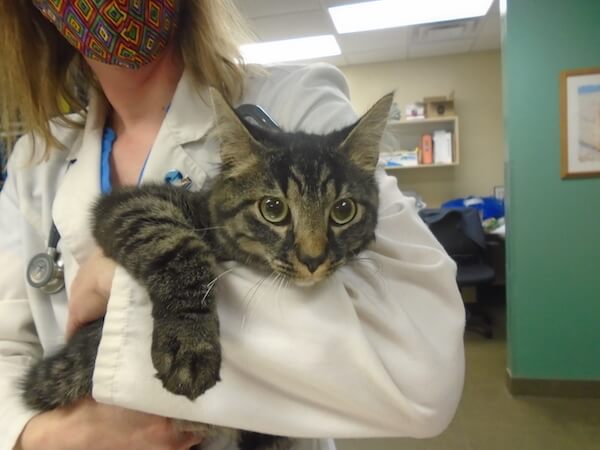 Coco presented after a terrible accident at home involving his leg. Coco was from a relatively new litter of feral kittens that recently got spayed/neutered. His owner found him after he tried to scale a fence. His leg slid between the wooden slats on the fence and he was hanging upside down by his leg. They were finally able to free him and brought him straight over for an emergency exam.
Coco presented after a terrible accident at home involving his leg. Coco was from a relatively new litter of feral kittens that recently got spayed/neutered. His owner found him after he tried to scale a fence. His leg slid between the wooden slats on the fence and he was hanging upside down by his leg. They were finally able to free him and brought him straight over for an emergency exam.
Upon examination, his leg was swollen below the knee all the way to the toes. He was unable to feel his toes and unable to use the leg, but he had good blood flow/nice coloration on his toenails. He had some mild superficial wounds on the leg where it was caught in the fence, but we worried that more wounds would progress as the damage became more apparent in the coming days. X-rays and exam did not reveal any actual fractures but the status of his hock/ankle joint did have some questionable stability issues.
Since there was not an obvious fracture and he was a young kitten (they heal amazingly from a lot of things!!!), Coco’s owner elected to keep him indoors, treat infection and pain, and give him time to see how things progressed. With the possibility of needing a leg amputation if the leg would not heal or become functional anymore, he still had a chance.
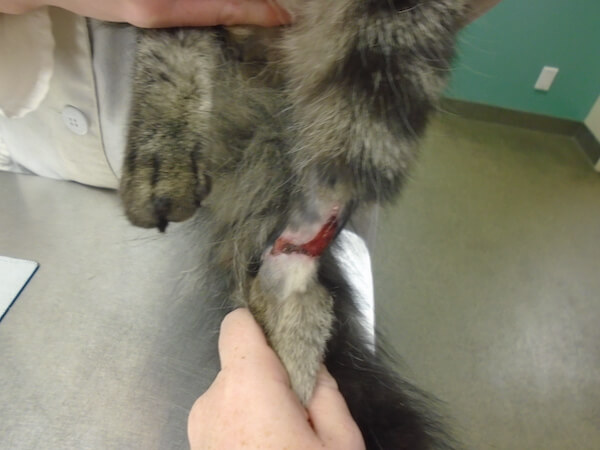 After a few more visits including followup visits and more antibiotics as some of the damaged skin started to slough, he started to thrive! He started to heal wonderfully. The wound scarred down and closed up. He started to use the leg better and better. Initially using it like a “post” to help balance, but then he was actually able to start to use it to propel himself while walking. While he still has an abnormal gait and sometimes can’t place the leg completely normal, he now acts like nothing is wrong and is a happy inquisitive kitten getting into everything as typical and expected.
After a few more visits including followup visits and more antibiotics as some of the damaged skin started to slough, he started to thrive! He started to heal wonderfully. The wound scarred down and closed up. He started to use the leg better and better. Initially using it like a “post” to help balance, but then he was actually able to start to use it to propel himself while walking. While he still has an abnormal gait and sometimes can’t place the leg completely normal, he now acts like nothing is wrong and is a happy inquisitive kitten getting into everything as typical and expected.
Coco may always have some degree of instability and some nerve damage, but we are happy to see that he can still live a very good and comfortable life. Given the ordeal he found himself in and his wonderful recovery, we are pleased to put Coco as Animal Hospital of Statesville’s Cat Pet of the Month!
Stone
Canine Pet of the Month - May 2022
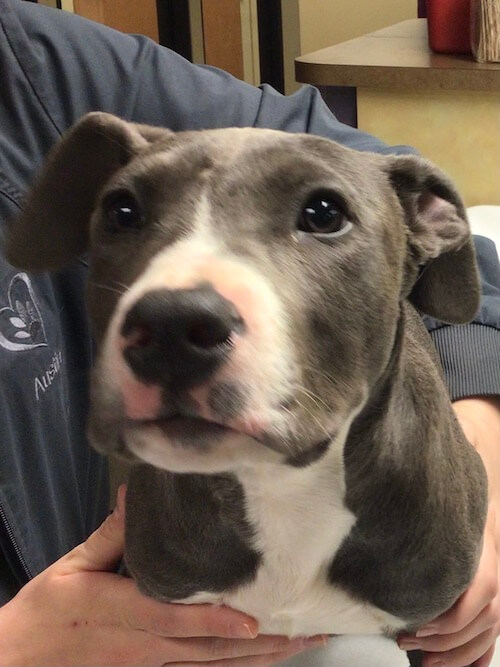 Stone is a cute little Pit Bull puppy, 3-4 months of age. Stone presented with about 5 inches of rectal tissue protruding and dangling from his rectum. Stone was bright and alert and the tissue was moist and not badly damaged. Likely, Stone had developed diarrhea and started straining to defecate and the tissues of the rectum protruded which facilitated more straining leading to more rectal tissue to prolapse. Stone was sedated and with much effort, the swollen rectal tissue was replaced and sutured into place with a purse-string suture in the rectum to prevent recurrence. Underlying causes of diarrhea were investigated and treated. Intestinal parasites and parvovirus are the largest diarrhea concerns in puppies this age. Stone was clear of both after testing, but we treated for intestinal parasites anyway in case there were worms in the intestine not shedding eggs. Stone was treated with metronidazole. This is an antibiotic and anti-inflammatory to stop diarrhea and inflammation. Stone was given gabapentin for pain. Gabapentin is also a bit sedating to prevent straining. Stone did well with the purse string suture and left it in place. He defecated through the small opening. The suture was removed a week later. If the prolapse recurs, aggressive surgery is often needed. Stone is currently doing well. Stone was an interesting case and neat little puppy. That is why he is our canine Pet of the Month.
Stone is a cute little Pit Bull puppy, 3-4 months of age. Stone presented with about 5 inches of rectal tissue protruding and dangling from his rectum. Stone was bright and alert and the tissue was moist and not badly damaged. Likely, Stone had developed diarrhea and started straining to defecate and the tissues of the rectum protruded which facilitated more straining leading to more rectal tissue to prolapse. Stone was sedated and with much effort, the swollen rectal tissue was replaced and sutured into place with a purse-string suture in the rectum to prevent recurrence. Underlying causes of diarrhea were investigated and treated. Intestinal parasites and parvovirus are the largest diarrhea concerns in puppies this age. Stone was clear of both after testing, but we treated for intestinal parasites anyway in case there were worms in the intestine not shedding eggs. Stone was treated with metronidazole. This is an antibiotic and anti-inflammatory to stop diarrhea and inflammation. Stone was given gabapentin for pain. Gabapentin is also a bit sedating to prevent straining. Stone did well with the purse string suture and left it in place. He defecated through the small opening. The suture was removed a week later. If the prolapse recurs, aggressive surgery is often needed. Stone is currently doing well. Stone was an interesting case and neat little puppy. That is why he is our canine Pet of the Month.
Axle
Feline Pet of the Month - May 2022
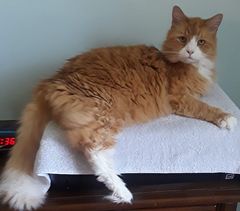 Axle is a seventeen-year-old cat that presented to the emergency clinic in January for weight loss, vomiting and lethargy. Blood screening performed there indicated moderate kidney disease and dehydration. Axle came to us the next morning for continued care.
Axle is a seventeen-year-old cat that presented to the emergency clinic in January for weight loss, vomiting and lethargy. Blood screening performed there indicated moderate kidney disease and dehydration. Axle came to us the next morning for continued care.
On presentation, Axle had lost 4 pounds since his last visit 3 years prior. Most of his weight loss was due to loss of muscle mass. He was dehydrated and very mopey. A urinalysis did indicate kidneys that were not only not detoxifying the blood appropriately, but not filtering it well either.
Renal disease is not uncommon in cats as they age. Treatment, though, can be quite frustrating. It focuses on special diets and forcing the cat’s kidneys to work. For me or you, this would mean dialysis, where a machine cleanses our blood. While that can be done in pets, it is cost-prohibitive for most clients. The next best option is called diuresis. This is forcing the kidneys to work by giving them extra fluids to process. The best way to do this is with an IV catheter and hospitalization. While this is a great short-term option, it is not a long-term plan. The final way is by giving fluids under the skin and letting the body absorb them naturally. This was the option chosen with Axle. Now, we had to determine the amount and frequency.
We started with 100 ml twice weekly and though Axle felt better, his kidney values continued to climb. We slowly worked the amount and frequency up and eventually the values began to improve. Axle started eating better and his weight started improving. We finally settled on 250mls three times a week.
Axle is eating well, his kidney values have almost normalized, and he has gained over 1 pound. While we know that this treatment is not a cure, we hope to maintain Axle for a long time. For these reasons Axle is this month’s feline Pet of the Month.
Freya
Canine Pet of the Month - April 2022
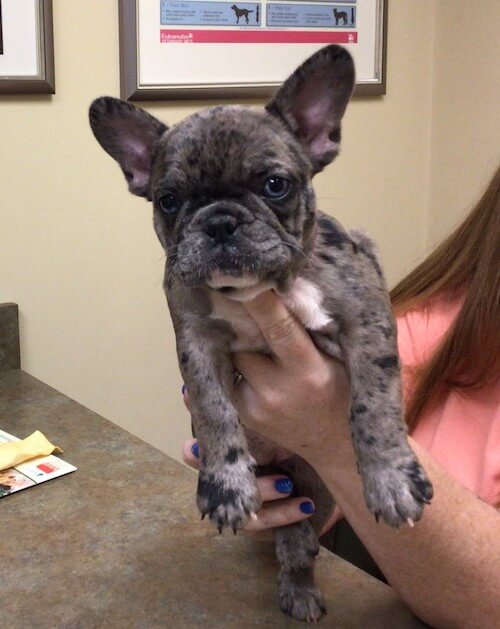 Freya is a very sweet and adorable puppy with a very common facial conformation. Freya is a French Bulldog. French Bulldogs have what is called Brachycephalic Syndrome. This is a common syndrome in "smushed face" dogs like Freya, other French Bulldogs, English Bulldogs, and Pugs to name a few. Brachycephalic Syndrome may not seem like a problem to many people as many dogs may never appear to have significant issues, but it is a condition that needs to be understood and respected.
Freya is a very sweet and adorable puppy with a very common facial conformation. Freya is a French Bulldog. French Bulldogs have what is called Brachycephalic Syndrome. This is a common syndrome in "smushed face" dogs like Freya, other French Bulldogs, English Bulldogs, and Pugs to name a few. Brachycephalic Syndrome may not seem like a problem to many people as many dogs may never appear to have significant issues, but it is a condition that needs to be understood and respected.
Because these dogs have the shorter nose/compressed faces, they have a few common abnormalities that can cause problems. The most commonly discussed components of Brachycephalic Syndrome include : Stenotic Nares, Elongated Soft Palate, Hypoplastic Trachea, and sometimes Everted Laryngeal Saccules. Stenotic Nares are collapsed nostril openings causing constriction of airflow. Elongated Soft Palate happens since the soft palate in the top of the mouth is essentially the same length as a longer nosed dog, so when the dog’s nose is not as long, the extra tissue flops in the back of the throat potentially covering the air flow to the trachea. Hypoplastic Trachea means that the windpipe is not the appropriate diameter for the size or type of dog, also restricting some airflow when the dogs breathe. Everted Laryngeal Saccules can happen sometimes when there is too much pressure in the back of the throat when these dogs try to breathe. Some think of it like “swollen tonsils” which can also restrict normal breathing.
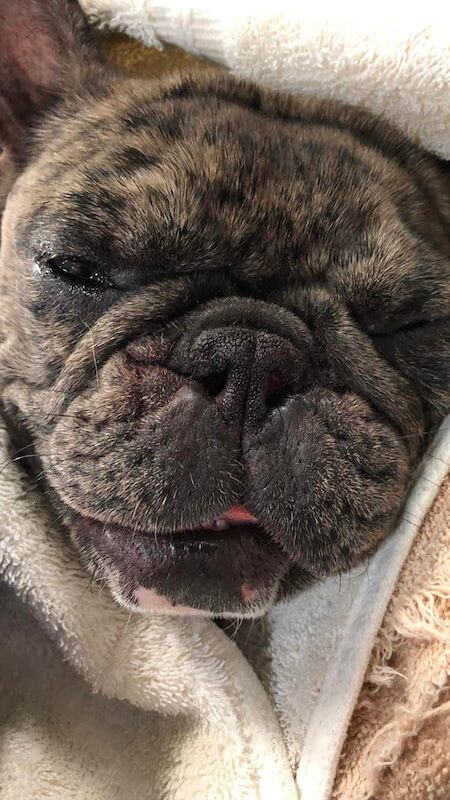 While these changes are “normal” for these breeds, it doesn’t mean it comes without potential complications or concerns. Some dogs have issues so severe that they are unable to even perform normal everyday activities without struggling to breathe and having life threatening complications. Even dogs that appear to compensate well for normal activities are still at higher risk for getting overheated easily and struggle to breathe with differing degrees of exertion and activity. It is important that care is taken to not let dogs of these breeds get overheated or too worked up.
While these changes are “normal” for these breeds, it doesn’t mean it comes without potential complications or concerns. Some dogs have issues so severe that they are unable to even perform normal everyday activities without struggling to breathe and having life threatening complications. Even dogs that appear to compensate well for normal activities are still at higher risk for getting overheated easily and struggle to breathe with differing degrees of exertion and activity. It is important that care is taken to not let dogs of these breeds get overheated or too worked up.
While there is nothing that can be done to correct several components of Brachycephalic Syndrome, there are a few things that can be done. We have the ability to surgically improve the Stenotic Nares and the Elongated Soft Palate. By opening the nares wider, breathing of these breeds can be improved. By removing part of the soft palate to make it shorter, breathing of these breeds can be improved and some chronic changes may be improved as well.
It is most common for these procedures to be performed when the puppies are spayed or neutered about 6-8 months old to help get maximum long-term benefit from the changes. Freya had her stenotic nares surgically repaired when spayed and now she has much wider openings to allow better airflow! Freya did great with her surgery and looked great after recovery. We are happy to help Freya’s situation and improve her breathing and quality of life. For this teaching moment, Freya gets to be the Animal Hospital of Statesville’s canine Pet of the Month!
Floyd
Feline Pet of the Month - April 2022
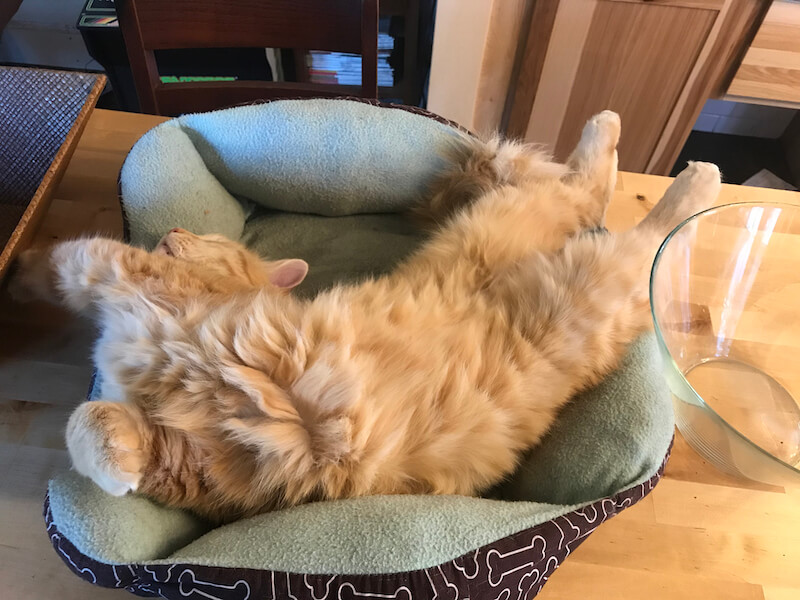 Floyd is a handsome 2-year-old kitty who enjoys being outside. He recently came to see us due to a very traumatic event. He had been shot with an arrow and the arrow was lodge in his body. His owners thought surely he would die, but he is a survivor. They reluctantly removed the arrow as they knew he would be unable to function with the arrow in the position it was in. This is not always advisable as we do not know what damage has been done by the impact and this could cause more damage if not done in a controlled setting in the hospital.
Floyd is a handsome 2-year-old kitty who enjoys being outside. He recently came to see us due to a very traumatic event. He had been shot with an arrow and the arrow was lodge in his body. His owners thought surely he would die, but he is a survivor. They reluctantly removed the arrow as they knew he would be unable to function with the arrow in the position it was in. This is not always advisable as we do not know what damage has been done by the impact and this could cause more damage if not done in a controlled setting in the hospital.
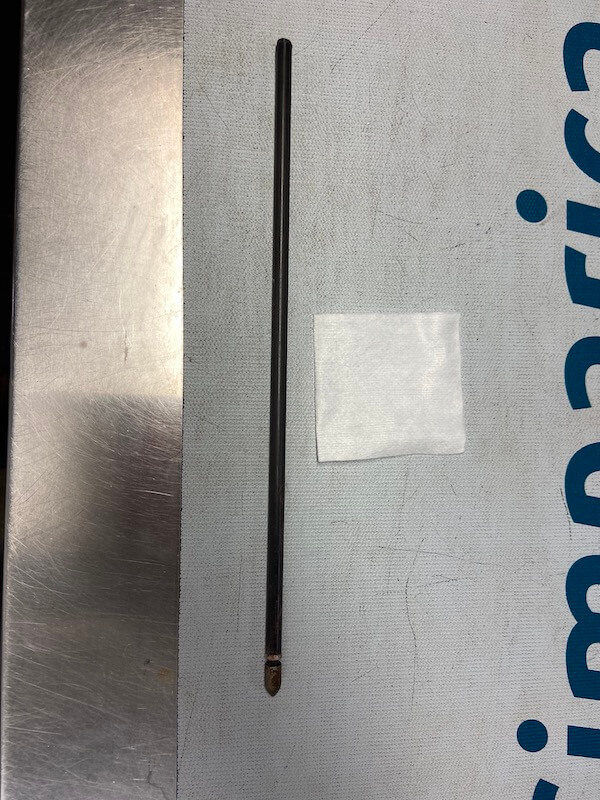 Fortunately for Floyd, the arrow was able to be removed without further insult. His owners believe he was targeted for this incident which is more than tragic! The arrow miraculously went through his skin and then exited superficial to his spine and internal organs which could have either paralyzed him or killed him on impact.
Fortunately for Floyd, the arrow was able to be removed without further insult. His owners believe he was targeted for this incident which is more than tragic! The arrow miraculously went through his skin and then exited superficial to his spine and internal organs which could have either paralyzed him or killed him on impact.
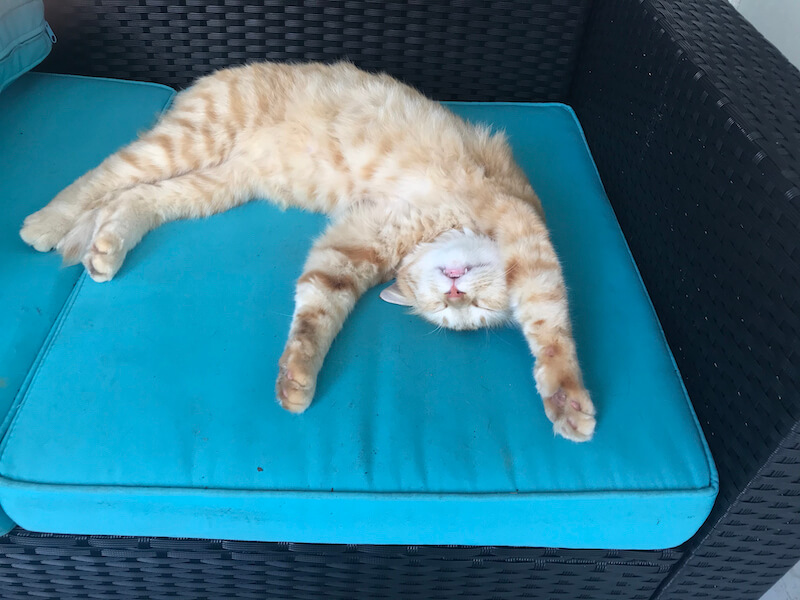 We were able to treat his wounds and manage his pain while his body healed. There were no major organs affected. He has since made a full recovery and even his fur is growing back. We are amazed at how brave he was throughout this entire ordeal. He was the perfect patient and did not complain about any of the treatment he received. This is why we selected Floyd to be our feline Pet of the Month!
We were able to treat his wounds and manage his pain while his body healed. There were no major organs affected. He has since made a full recovery and even his fur is growing back. We are amazed at how brave he was throughout this entire ordeal. He was the perfect patient and did not complain about any of the treatment he received. This is why we selected Floyd to be our feline Pet of the Month!
Diesel
Canine Pet of the Month - March 2022
 Our pets manifest discomfort in many ways. Many pets may vocalize or whine when in pain, some retreat or hide and some exhibit behavioral changes. The Pet of the Month this month is Diesel, a 2-year-old Rottweiler, that presented for bilateral entropion. An entropion is an eye condition that occurs when the eyelids do not fit the eye well. The eyelids essentially roll inwards into the eye itself, exposing the very sensitive cornea and conjunctiva to the haired skin on the eyelid. This condition can be extremely painful causing chronic irritation to the eye and sometimes resulting in permanent damage.
Our pets manifest discomfort in many ways. Many pets may vocalize or whine when in pain, some retreat or hide and some exhibit behavioral changes. The Pet of the Month this month is Diesel, a 2-year-old Rottweiler, that presented for bilateral entropion. An entropion is an eye condition that occurs when the eyelids do not fit the eye well. The eyelids essentially roll inwards into the eye itself, exposing the very sensitive cornea and conjunctiva to the haired skin on the eyelid. This condition can be extremely painful causing chronic irritation to the eye and sometimes resulting in permanent damage.
When Diesel presented, both of his eyes were swollen and painful, he retreated to the corner of the exam room and postured in an aggressive way to the staff while trying to examine him. Shortly after, Diesel came in for surgery and both of his eyelids were surgically altered to correct his entropion.
Around two weeks later Diesel came in for a follow up exam and suture removal. Diesel's behavior had drastically changed. He was doing great, happy to be around people and came up to everyone for petting and praise.
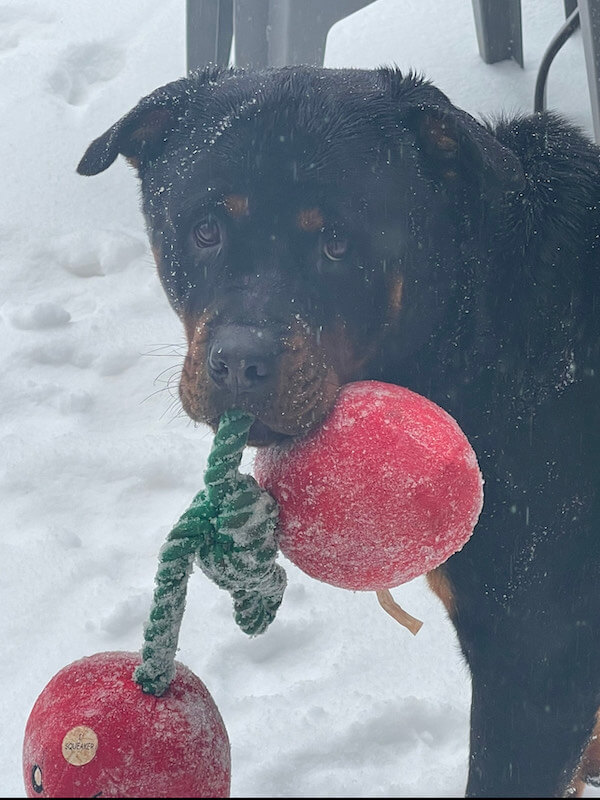 As discussed before, Diesel's aggression was a manifestation of his pain. Our pets do not understand where pain associated with malformation, injury or arthritis is directly coming from, which can sometimes cause behavioral changes like the ones seen here. Diesel's eyes were a source of chronic pain which caused him to become aggressive with his surroundings. Once his eyes healed after surgery, he was friendly and approachable.
As discussed before, Diesel's aggression was a manifestation of his pain. Our pets do not understand where pain associated with malformation, injury or arthritis is directly coming from, which can sometimes cause behavioral changes like the ones seen here. Diesel's eyes were a source of chronic pain which caused him to become aggressive with his surroundings. Once his eyes healed after surgery, he was friendly and approachable.
This case makes an important point about pain and discomfort in our pets. Our pets do not show pain in the same way people do. Most commonly your pet may just “act different”, possibly not wanted to do typical activities or hiding. Just because a pet is not crying out or actively limping does not mean they are not experiencing pain. If you have any questions about pain management in your pet, please call us at the Animal Hospital of Statesville.
Baxter
Feline Pet of the Month - March 2022
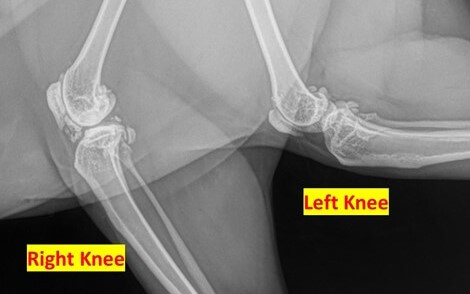 As a survival trait our pets have maintained from the wild, cats are masters at disguising their own health issues. From urinary and dental issues to arthritic pain, cats are commonly under or undiagnosed with these issues until the problem has become much more severe.
As a survival trait our pets have maintained from the wild, cats are masters at disguising their own health issues. From urinary and dental issues to arthritic pain, cats are commonly under or undiagnosed with these issues until the problem has become much more severe.
Our feline Pet of The Month this month is Baxter, a 5-year-old domestic shorthair that came to the Animal Hospital of Statesville for lameness issues in his hind limbs. After examining Baxter, his right stifle or knee was identified to be the cause of his pain. Radiographs of his knee were taken, and his right knee has severe osteoarthritic changes probably form an old injury. Baxter's radiograph is pictured here.
Cats are notoriously hard to medicate orally and are more sensitive to common NSAIDs used in dogs for osteoarthritis. In Baxter's case, typical pain medications were not controlling his pain well enough which necessitated the need for alternative treatment.
Joint injections, which are common in human medicine, provide pain and inflammation relief directly at the source of lameness. Baxter's right knee was injected with similar medications used in human medicine to help alleviate his pain. After a few weeks, Baxter is doing much better and can get around and jump more normally.
Baxter's case is a good example of alternative treatments available for our patients for treatment of osteoarthritis pain. Joint injection is one of those services offered here at the Animal Hospital of Statesville and has shown promising results. If you think your pet could benefit from treatments such as these for osteoarthritic pain, please call us at the Animal Hospital of Statesville to schedule an appointment.
Chloe
Canine Pet of the Month - February 2022
Chloe is a 10-year-old female Collie that presented as a second opinion on a mass in the abdomen. Chloe had had some swelling of the vulva and licking the vulva a lot. In her investigation of this issue, an abdominal mass was found at the prior veterinary clinic and exploratory surgery was recommended. The owner was considering surgery but wanted to be sure it was the right thing for Chloe. Chloe also had a history, prior to the owner obtaining her as a rescue dog, of having an ovarian remnant. This is a piece of ovary left behind inadvertently during a spay. This tissue will intermittently produce estrogen and the female dog may show signs of estrus or heat although she cannot breed or have puppies. Chloe had had some subtle estrus signs years ago but not in a long time according to the owner. It was suspected that this current vulvar swelling currently was related to this potential ovarian remnant. An ultrasound was performed, and a large cystic fluid-filled mass under a very small urinary bladder was found. The mass encompassed most of the abdomen. There was concern that this mass could be an abscess at the old uterine stump from a prior surgery. We did an needle aspirate, guided by ultrasound. Cystic fluid was found. In addition, we performed a normal blood screen, indicating this cystic mass was unlikely to be infection. A kidney-like mass was also noted in the left cranial abdomen. This was either an undersized kidney, a tumor, or an old ovarian remnant. Due to the size of the mass and decreasing quality of life that Chloe was facing, we recommended exploratory surgery as well after normal blood work and chest x rays were obtained. Chloe was cleared for surgery. The large cystic mass was removed and determined to be a pocket of cystic vagina due to hyperplasia or proliferation of the tissue. The mass in the cranial abdomen was an ovarian remnant that had turned into a tumor and was secreting estrogen. The abnormal hormone levels likely led to the cystic vaginal hyperplasia. The pathology indicated full removal of the ovarian tumor and a good prognosis. Post operatively, Chloe has done well. All her vulvar swelling has resolved, and Chloe feels good. Chloe's case was difficult to sort out and very unusual and has a happy ending. That is why Chloe is our Canine Pet of the Month.
Blue
Feline Pet of the Month - February 2022
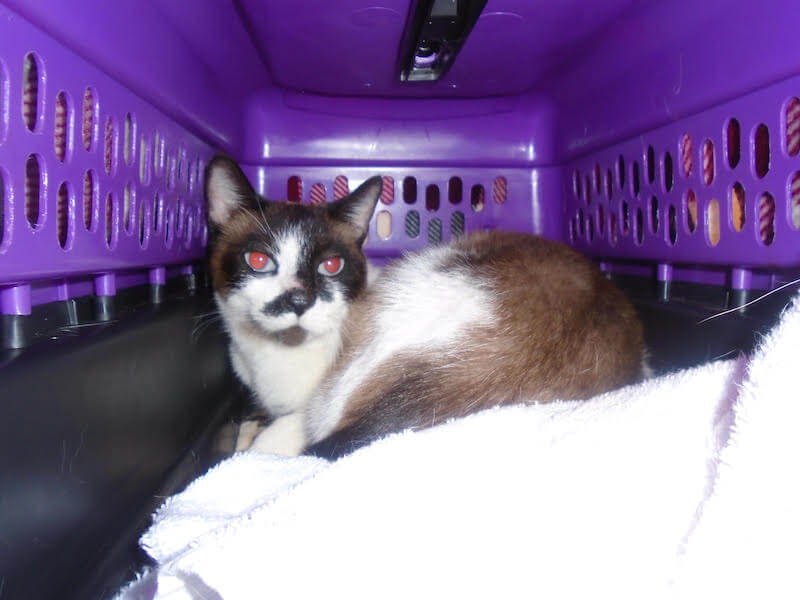 Blue is a very fortunate kitty indeed. Blue is a young cat who was being cared for as a stray by one of our clients for many months. She was able to catch him and called to bring him in to be "fixed". We routinely scan all the pets who come to us for surgery with our physical exam and, sure enough, a microchip had been placed in Blue. We called the microchip company who was able to reach out to the true owner who was living in Myrtle Beach.
Blue is a very fortunate kitty indeed. Blue is a young cat who was being cared for as a stray by one of our clients for many months. She was able to catch him and called to bring him in to be "fixed". We routinely scan all the pets who come to us for surgery with our physical exam and, sure enough, a microchip had been placed in Blue. We called the microchip company who was able to reach out to the true owner who was living in Myrtle Beach.
The story behind Blue was very sad. His owner was in the process of moving to Myrtle Beach. The movers had packed up the truck and she was in the process of packing her car. Blue was placed in his cat carrier and positioned in the back seat as his owner went back for another load. Unbeknownst to her, the carrier door was not latched completely. Blue was able to knock the door open and escape from the car. His owner looked for him for 2 hours but eventually had to leave to catch up with the movers. She had given him up for lost. Six months passed.
Well, Blue apparently found another loving soul who adopted him until he was captured for his surgery. The client who found him was overjoyed that his original owner had been found and his original owner drove up the next day to get him. The reunion was priceless.
Blue's situation is a perfect example of why we recommend all pets be microchipped AND registered. If either one of those steps had not been followed, Blue would never have been reunited with his original owner. For these reasons Blue is AHS's feline Pet of the Month.
Maddyn Underwood
Canine Pet of the Month - January 2022
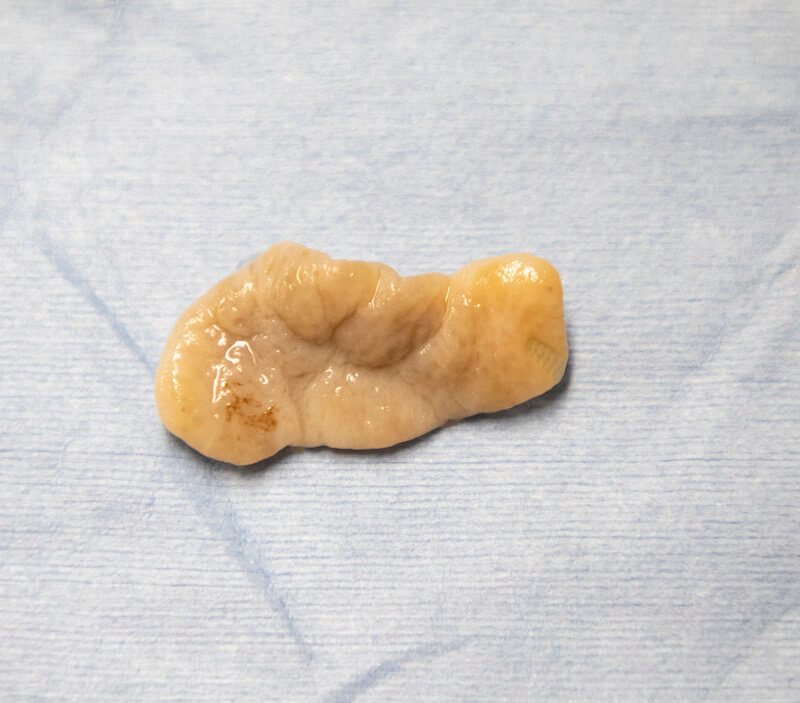 This month’s canine Pet of the Month is Maddyn, a 7-year-old Pit Bull mix. Maddyn was here undergoing a routine dental cleaning. Upon oral exam, a tongue-like mass was identified in the back of her throat near her trachea (windpipe). This mass was removed with no issues. In conversation with Maddyn’s owner post-dental, it was discovered that Maddyn had a history of coughing after exercise. We now believe that the excessive tissue/growth was the cause. Maddyn is now doing well after her 2-week follow up.
This month’s canine Pet of the Month is Maddyn, a 7-year-old Pit Bull mix. Maddyn was here undergoing a routine dental cleaning. Upon oral exam, a tongue-like mass was identified in the back of her throat near her trachea (windpipe). This mass was removed with no issues. In conversation with Maddyn’s owner post-dental, it was discovered that Maddyn had a history of coughing after exercise. We now believe that the excessive tissue/growth was the cause. Maddyn is now doing well after her 2-week follow up.
This is a great case showing the importance of regular dental care for our pets. In a full dental procedure, the cleaning is performed, but anesthesia allows us to perform full oral exams at that time, as well, enabling us to find issues previously unknown. Regular exams and dental cleanings are important, not only for dental health, but oral health as well.
Damon
Feline Pet of the Month - January 2022
Damon is a sweet and very handsome kitty that presented for some eye troubles. He normally stays indoors only, but he slipped out the door one time back in the summer and was missing for a few weeks!! Luckily, he was found again and returned home. At that time, his owners noted that his eye seemed a little “off”, but didn’t seem serious and he didn’t act like anything was wrong, so they just monitored him at home.
For months, things seemed stable, unchanged, and he was comfortable and happy. Over time, his eye went from more cloudy, to less cloudy, then more cloudy again and started with some discharge so they decided to bring him in for evaluation. On exam, Damon did not act painful or resistant for evaluation of the eye. It had edema in the cornea and some older changes likely from whatever happened back in the summer. One of the more noted abnormalities of his exam was that the eye was soft but misshapen.
With the history, the potential trauma when he was gone for 2 weeks, and the exam findings, it was determined that he likely had some trauma to the eye that caused the very thin corneal layer to break open. His eye had ruptured! His body tried its best to prevent the internal contents of the eye from leaking out and tried to seal the hole the best it could, and it did a pretty good job, considering! However, the eye was clearly abnormal and was not able to be repaired to its original state or function.
Although it was not obvious that he was in pain, it can be hard to tell with cats as they are very good at hiding pain and adjusting to things that happen to them just to move on with their lives. Given that the eye was beyond repair, the eye started to cause changes leading to some discharge and potentially external inflammation, and he could not see out of that eye, Damon’s owners decided the best course of action would be to remove the eye. He had the surgery done, recovered wonderfully, and is doing great!!
Damon is the AHS Cat of the month for several reasons. One, of course, is that he is a fantastic boy, recovered from his surgery wonderfully, and is doing great with only one eye! But there are 2 other reasons I want to highlight in his case since it is meant to be a learning situation for others. First, there are many reasons for surgical removal of an eye on a pet. Many people are initially shocked to hear anyone suggest such a procedure for their pet and worry that it is too drastic of a procedure. They worry that it is not fair or a good quality of life to remove an eye. This can be far from true in many cases! If we are recommending removal of the eye, it is likely because the eye is no longer functional, may be painful for the animal, and/or may create a painful situation later in life. So, it is actually a positive move for the pet to remove the eye and they can do very very well with only 1 eye! Second, I want to highlight how serious an eye thing can potentially be or become even if it doesn’t look too bad! He seemed fine and his eye didn’t look that abnormal, but he had actually ruptured his eye at some point!
We are so happy Damon is doing well and back to his normal antics and happy to have him as the AHS Feline Pet of the Month!
Mac
Canine Pet of the Month - October 2021
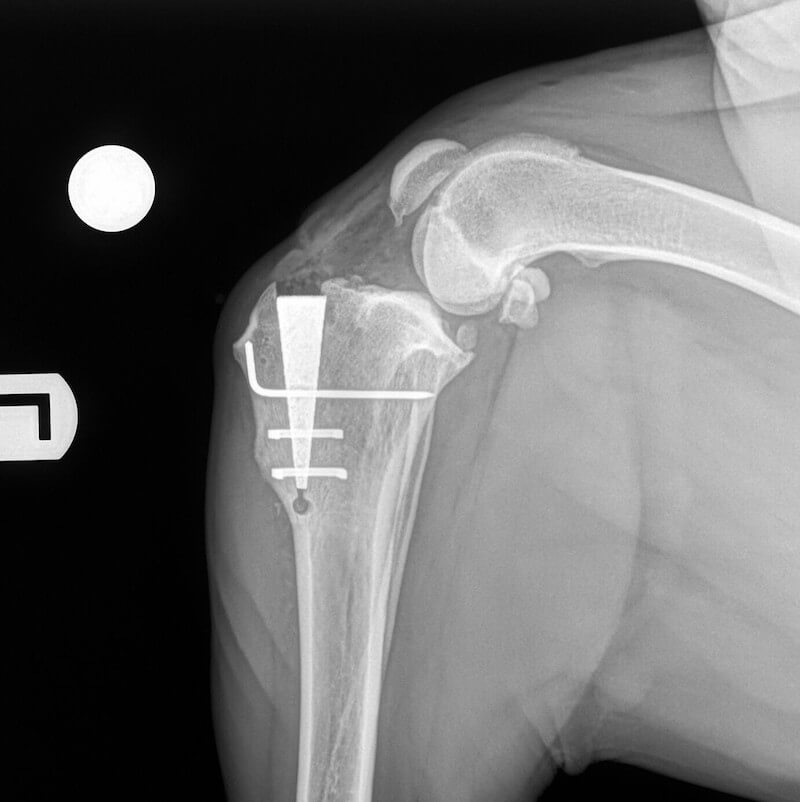 This month's pet of the month is Mac. Mac was diagnosed with a ruptured cranial cruciate ligament in his left knee. Cruciate ligament rupture/injuries are unfortunately common in dogs and a common cause of chronic lameness. The cruciate ligaments serve to stabilize the knee joint and injury or rupture to the cranial cruciate ligament leads to joint laxity, pain, and the development of arthritis. Mac underwent a new procedure offered here at the Animal Hospital of Statesville, the Modified Maquet Procedure or MMP.
This month's pet of the month is Mac. Mac was diagnosed with a ruptured cranial cruciate ligament in his left knee. Cruciate ligament rupture/injuries are unfortunately common in dogs and a common cause of chronic lameness. The cruciate ligaments serve to stabilize the knee joint and injury or rupture to the cranial cruciate ligament leads to joint laxity, pain, and the development of arthritis. Mac underwent a new procedure offered here at the Animal Hospital of Statesville, the Modified Maquet Procedure or MMP.
The MMP is a surgical stabilization of the knee joint once a cranial cruciate ligament injury has occurred. The procedure entails inserting a titanium wedge into the tibia and with help from the quadriceps and patellar tendon stabilize the knee joint.
In the radiograph you can see the result of the surgery including the titanium wedge, a bone pin and staple (2 staples in Mac's case due to his large size). This procedure not only stabilizes the injured stifle joint but unlike some other cruciate surgeries, allows the patient to return to athletic function quicker with less strict cage rest.
After 6 weeks of recovery, Mac was doing great and was approved for off leash exercise. He continues to do well and is back to pre-injury activity.
If you have any questions about this surgery, please give us a call and we would be happy to provide more information.
Diesel
Feline Pet of the Month - October 2021
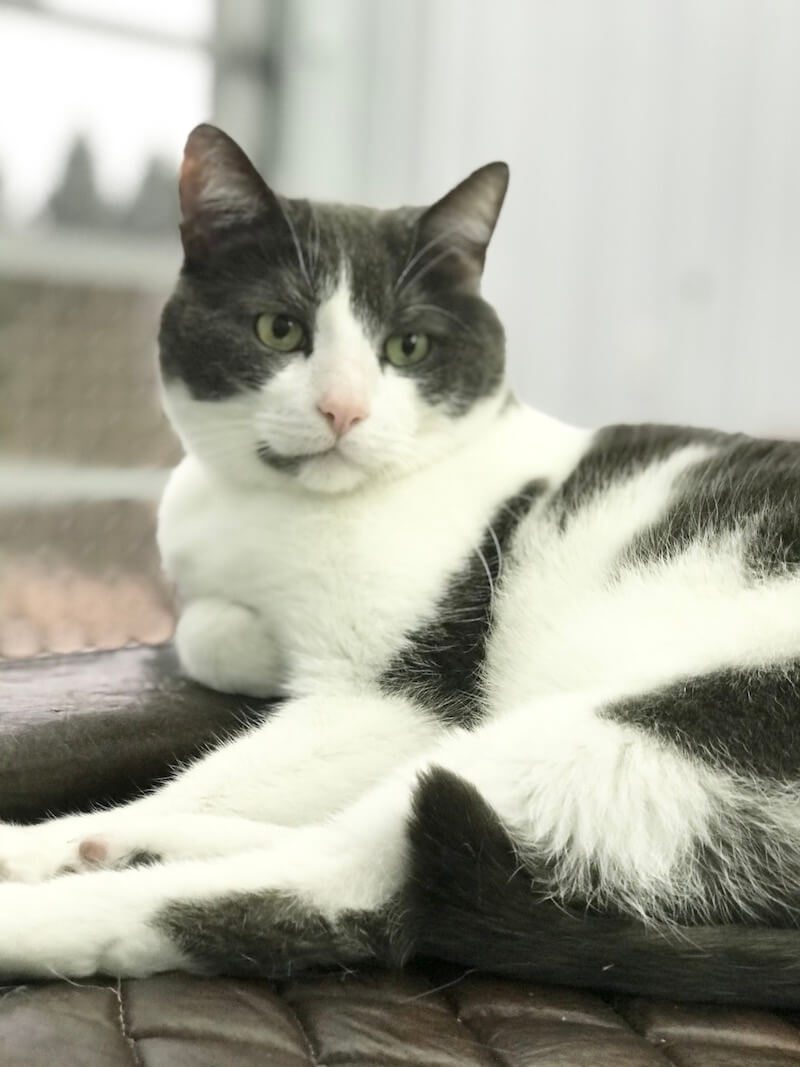 Diesel is a 7-year-old sweet male kitty that presented one year ago not eating and losing weight. Diesel had a history of inflammatory bowel disease well-controlled on prescription food. Diesel's blood work indicated severe kidney insufficiency or failure. Diesel was started on iv fluids to rehydrate. Testing was started to see if an underlying cause could be determined. Diesel had bacterial cultures of the urine, blood pressure, x-rays and ultrasound. We were looking for concurrent infection, hypertension and bladder or kidney stones. Nothing could be found. Diesel started to feel better and was transitioned to a special kidney diet that may also control his inflammatory bowel disease. Cats with kidney failure have trouble maintaining their hydration adequately. Sterile fluids injected under the skin daily can help improve the quality of life of the kitty. Diesel's owner was very dedicated and learned to do this at home daily. Diesel was also started on aluminum hydroxide powder with his prescription food to bind phosphorus. Phosphorus often increases in the body as the kidney cannot excrete it properly. Over time this worsens quality of life as well as kidney function. Diesel's kidney blood work continued to improve with a few episodes of decompensation, but a year later, is doing very well. Eventually Diesel's kidney function will decline. So far Diesel has beat the odds and that is why he is our feline Pet of the Month.
Diesel is a 7-year-old sweet male kitty that presented one year ago not eating and losing weight. Diesel had a history of inflammatory bowel disease well-controlled on prescription food. Diesel's blood work indicated severe kidney insufficiency or failure. Diesel was started on iv fluids to rehydrate. Testing was started to see if an underlying cause could be determined. Diesel had bacterial cultures of the urine, blood pressure, x-rays and ultrasound. We were looking for concurrent infection, hypertension and bladder or kidney stones. Nothing could be found. Diesel started to feel better and was transitioned to a special kidney diet that may also control his inflammatory bowel disease. Cats with kidney failure have trouble maintaining their hydration adequately. Sterile fluids injected under the skin daily can help improve the quality of life of the kitty. Diesel's owner was very dedicated and learned to do this at home daily. Diesel was also started on aluminum hydroxide powder with his prescription food to bind phosphorus. Phosphorus often increases in the body as the kidney cannot excrete it properly. Over time this worsens quality of life as well as kidney function. Diesel's kidney blood work continued to improve with a few episodes of decompensation, but a year later, is doing very well. Eventually Diesel's kidney function will decline. So far Diesel has beat the odds and that is why he is our feline Pet of the Month.
Zora
Canine Pet of the Month August 2021
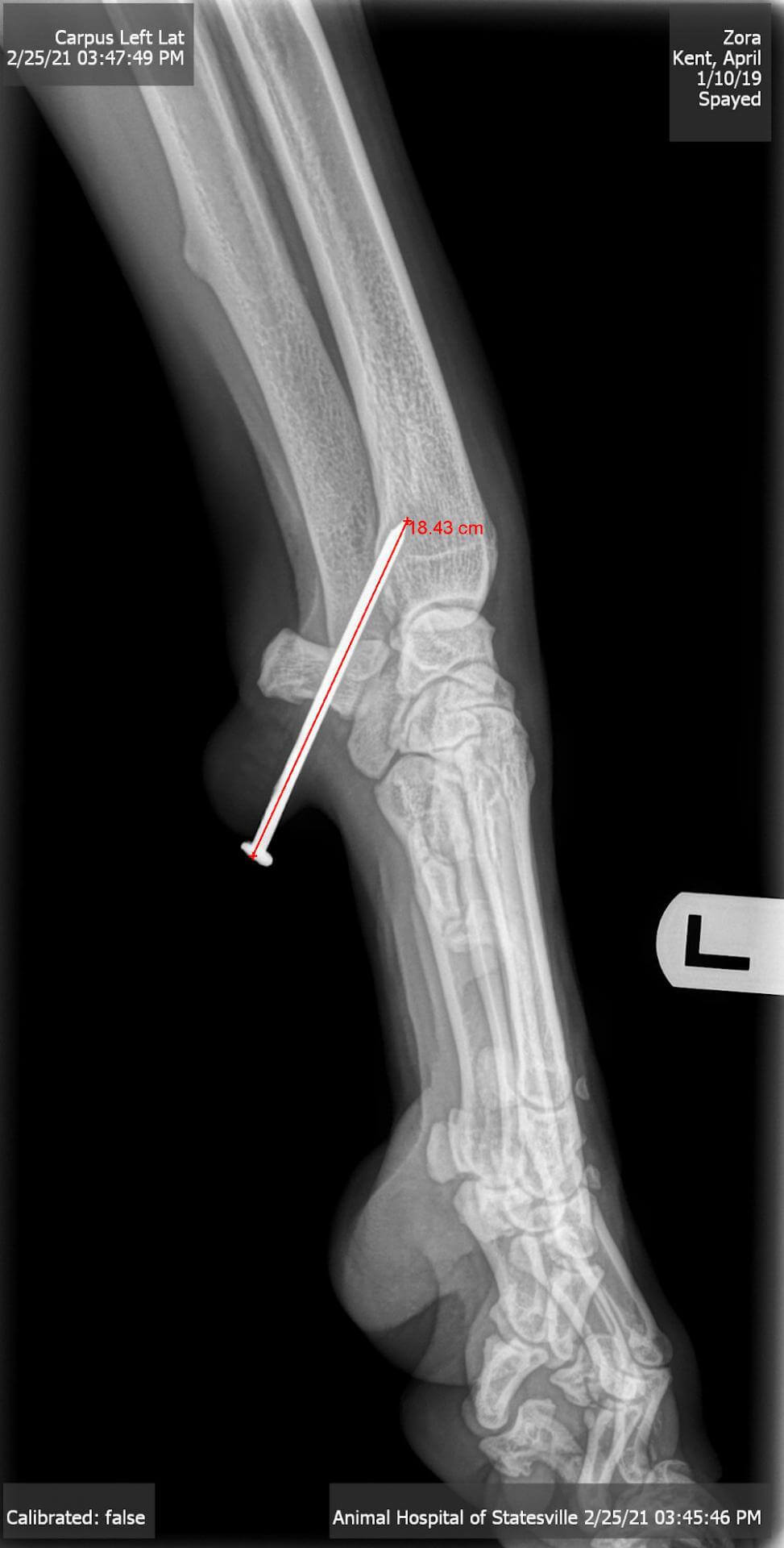 Zora was an 18-month-old, 128-pound Great Dane that we had seen since she was 20 pounds at 8 weeks of age. She has always been a very active and rambunctious puppy but also very healthy and happy.
Zora was an 18-month-old, 128-pound Great Dane that we had seen since she was 20 pounds at 8 weeks of age. She has always been a very active and rambunctious puppy but also very healthy and happy.
She presented to us with an acute-onset left front lameness after being out playing in the mulch with her companion. While she would use the leg, she had a pronounced limp as she walked. On closer inspection a metallic object was noted sticking out from her pad just behind her wrist. It was firmly in place. Zora was sedated and X-rays were taken. We were all surprised when we saw a 2.5-inch nail wedged through the pad and into the area of her wrist joint. We were able to back the nail out, but it was with significant resistance. Post-operative X-rays did not indicate an issue with the bone, but we were still worried about the wrist joint. Zora was started on antibiotics to help prevent tetanus (yes, dogs can get tetanus), pain management and the owners hot-packed the area several times a day. The wound drained well and eventually healed up nicely.
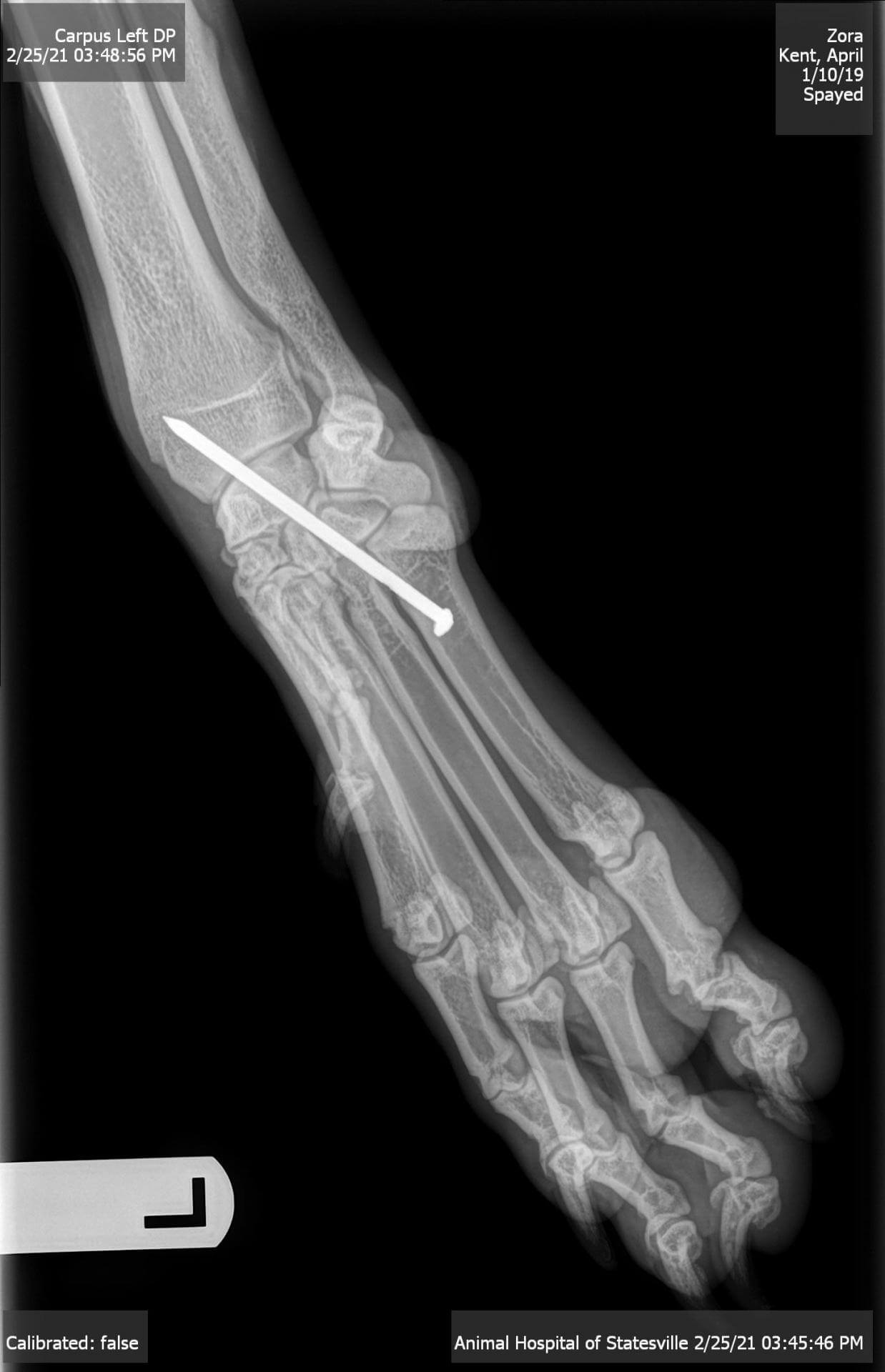 Zora’s case shows how a rambunctious puppy can get into trouble even when they are being monitored appropriately. She recovered well through what had to be a very painful injury and is now running and playing like crazy. Because she did so well with her strange presentation, Zora is AHS’s canine Pet of the Month.
Zora’s case shows how a rambunctious puppy can get into trouble even when they are being monitored appropriately. She recovered well through what had to be a very painful injury and is now running and playing like crazy. Because she did so well with her strange presentation, Zora is AHS’s canine Pet of the Month.
Lily
Feline Pet of the Month July 2021
 Lily is a sweet young kitten that presented with a swelling on the side of her face. The swelling looked suspiciously like an abscess. On closer inspection, there was a small hole in the center. There also appeared to be something moving below the hole in the skin. A cuterebra grub was suspected. Lily was sedated and the hole opened just slightly and a 4 mm grub was removed entirely. The pocket was flushed with antiseptic and antibiotics were instituted.
Lily is a sweet young kitten that presented with a swelling on the side of her face. The swelling looked suspiciously like an abscess. On closer inspection, there was a small hole in the center. There also appeared to be something moving below the hole in the skin. A cuterebra grub was suspected. Lily was sedated and the hole opened just slightly and a 4 mm grub was removed entirely. The pocket was flushed with antiseptic and antibiotics were instituted.
A cuterebra is a fly that lays eggs on grass, mulch, and near rodent burrows. The eggs hatch into larvae suddenly when wildlife such as rabbits wander by. These larvae then burrow into skin defects and natural cavities to complete their life cycle. On occasion, an unsuspecting puppy or kitten becomes infected. Removal of the larva and treatment for secondary infection lead to resolution and a great prognosis.
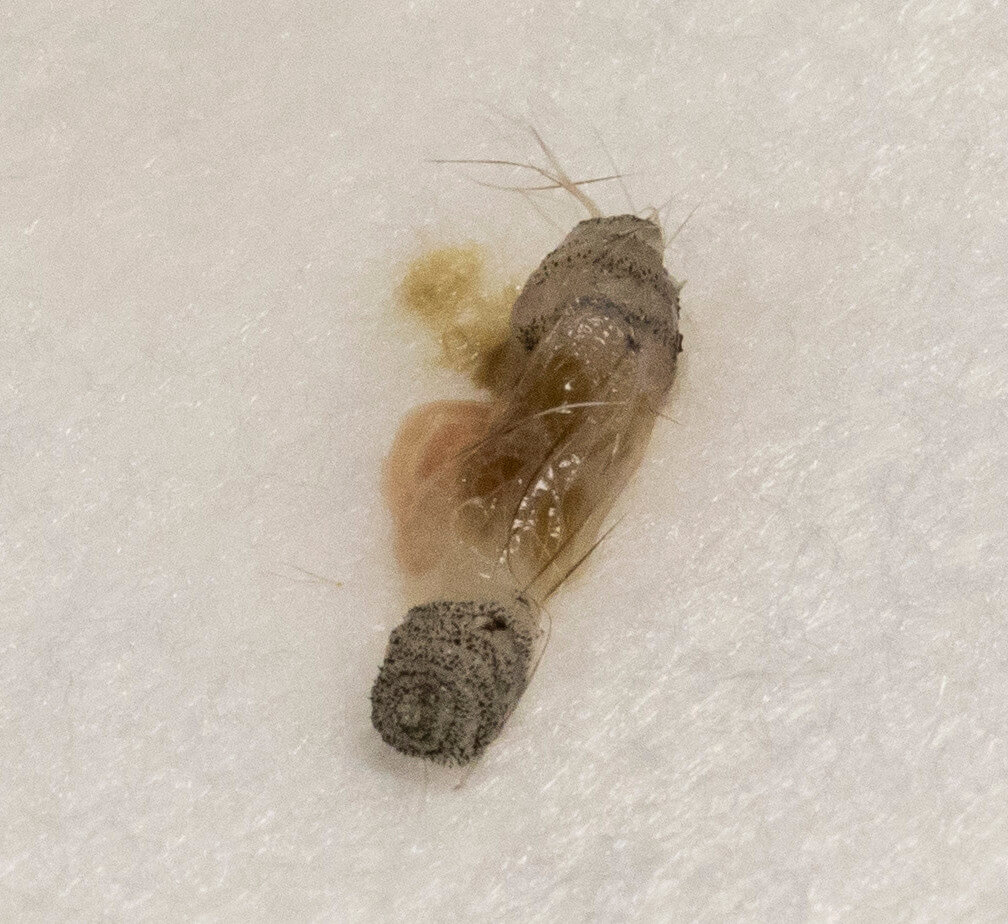 Cuterebrae are not commonly seen at the Animal Hospital. That is why Lily is our AHS Pet of the Month.
Cuterebrae are not commonly seen at the Animal Hospital. That is why Lily is our AHS Pet of the Month.
Thor
Canine Pet of the Month July 2021
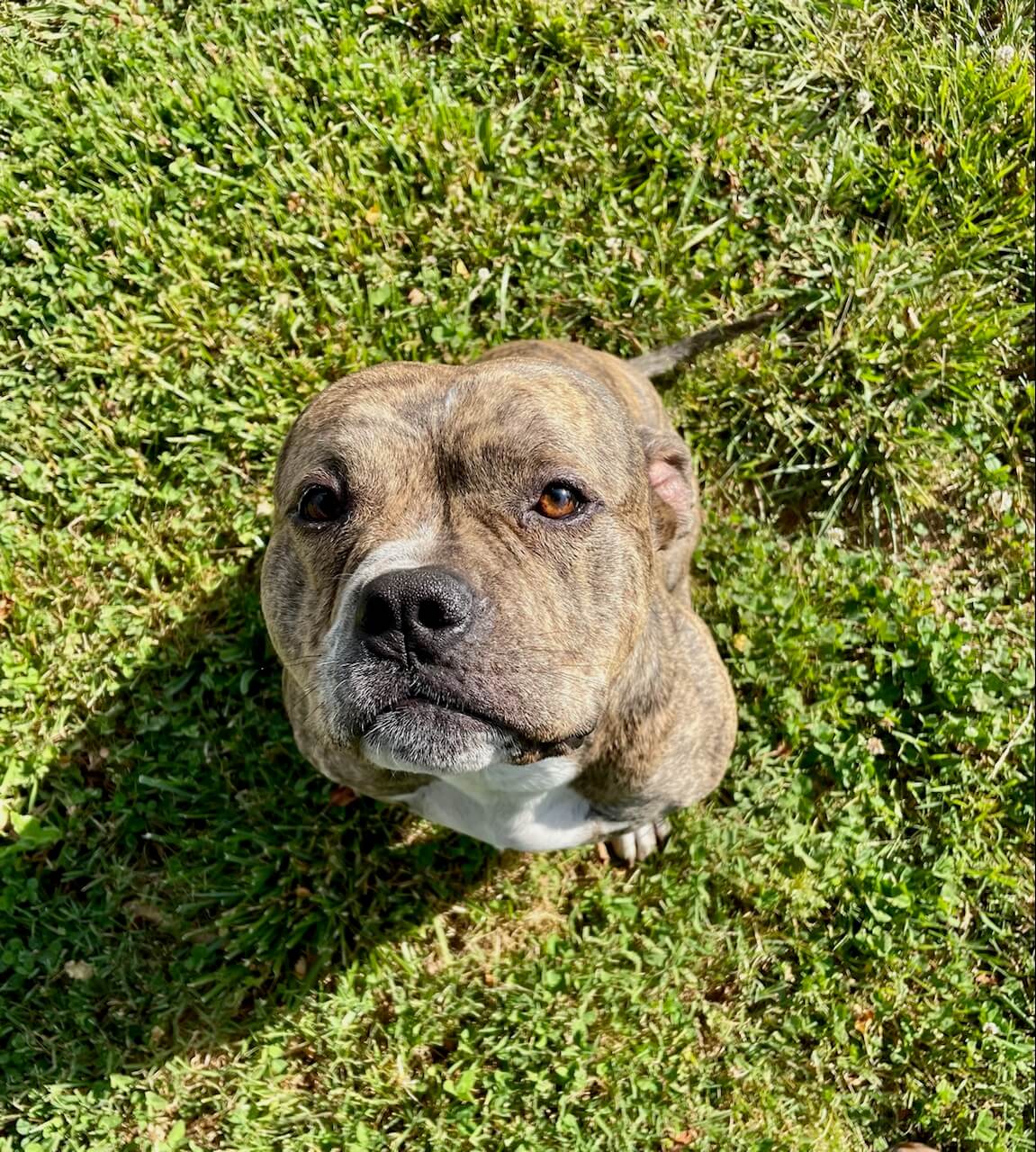 This month, the canine Pet of the Month is Thor. Thor, unfortunately, is a repeat offender and has returned due to ingestion of foreign material. A few years ago, Thor ingested a pacifier which obstructed his intestinal tract. Due to the physical blockage of his intestinal tract a surgery was required to remove this foreign body (pacifier). Foreign body surgeries come in different forms depending on the location of the obstruction, but all consist of a major abdominal surgery involving physically removing the obstruction from the affected area of intestinal tract. These surgeries can be extensive, costly and have an extended recovery time.
This month, the canine Pet of the Month is Thor. Thor, unfortunately, is a repeat offender and has returned due to ingestion of foreign material. A few years ago, Thor ingested a pacifier which obstructed his intestinal tract. Due to the physical blockage of his intestinal tract a surgery was required to remove this foreign body (pacifier). Foreign body surgeries come in different forms depending on the location of the obstruction, but all consist of a major abdominal surgery involving physically removing the obstruction from the affected area of intestinal tract. These surgeries can be extensive, costly and have an extended recovery time.
Thor had again gotten himself in trouble by ingesting foreign material. Radiographs of Thor's abdomen showed foreign material in his colon and stomach. Luckily, the material in his colon passed without the need for intervention. Unfortunately, the material in his stomach was stuck and would need to be removed. Traditionally this material would be removed with a gastrostomy, or an incision in the stomach, to remove the foreign material. Fortunately, the Animal Hospital of Statesville now has the ability to perform endoscopic procedures. We were able to use the endoscope to remove the foreign material without surgery, saving Thor from a long surgical recovery and discomfort.
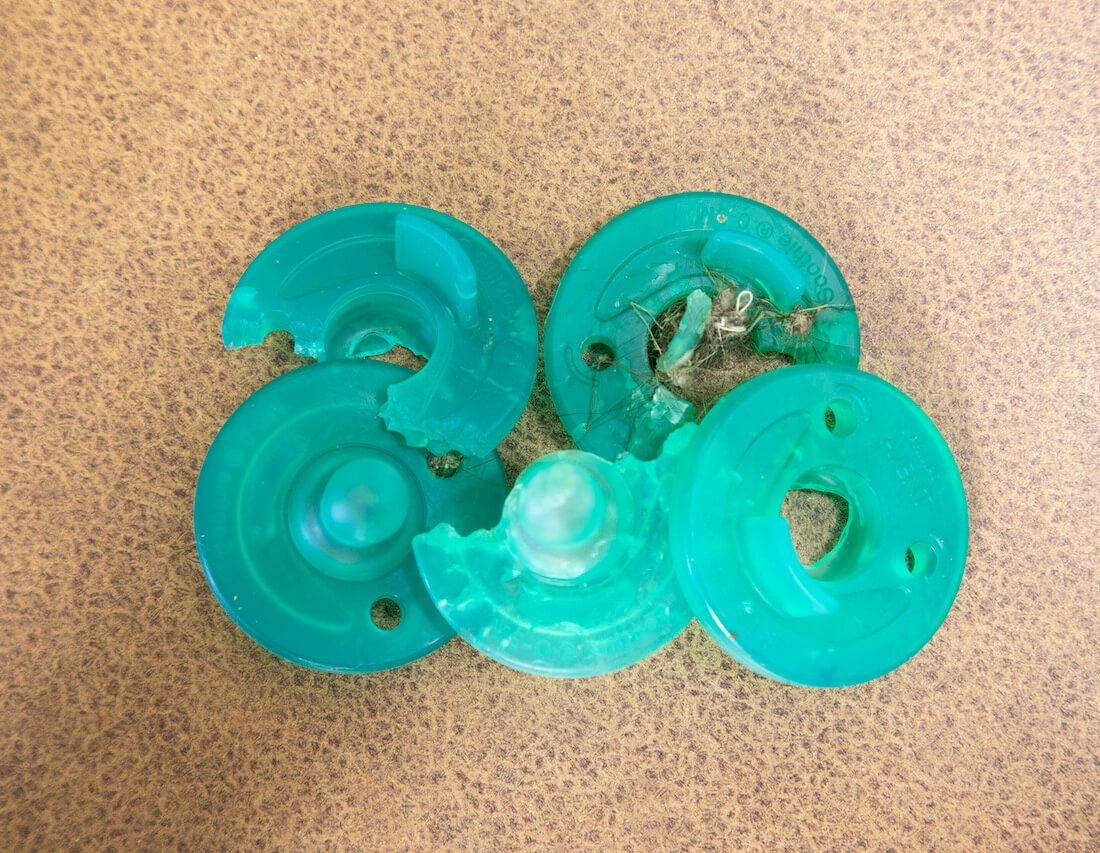 To our surprise, Thor had eaten a total of 5 pacifiers this time - one he passed and 4 that were retrieved from the stomach. Due to endoscopic retrieval versus surgery, Thor was back to normal the next morning.
To our surprise, Thor had eaten a total of 5 pacifiers this time - one he passed and 4 that were retrieved from the stomach. Due to endoscopic retrieval versus surgery, Thor was back to normal the next morning.
Opie
Feline Pet of the Month July 2021
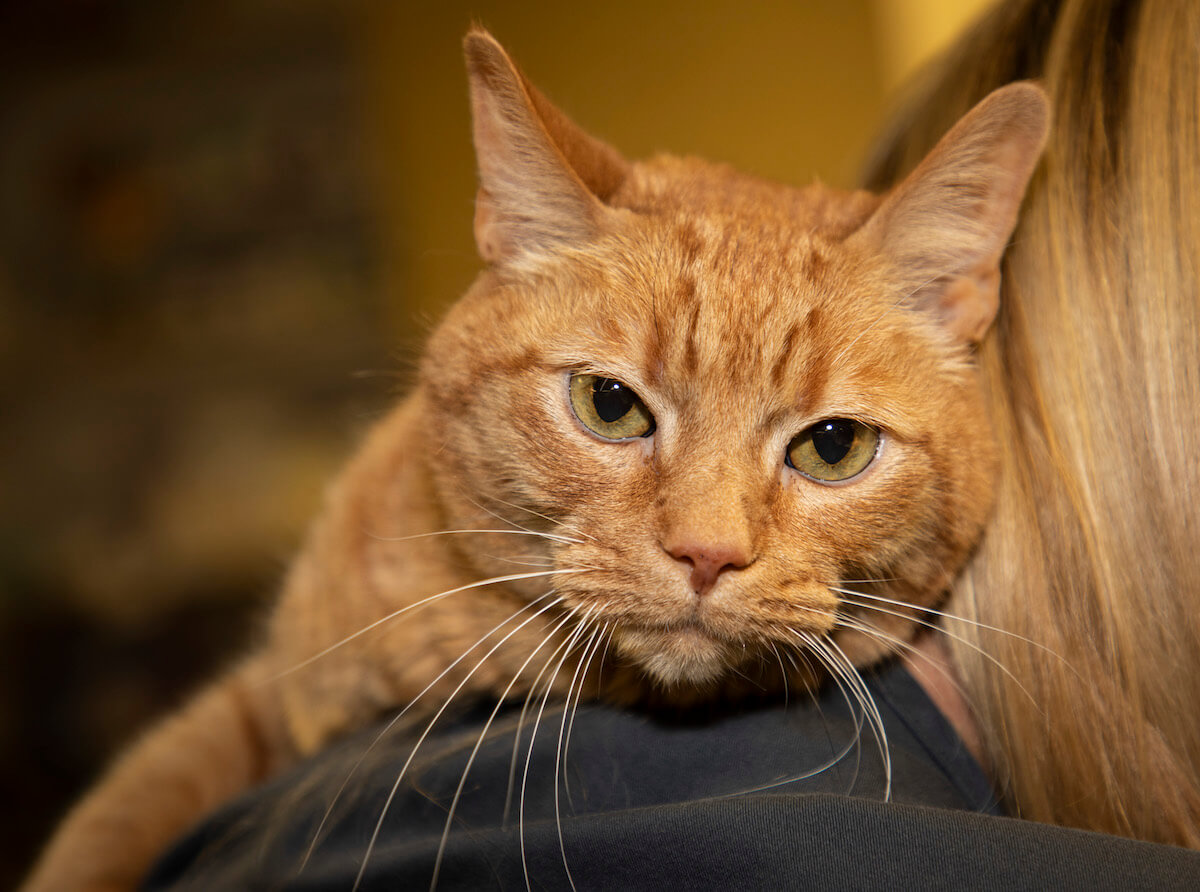 Greetings Humans!!!
Greetings Humans!!!
Some of you may have seen a fleeting glance of me over the years. I think it is about time I formally introduced myself. I am Opie, the greatest clinic cat you've ever (or never) seen.
The kind people at the Animal Hospital of Statesville took me in at a very young age after someone threw me out of a car window. Luckily, someone saw the incident and brought me to my saviors. When I first arrived, I was treated like a prince, but for some reason, no one liked my gimpy leg, so they STOLE IT!! But…I do ok on the three they decided to let me keep.
Over the years, I've been given many responsibilities. Dr. Cooney often comes to me for advice. I mean, do you all REALLY think the new cat exam rooms were HIS idea?? Ummmm. NO! I think that he comes to me because I am the eyes and ears of this hospital…or maybe, he is finally realizing that I am smarter than him.
From time to time, I do things to make sure that all of the doctors here stay up-to-date on their skills. For example, I eat suture, rubber bands, plants (real and fake), just to be sure that if one of YOUR pets do any of these things, our doctors are ready and know exactly what to do!
I also specialize in surgical recovery care. On a daily basis, I monitor patients post-surgery to make sure that everything is as it should be. Snuggle time is very important to recovery. I also spend my days making sure that the technicians and assistants stay on their toes. When I am around (which is ALL the time) they have to really pay attention. Sometimes, if they aren't, blood tubes "fall" on the floor and bandage materials mysteriously "disappear".
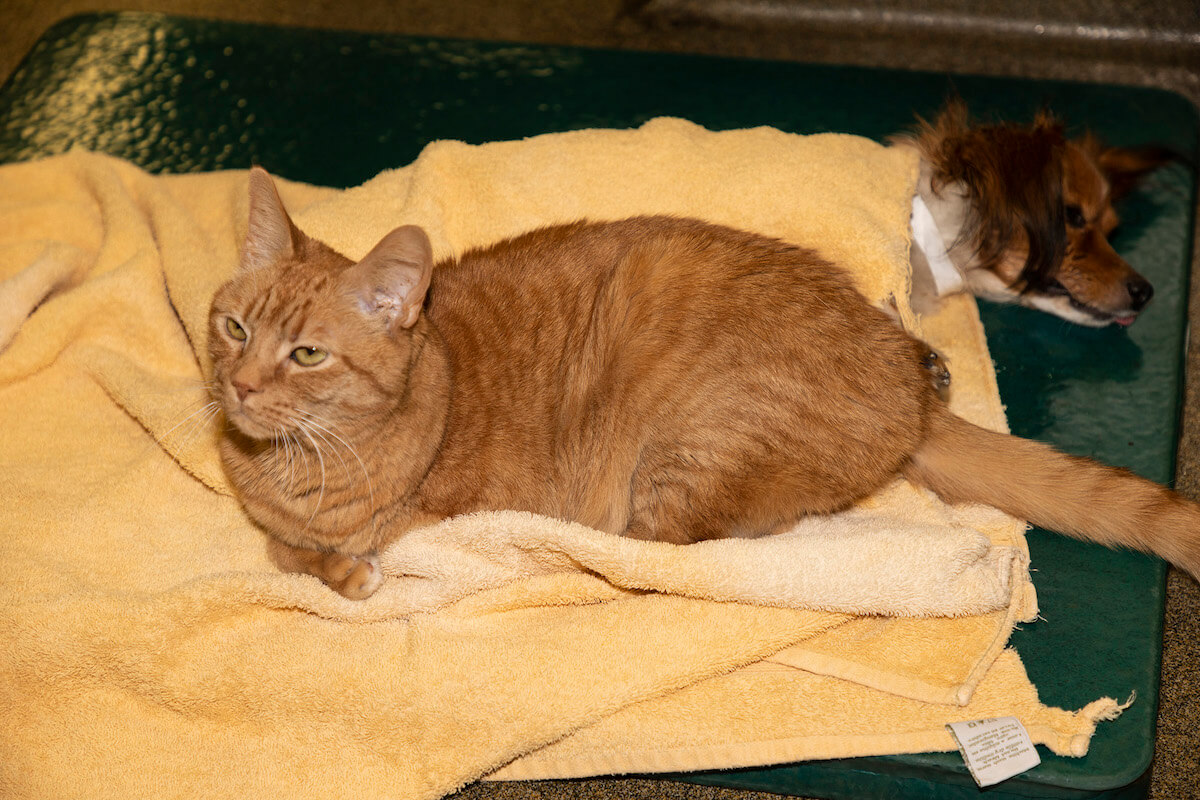 On April 21st, I turned 12! For the most part I had a pretty good birthday. I slept for hours on my super soft fluffy bed (the one Angela special-ordered for me). I was rubbed every time I demanded it. I was given catnip (Meowijuana is my favorite!), brushed, and at times, was left alone to camouflage myself in the cardboard boxes in the storage room. It was pretty perfect!
On April 21st, I turned 12! For the most part I had a pretty good birthday. I slept for hours on my super soft fluffy bed (the one Angela special-ordered for me). I was rubbed every time I demanded it. I was given catnip (Meowijuana is my favorite!), brushed, and at times, was left alone to camouflage myself in the cardboard boxes in the storage room. It was pretty perfect!
Overall, my life here has been pretty spectacular. I have made many friends, some who love to play and cuddle, others, I am pretty sure want to eat me, but I love them all the same. Just know that even though you may not always see me, I am always around, lurking in the shadows, and I am always watching! See you all soon. Or not. I am a cat, afterall! ~ Opie
Sadie
Canine Pet of the Month May-June 2021
Sadie is a beautiful, sweet Husky with a common dog problem! She is currently 9 years old and had been battling with her weight even as far back as 2017. In 2017/2018, Sadie’s owner reported that she only fed 1 measured cup per day and Sadie was still gaining/overweight. While we completely agreed at that time that if it were true, there is no way she would still be gaining weight, we still tried to consider the fact that there were young children in the household overfeeding and giving extra table foods that could have contributed. At that time, we had discussed thyroid testing, but Sadie’s owner was going to try to get better control of her portions and food exposure. By May 2020, Sadie topped out at 81 pounds, was having arthritic symptoms, lethargy, and definitely not feeling herself. At that point, we both agreed it was obviously time to do thyroid testing for Sadie.
A blood test was sent out to the lab to test for her thyroid hormone and her thyroid stimulating hormone. Classic Hypothyroid results showed her TSH was significantly elevated and her T4 was significantly low. Those results, combined with her symptoms and weight problems resulted in a diagnosis of Hypothyroid. Hypothyroid is a common dog and human disease. “Hypo” refers to “low” meaning that she had an abnormally low thyroid concentration in her body. This is often related to an autoimmune condition and destruction of the thyroid gland making it not produce the proper amount of thyroid hormone. Thyroid hormone is exceedingly important for many bodily functions and health. With low thyroid counts a dog can show weight gain, trouble losing weight even with proper portion control, lethargy, hair loss, recurrent and more frequent infections, and in some cases, neurologic complications.
The wonderful news about hypothyroid disease is that it is often easy to correct! We have synthetic thyroid hormone in pills that can be given to a dog to correct the thyroid deficiency. Sadie was started on thyroid pills and very quickly, symptoms started to improve! We retested her thyroid panel a few more times and adjusted her dose until she was perfect. Her weight was coming off nicely. Her thyroid levels were controlled by 3 months and her weight was almost to a desired level by 8 months later! She was down to 55 pounds from 81 pounds and she is perky, active, happy, and feeling much better! Owners report she is “like a puppy again”. She has a little more weight to lose, but we are all so pleased with how she did and how she feels. We are happy to name her Animal Hospital of Statesville’s canine Pet of the Month!!
Stone
Feline Pet of the Month May-June 2021
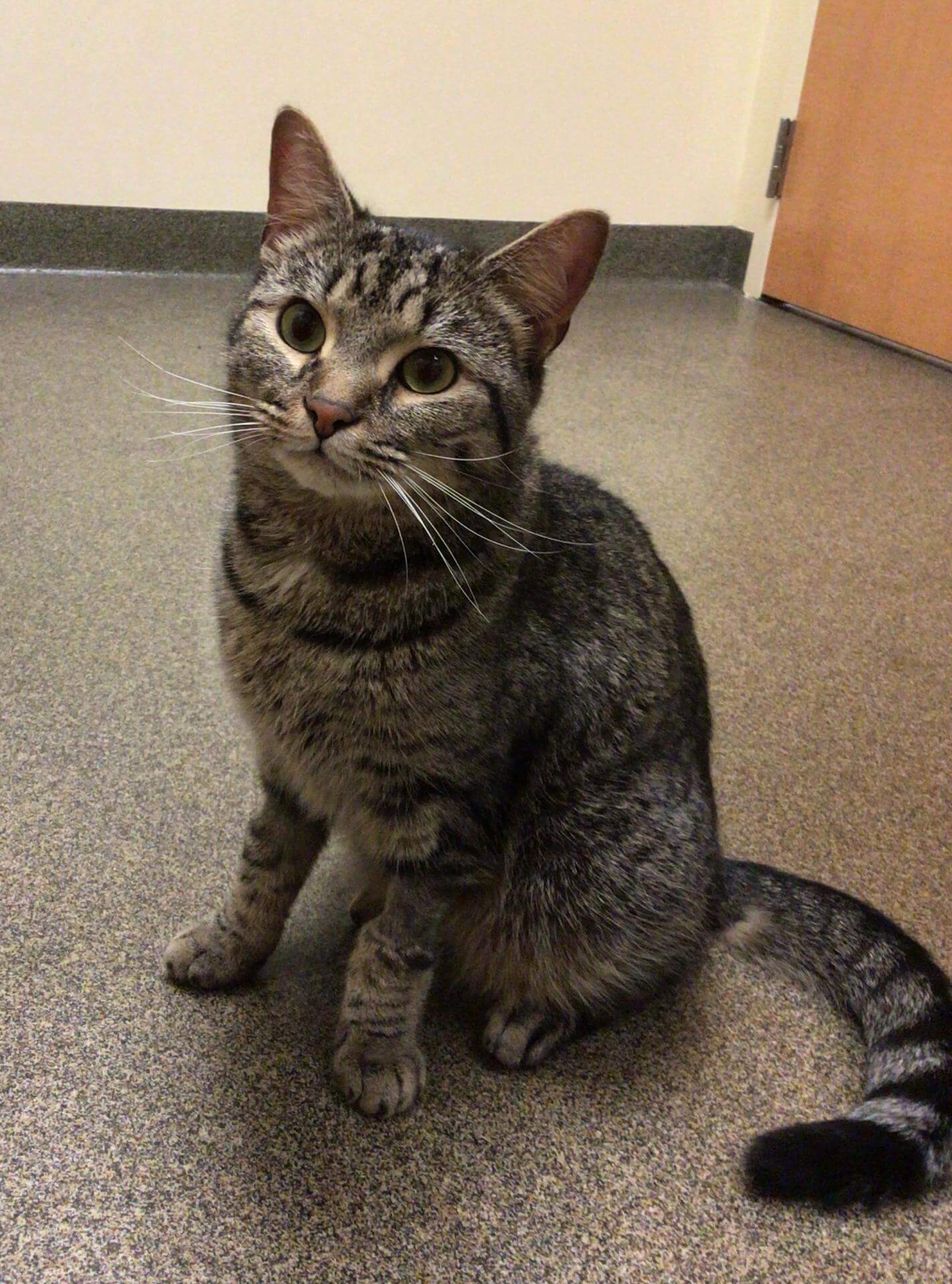 Stone is the sweetest, cutest little kitty! He came in on Emergency at about 1.5 years old, only about 4 months after owners got him from the Humane Society. They weren’t sure what was wrong but based on how he was acting (and they saw blood at his back end), they thought maybe he fell from an 8-foot ledge they saw him laying/playing on earlier.
Stone is the sweetest, cutest little kitty! He came in on Emergency at about 1.5 years old, only about 4 months after owners got him from the Humane Society. They weren’t sure what was wrong but based on how he was acting (and they saw blood at his back end), they thought maybe he fell from an 8-foot ledge they saw him laying/playing on earlier.
It quickly became apparent during his exam what was wrong, but surprisingly, he had no clear symptoms leading up to this major emergency issue! Stone had a big, hard, painful bladder. He was blocked! Unable to physically urinate and in a true emergency state. We ran blood work and his kidney values were very high and he was clearly sick.
Owners consented to hospitalization. We sedated him to pass a urinary catheter, relieve the pressure and empty the bladder. He started medications, changed to a special urinary diet, ran on IV fluids, and kept the urinary catheter in for a few days. He was feeling better and sent home with his new food and continued medications. Unfortunately, within 24 hours, he was blocked again. We ruled out any bladder stones or other issues and sedated him again to pass another urinary catheter. This time when sedated, we actually could “express” his bladder without even passing another urinary catheter. That meant that he had more of a temporary blockage created by muscle spasm and not really a true functional blockage. For this, we emptied his bladder and adjusted his medications further to try to prevent this issue and get his body to relax to allow urination. But unfortunately, by the next day, he was “truly” blocked again and required another urinary catheterization. At this point, he has been unable to go even a few days without blocking repeatedly. This combined with his age and presentation was looking like he would end up with a referral specialist visit for a special type of surgery to prevent repeat blockage. His owner was willing to do this but wanted one more try with the indwelling urinary catheter for a few more days while continuing to tweak and adjust and combine different medications to help.
This next urinary catheterization did the trick! (at least temporarily). He actually went home and was able to urinate on his own and was doing pretty well. The medication cocktail kept him pretty sedate and not his true playful personality, but he was able to urinate. At his follow-up 10 days later and after weaning down on some of his medications, he was still able to urinate, but not as far along on improvements as expected. We submitted a urine sample for a bacterial culture to see if a secondary infection could be related and discovered he did have an infection that needed treatment. We started treatment and he still didn’t quite get where we wanted on his symptoms and by one month later, he was blocked again!!
At this point, we knew he needed more than just continued urinary catheterization. He was going to need the PU surgery. To relieve some pressure and make him feel better until he could make it to the emergency referral hospital, we sedated him to pass a urinary catheter only to discover, once again, that sedation alone was enough to get him to relax and empty his bladder. We emptied his bladder, gave him some fluids, and sent him on his way to the referral hospital.
Stone's infection was treated, he had the PU surgery and was able to get off all the medications that “stole his personality” and is now doing great!! Back to his sweet playful antics. He will continue to stay on the special urinary diet long-term and he may have urinary episodes or infections here and there, but he is finally expected to lead a pretty normal and comfortable life with a very low chance of blocking ever again!!
Urinary blockage is a serious and life-threatening condition in cats (typically only the male cats). Unlike Stone, often there are symptoms leading up to the blockage like bloody urine, straining to urinate, licking a lot, vocalizing when urinating, and urinating in inappropriate places. It can be caused by multiple factors and may have different types of medication and dietary treatments for management. Most of the cats do not end up needing the special PU surgery, but the cats that have frequent and complex issues often do end up doing that surgery. Poor Stone (and his family) had to deal with multiple episodes and issues along the way, but finally were able to get him comfortable and under control. We are all happy for the outcome on Stone and happy to have him as the Animal Hospital of Statesville feline Pet of the Month!!
Yaaway
Canine POTM March 2021
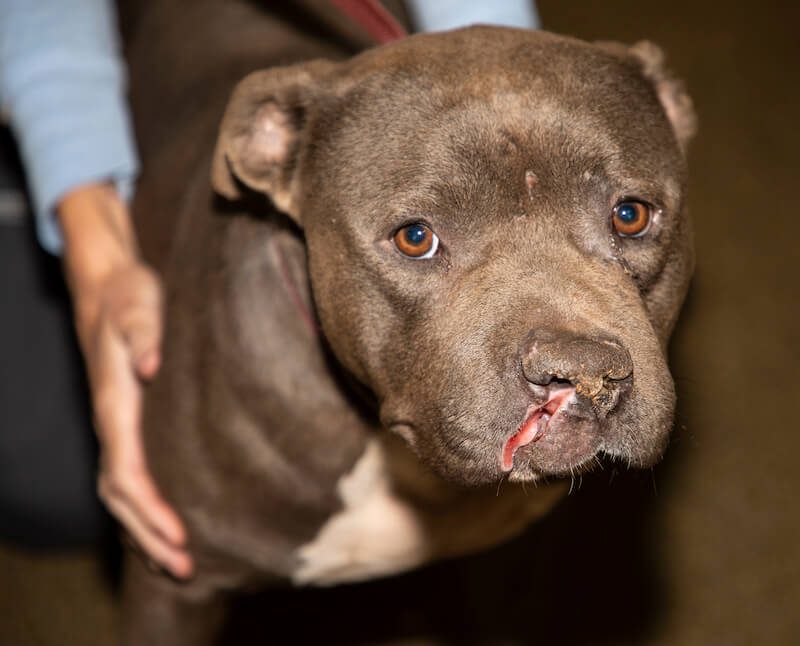 This month’s canine Pet of the Month is Yaaway. He presented to us for a facial injury that turned out to be something much more severe. His injury on the surface appeared to be a laceration tot his face, but after sedation, we discovered a large fracture of the maxilla or the roof of his mouth.
This month’s canine Pet of the Month is Yaaway. He presented to us for a facial injury that turned out to be something much more severe. His injury on the surface appeared to be a laceration tot his face, but after sedation, we discovered a large fracture of the maxilla or the roof of his mouth.
We assume this injury happened by Yaaway getting his mouth stuck in a wire fence. Any type of wire fence can potentially be dangerous to dogs, causing possible injury to face, mouth, teeth and limbs. Dogs attempting to escape enclosures can cause injury, as well. Ensure your pet is safe in any fence and/or enclosure by checking the fencing regularly.
Luckily for Yaaway, we were able to remove the damaged piece of bone and repair his mouth. At his follow up appointment, he was doing great.
Before Surgery: |
|
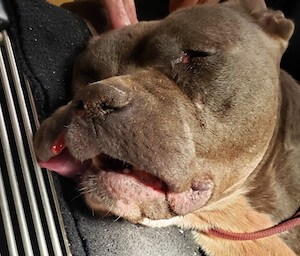 |
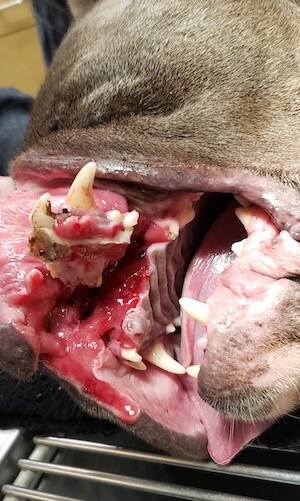 |
After Surgery: |
|
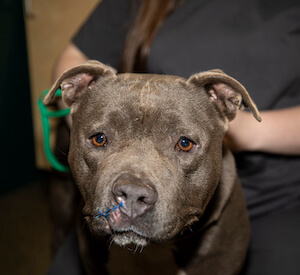 |
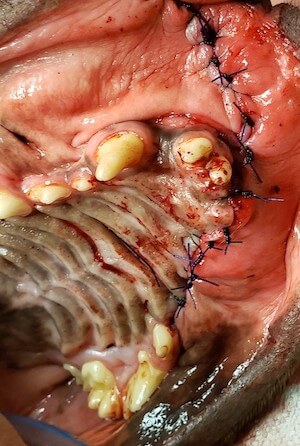 |
Ford Hepler
Feline POTM March 2021
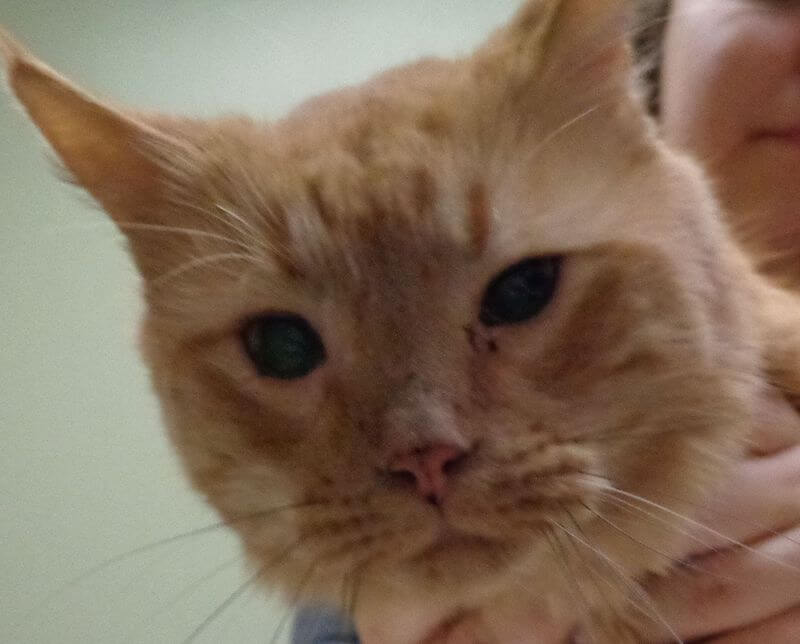 Ford is a handsome, 8-year-old, boy. He has had a history of allergies and upper respiratory infection but recently came to us to have his feet checked. He is an indoor kitty and developed a wound on one of his paw pads. The pad had an open, flesh-like area that protruded. The other paw pads had a “deflated” appearance. This is a common appearance for a condition called “pillow foot” or plasma cell pododermatitis. This is an immune mediated, inflammatory condition of the paw pads. The name, pillow foot, comes from its appearance. The affected pads may look like a pillow; they can have a balloon appearance or be mushy and sometimes will ulcerate. Ford was tested for FIV (feline immunodeficiency virus) as there is thought to be a link between these two conditions. He was negative for FIV. He did have elevated lymphocytes, which is a type of white blood cell and this is also a common finding. This is likely an immune mediated condition and the treatment is targeted at controlling the immune system. The most common treatment is oral doxycycline which Ford has been started on. Other treatment options are cyclosporine or possibly steroids to control. Ford is tough and his diagnosis has not slowed him down! This is why he is our feline Pet of the Month!
Ford is a handsome, 8-year-old, boy. He has had a history of allergies and upper respiratory infection but recently came to us to have his feet checked. He is an indoor kitty and developed a wound on one of his paw pads. The pad had an open, flesh-like area that protruded. The other paw pads had a “deflated” appearance. This is a common appearance for a condition called “pillow foot” or plasma cell pododermatitis. This is an immune mediated, inflammatory condition of the paw pads. The name, pillow foot, comes from its appearance. The affected pads may look like a pillow; they can have a balloon appearance or be mushy and sometimes will ulcerate. Ford was tested for FIV (feline immunodeficiency virus) as there is thought to be a link between these two conditions. He was negative for FIV. He did have elevated lymphocytes, which is a type of white blood cell and this is also a common finding. This is likely an immune mediated condition and the treatment is targeted at controlling the immune system. The most common treatment is oral doxycycline which Ford has been started on. Other treatment options are cyclosporine or possibly steroids to control. Ford is tough and his diagnosis has not slowed him down! This is why he is our feline Pet of the Month!
Cooper
Canine POTM January 2021
Cooper is a lively, sweet, young Border Collie. When we first met him, he was already on medications dealing with what seemed like ruptured anal gland abscesses. At the time, they looked like they were healing, so no treatments were changed. We were set for follow-up on some other medical issues, but did not think much more would come of the anal gland situation.
However, come a month or more later, the anal gland lesions were not healed yet. This is very atypical for a pet who is not licking and who had proper treatment for the condition. As a matter of fact, the lesions seemed to “spread” and seemed to look like areas of torn skin in multiple locations around the rectum.
While he is not the most common breed for the condition, it looked like a case of Perianal Fistulas. This is a condition almost exclusively seen in German Shepherd dog breeds (80+ % of the time),but can be seen in any breed. It has a likely autoimmune component, maybe allergic, and some genetic links. It can be a painful and progressive disease. Even though Cooper was on prednisone for another medical condition, the lesions continued to look worse. Prednisone is a common medication used with autoimmune diseases, but this disease responds better to alternative treatments. Since his other health conditions seemed under control, we decided to switch him over to medications commonly used for Perianal Fistula treatment. And within a short time, he was responding beautifully!
By 4 months of treatment, the lesions were long-healed and he was back to feeling his happy comfortable self. We slowly weaned down his medication dosing and symptoms have not returned. Time will tell whether or not his symptoms will come back and whether or not he will need a long-term regime for treatment, but for now, we are happy to report that he is still doing great! Since ruptured anal glands are a very common problem and this problem is a less common condition that can look similar, we wanted to name Cooper our AHS canine Pet of the Month with his great response and healing!
Little Man
Feline POTM January 2021
Little Man is a sweet little kitten. He was found in a dumpster with three littermates. The litter was rescued by a good Samaritan and Little Man was adopted to his new owner. Little Man was examined and found to be very healthy. The Animal Hospital had recently started to offer puppy and kitten health care plans. The plans include the essential wellness vaccines, internal and external parasite treatment and prevention for a year as well as a spay or neuter. The plans also include a retroviral blood screen for kittens to determine if the cat has been infected with feline immunodeficiency virus or feline leukemia. Little Man’s new owner signed him up on the male kitten plan. Little Man went from being abandoned in a dumpster to having a great forever home in addition to all his wellness care and prevention for the next year. Little man has a heart-warming story and that is why he is our feline Pet of the Month.
